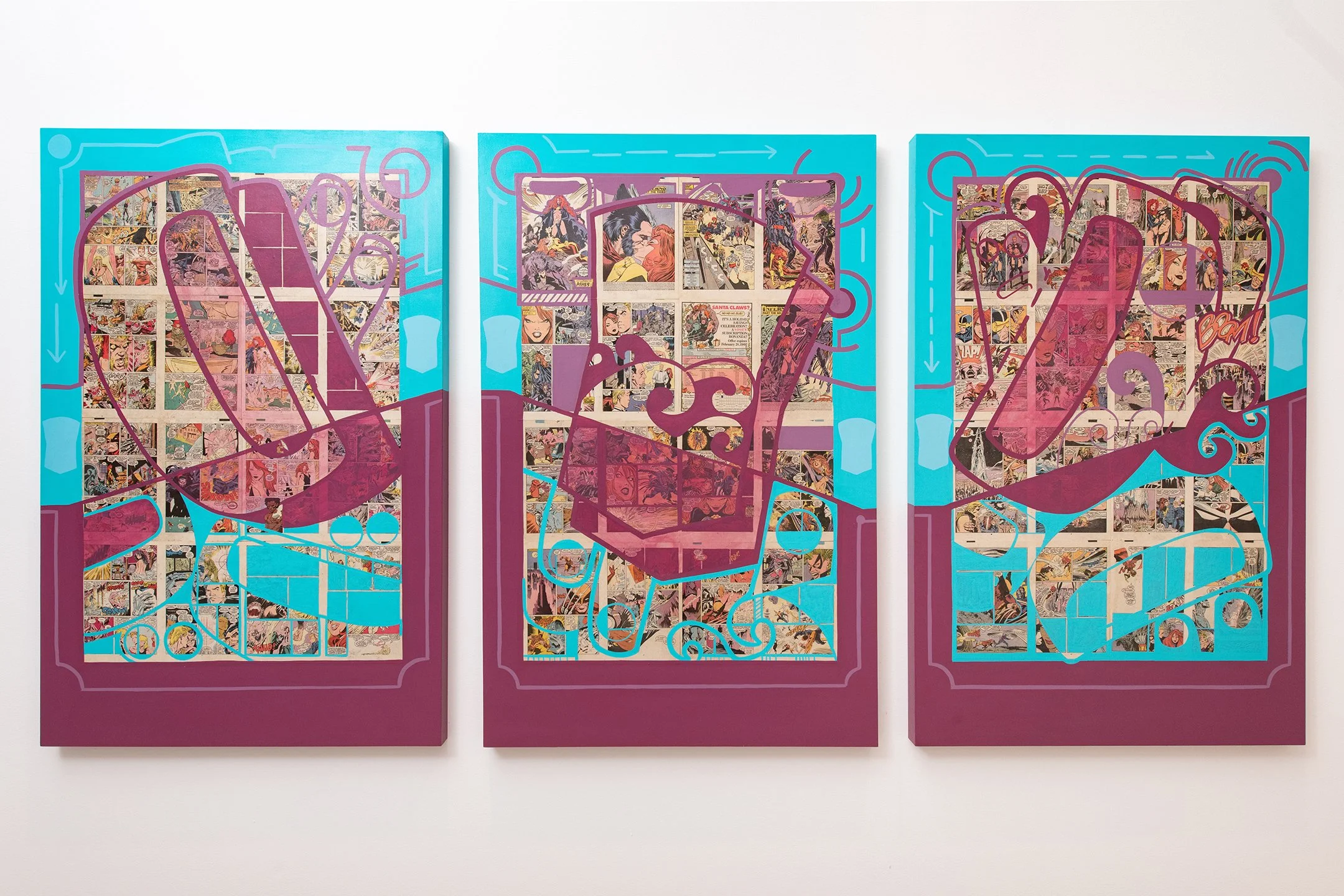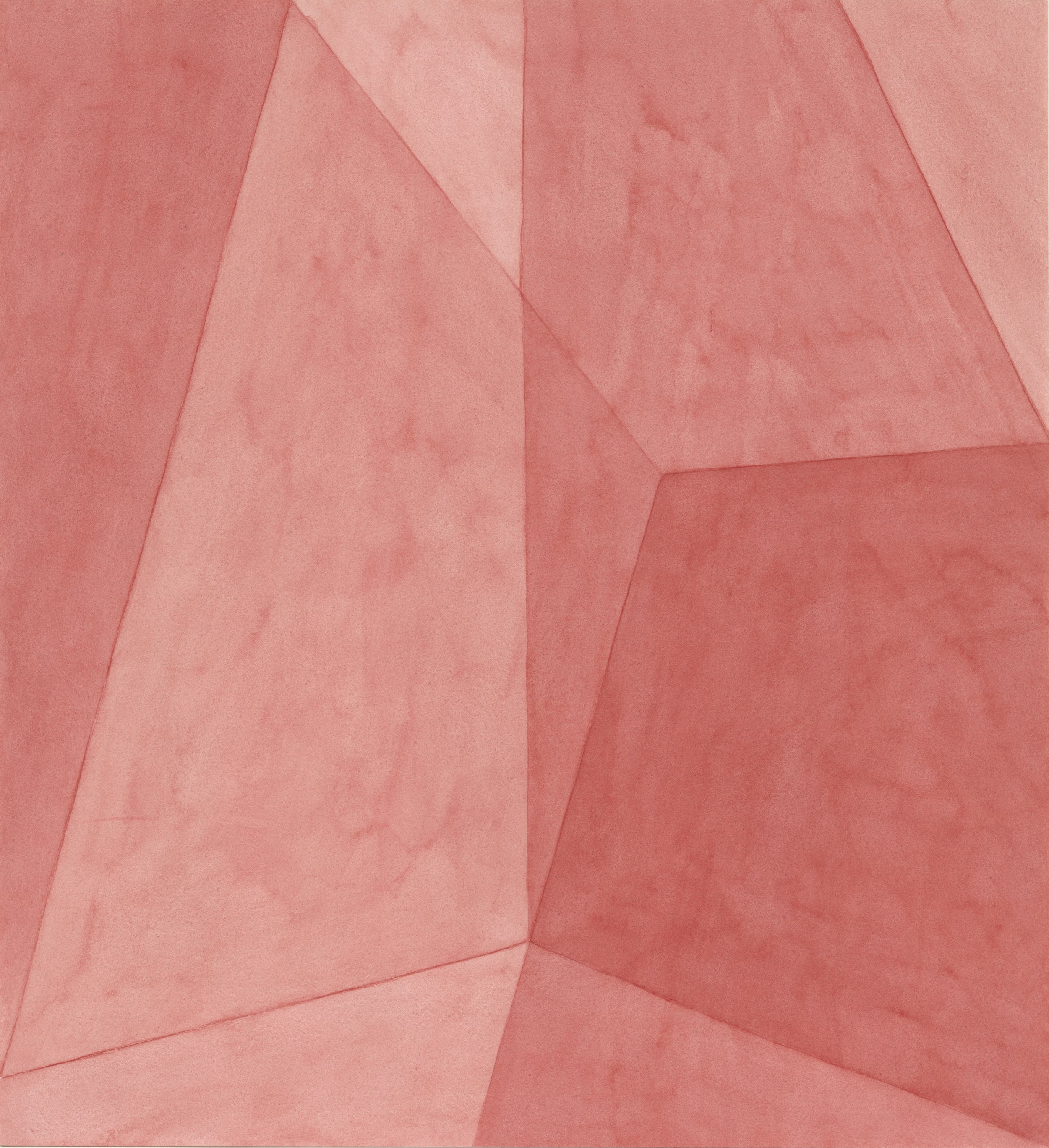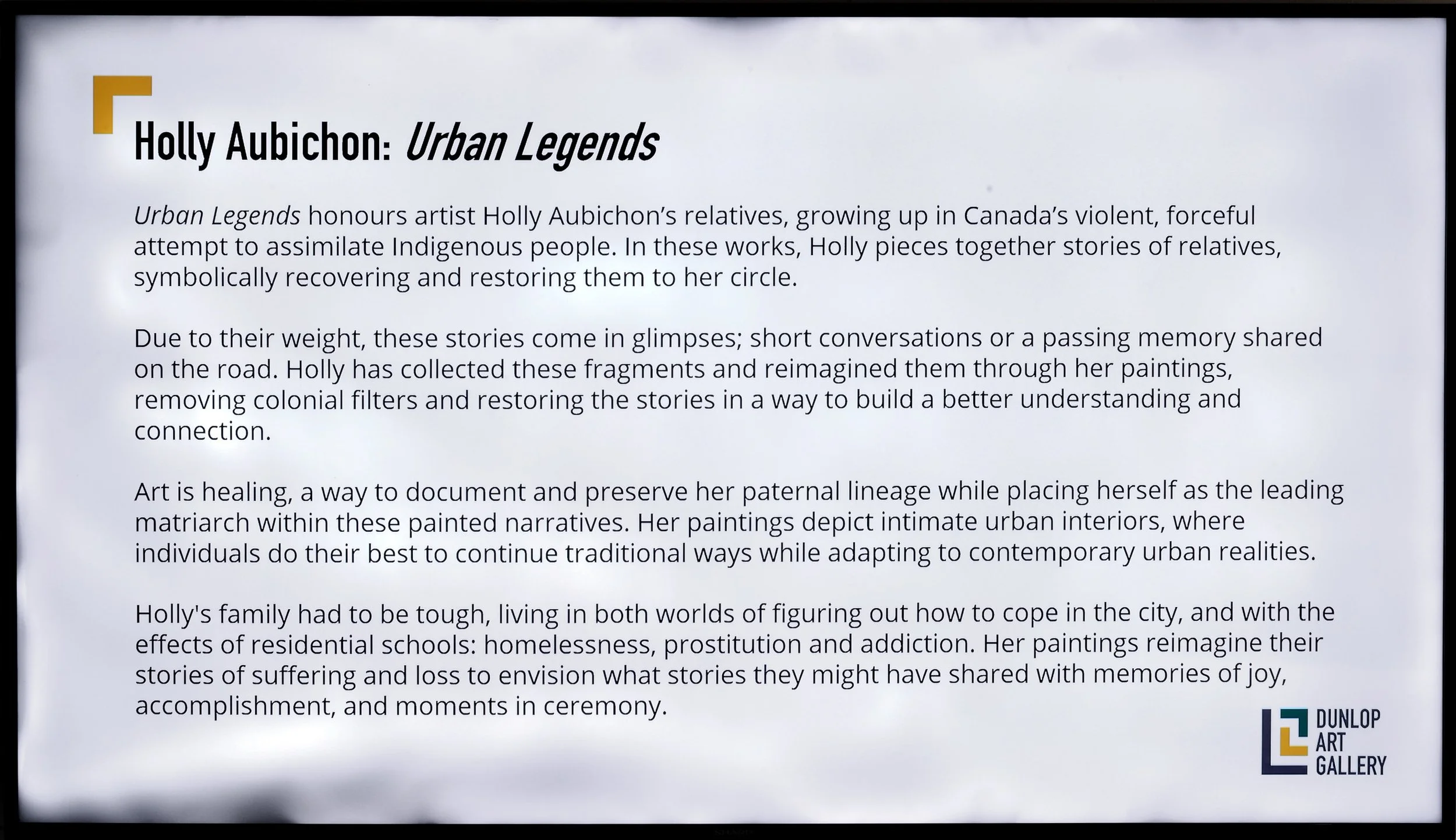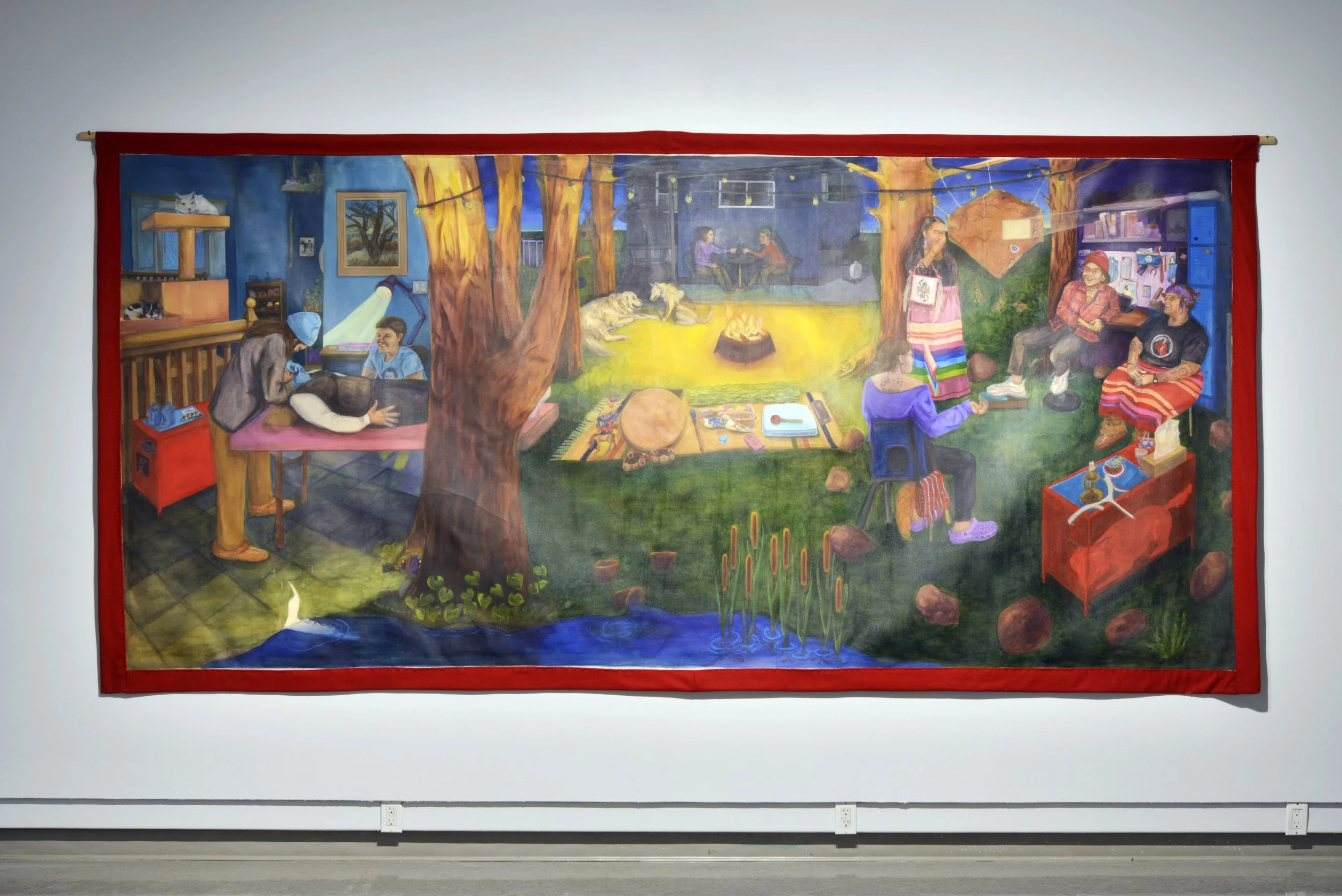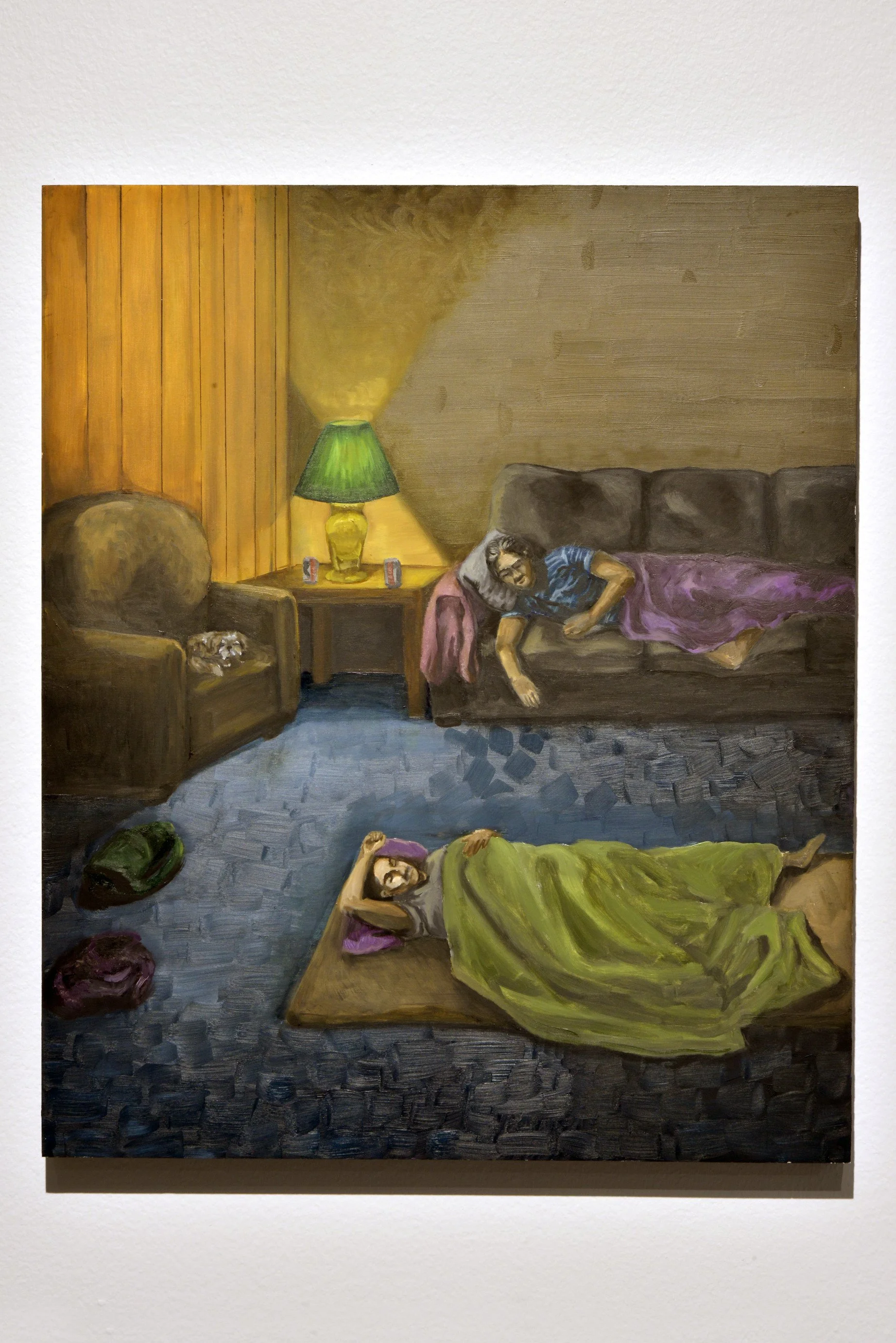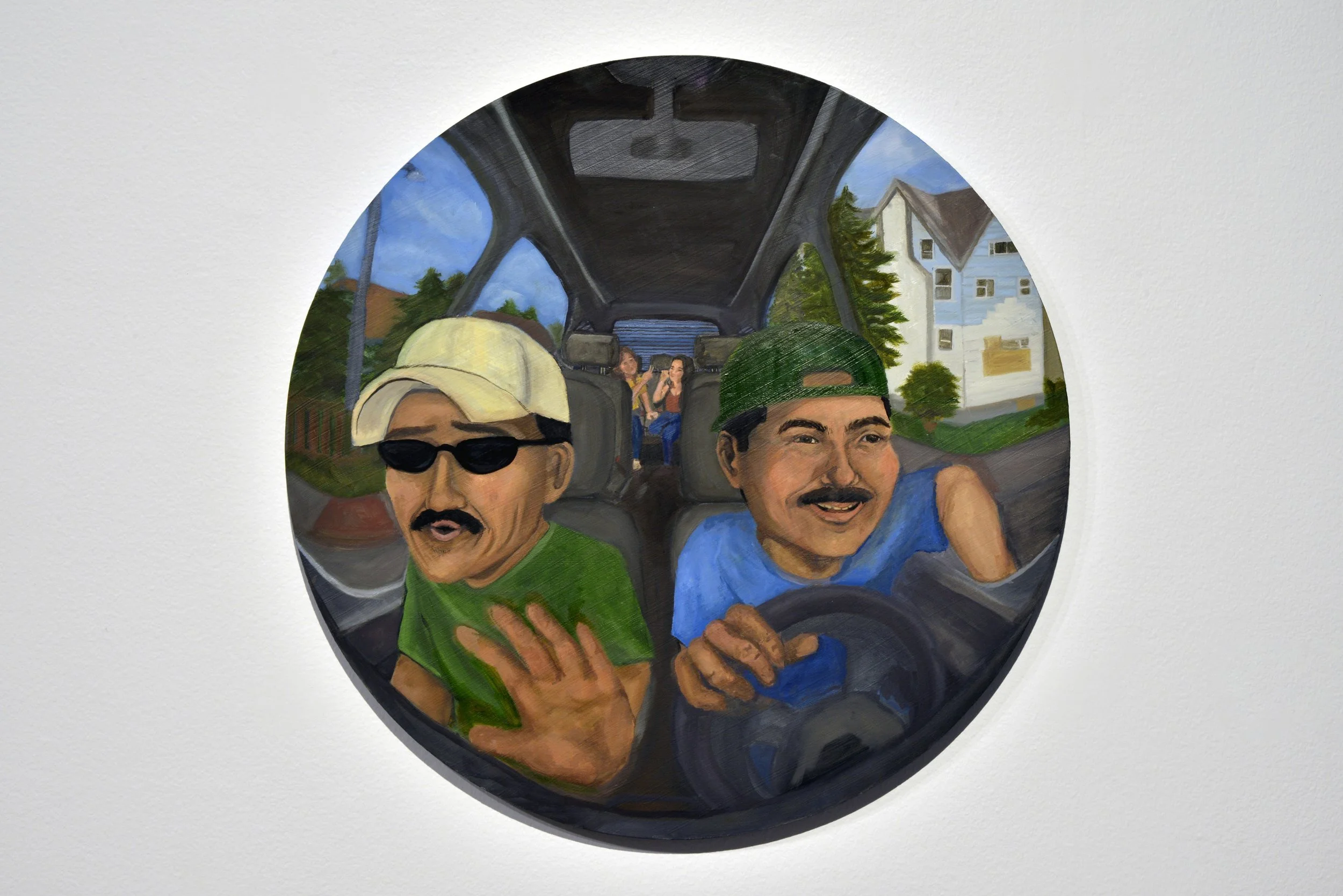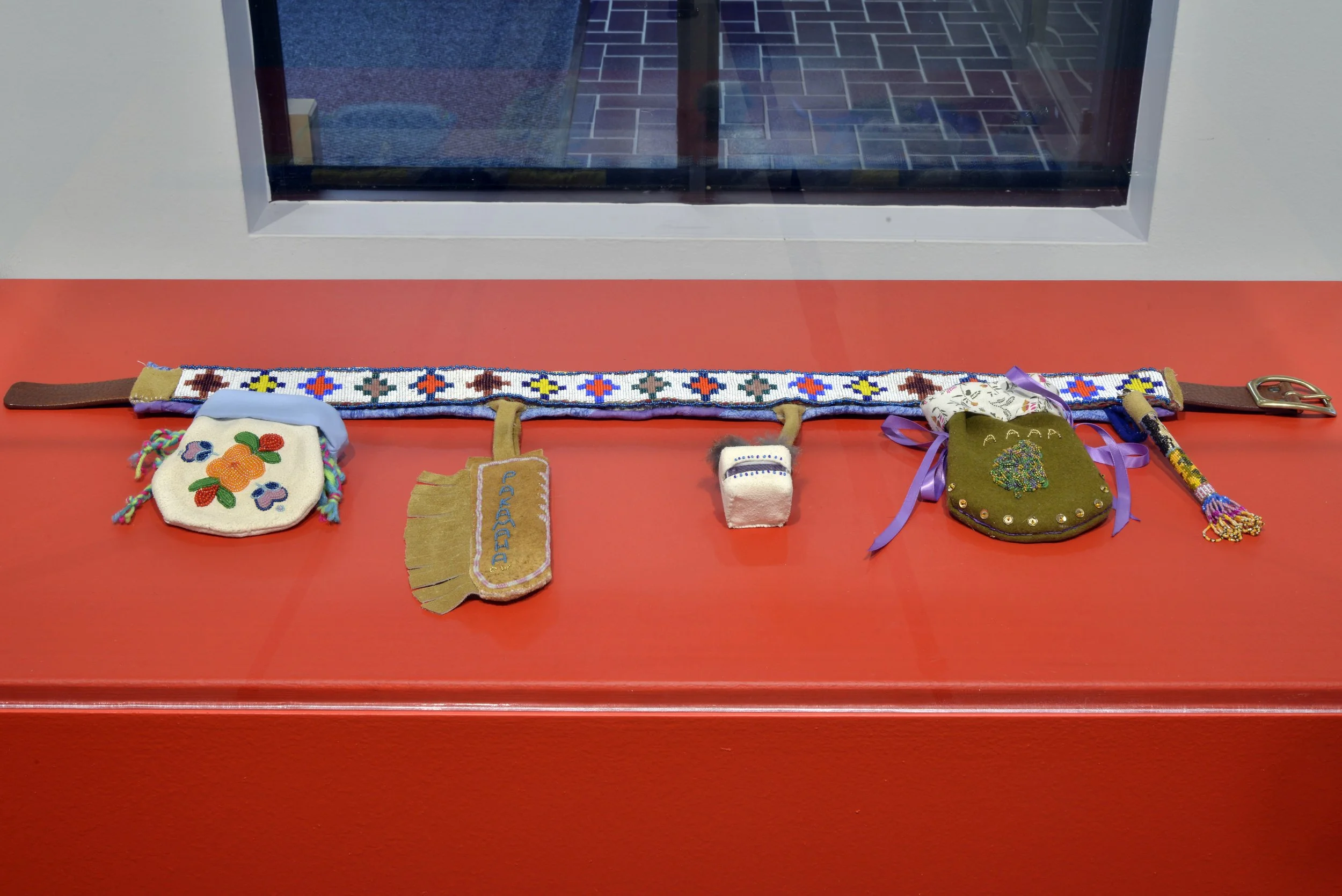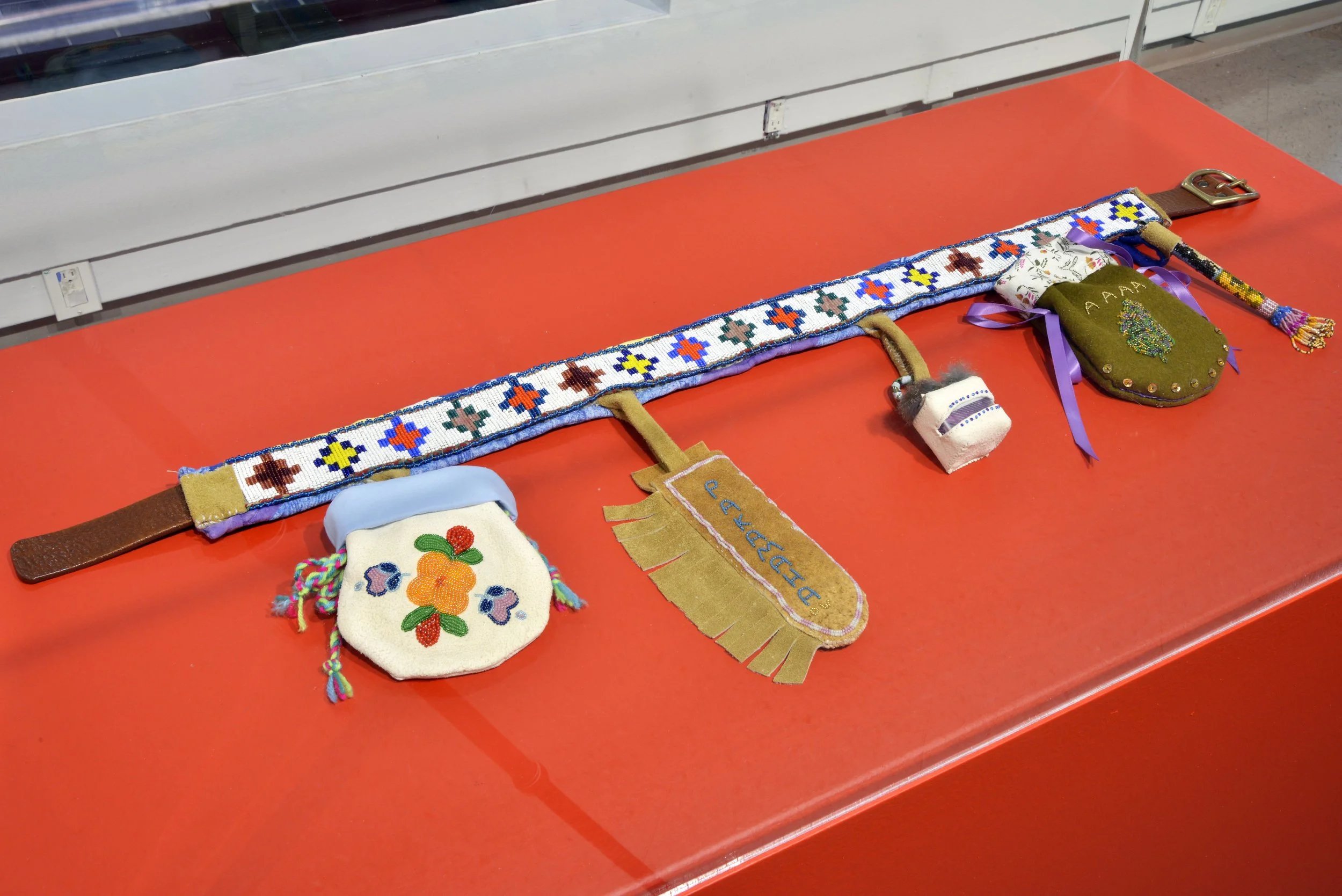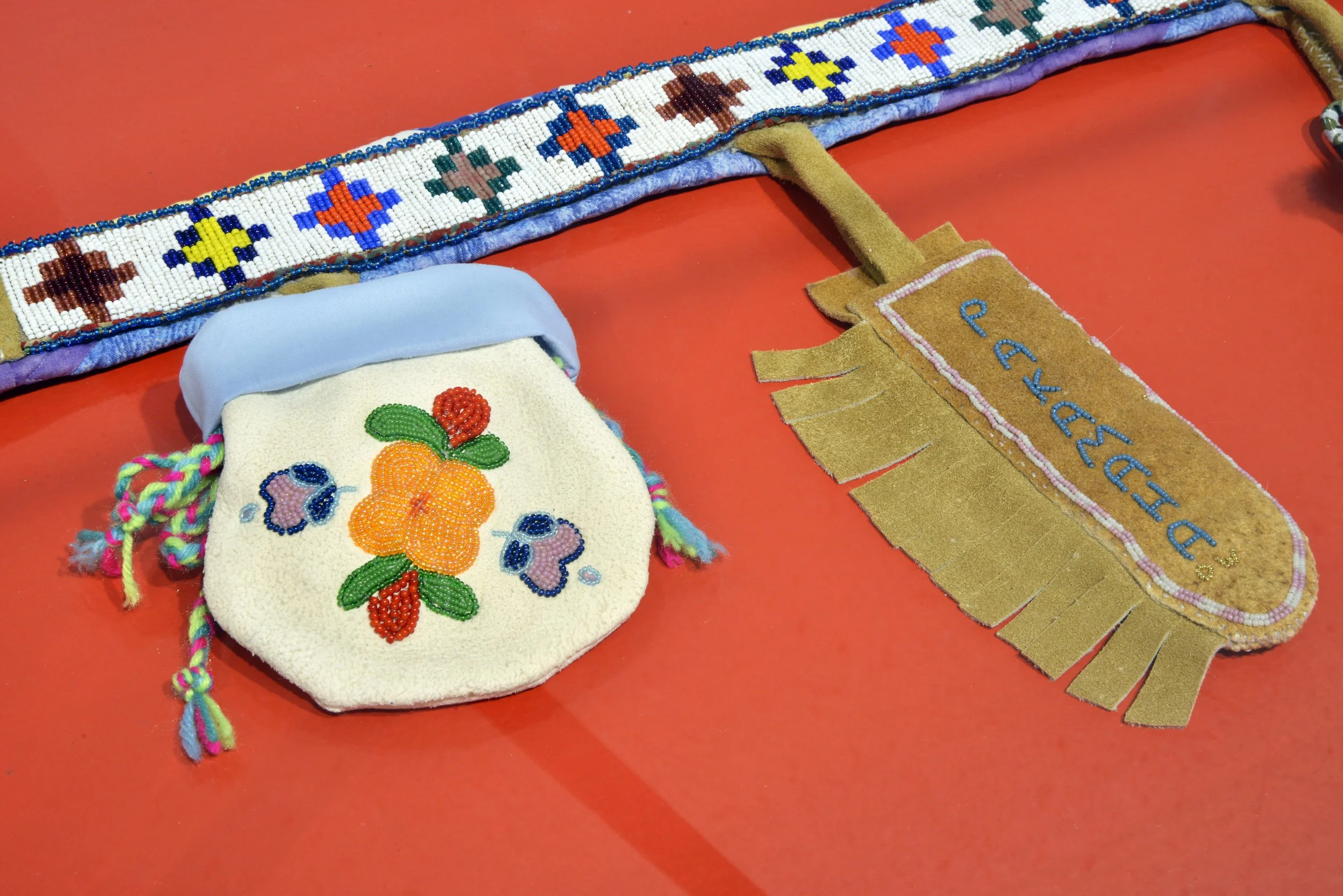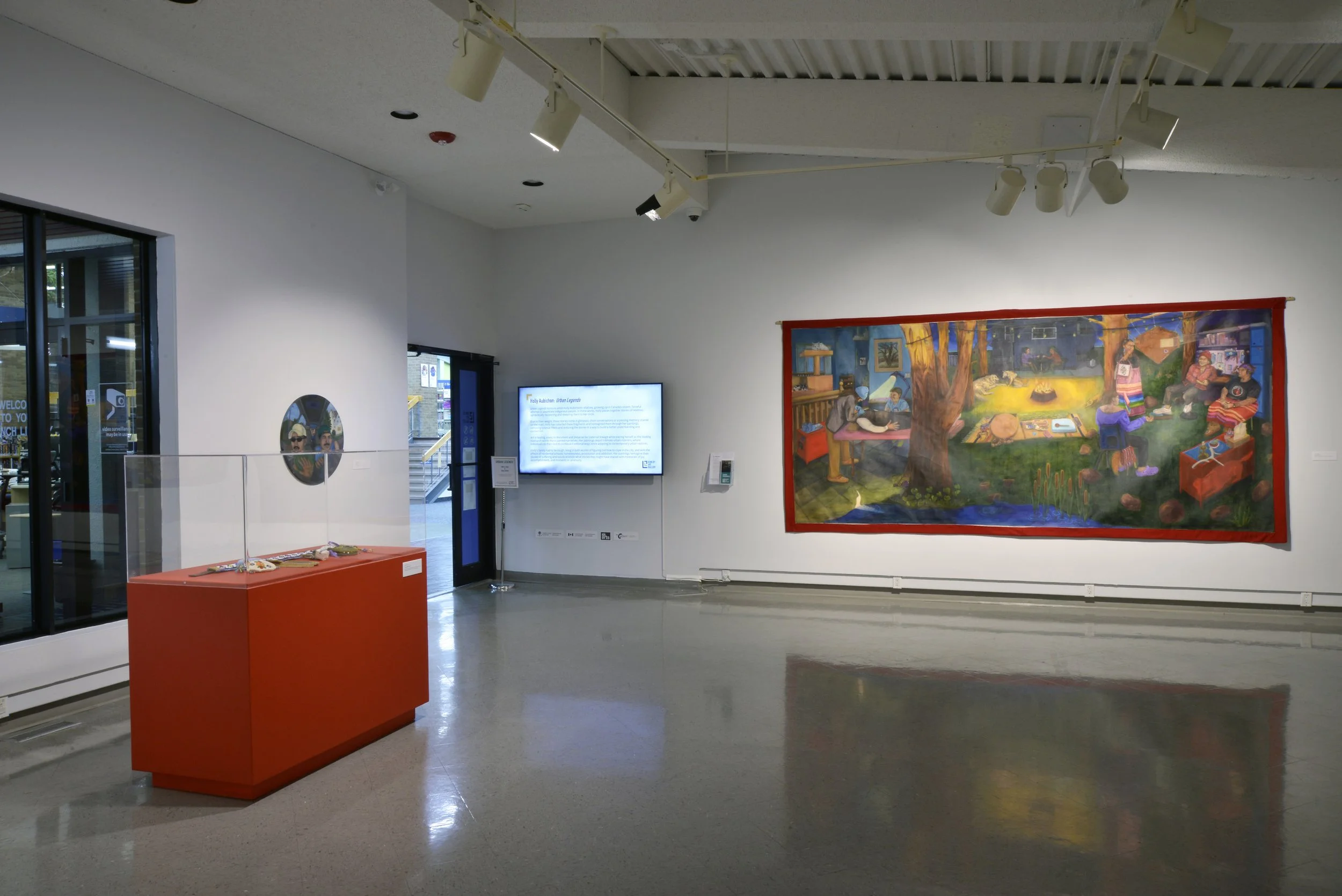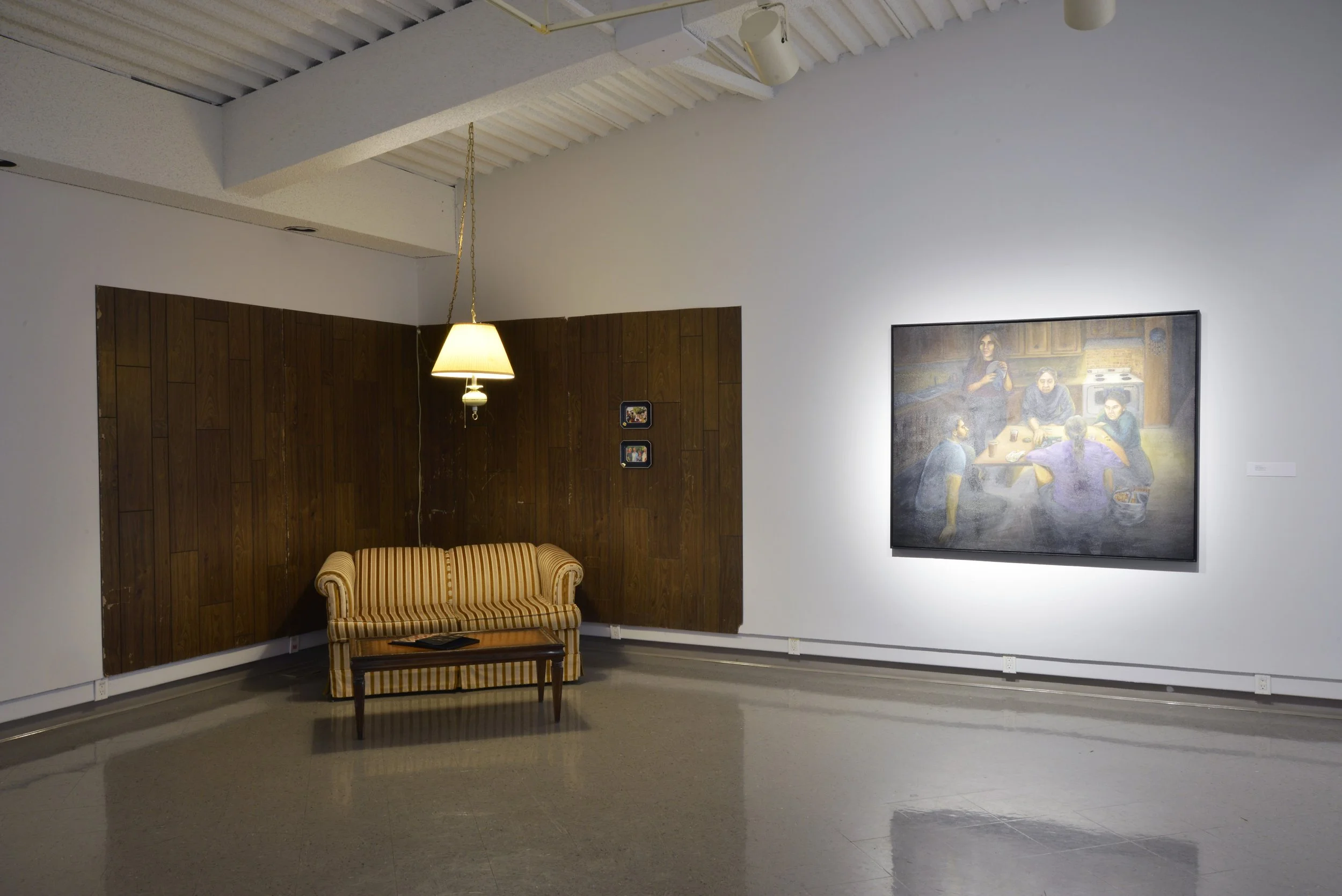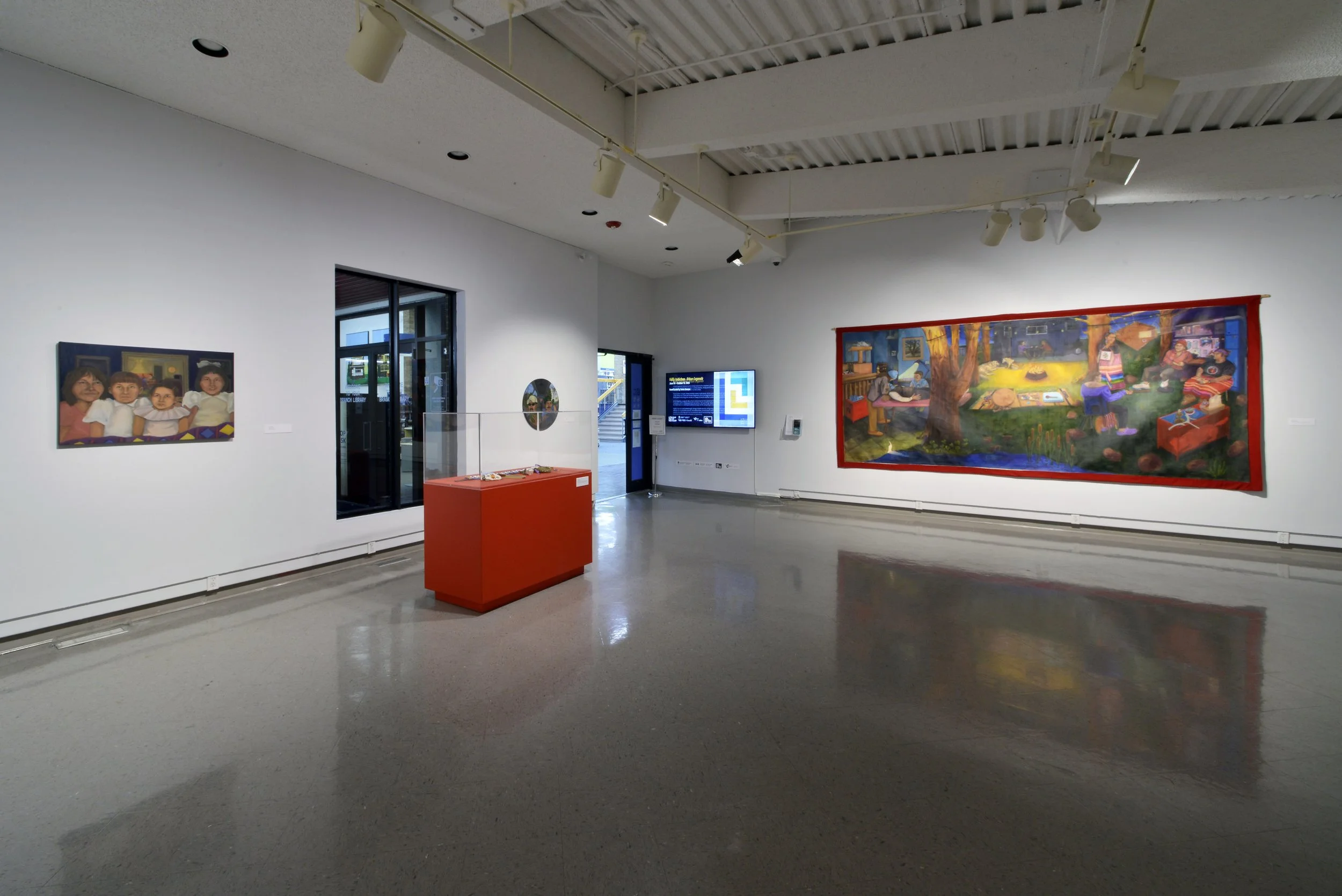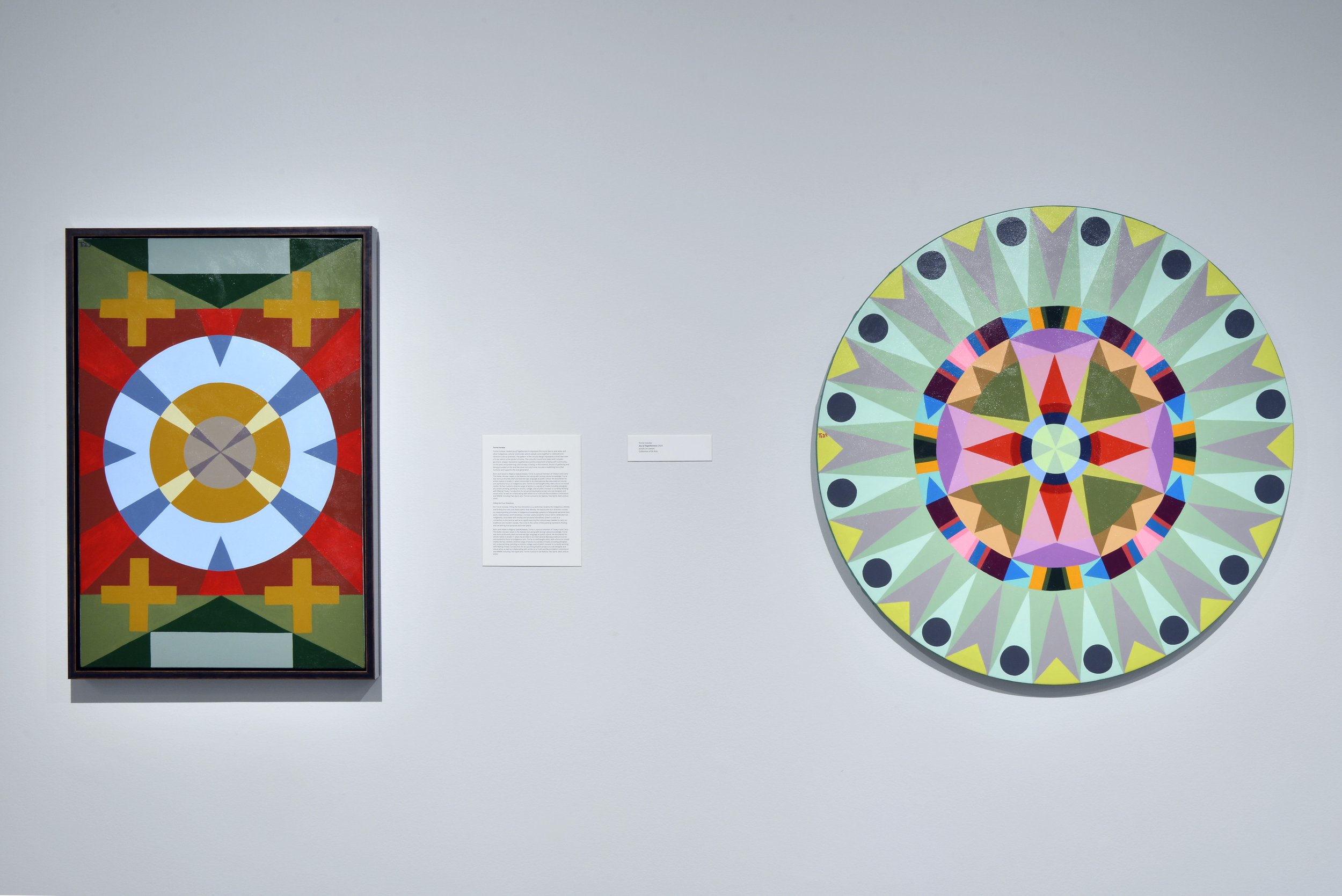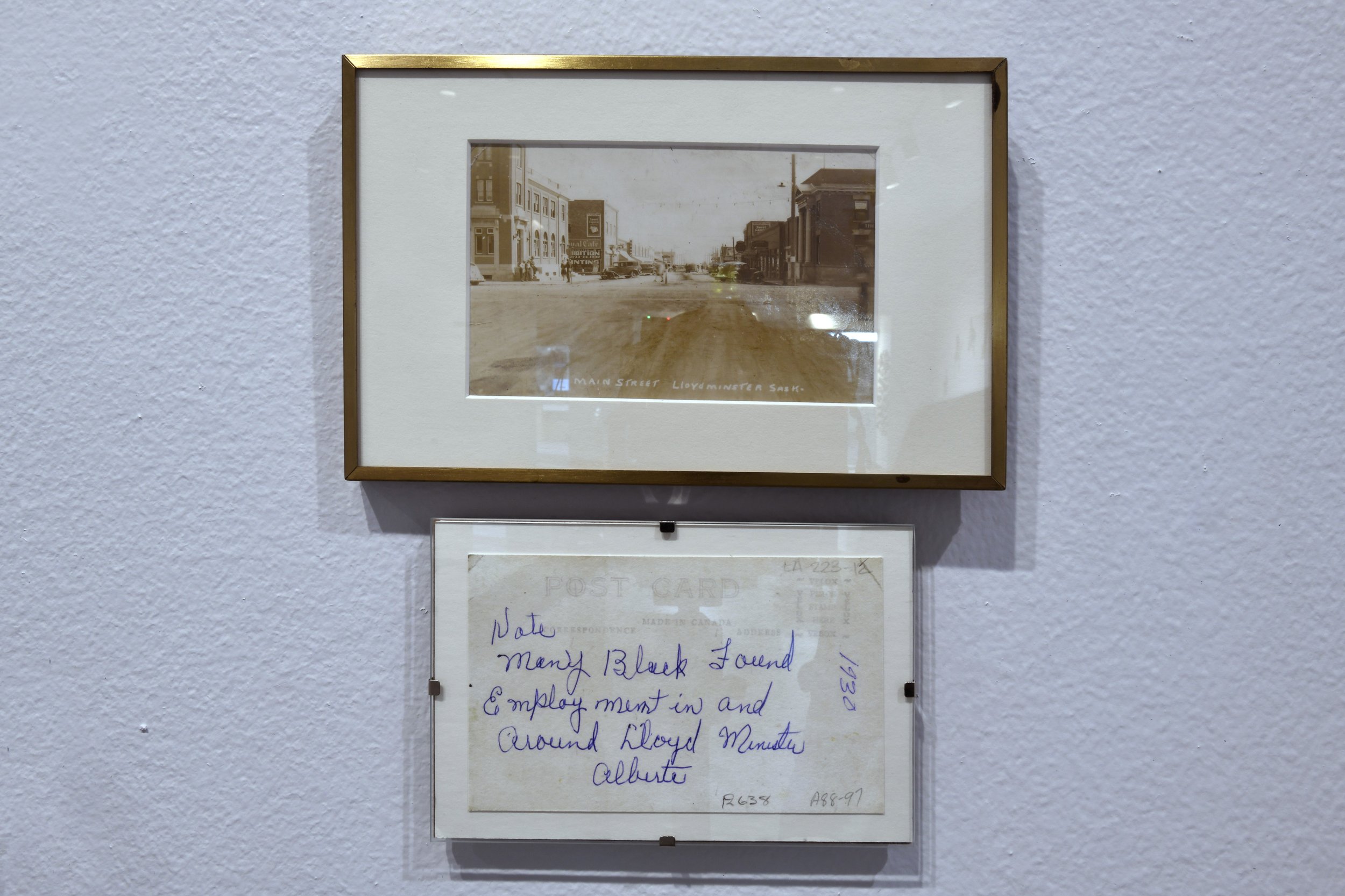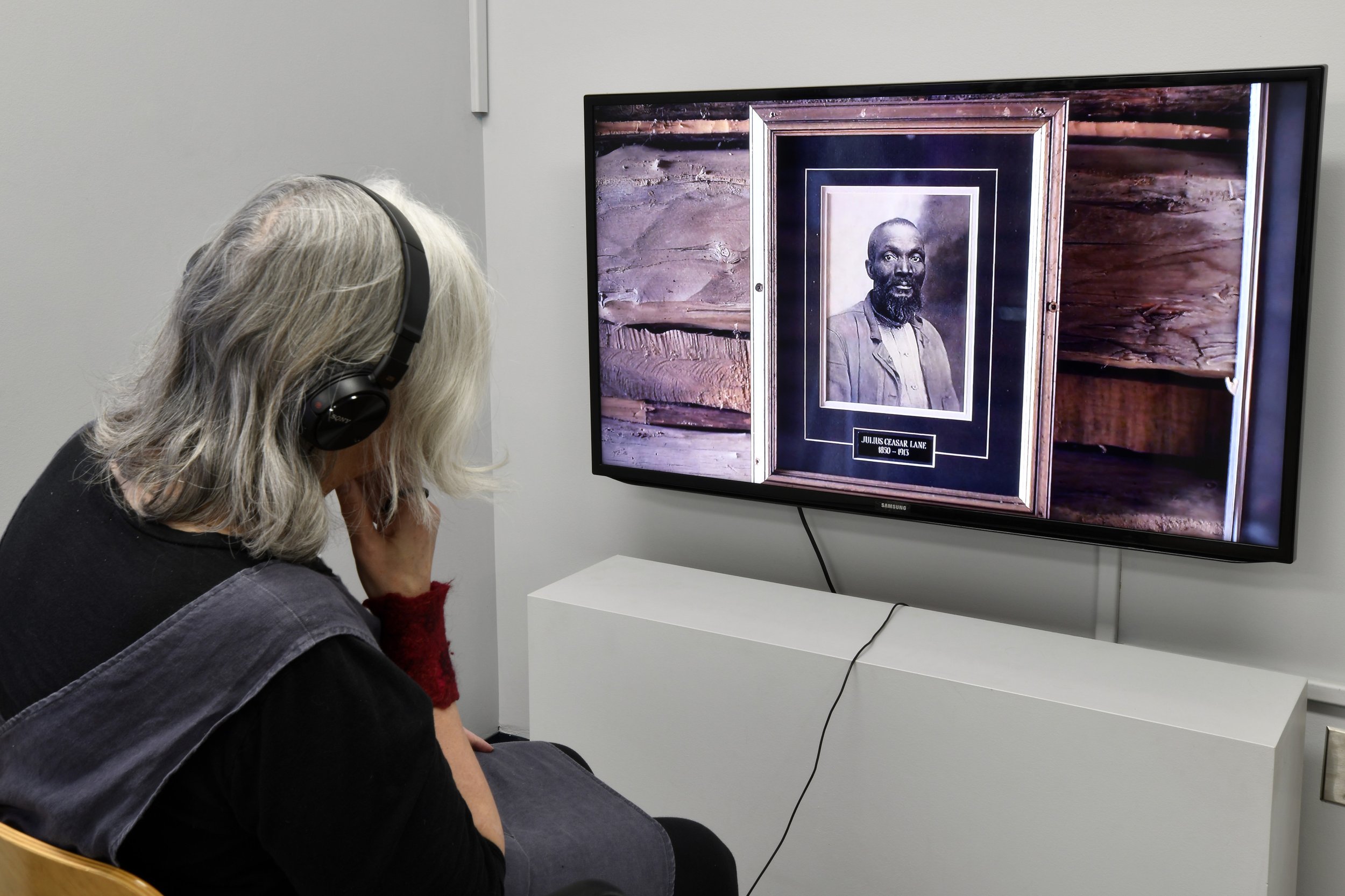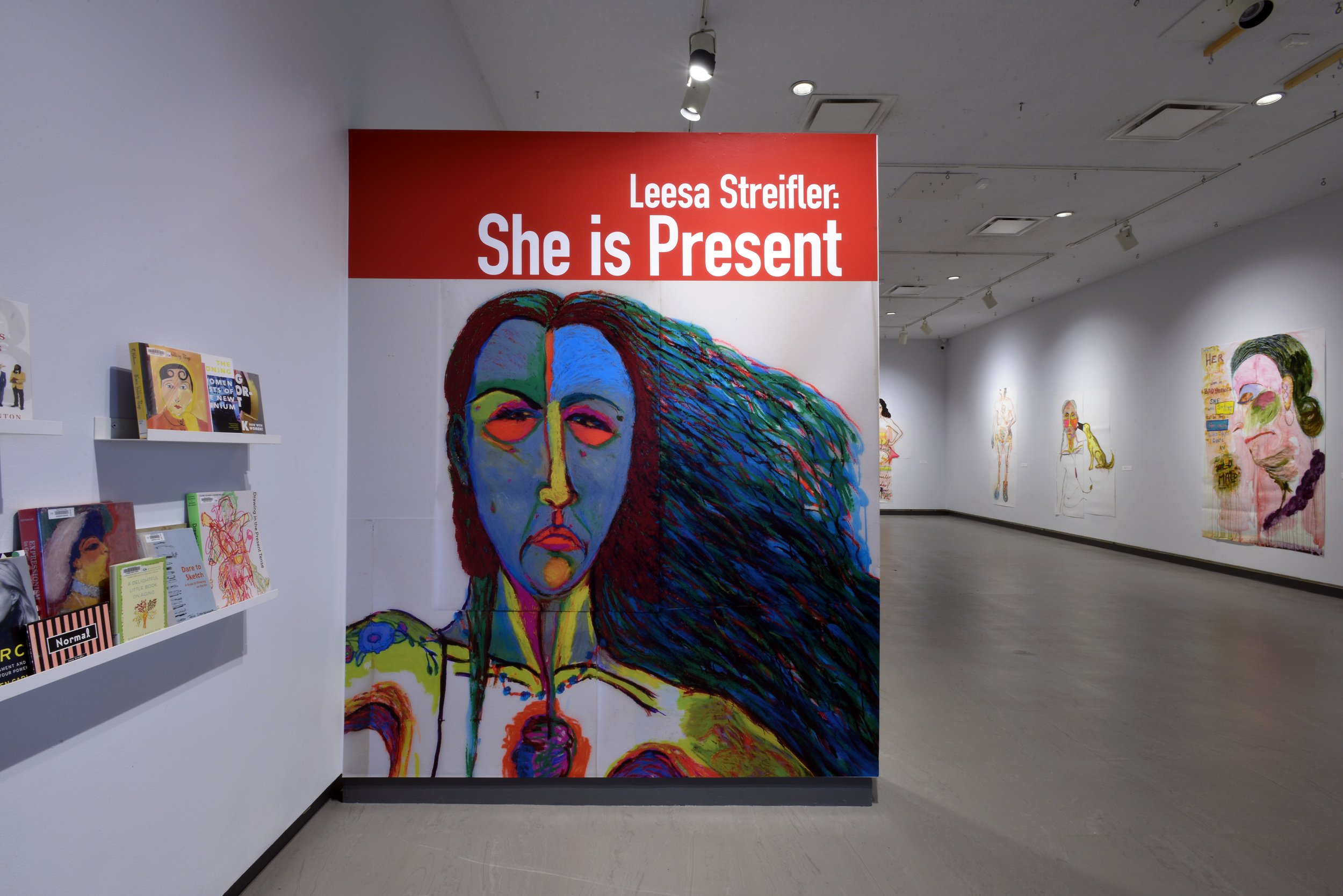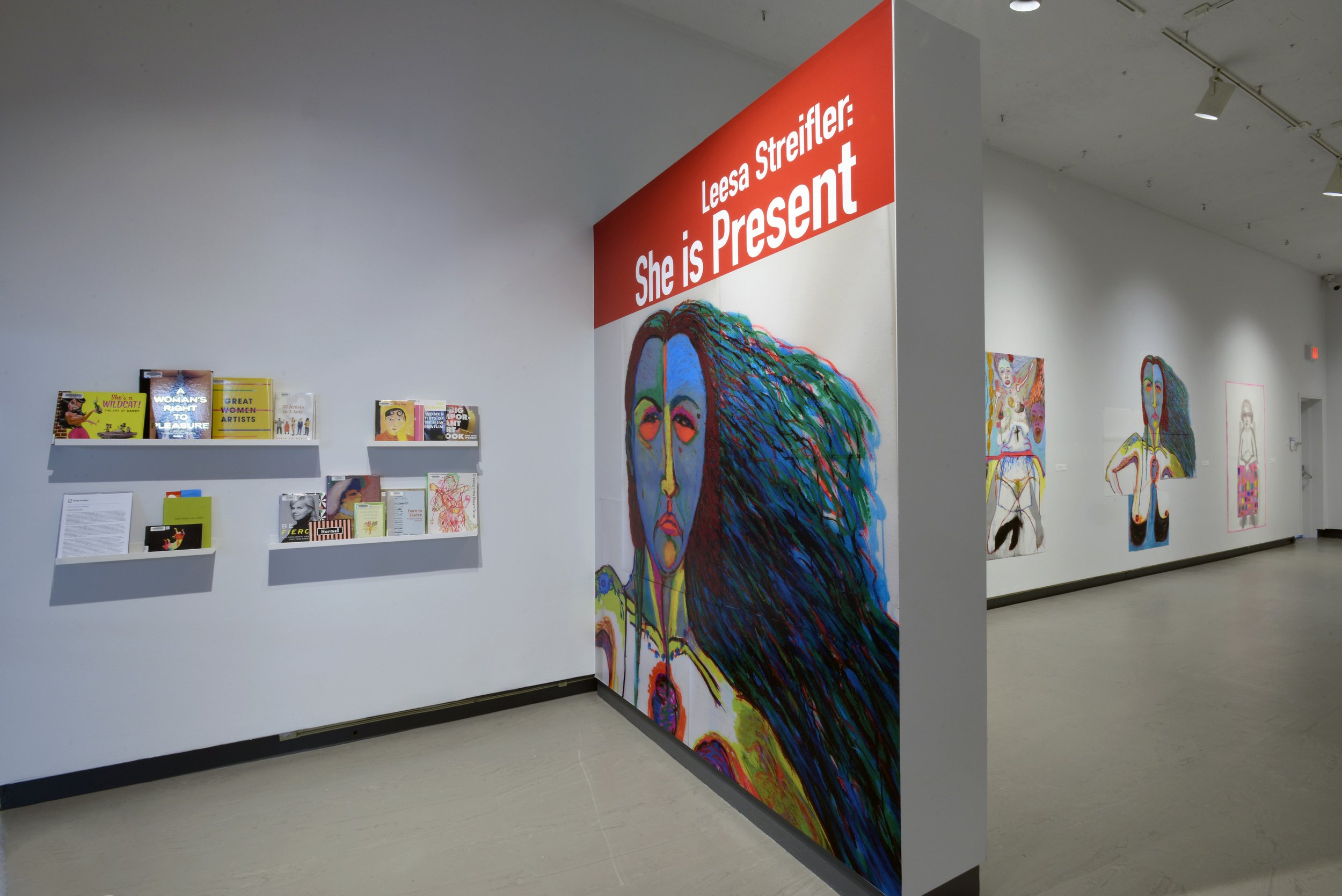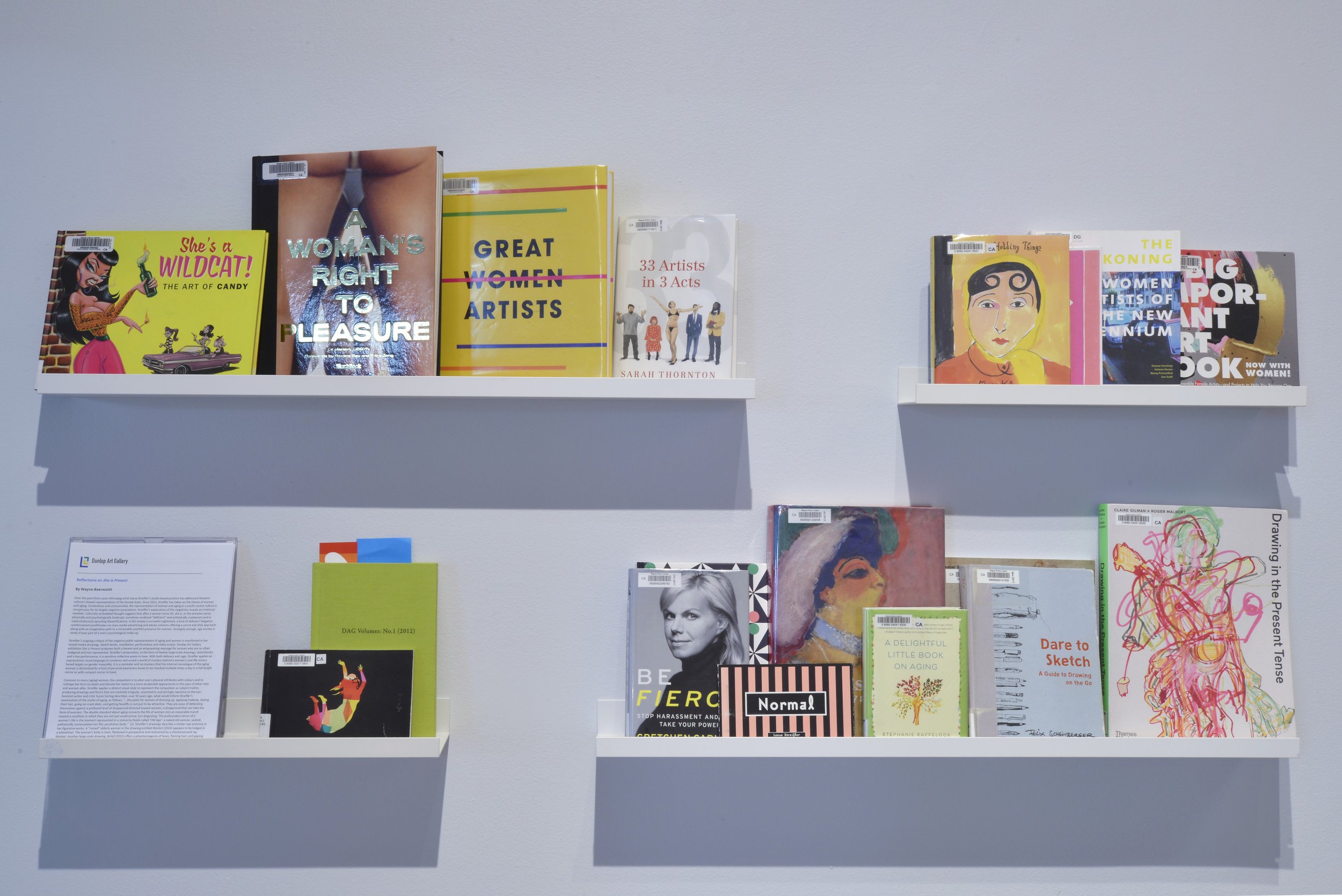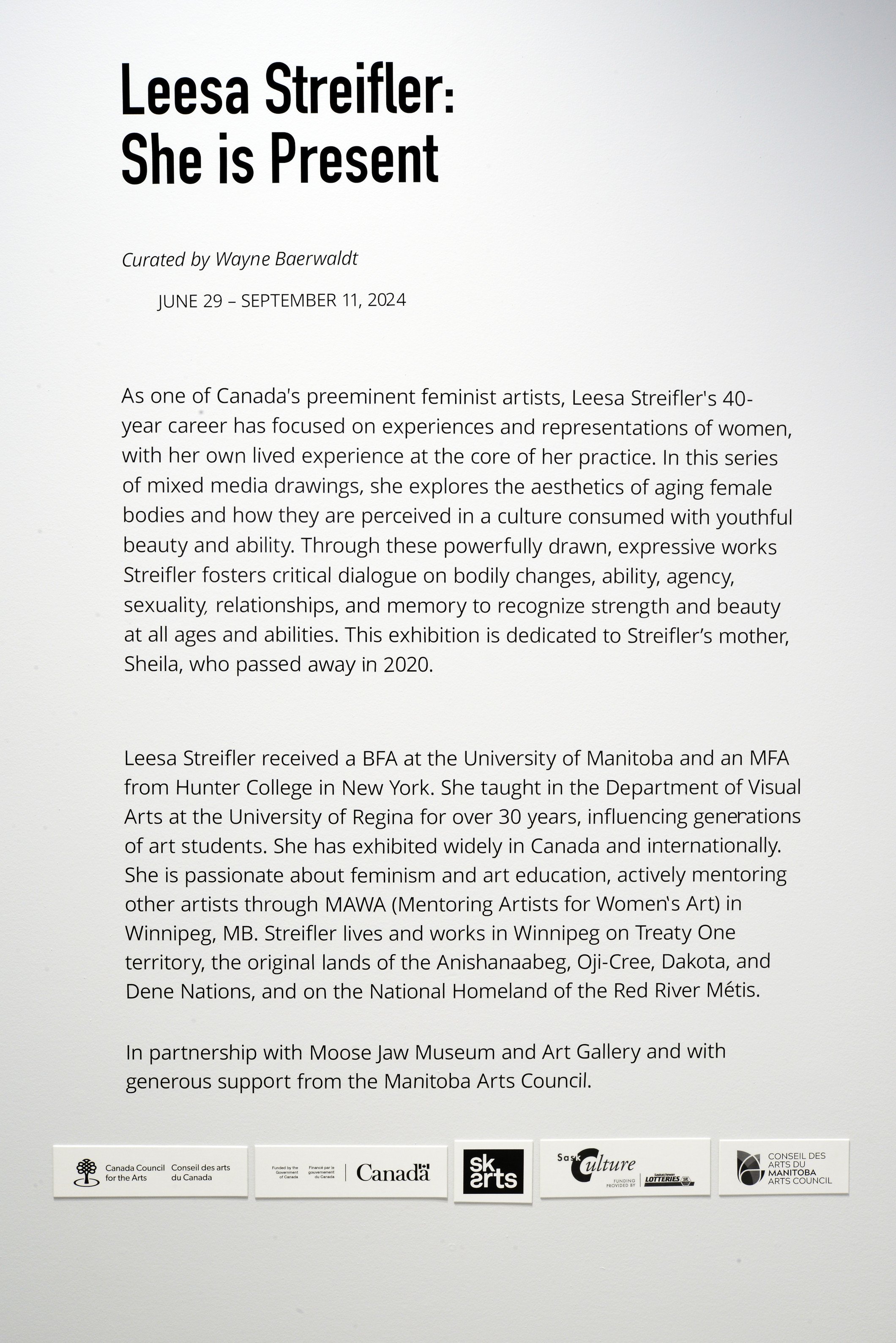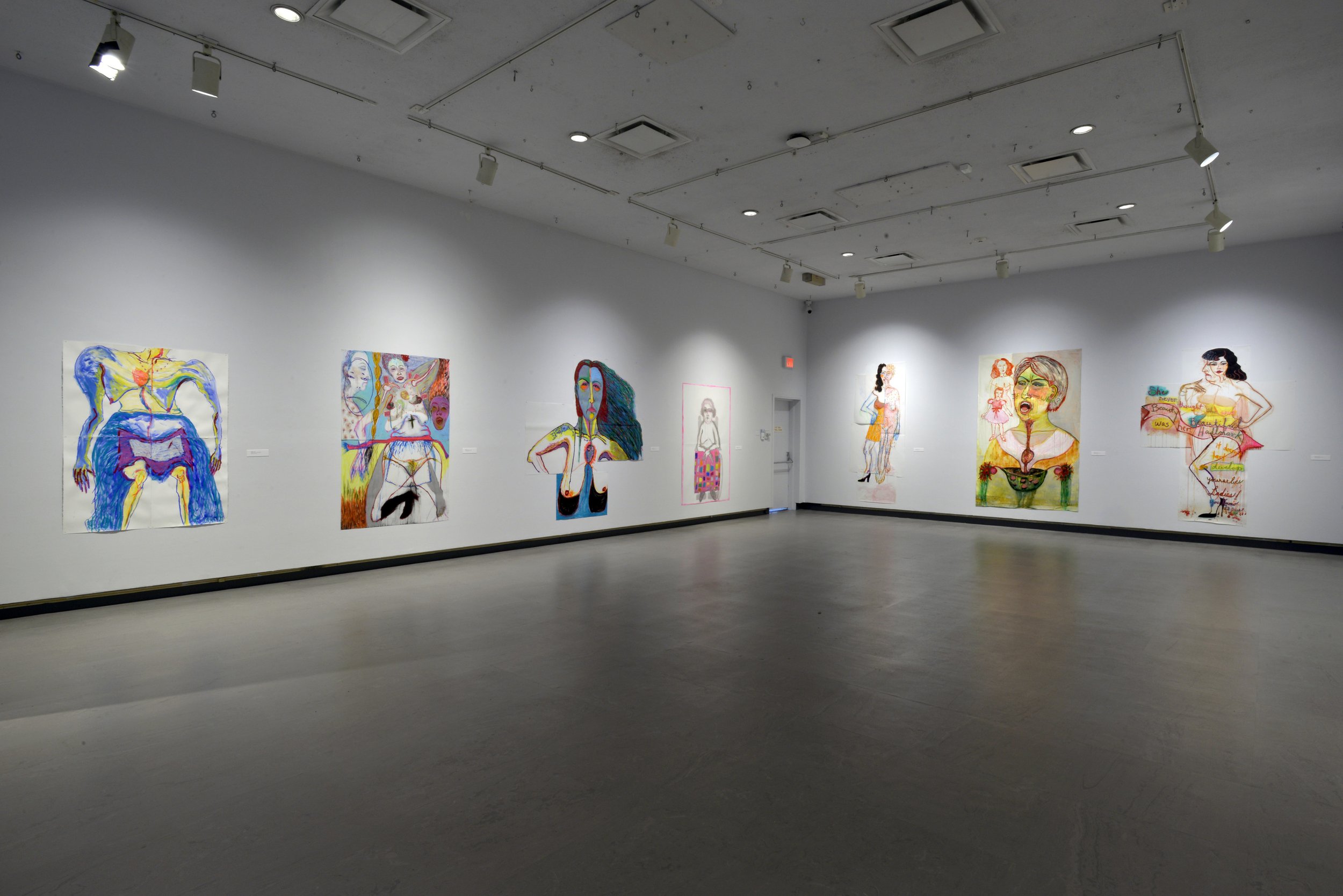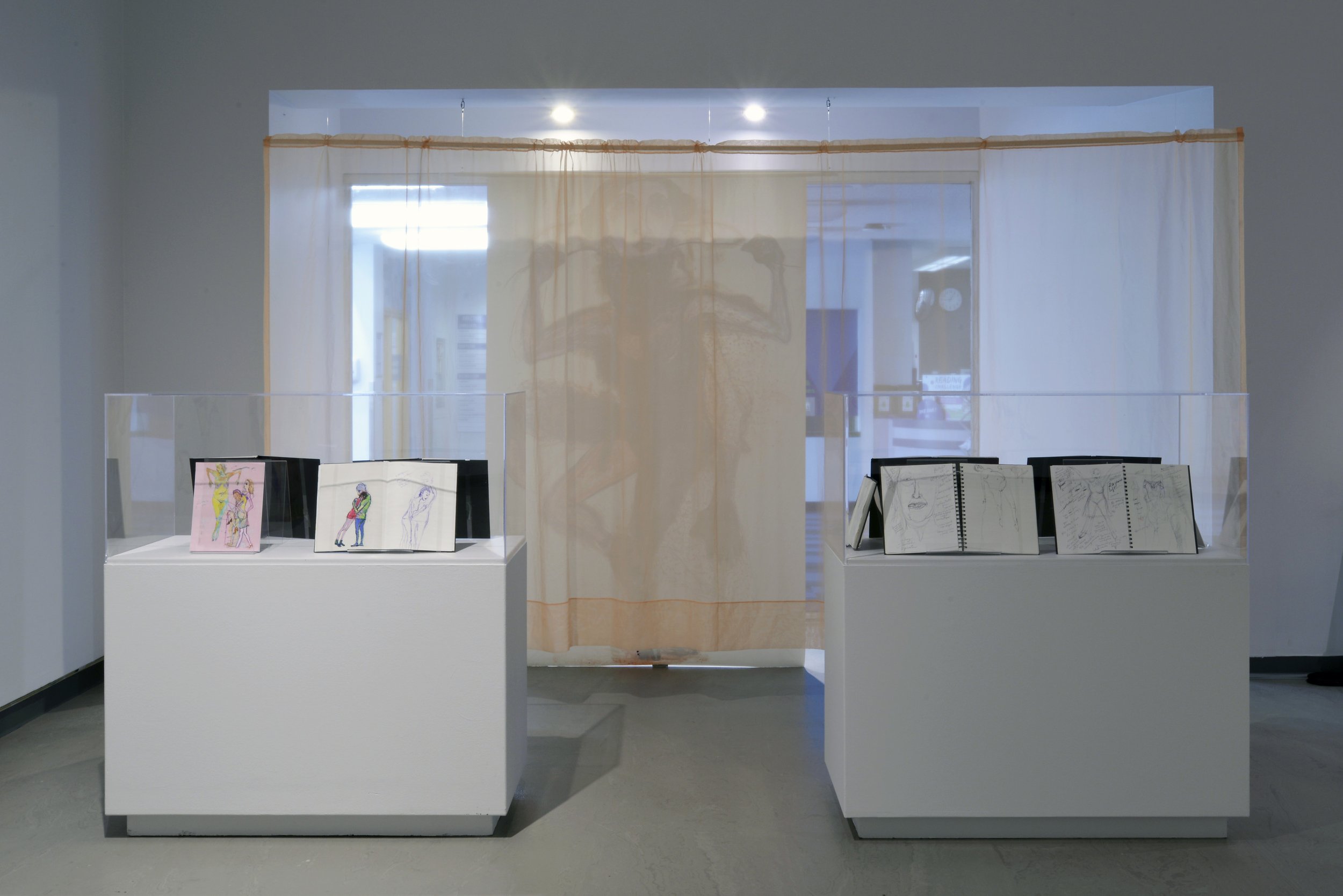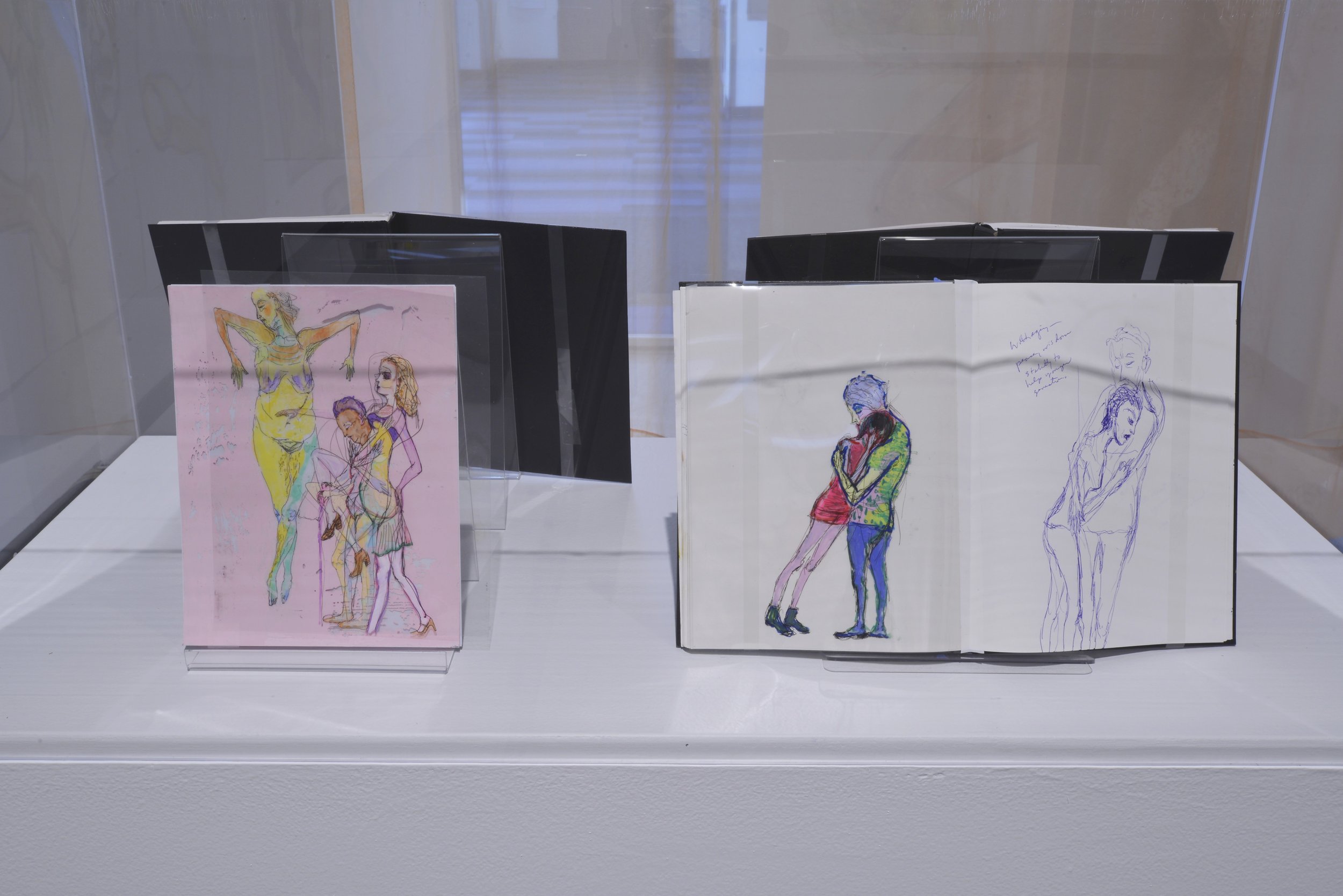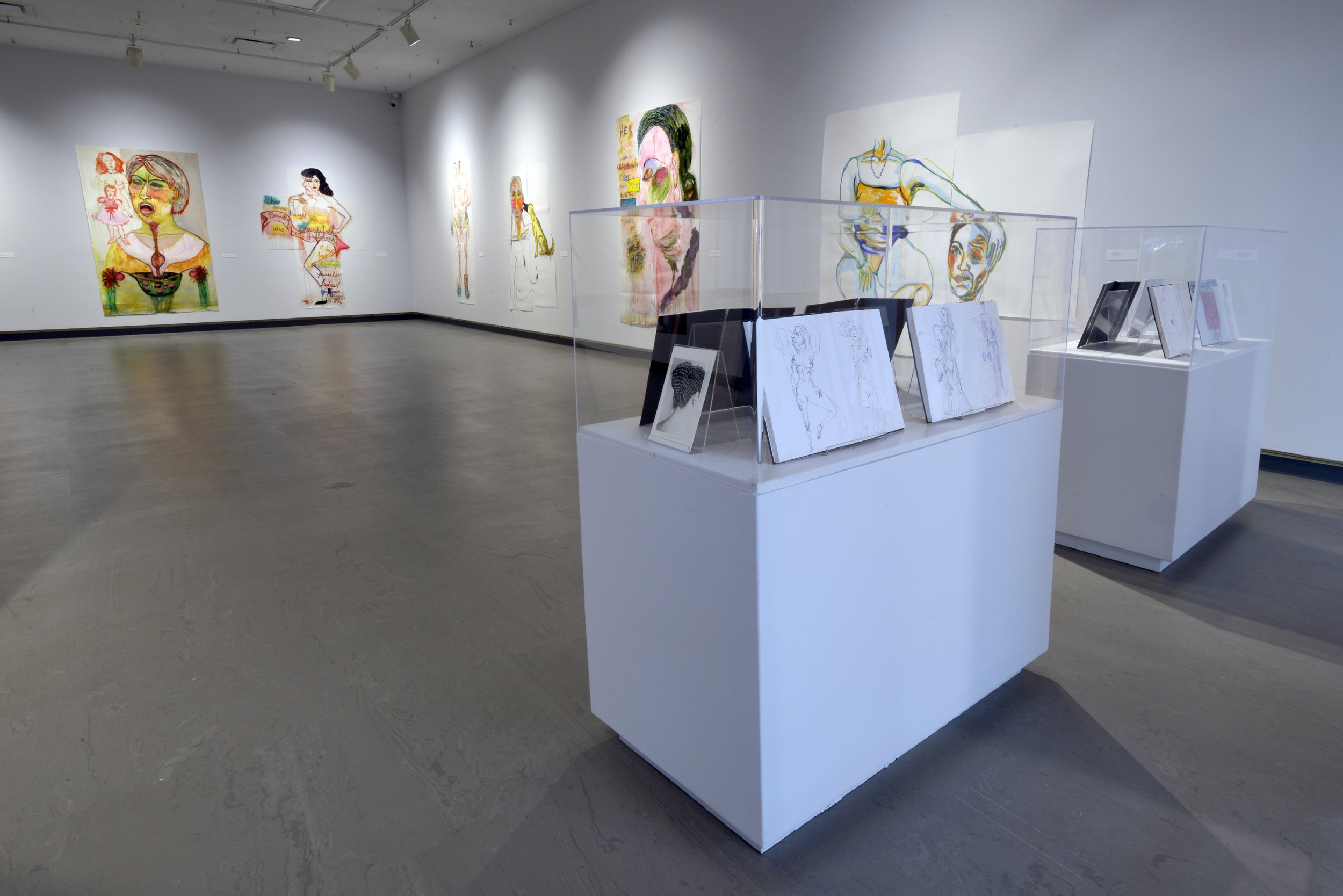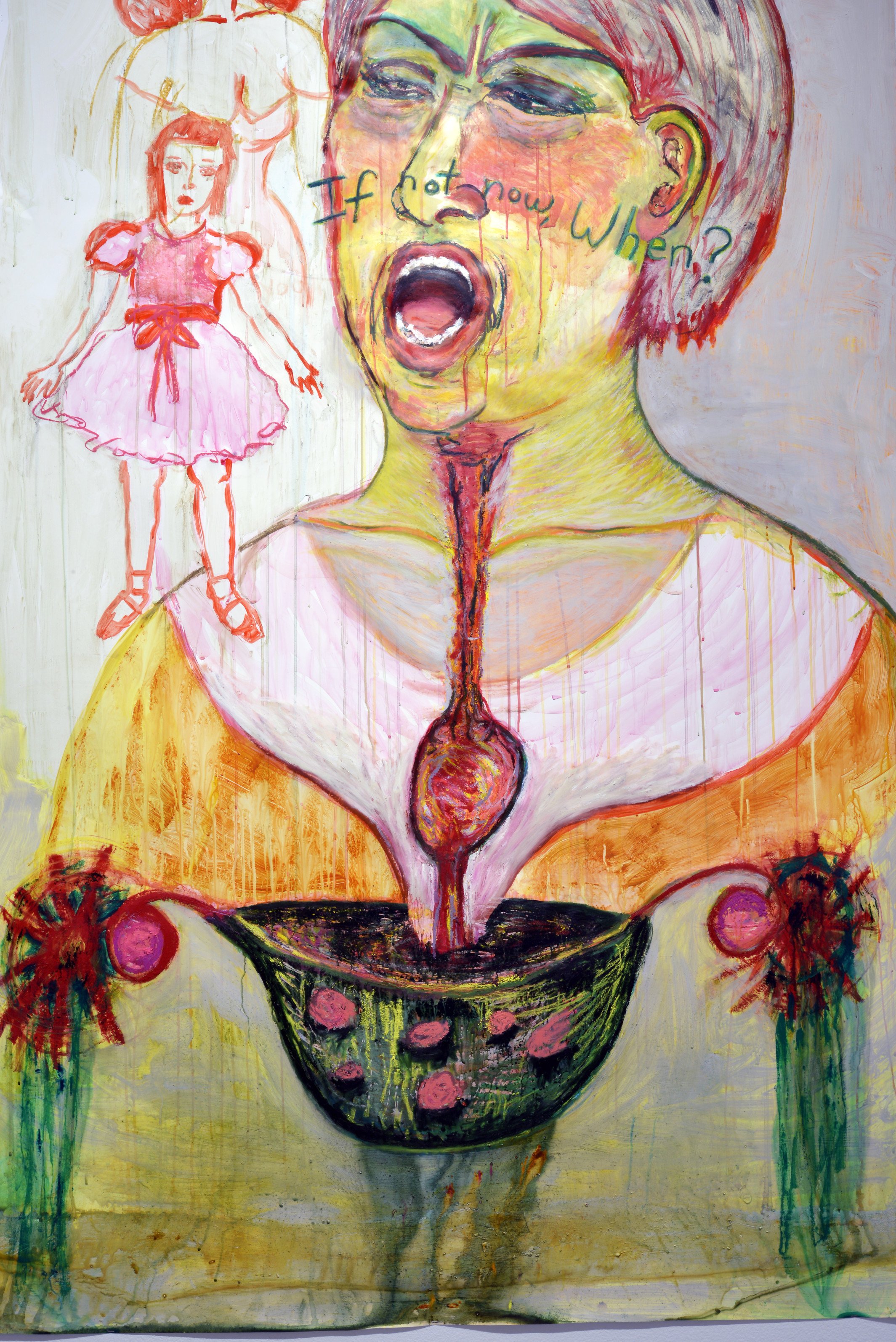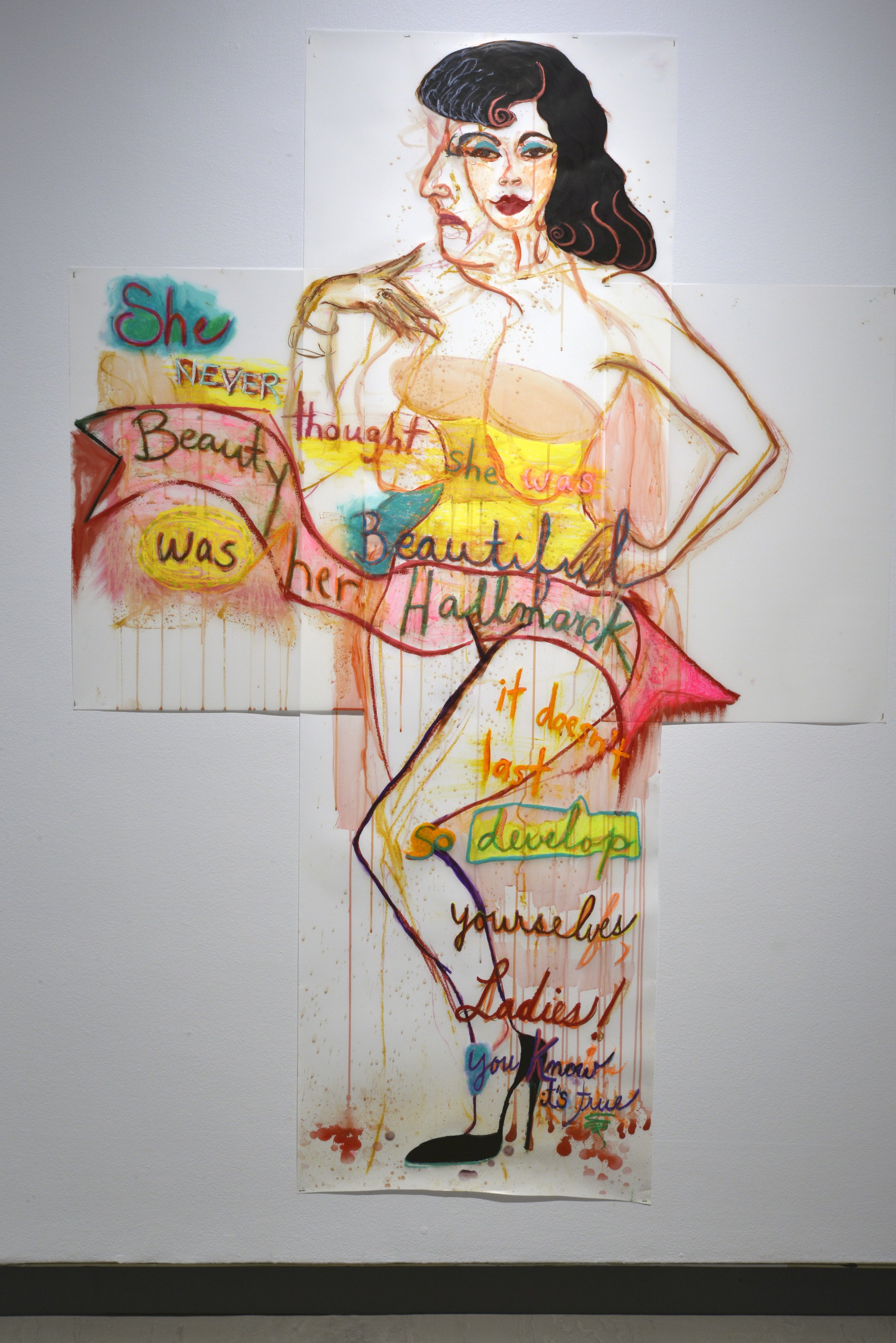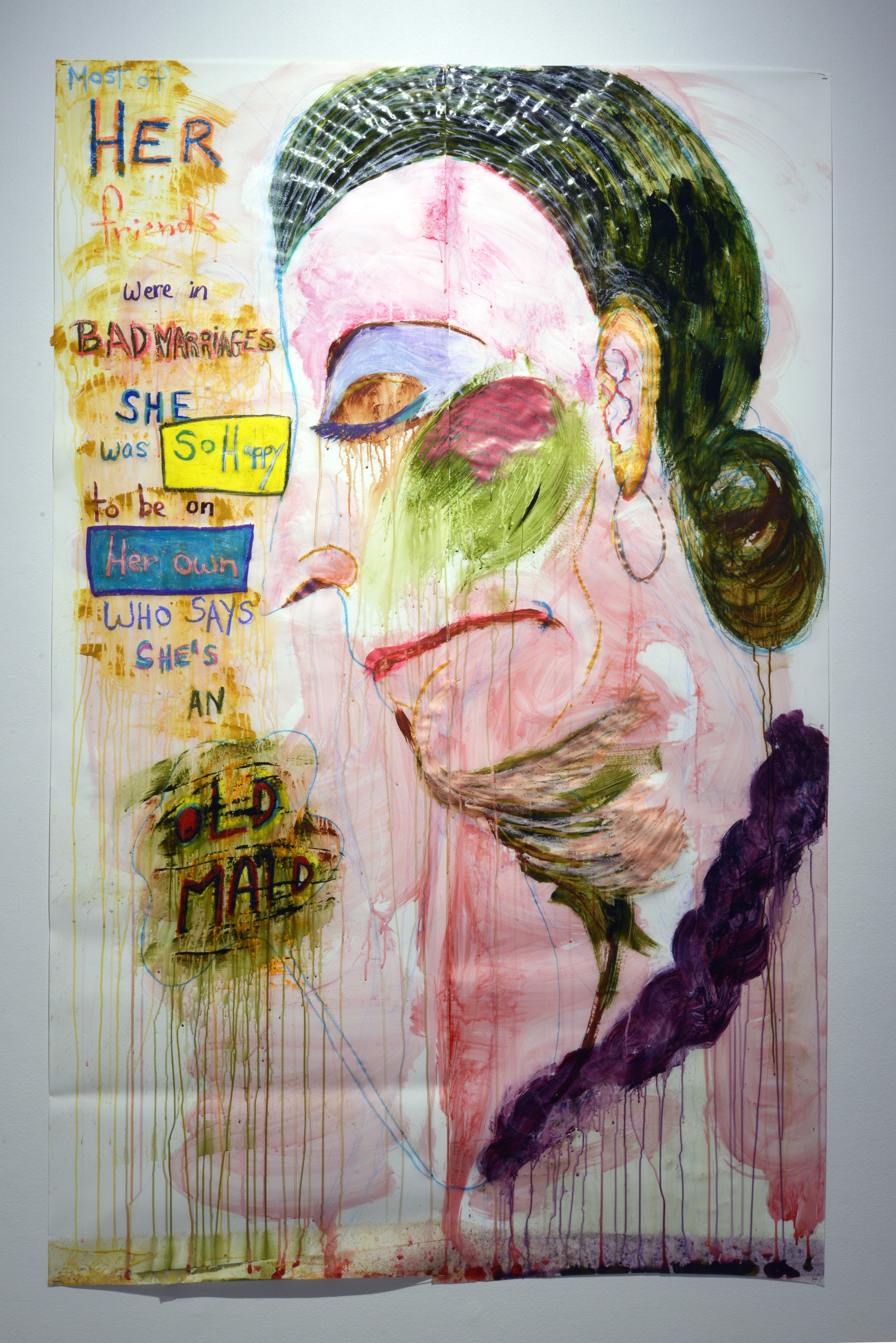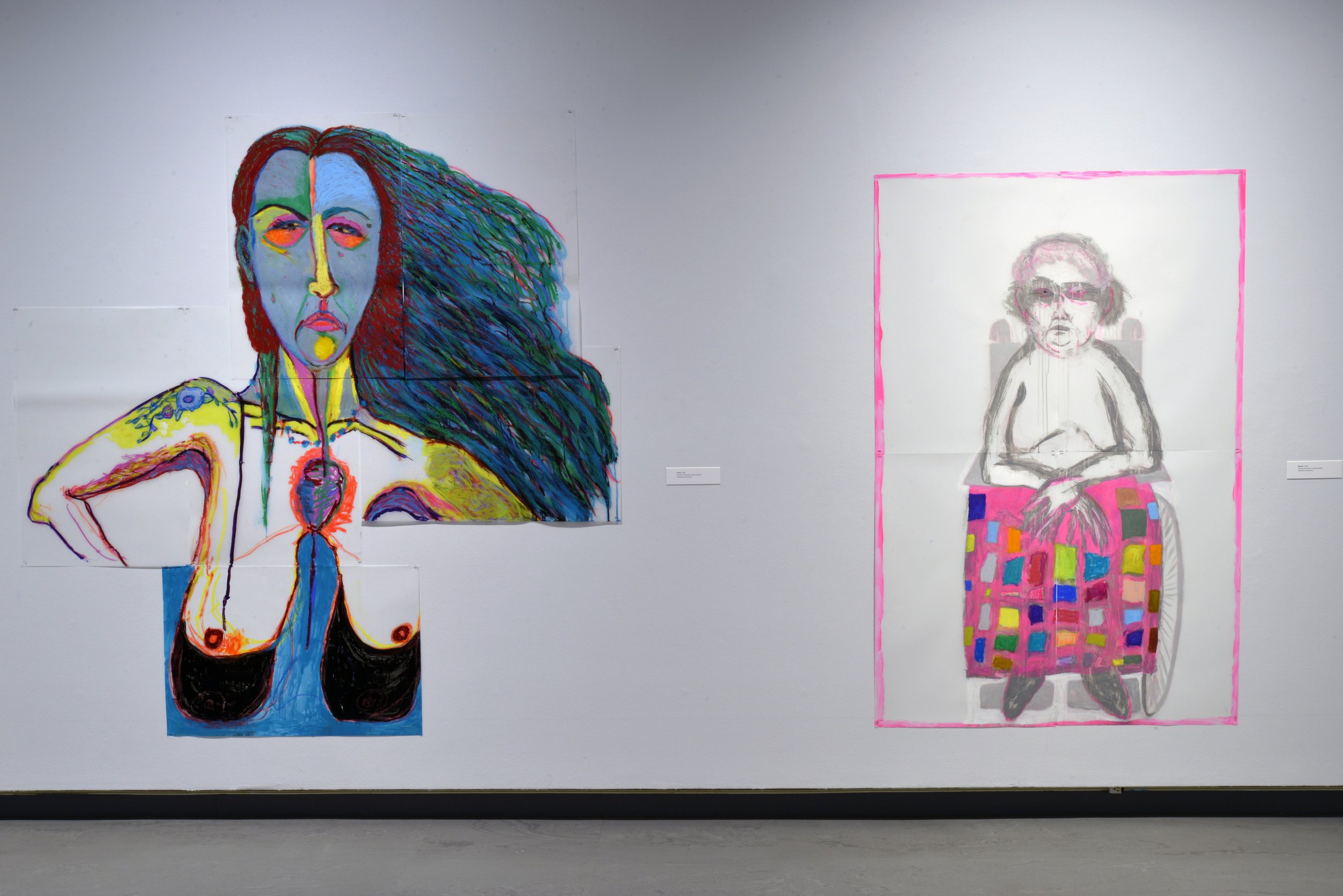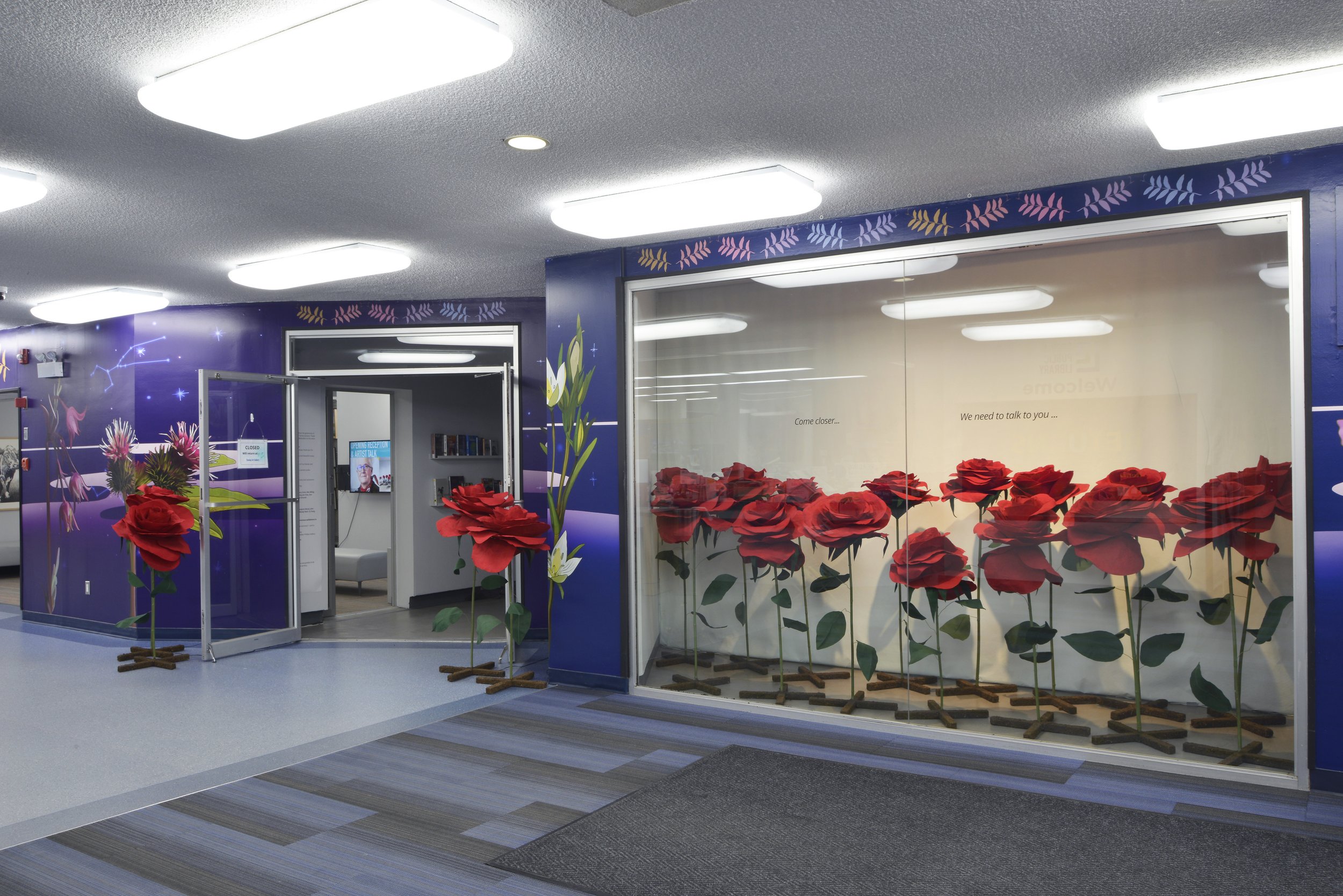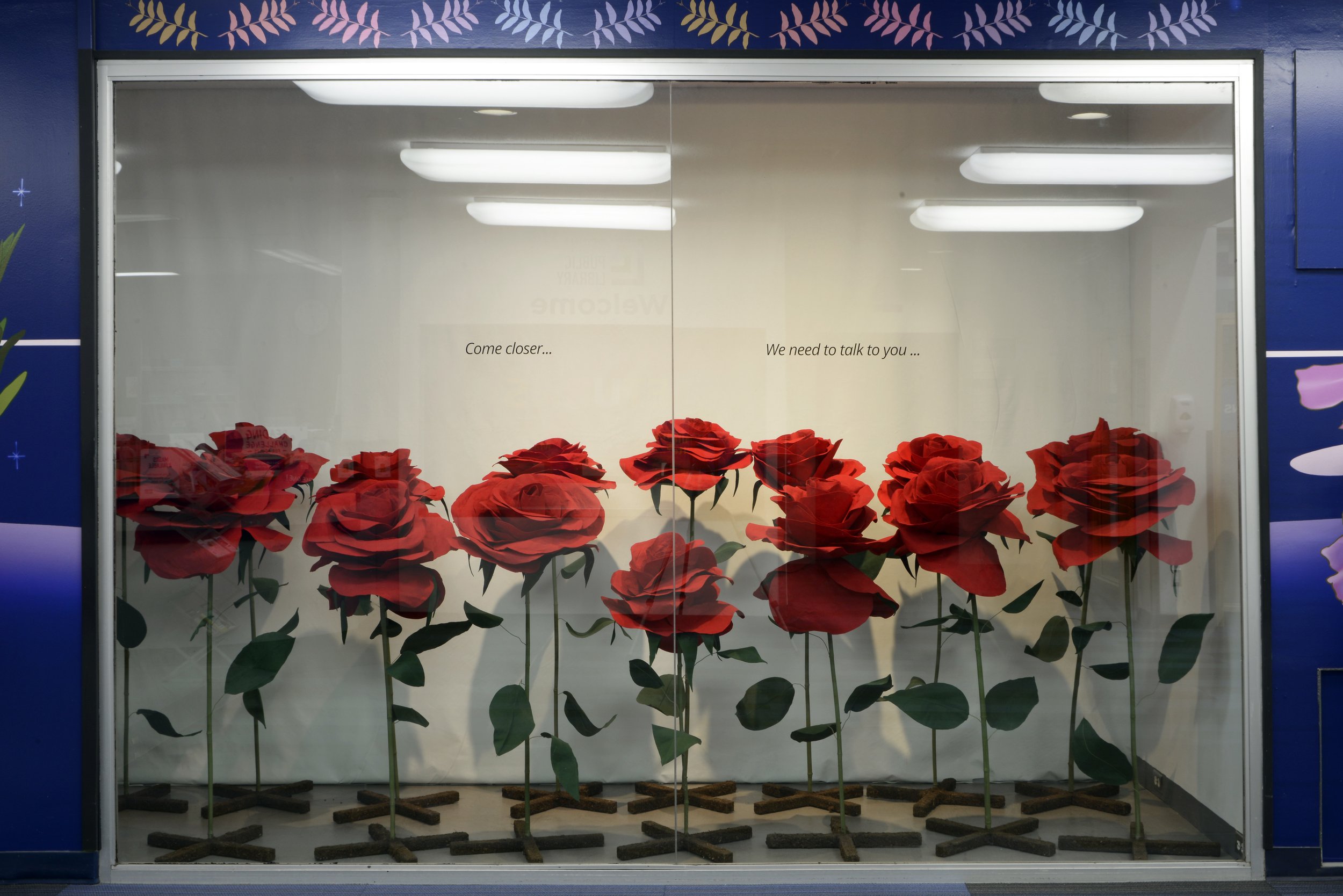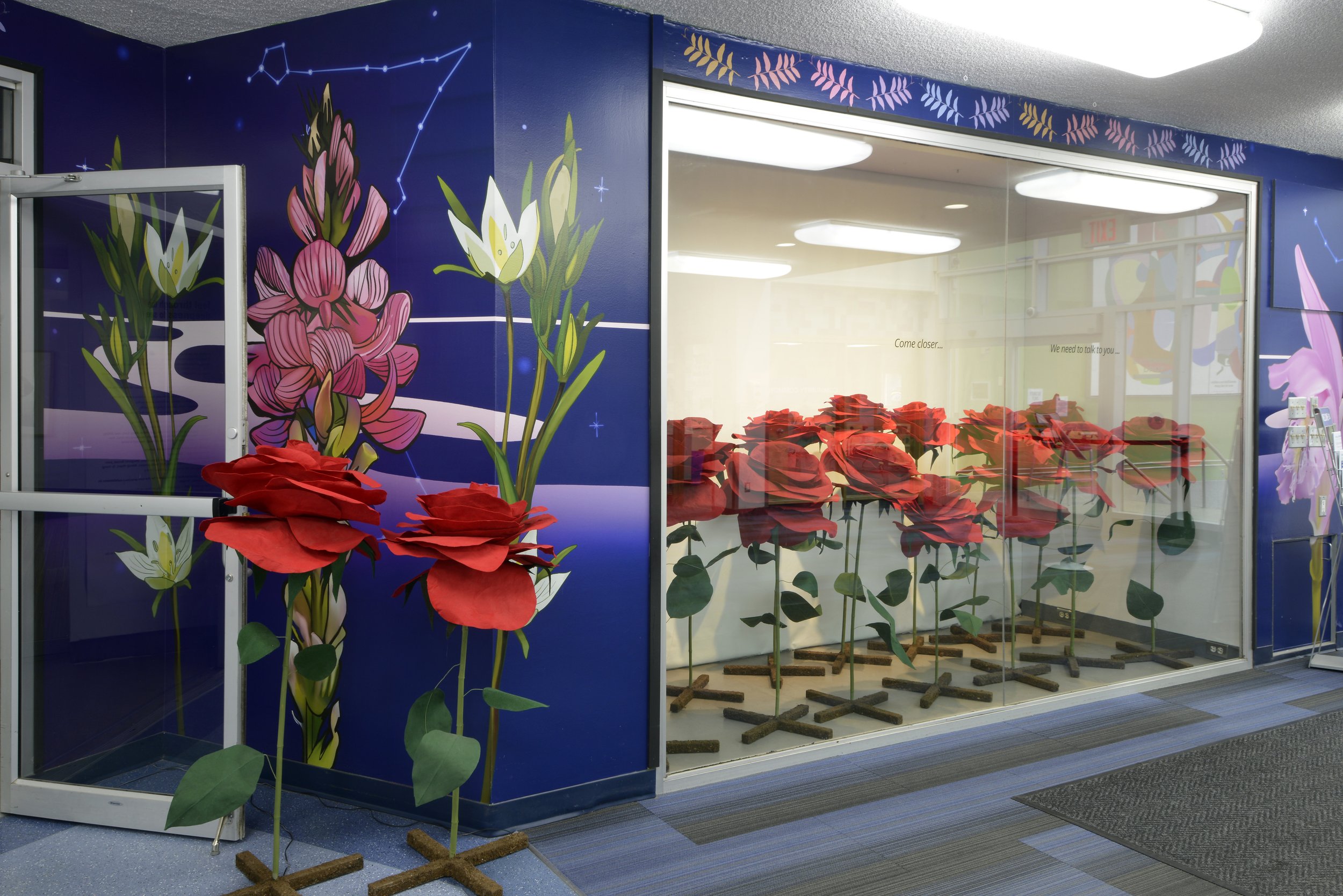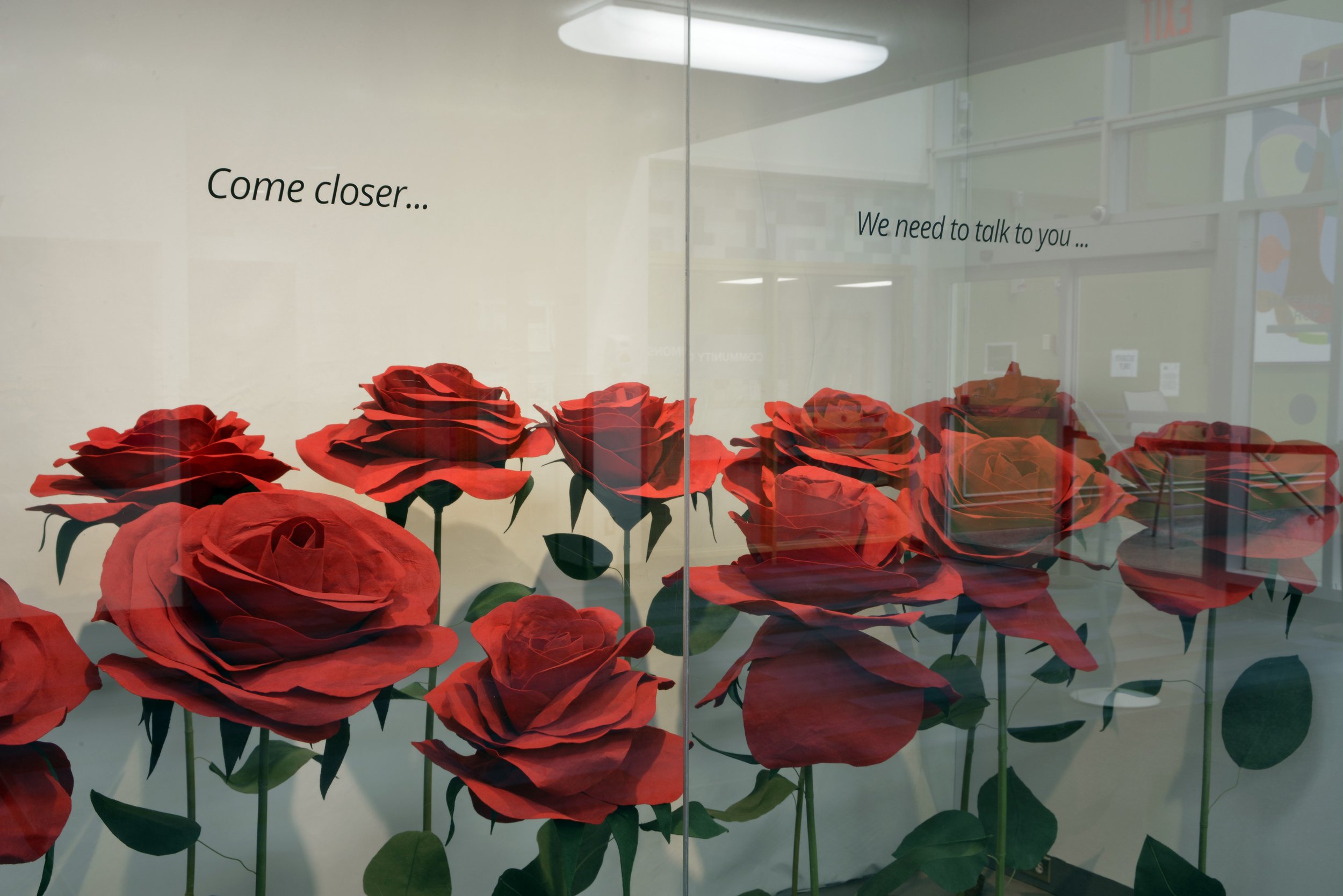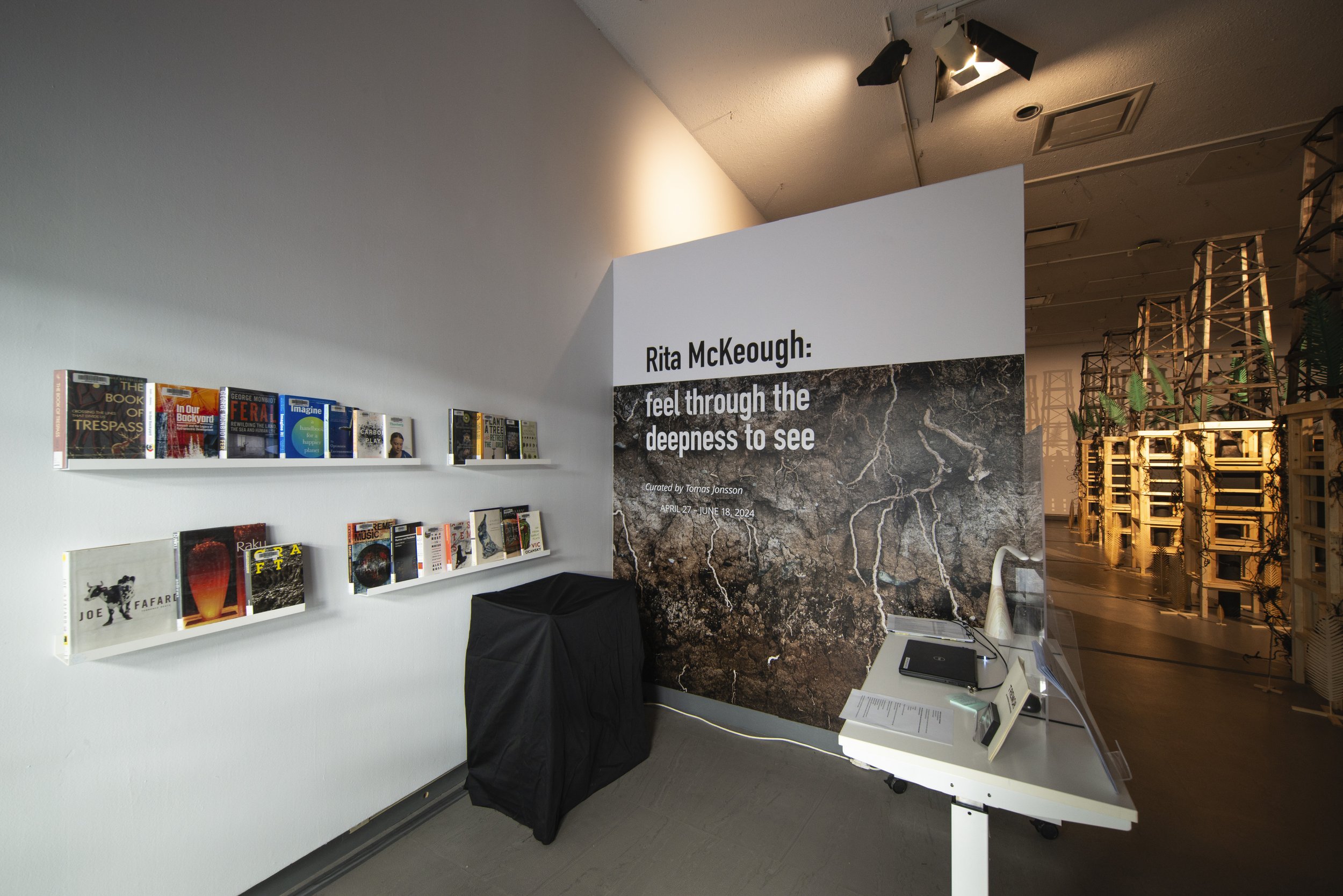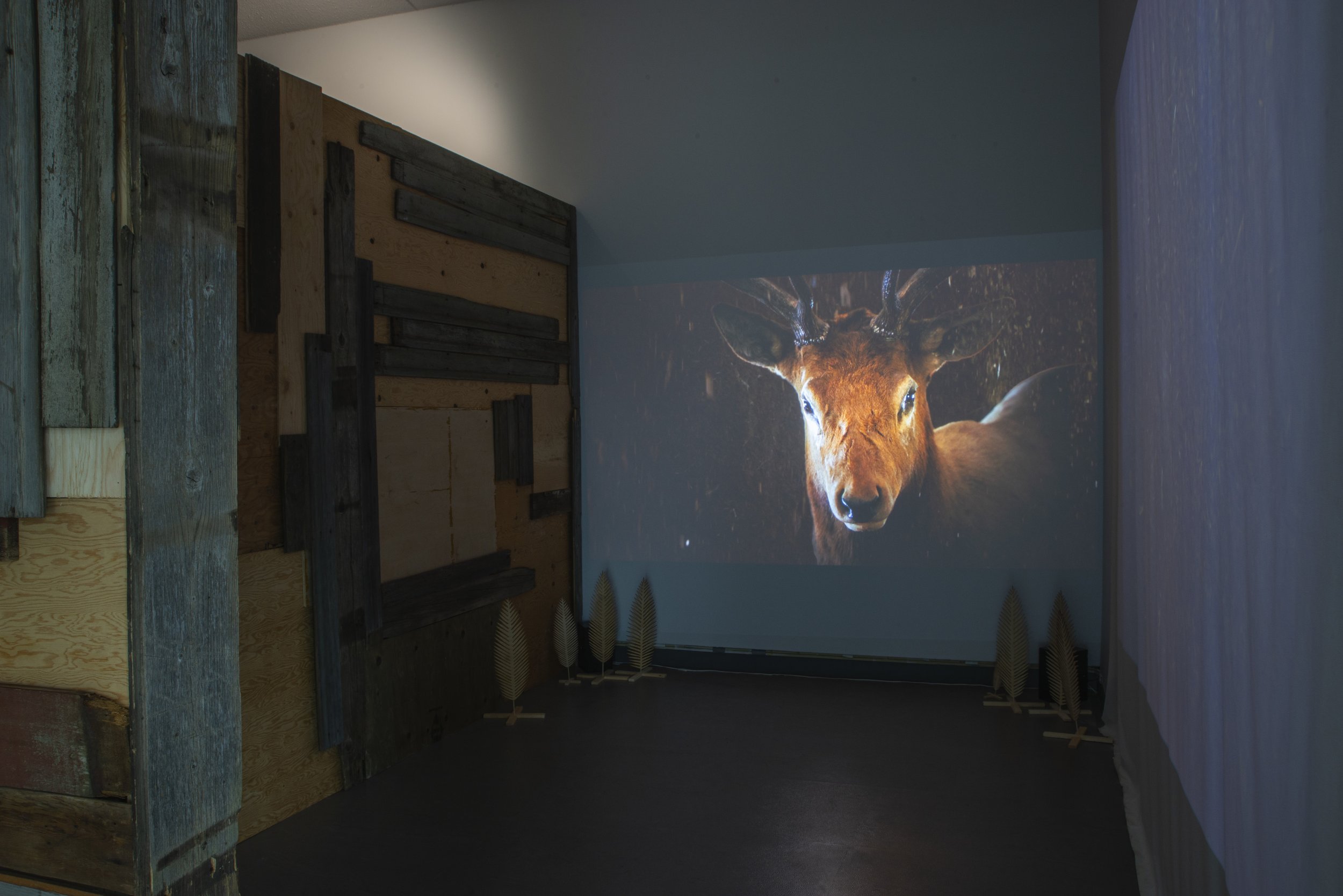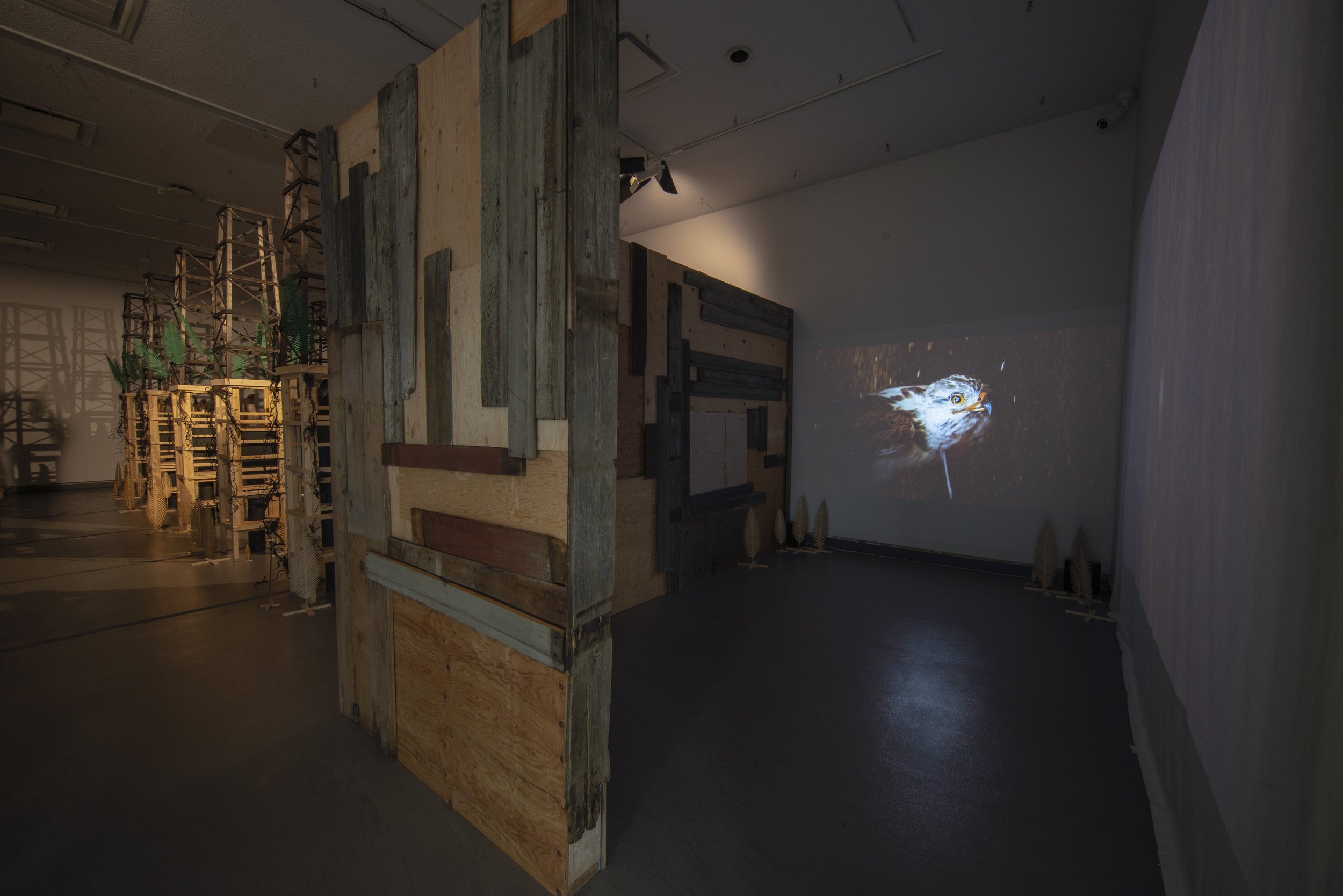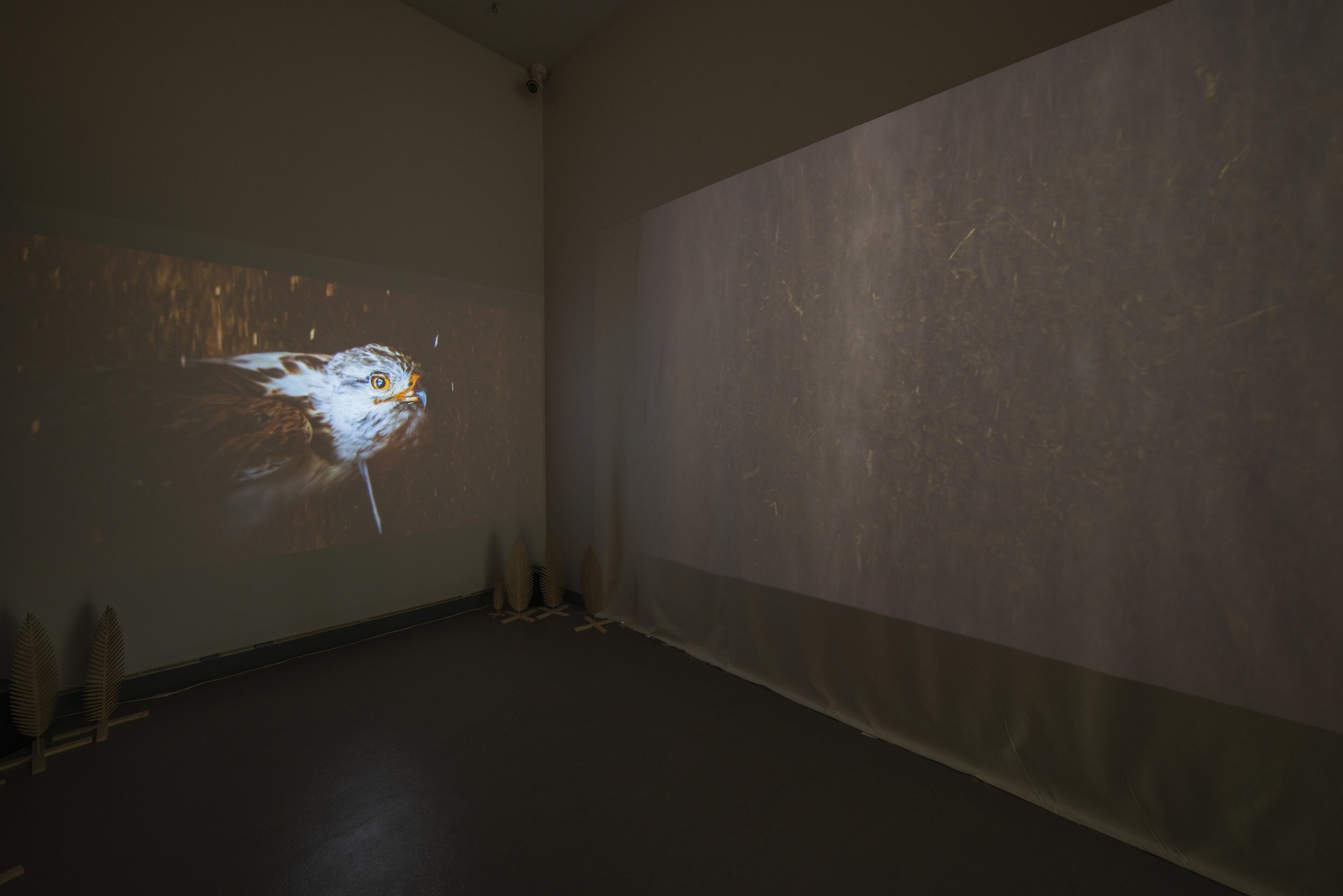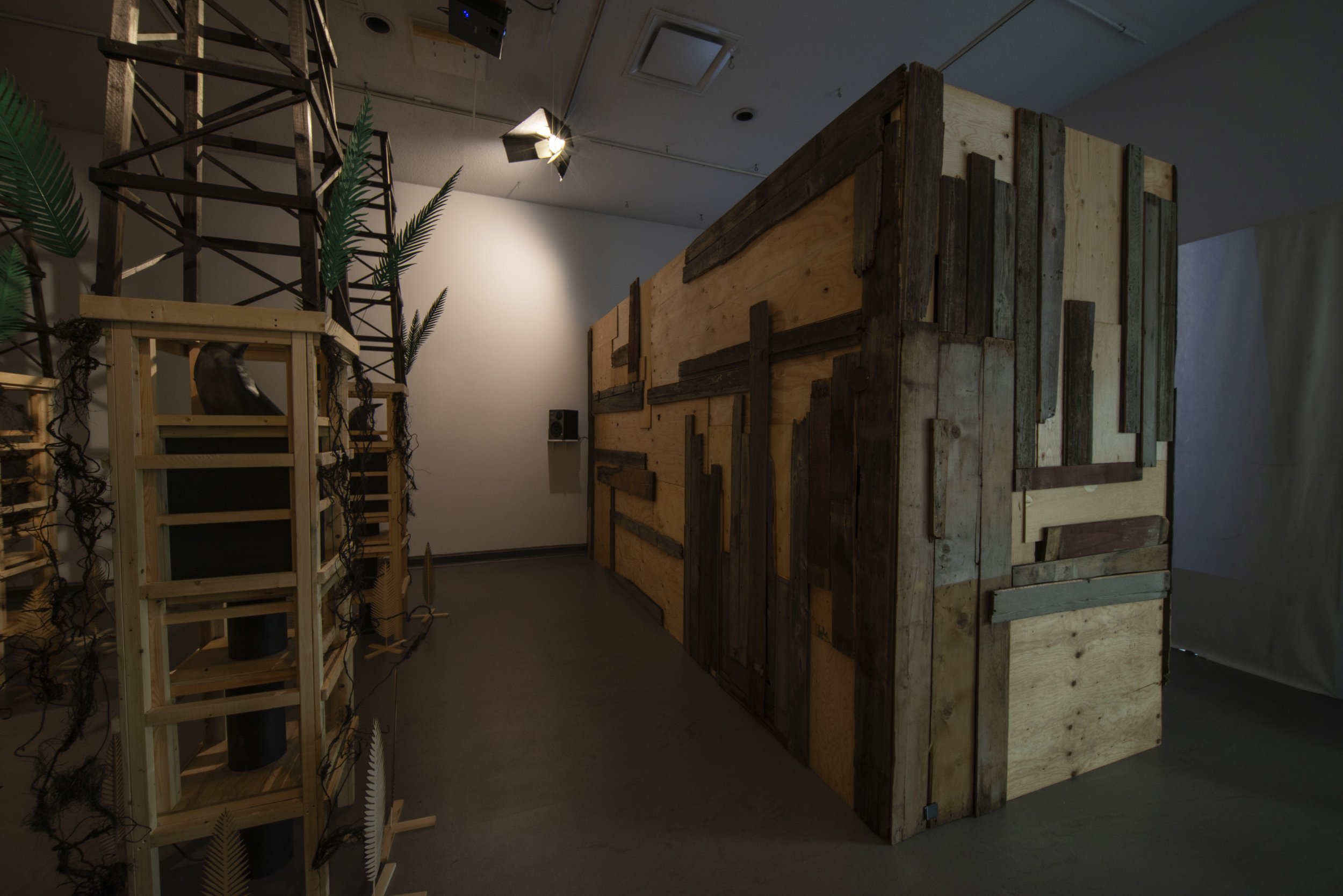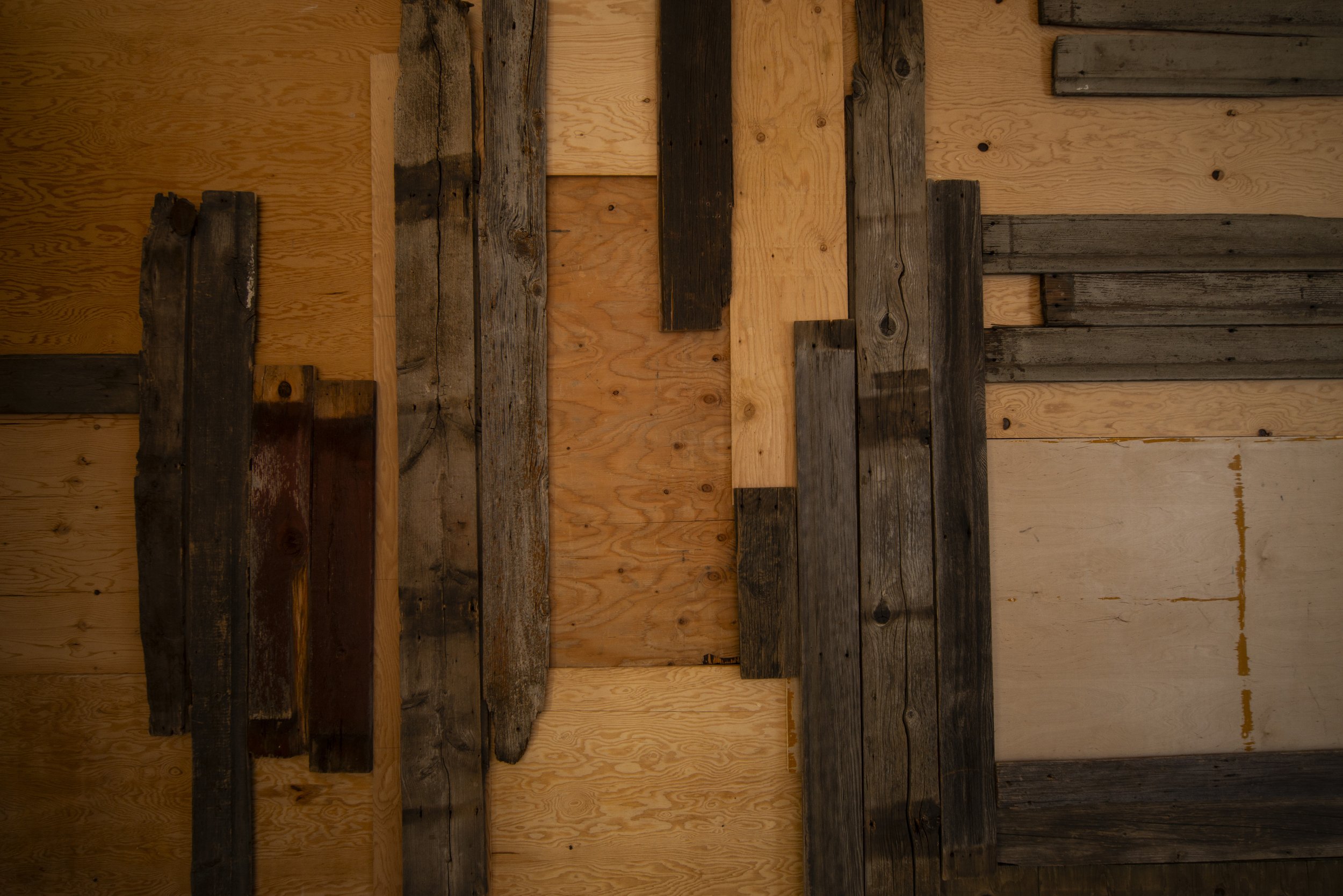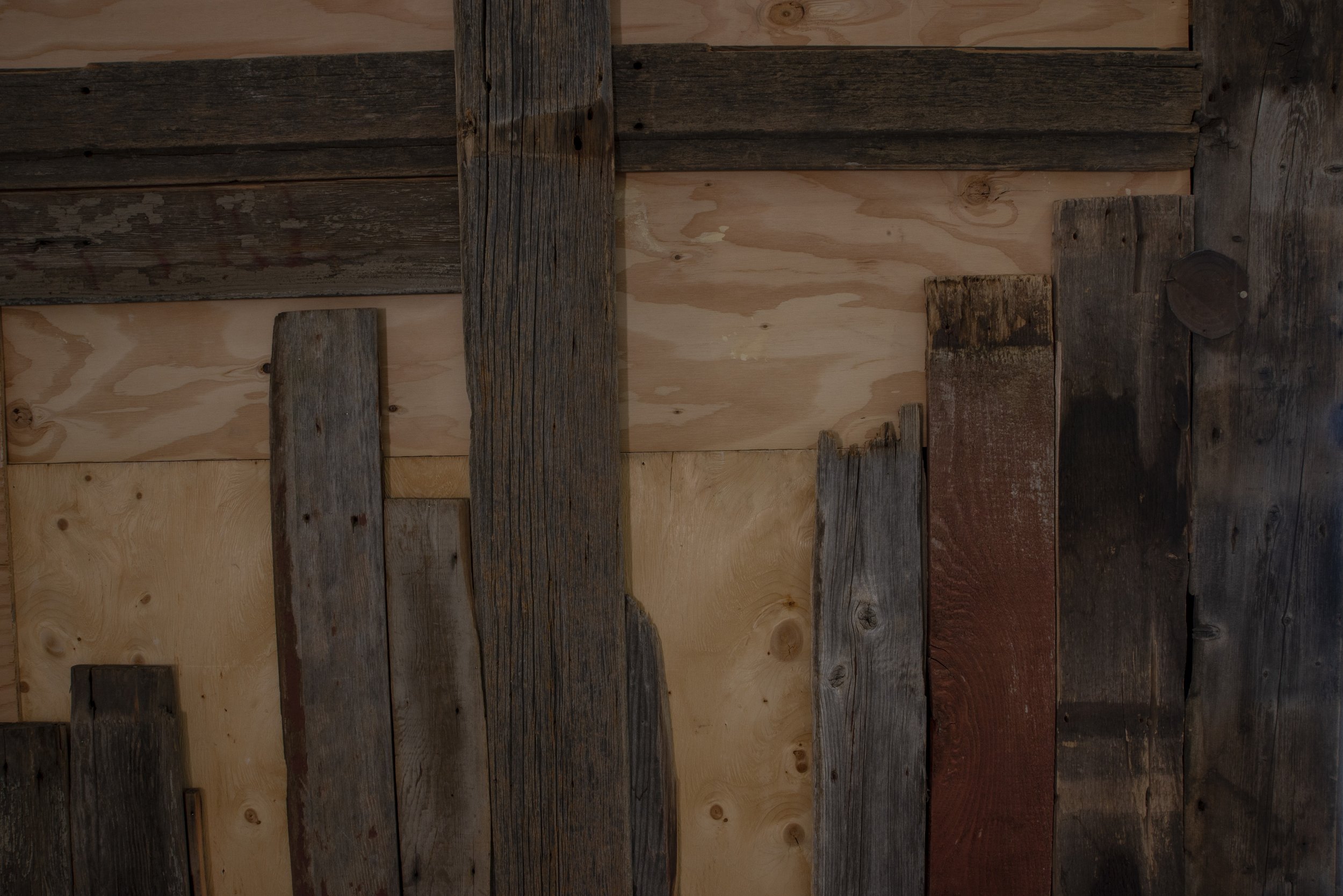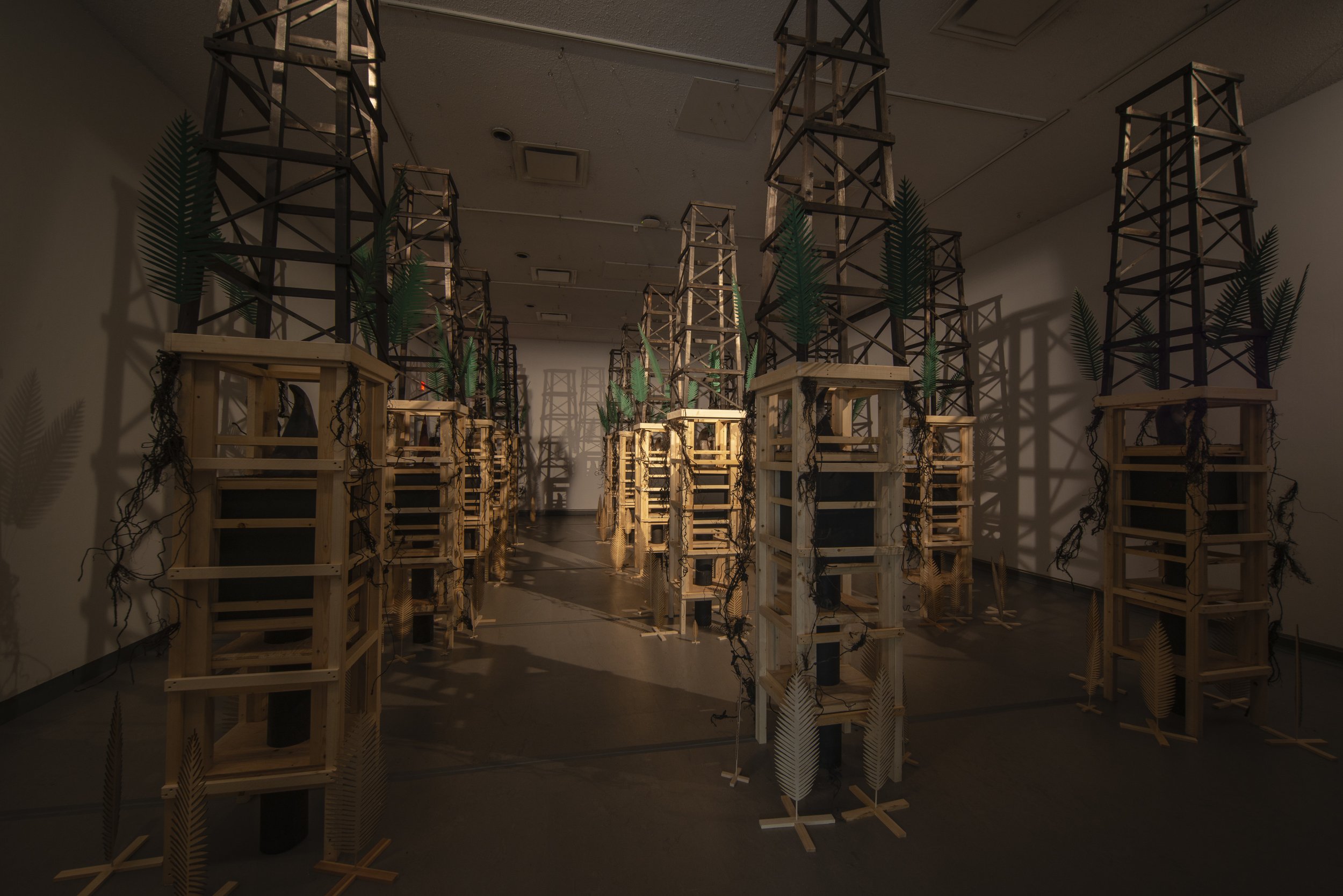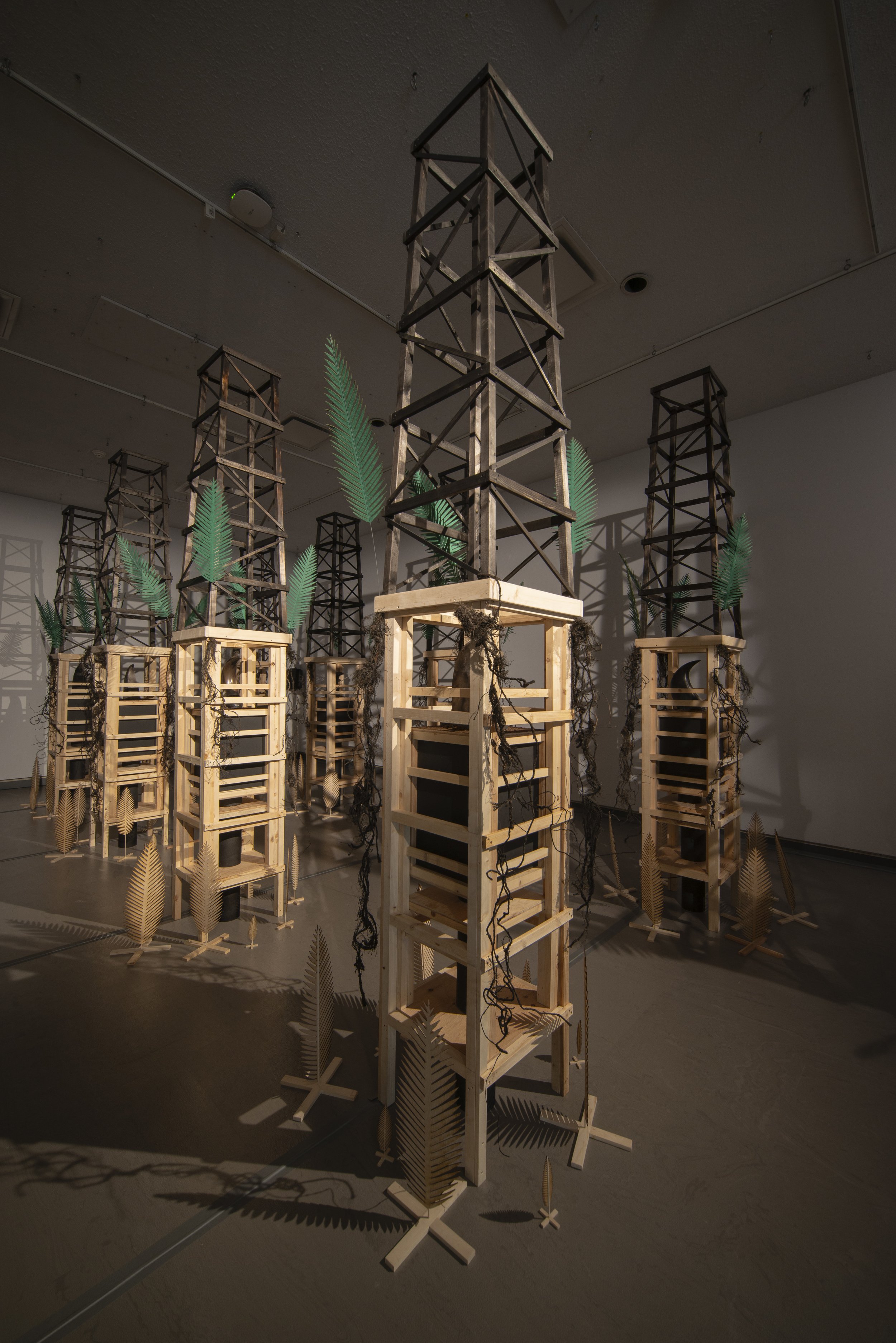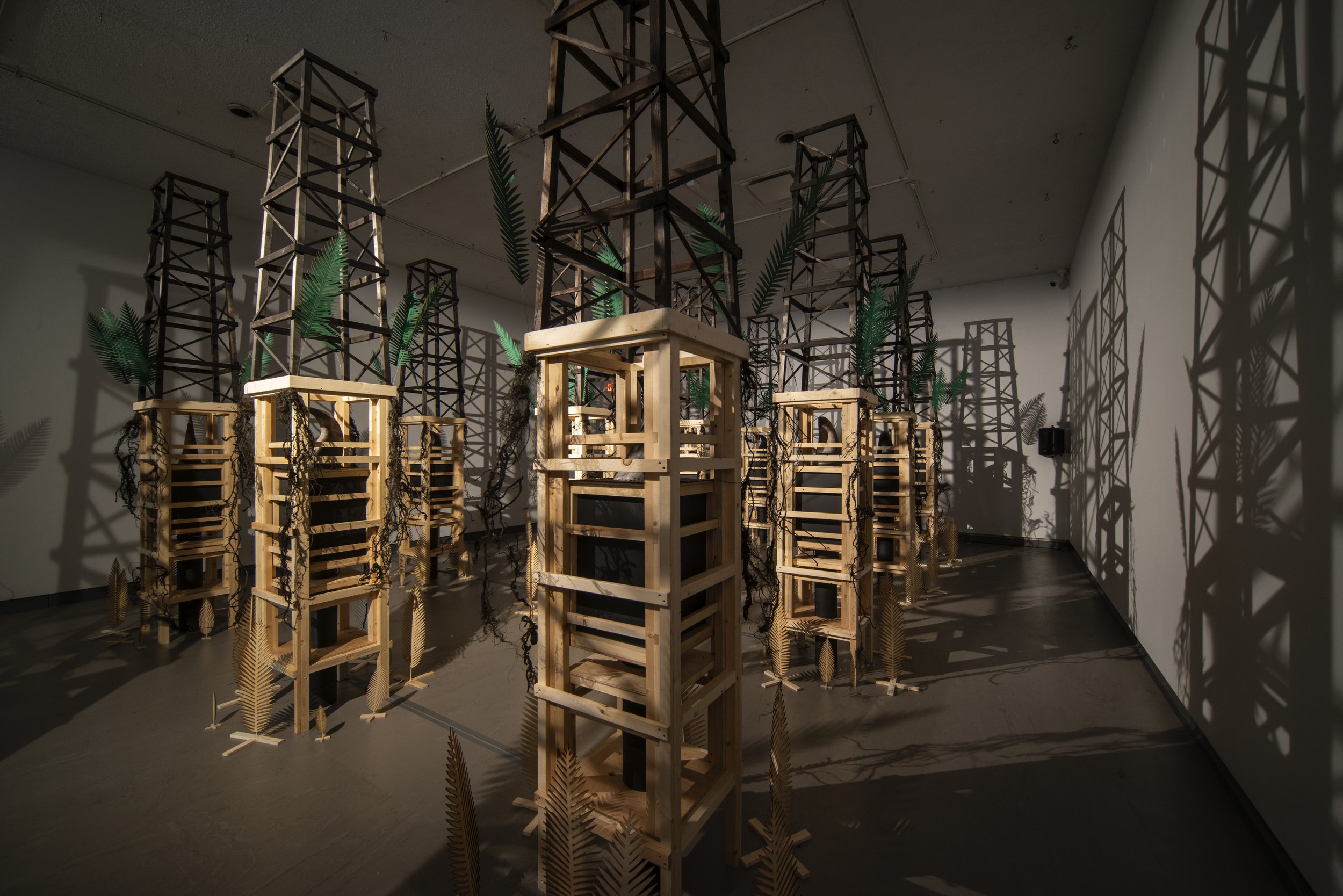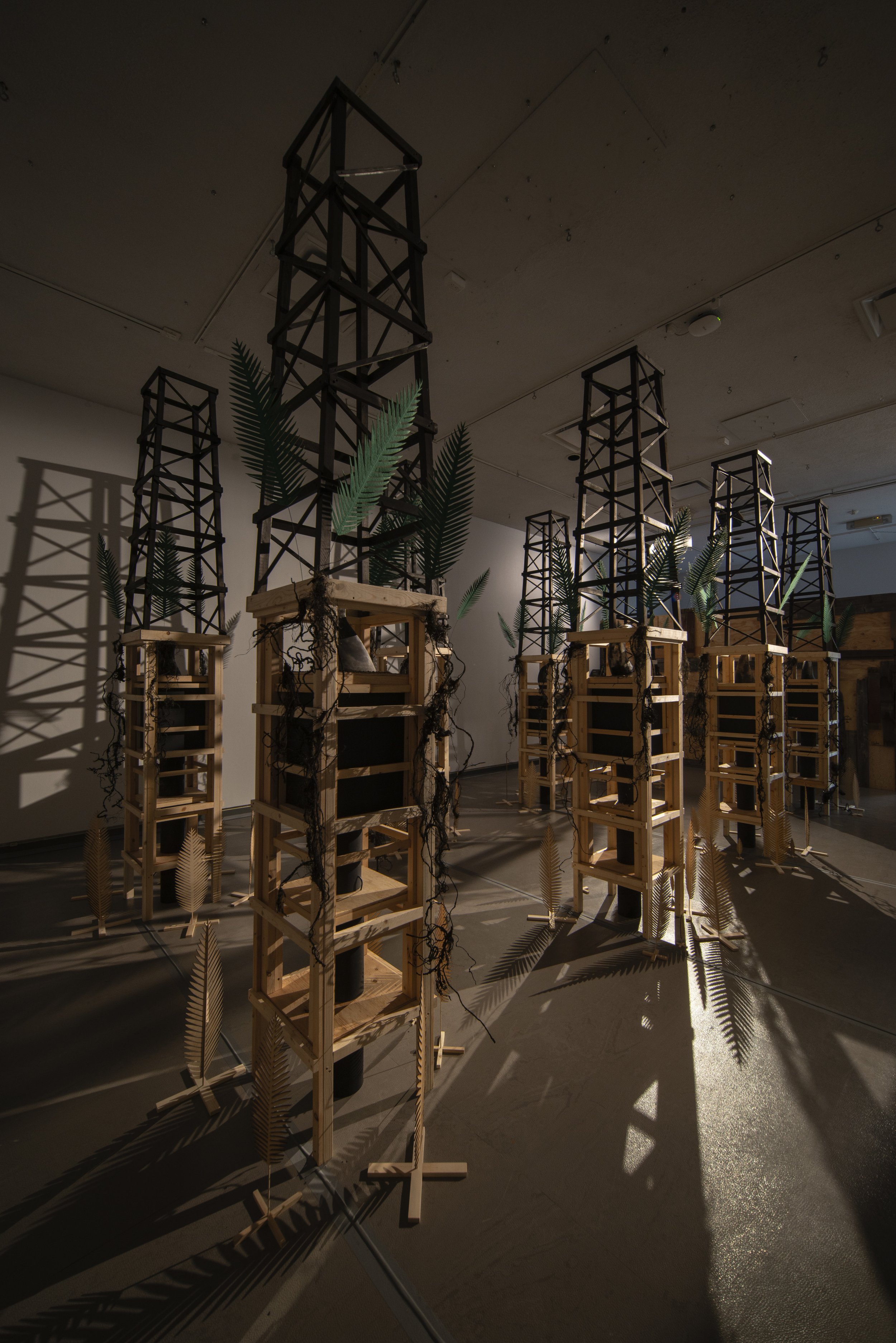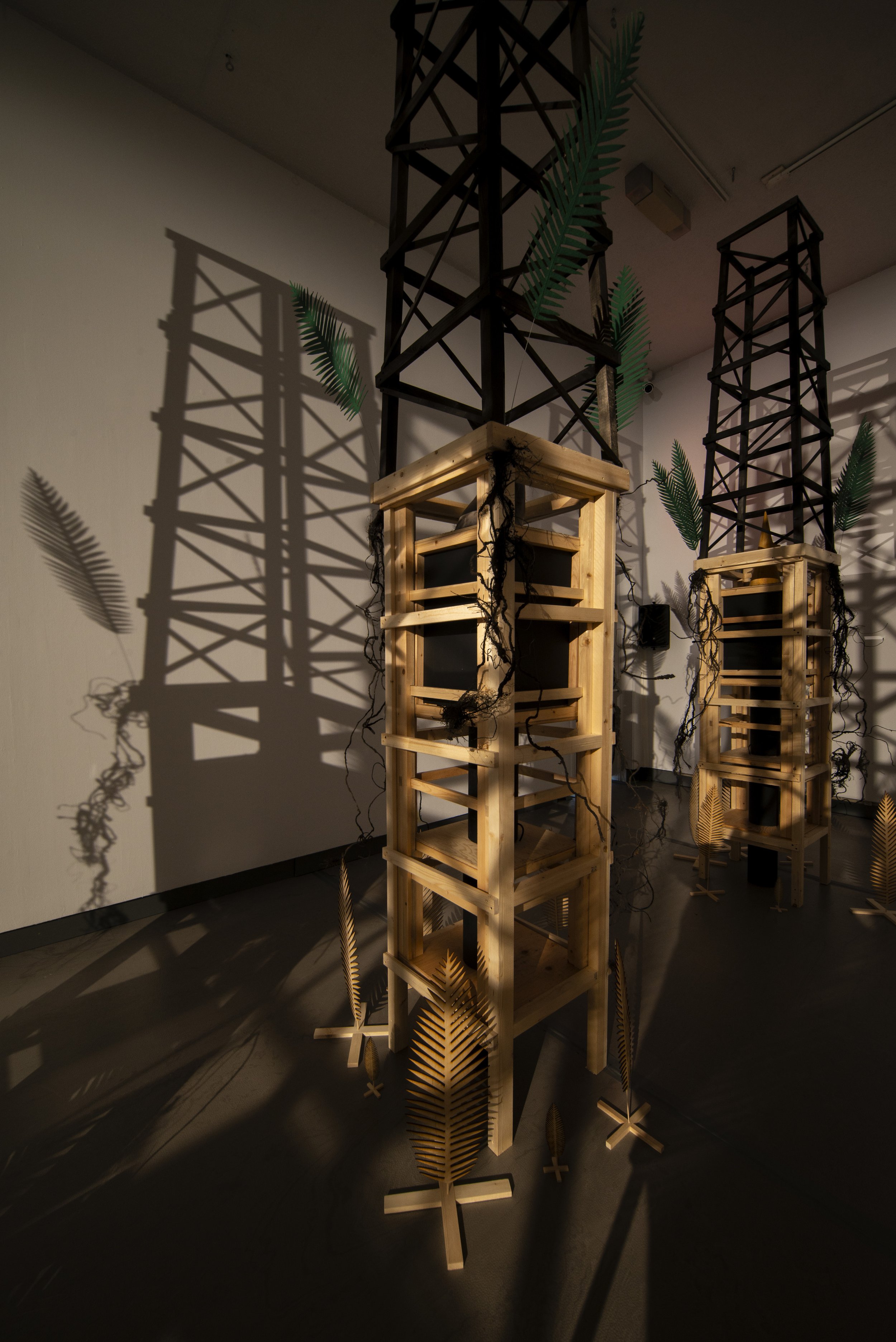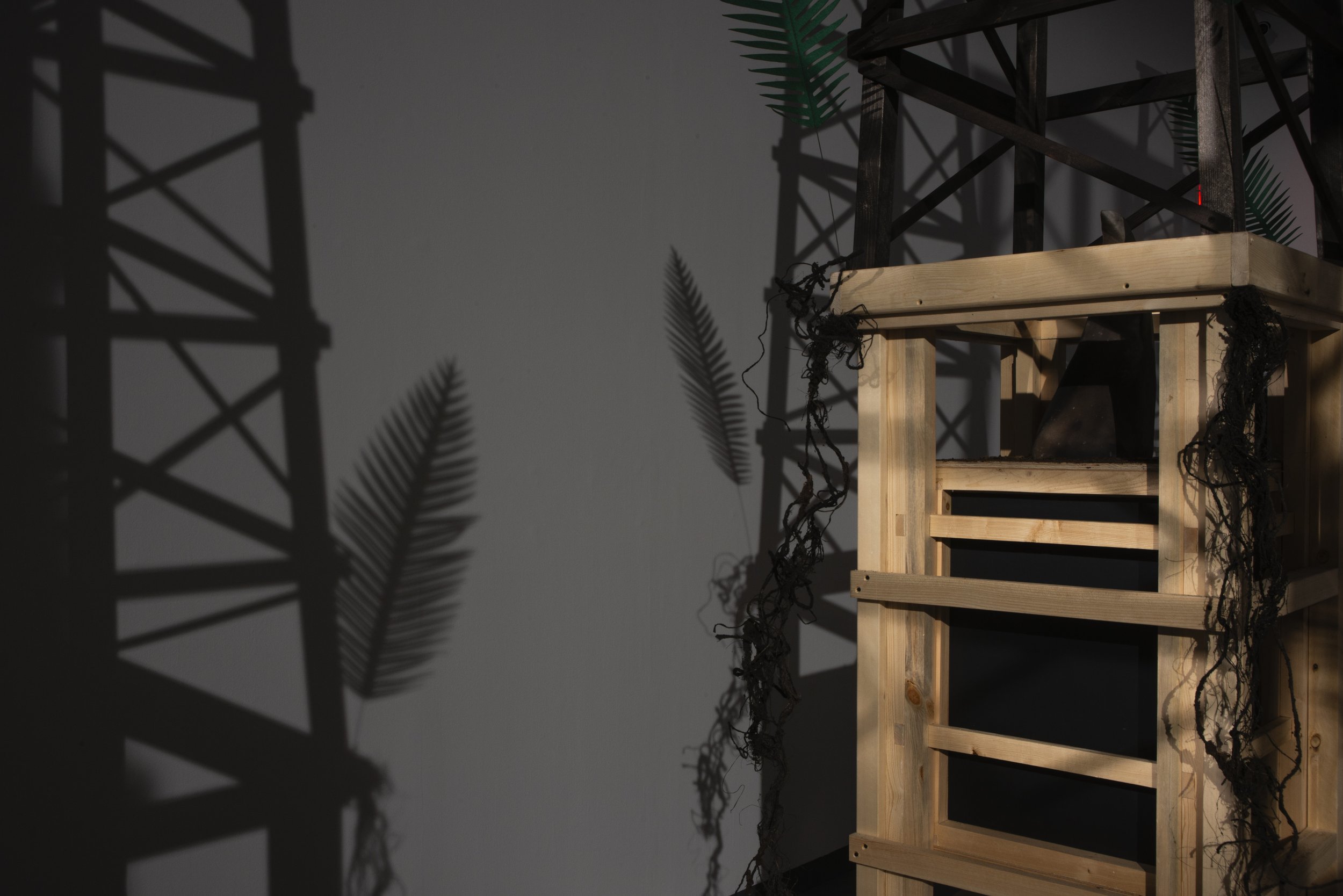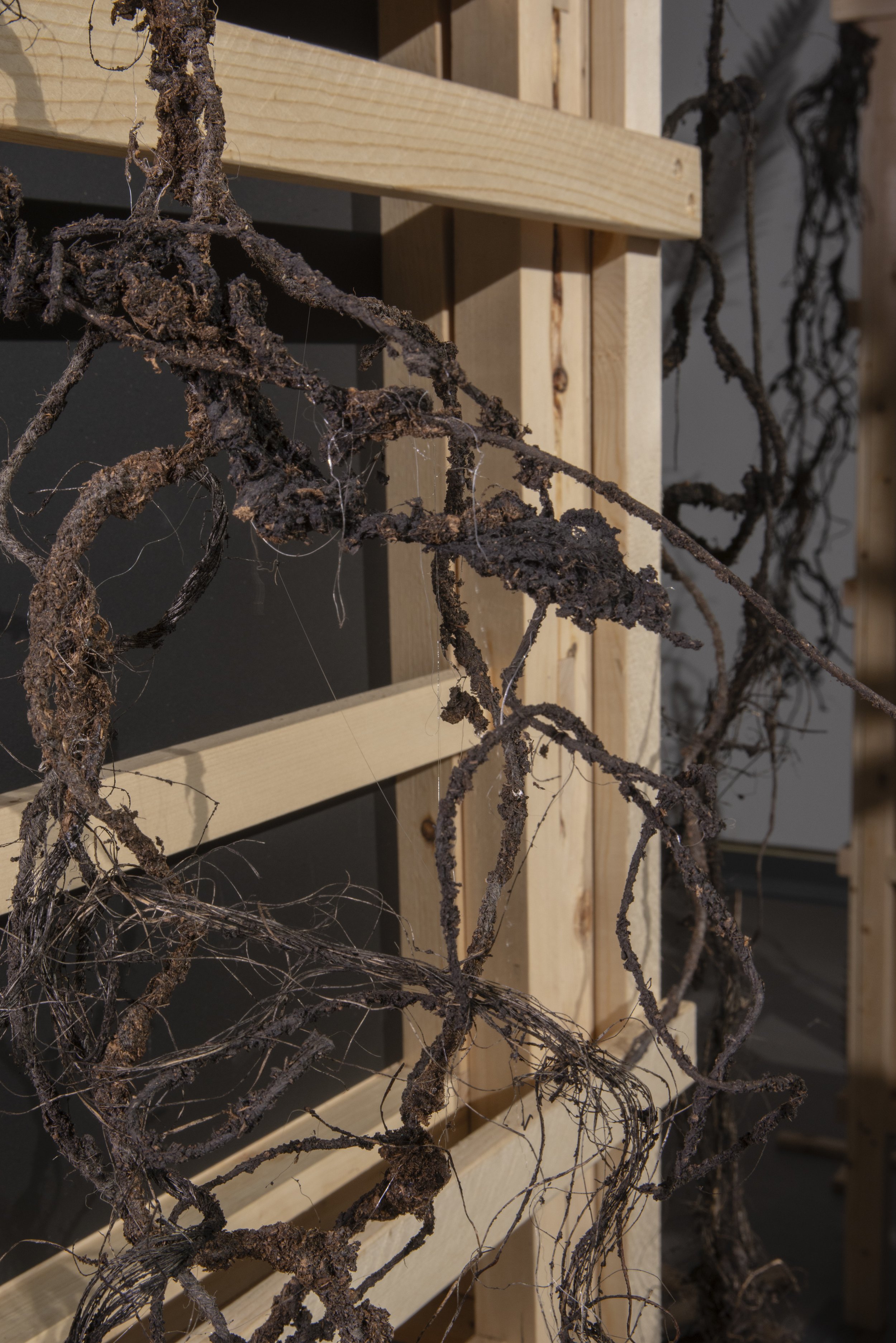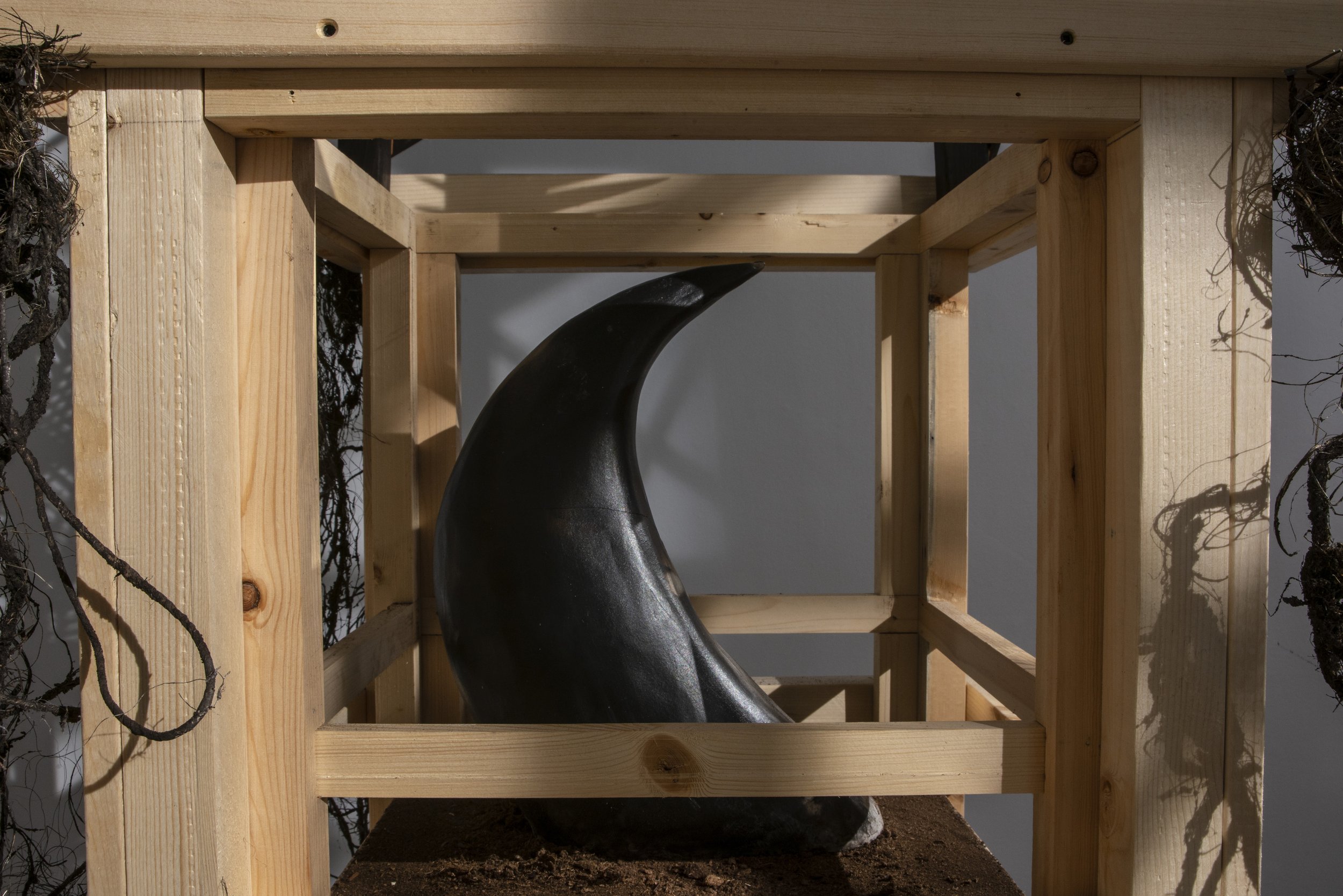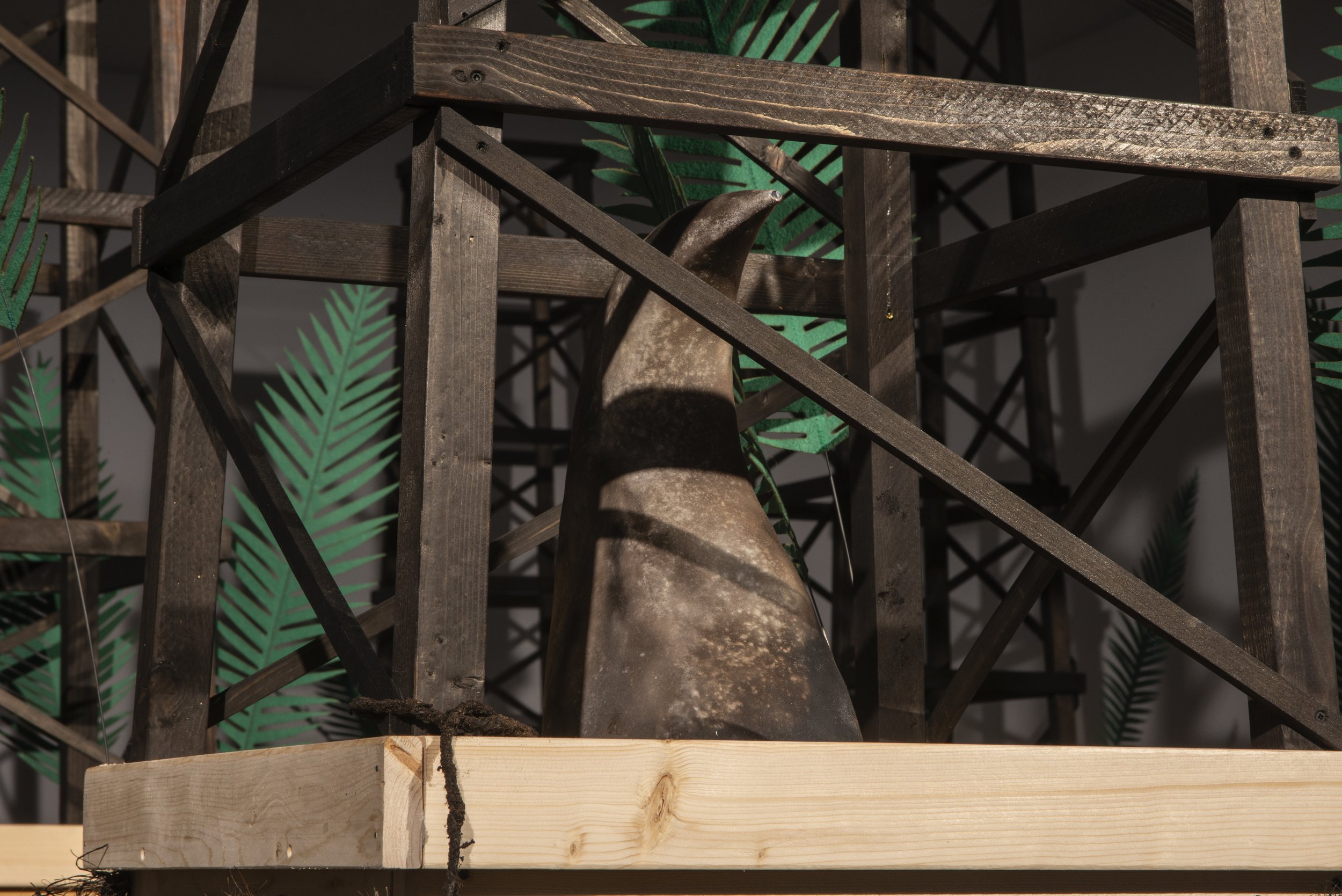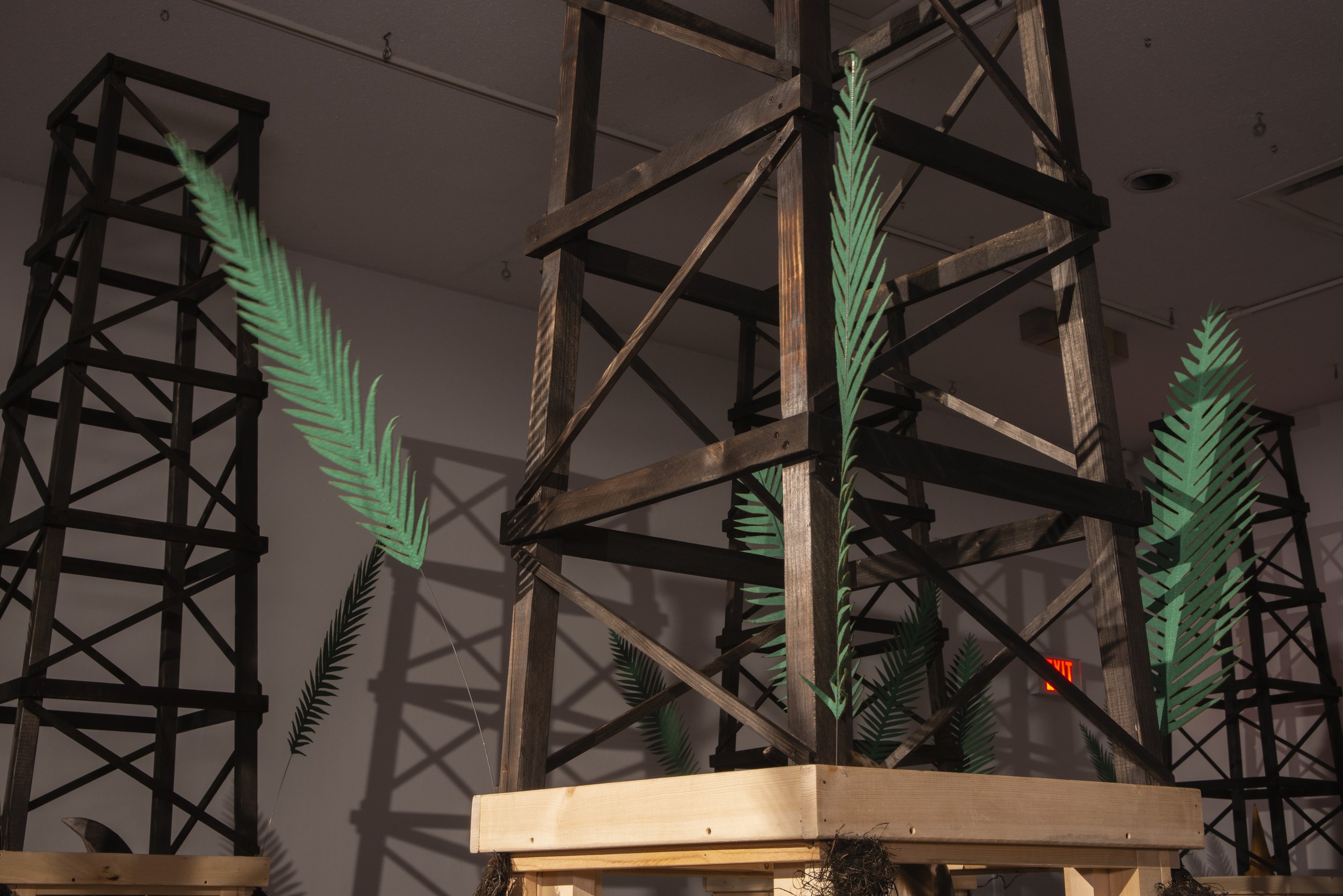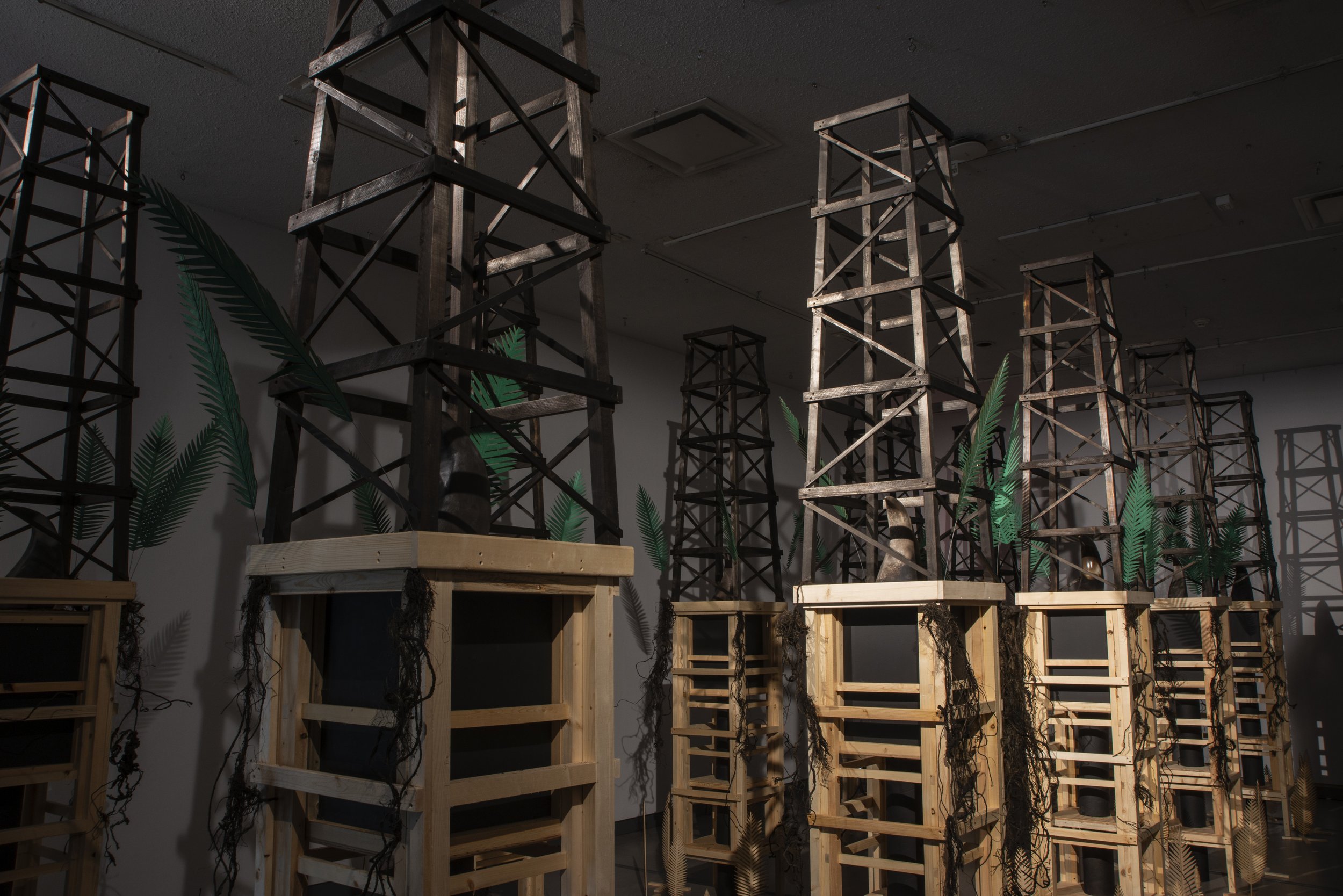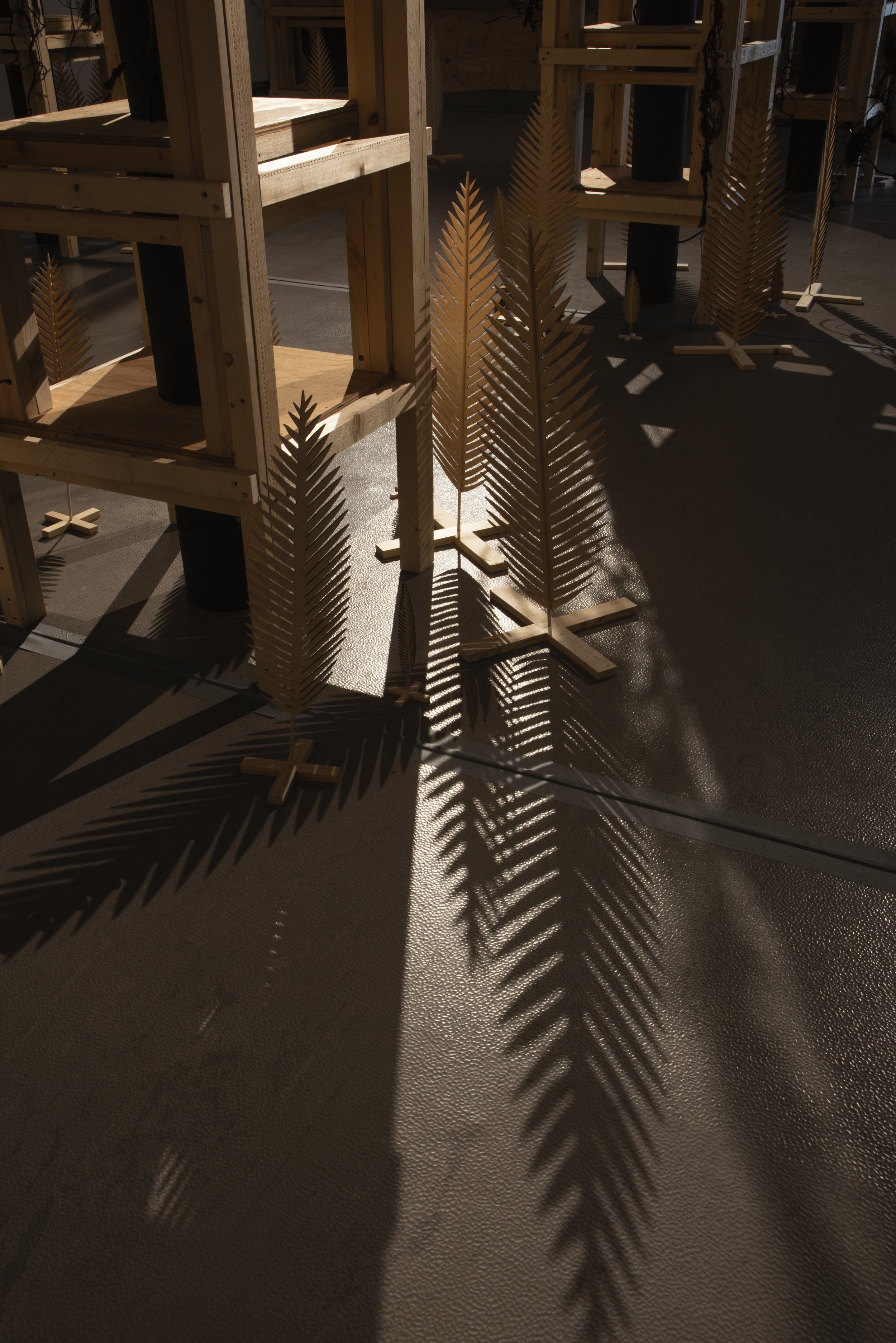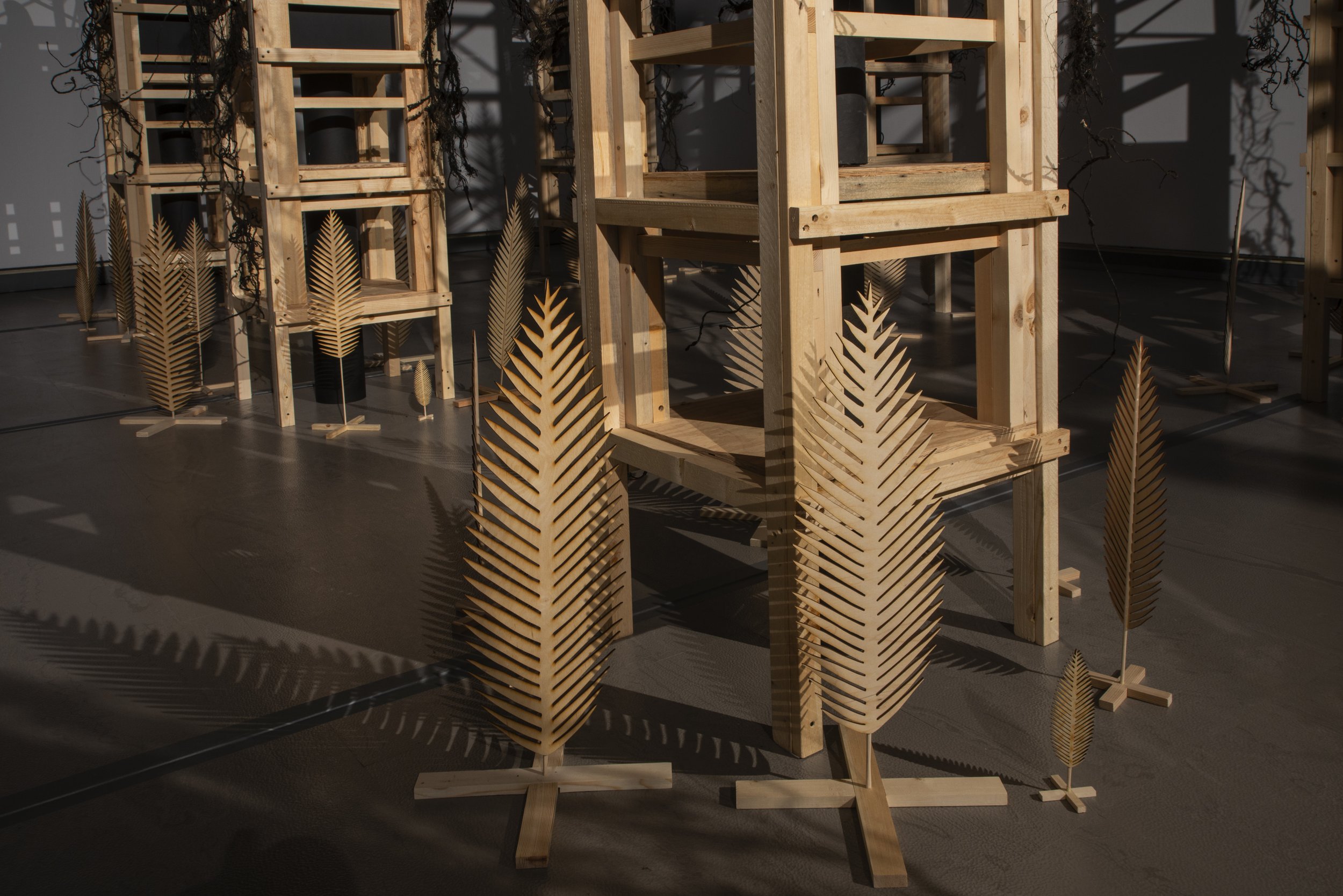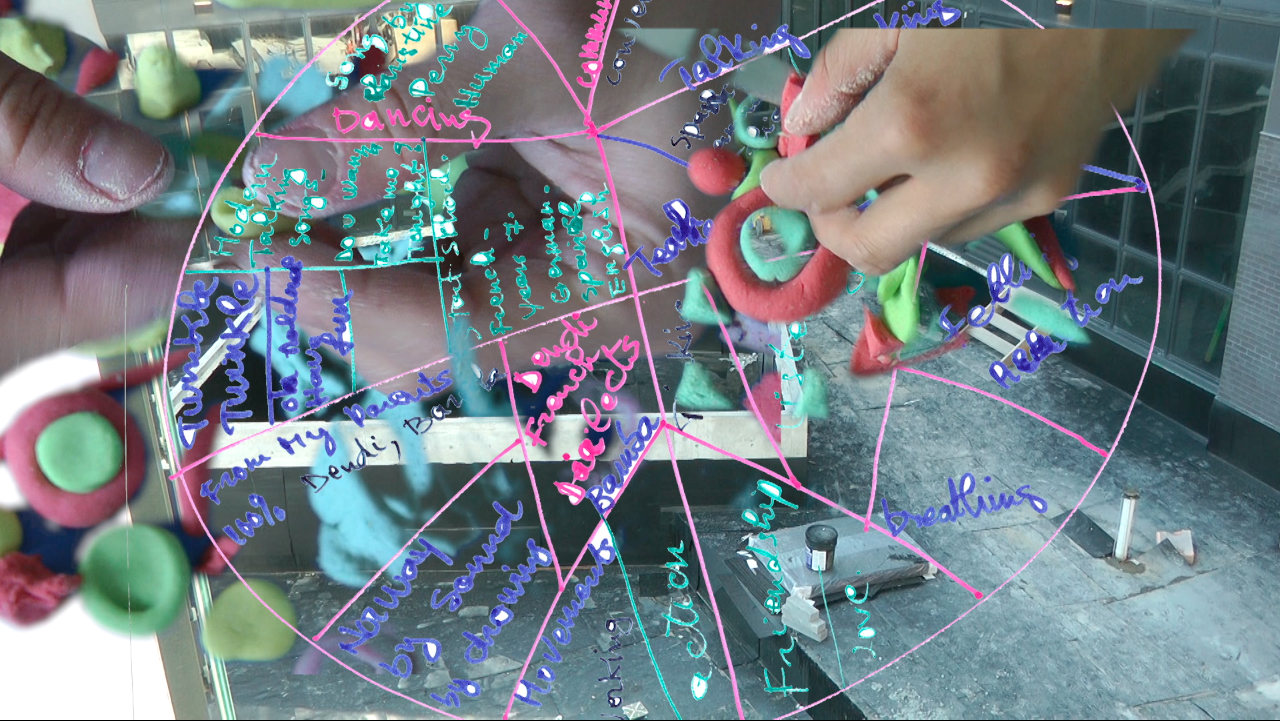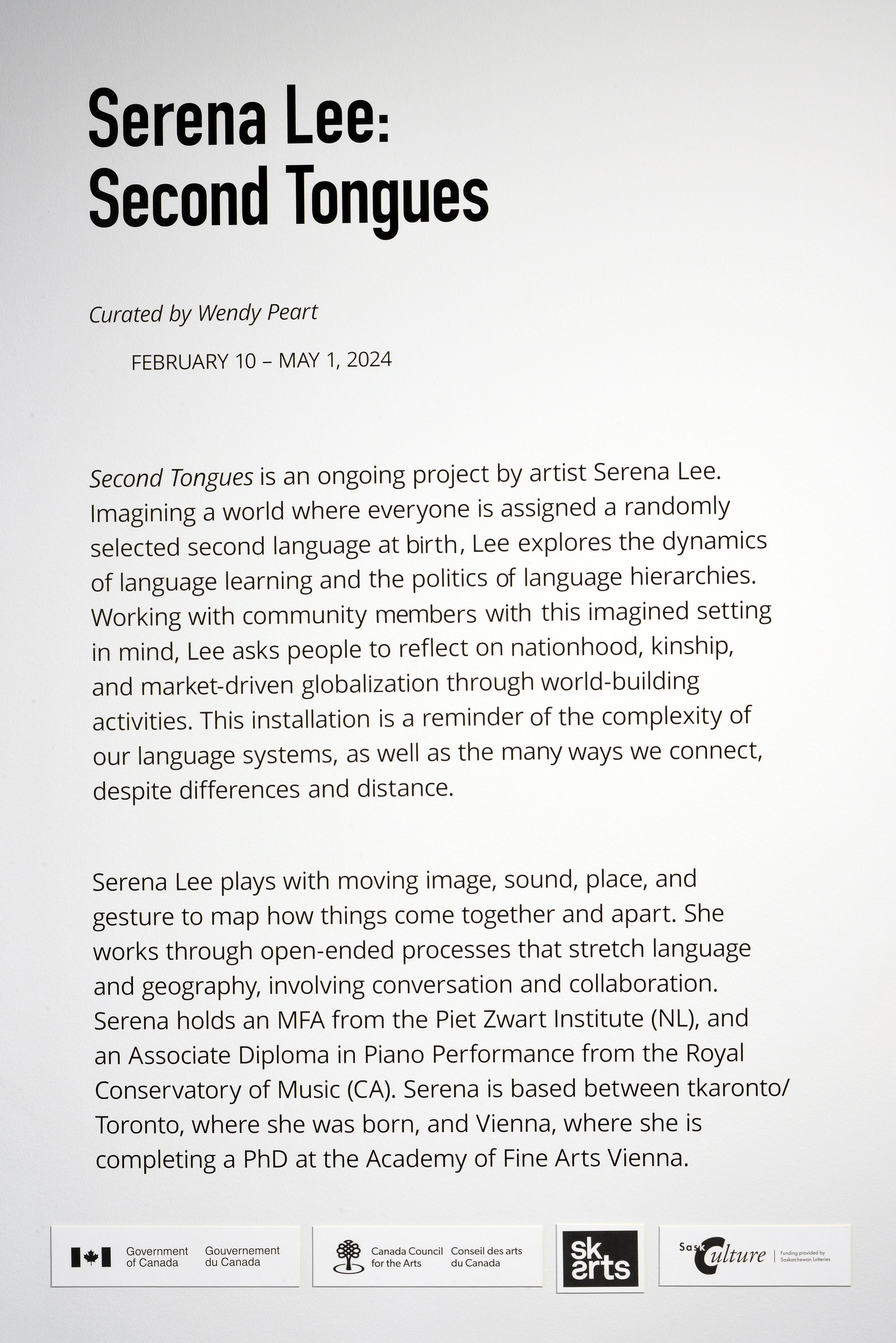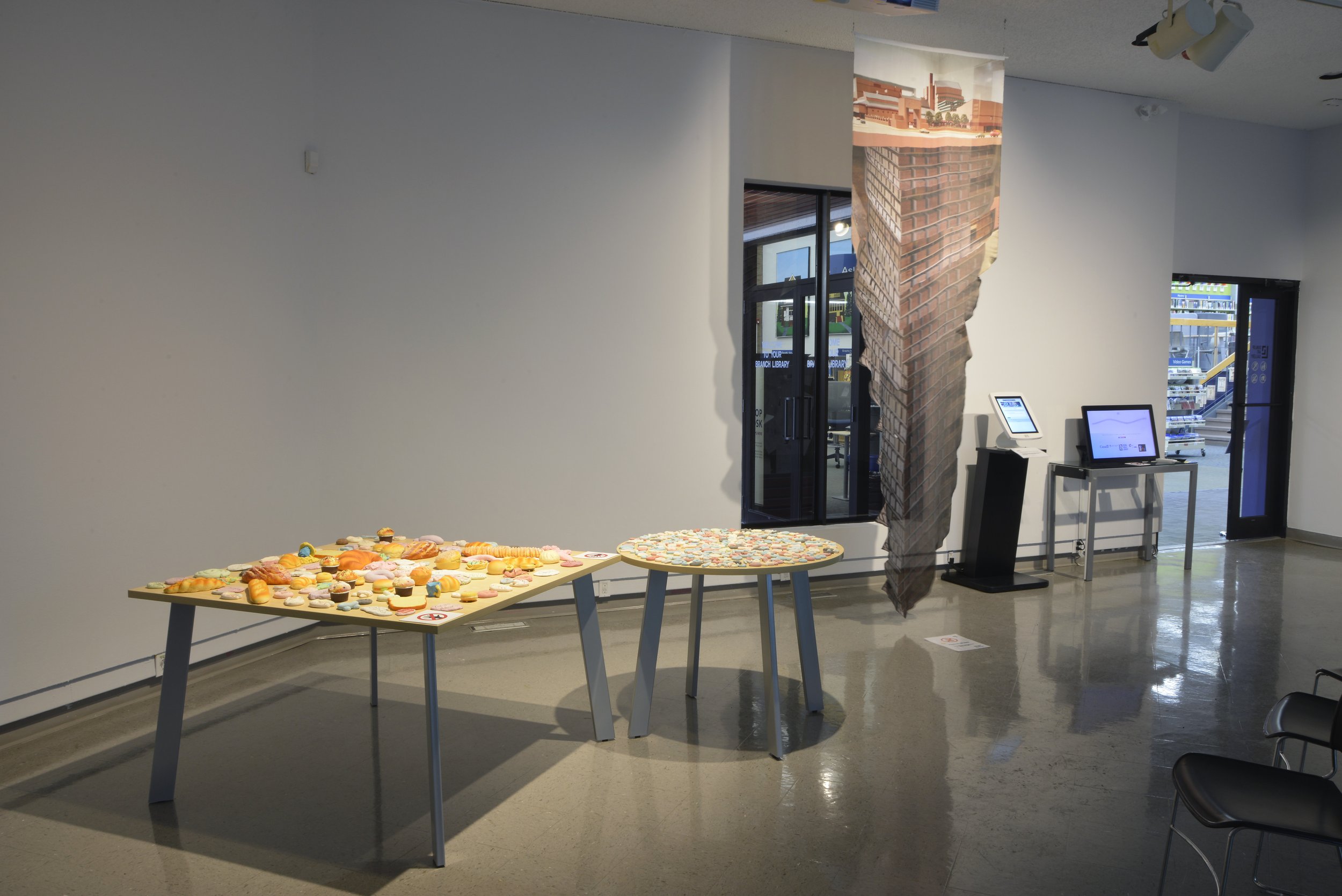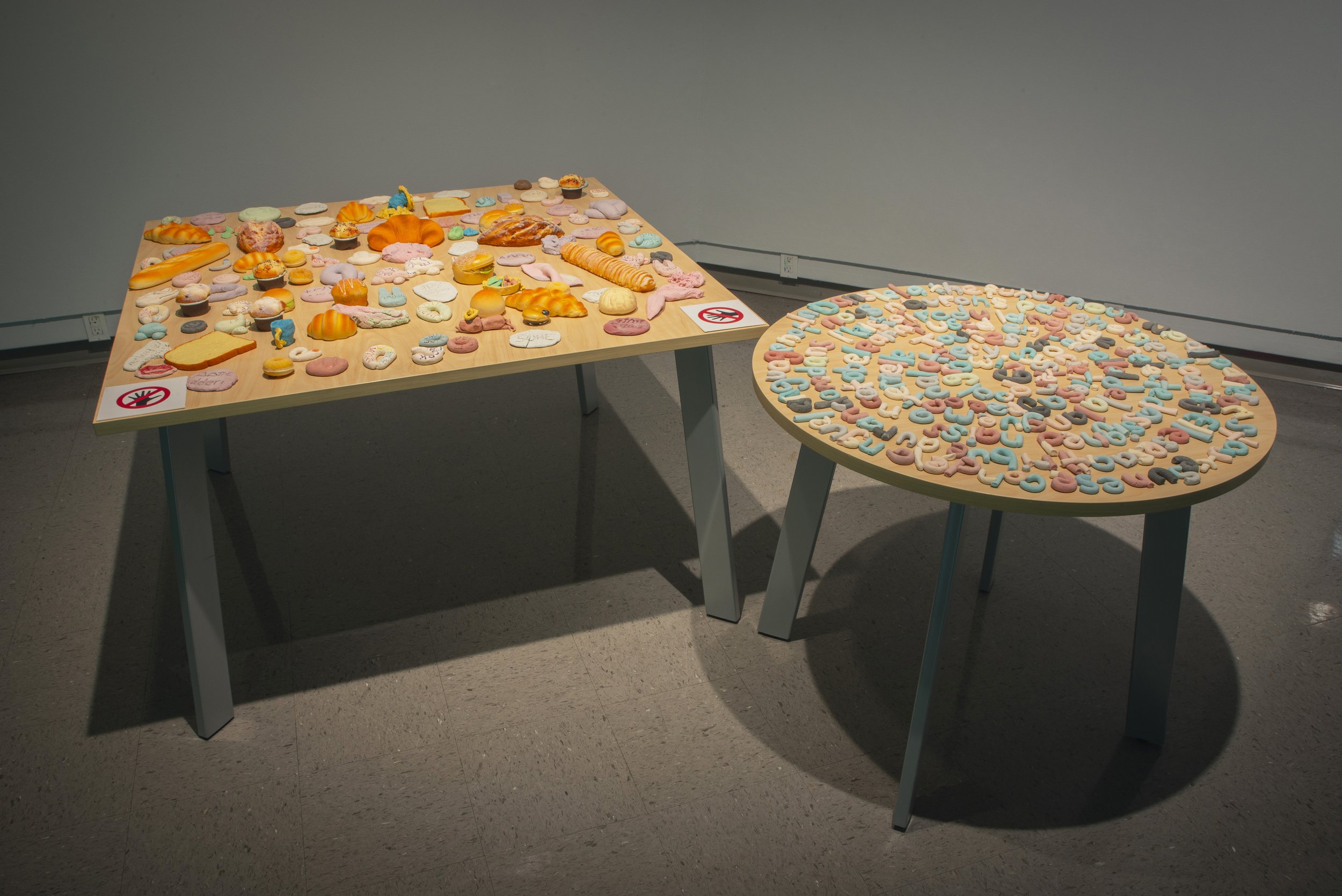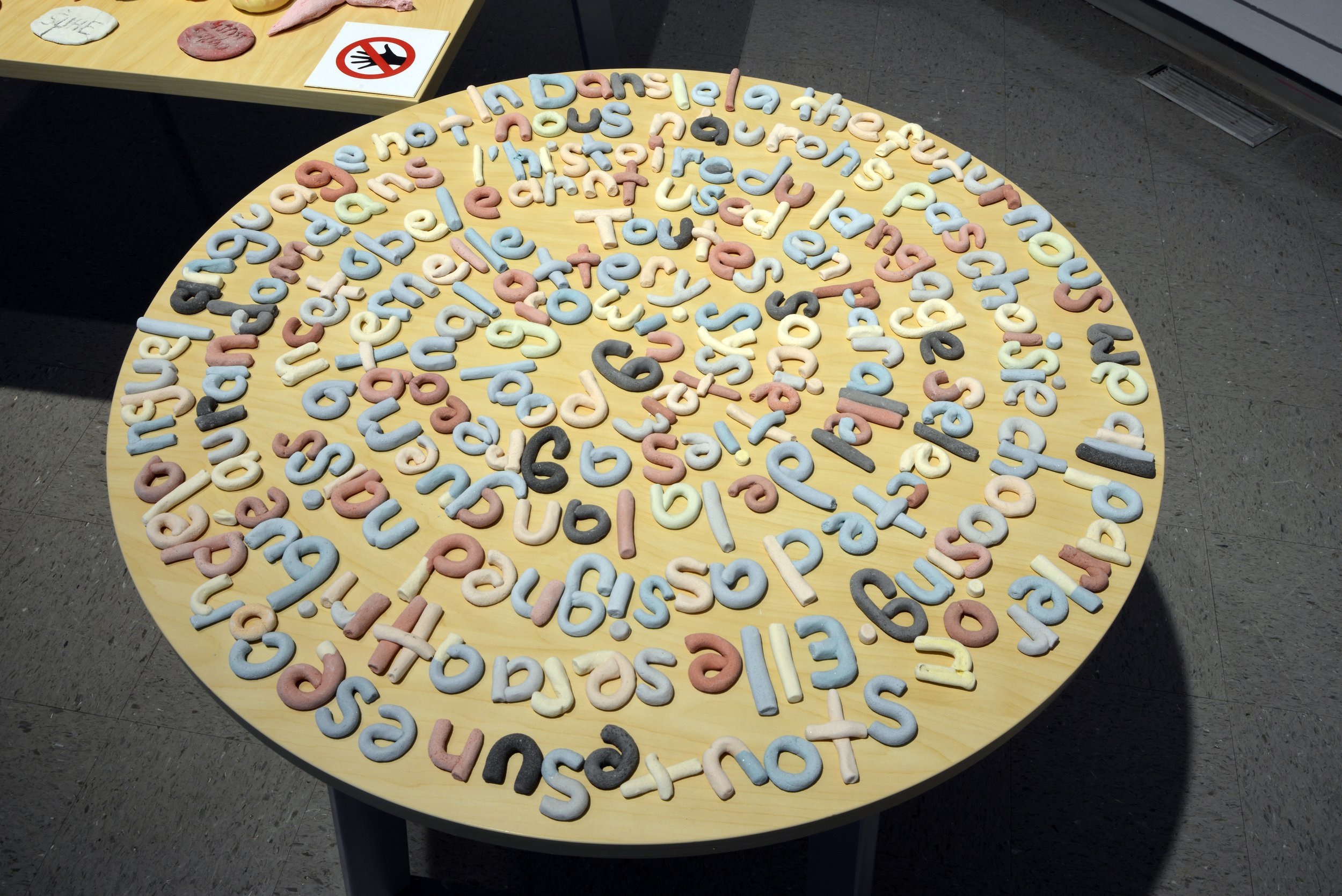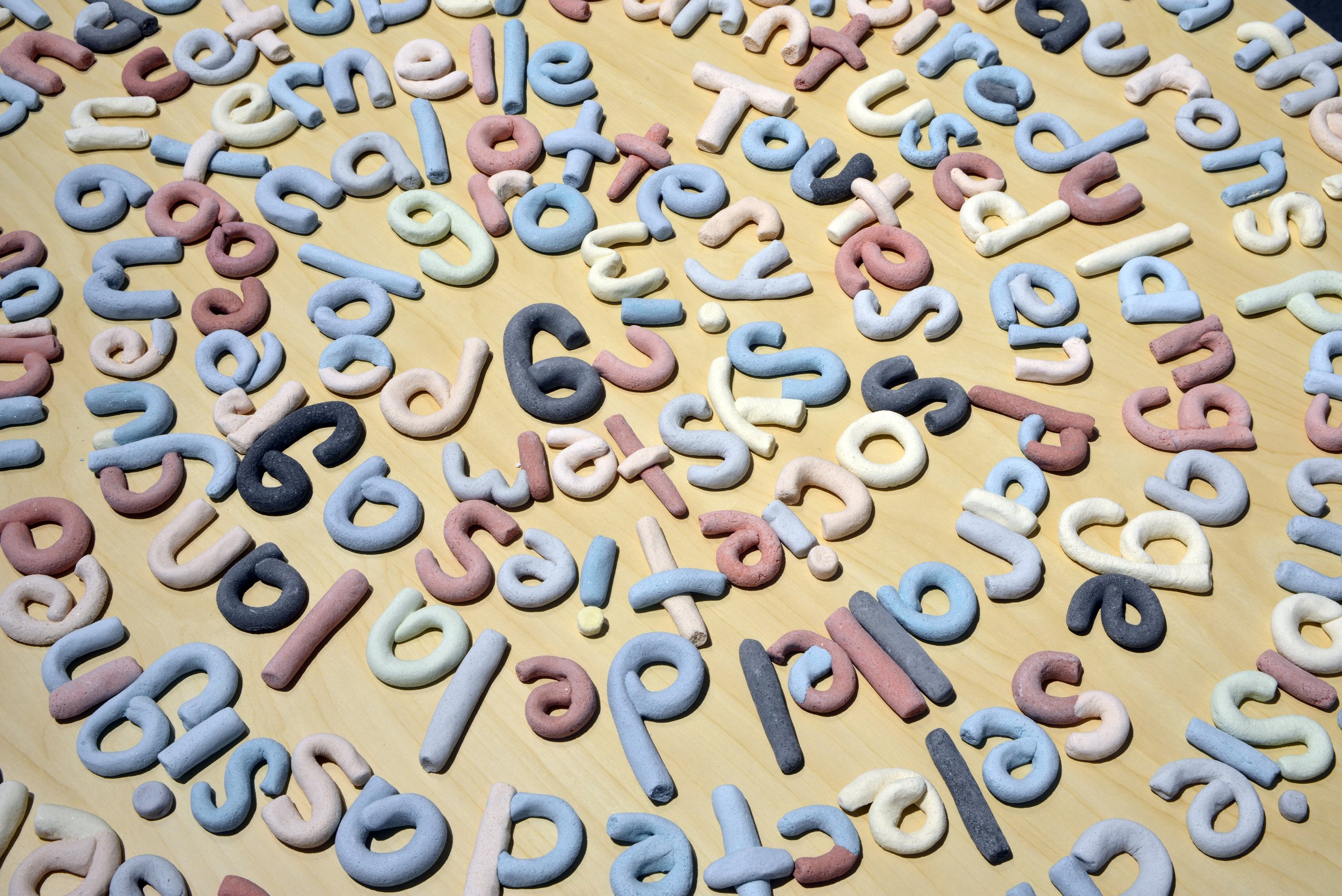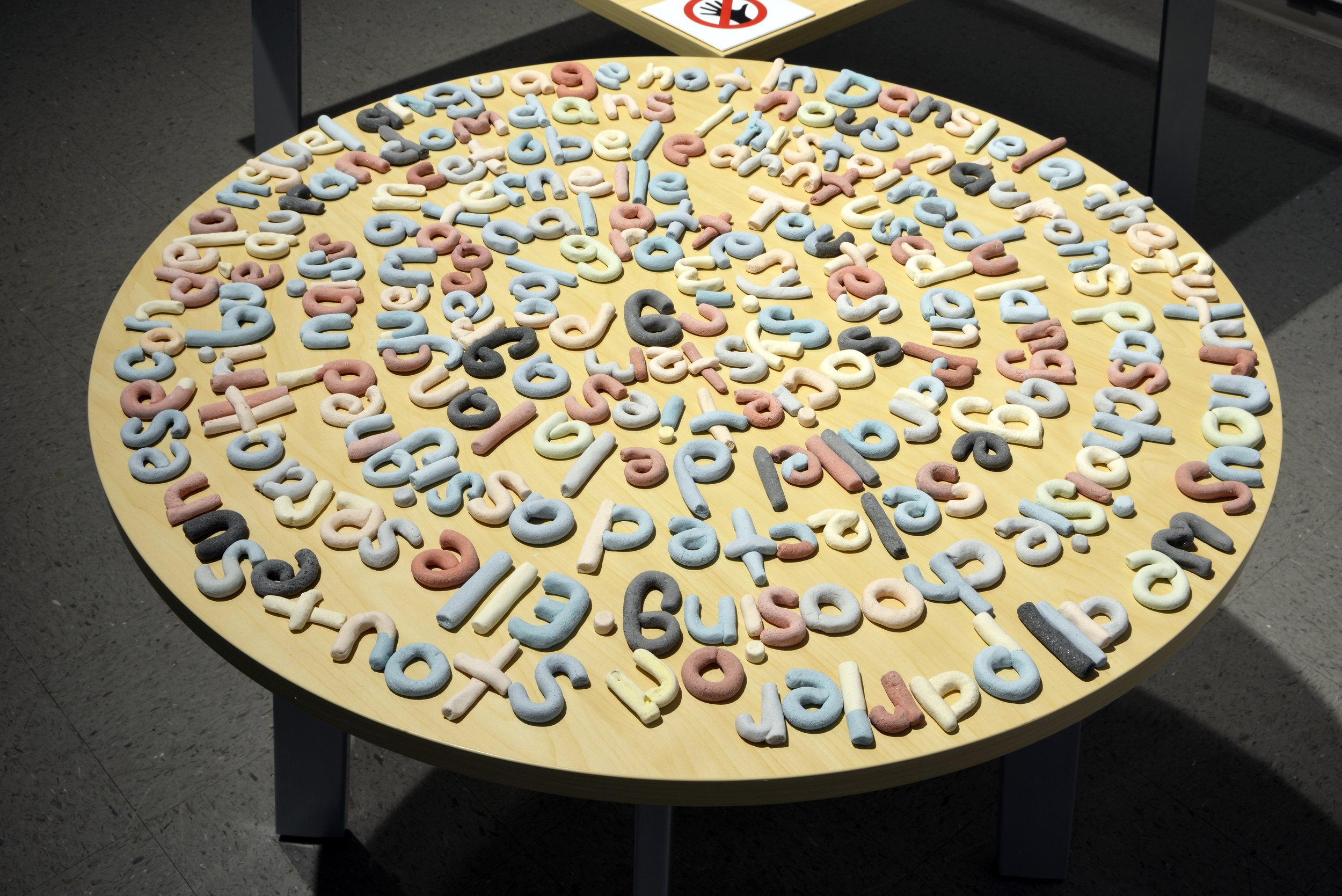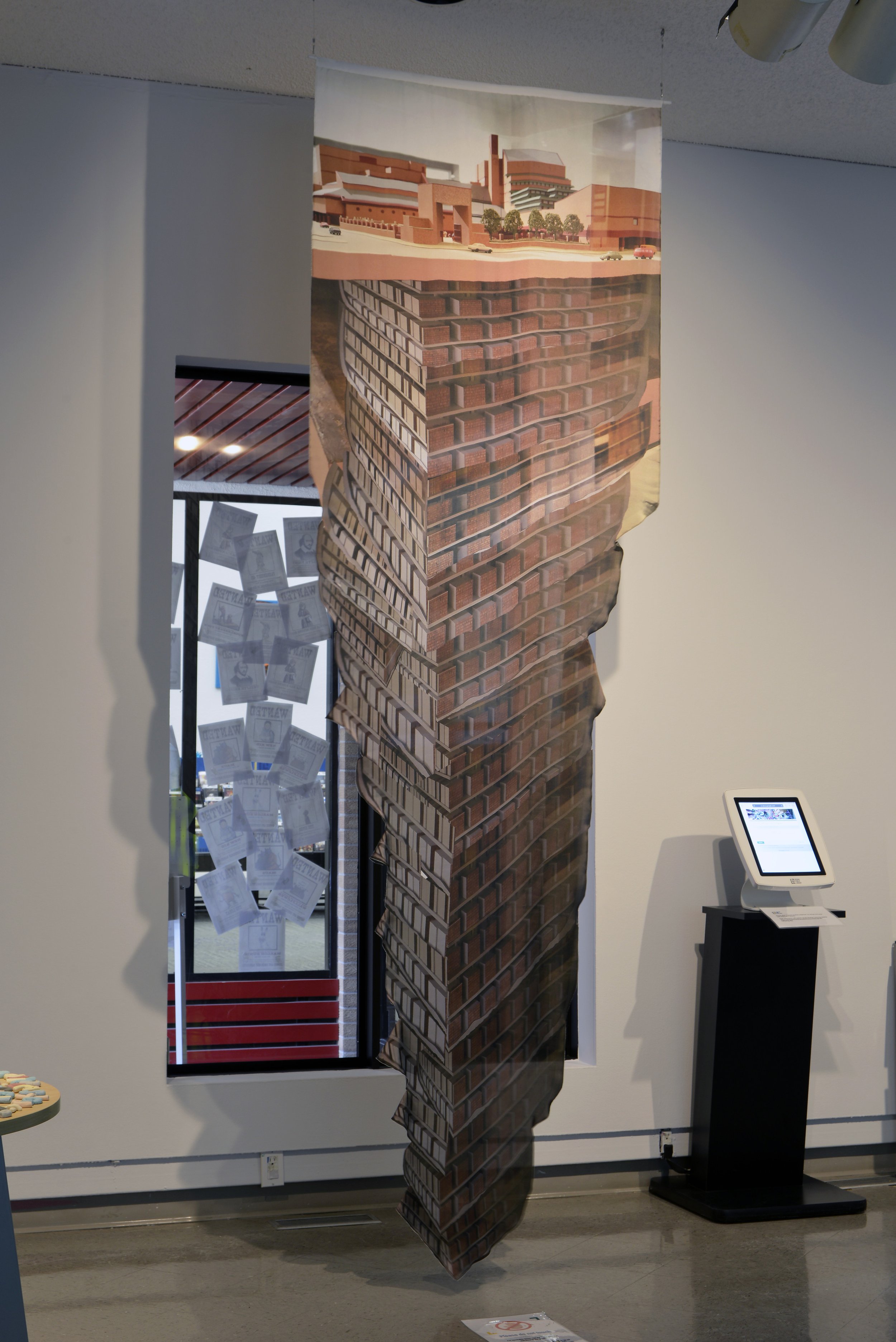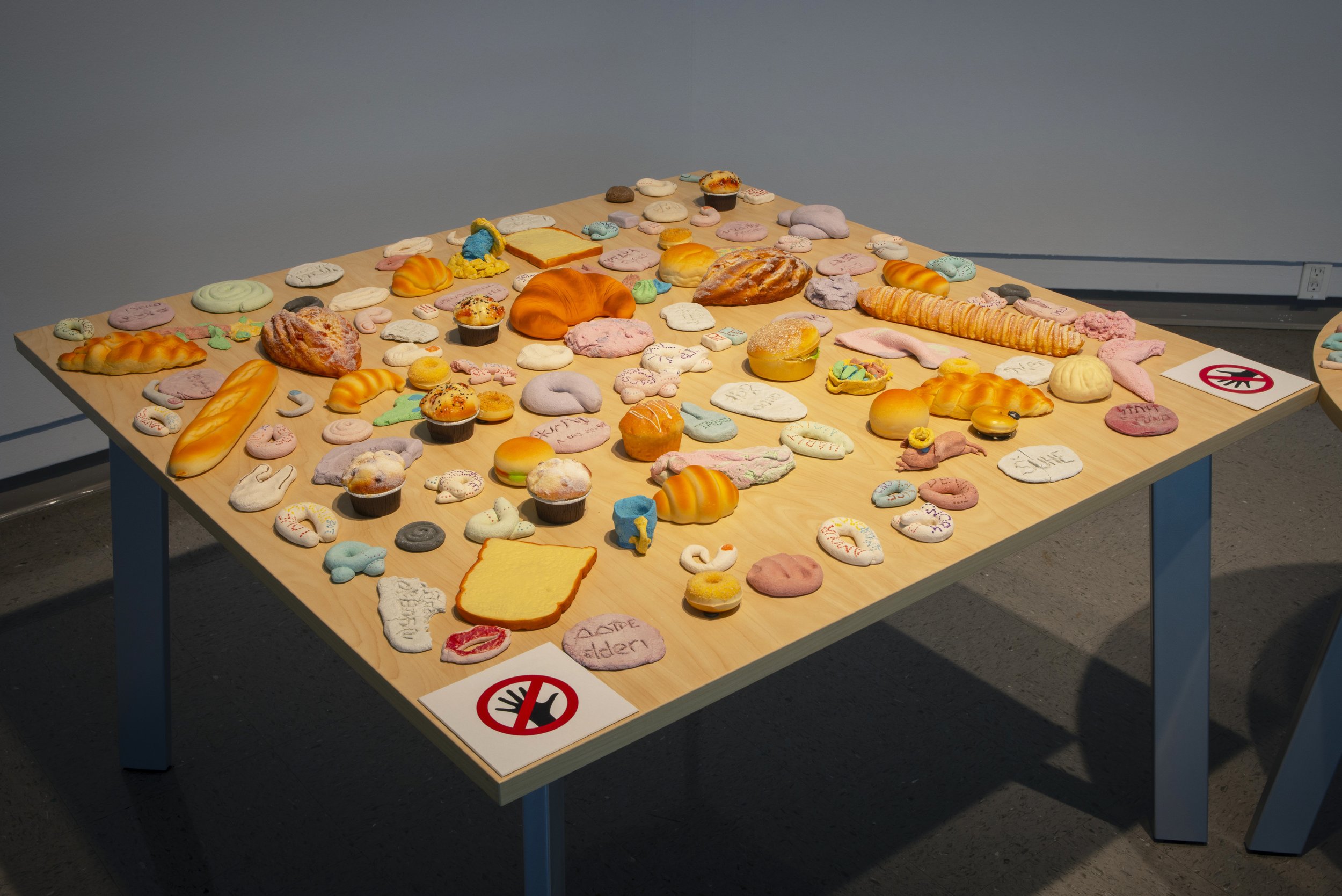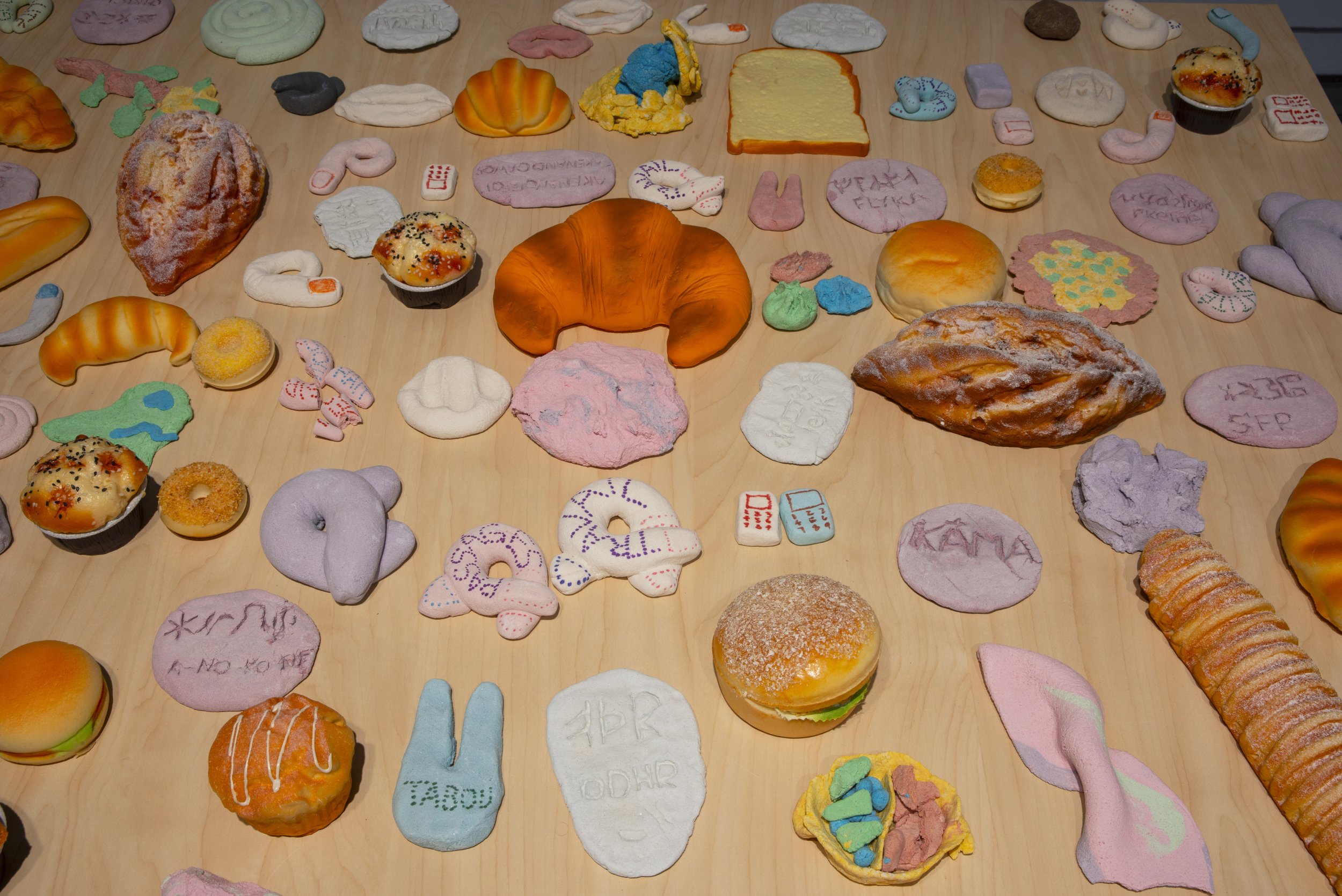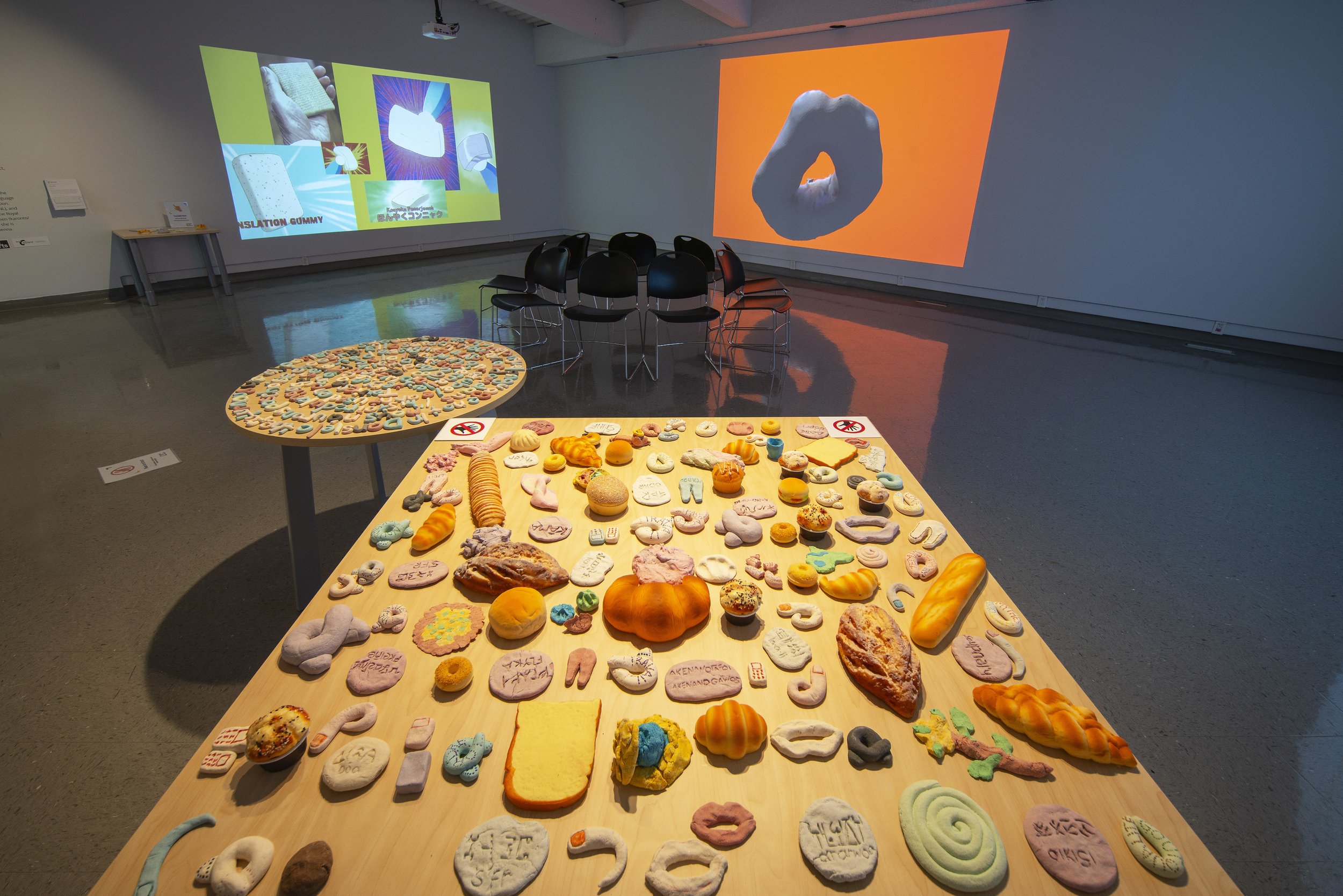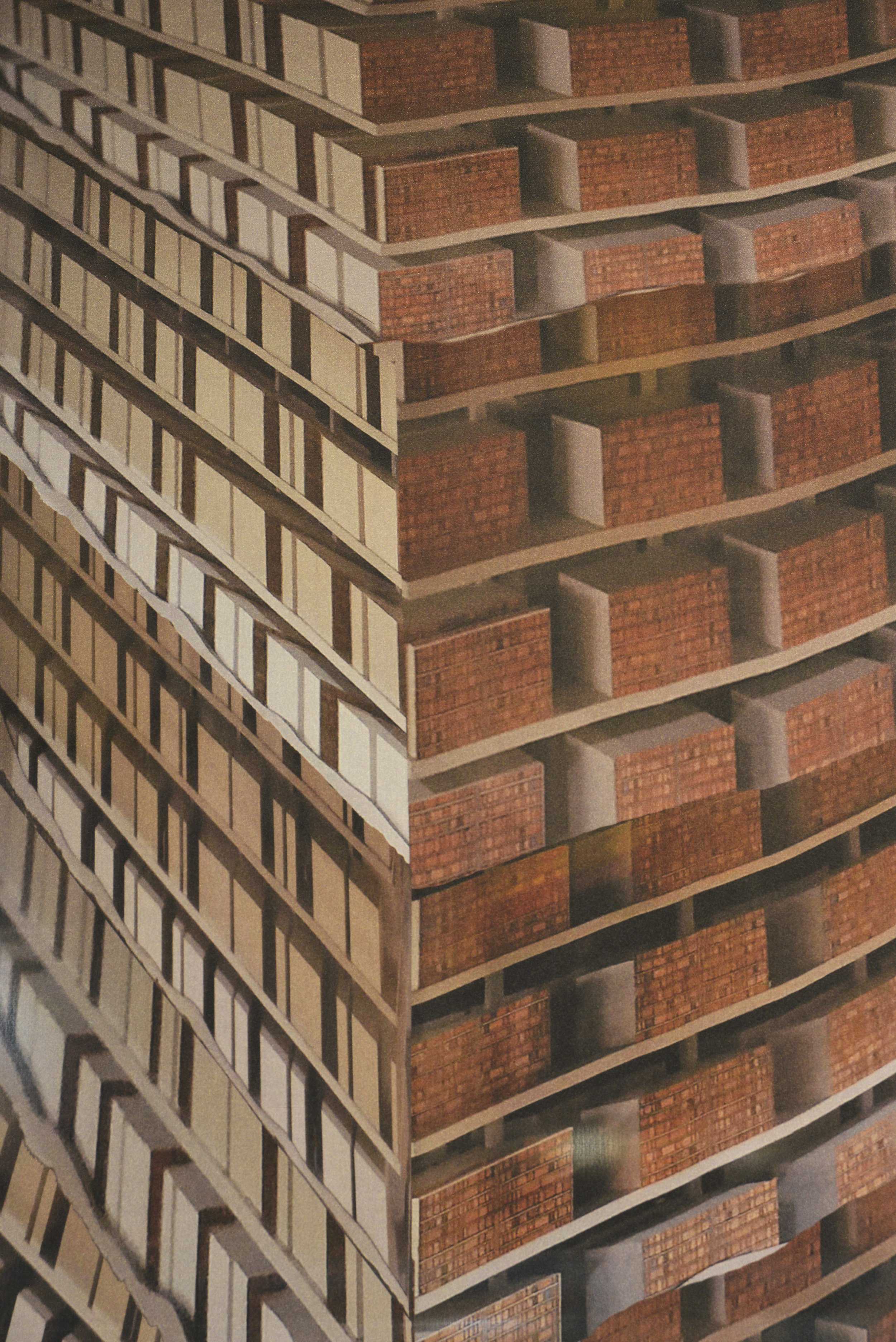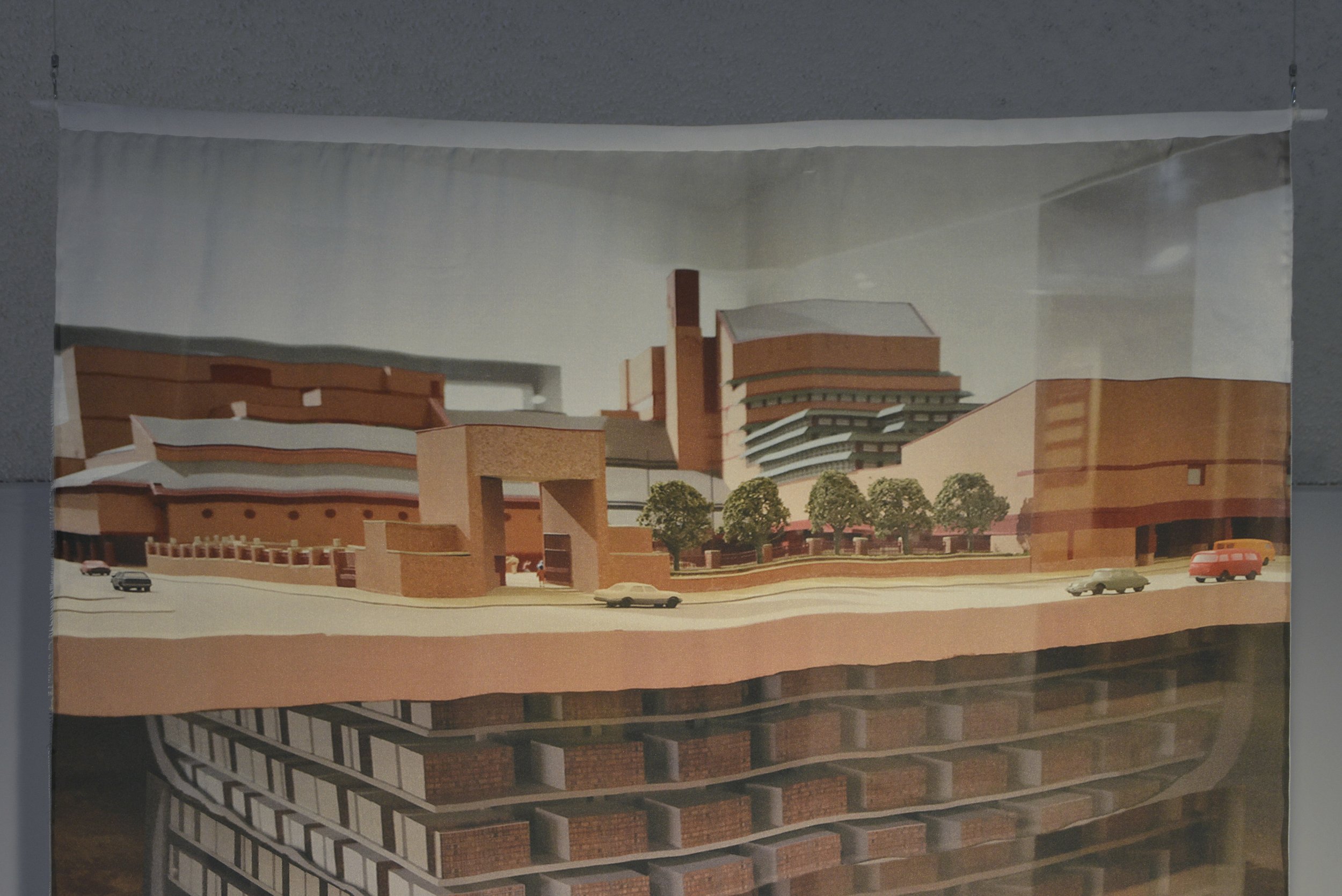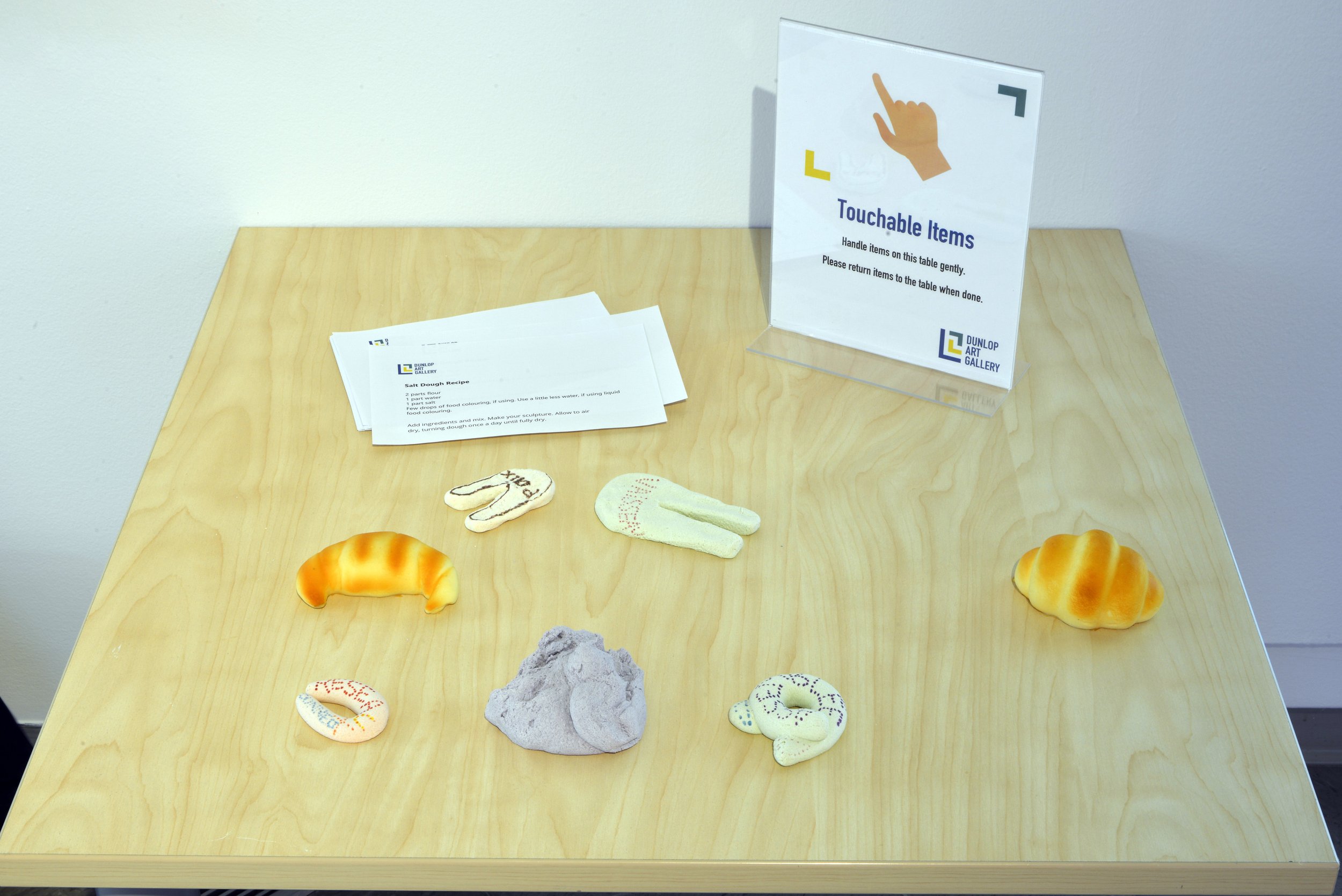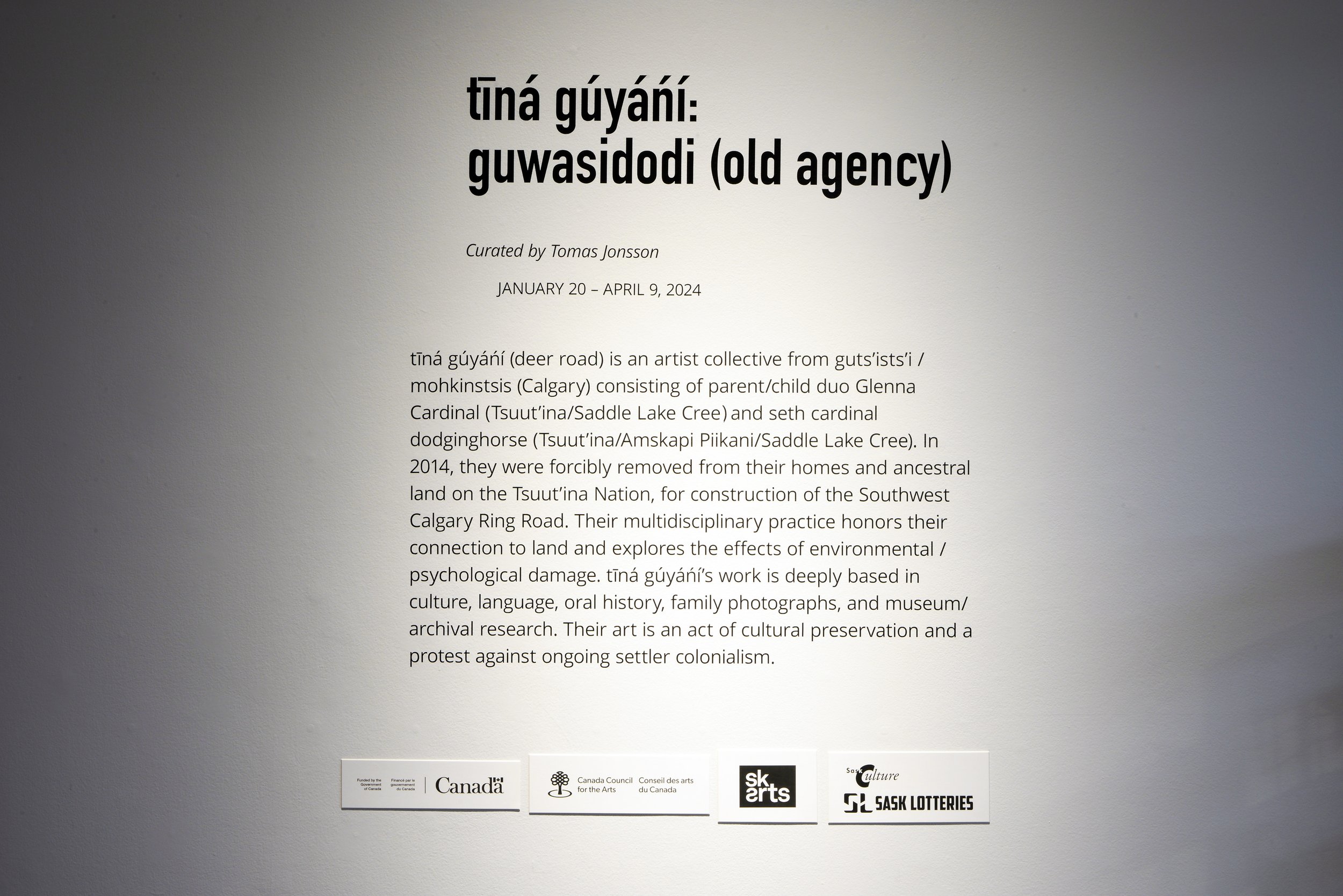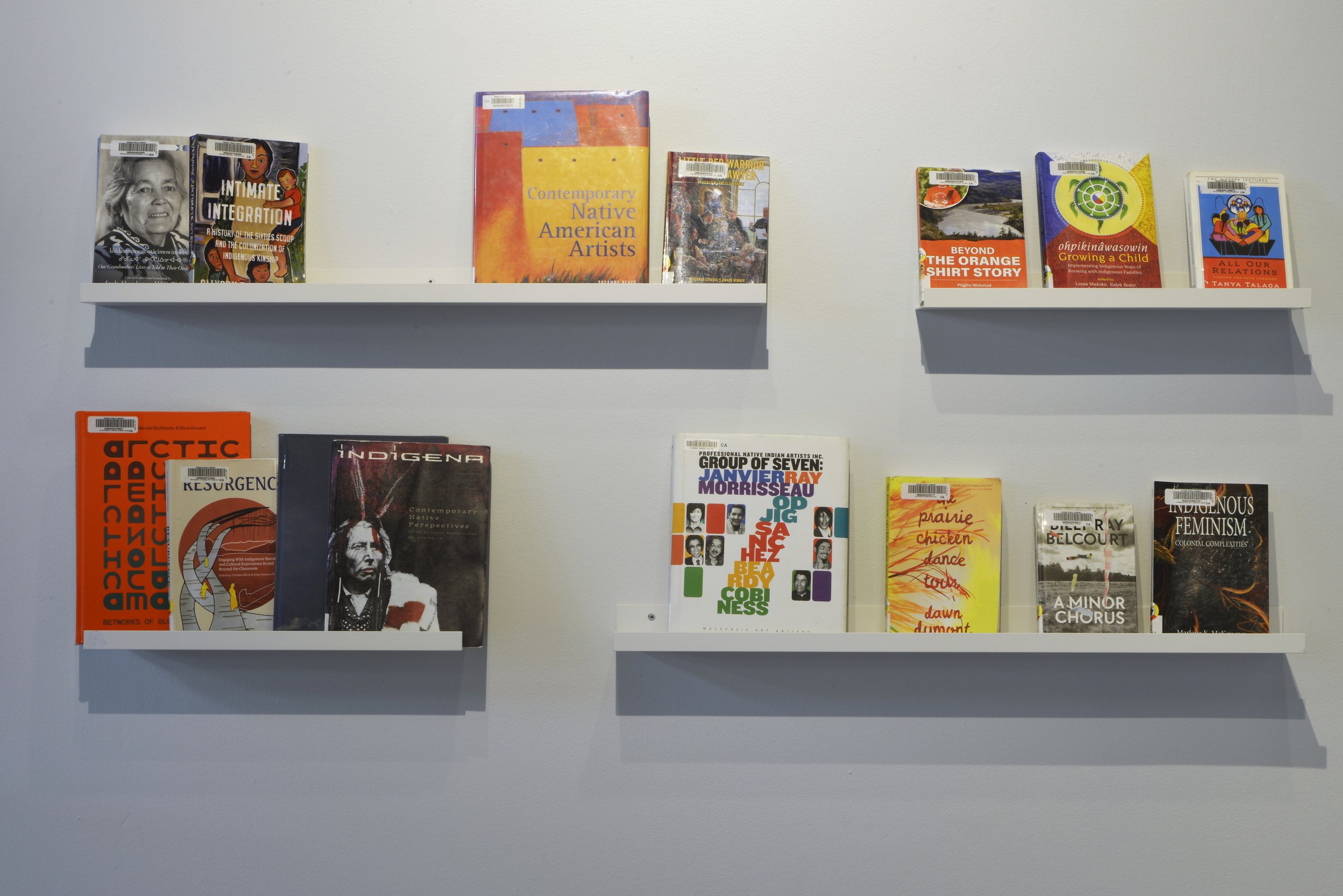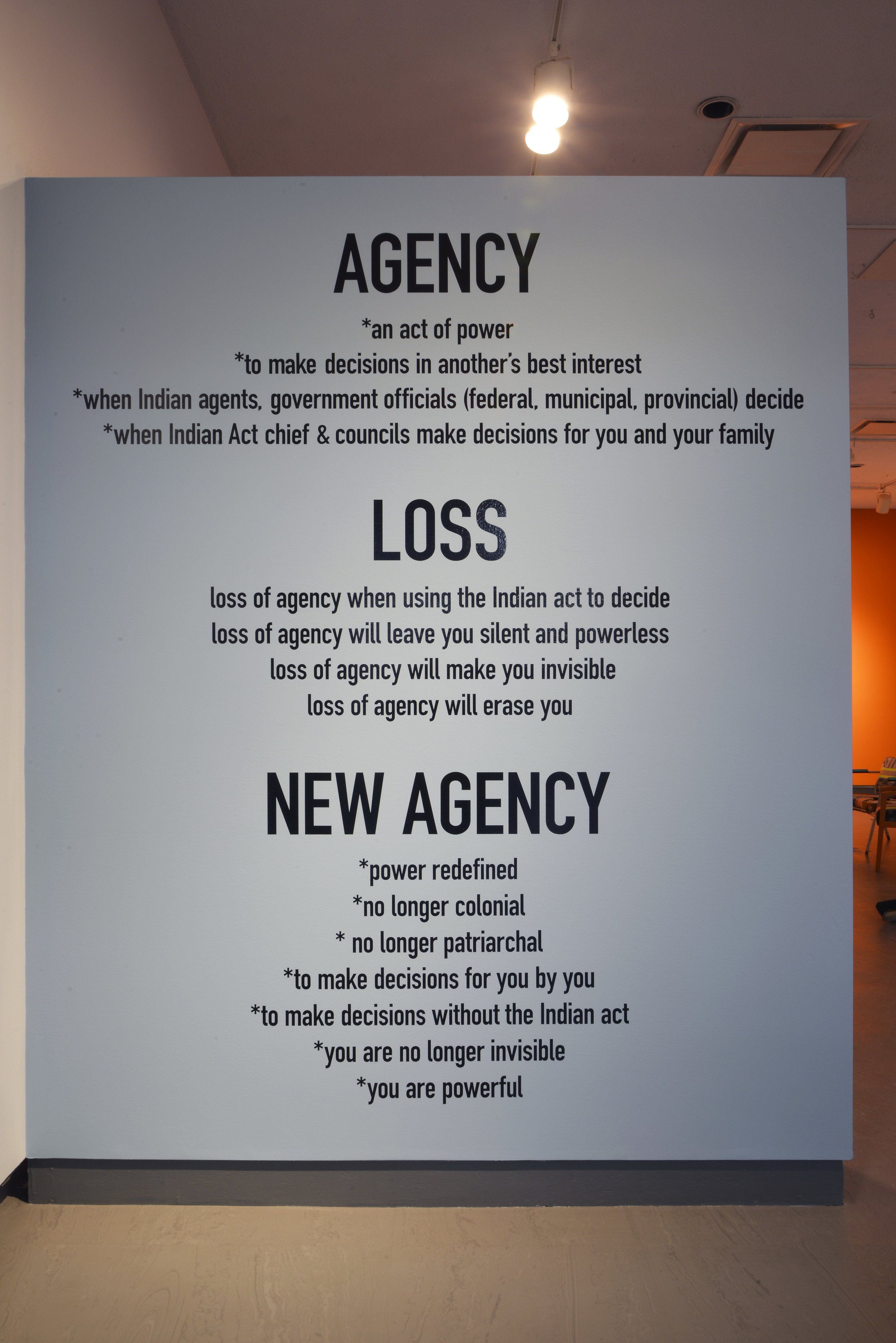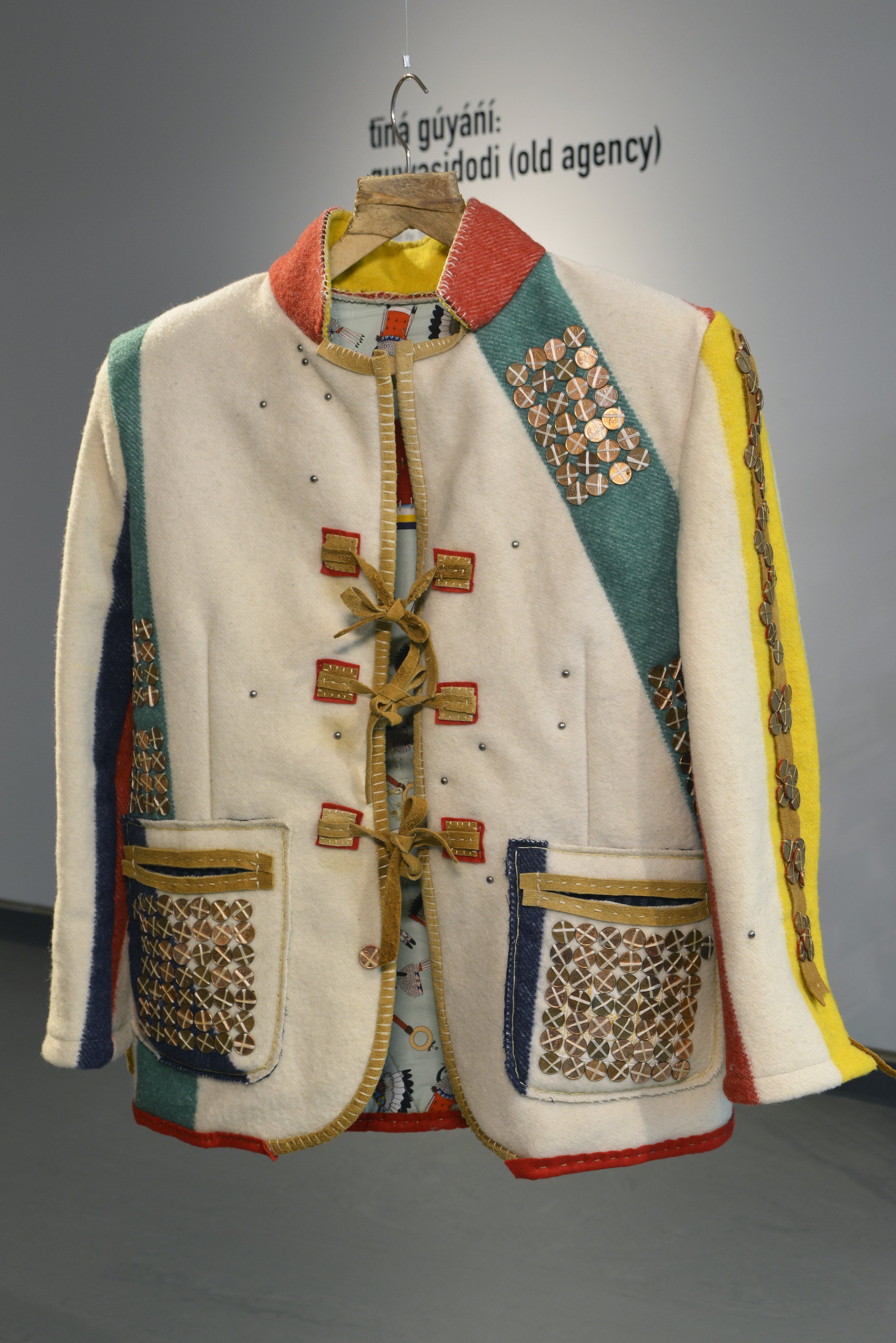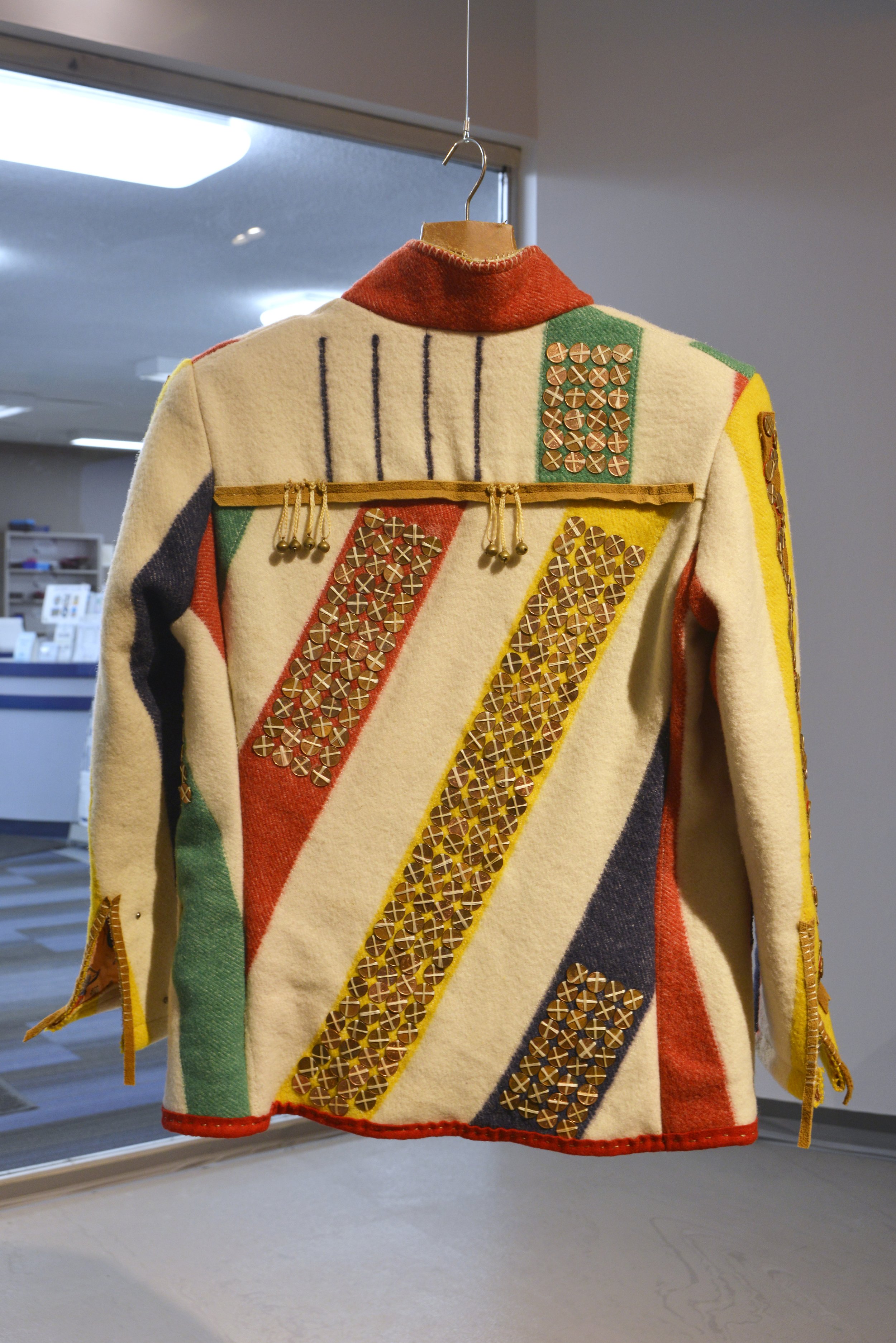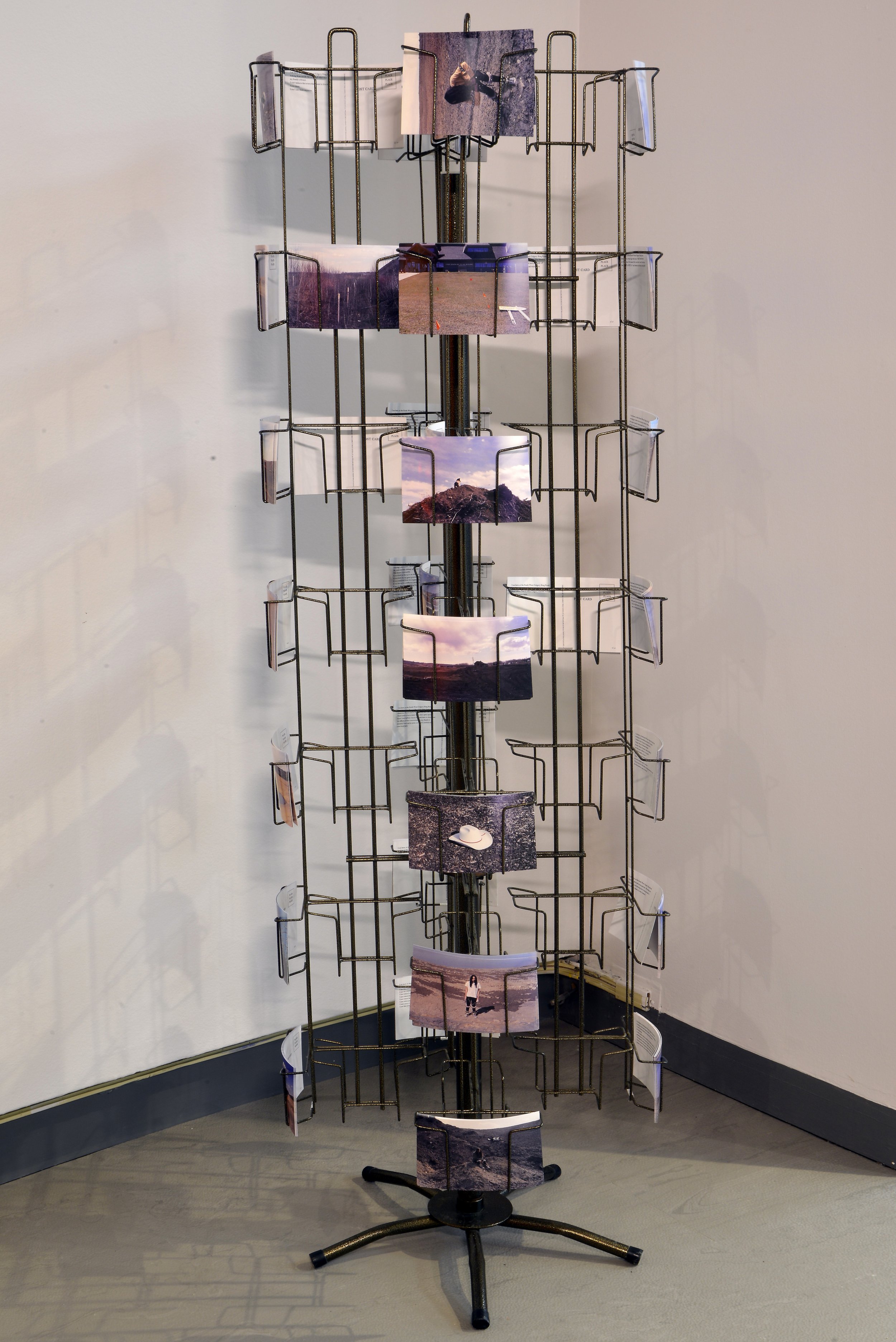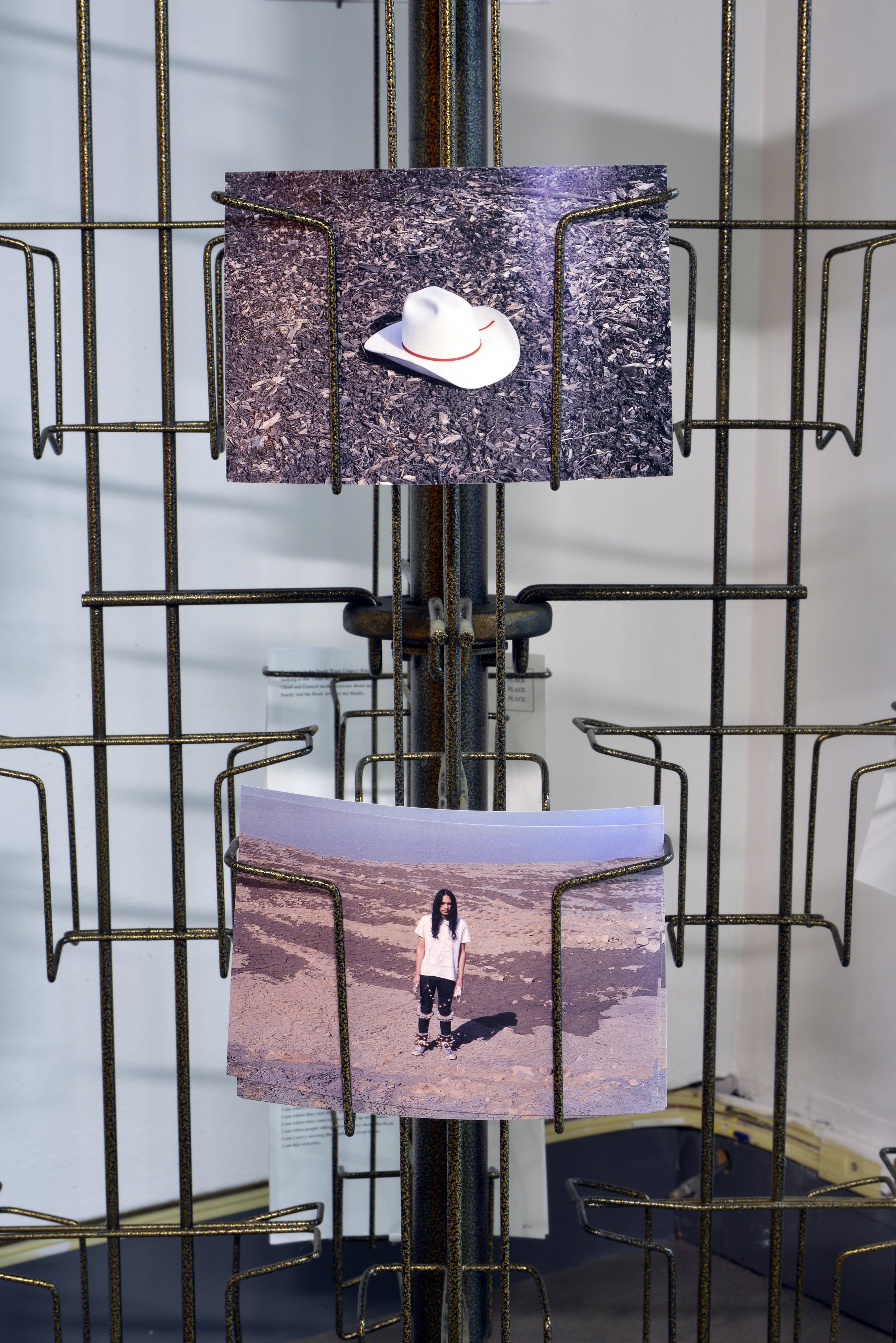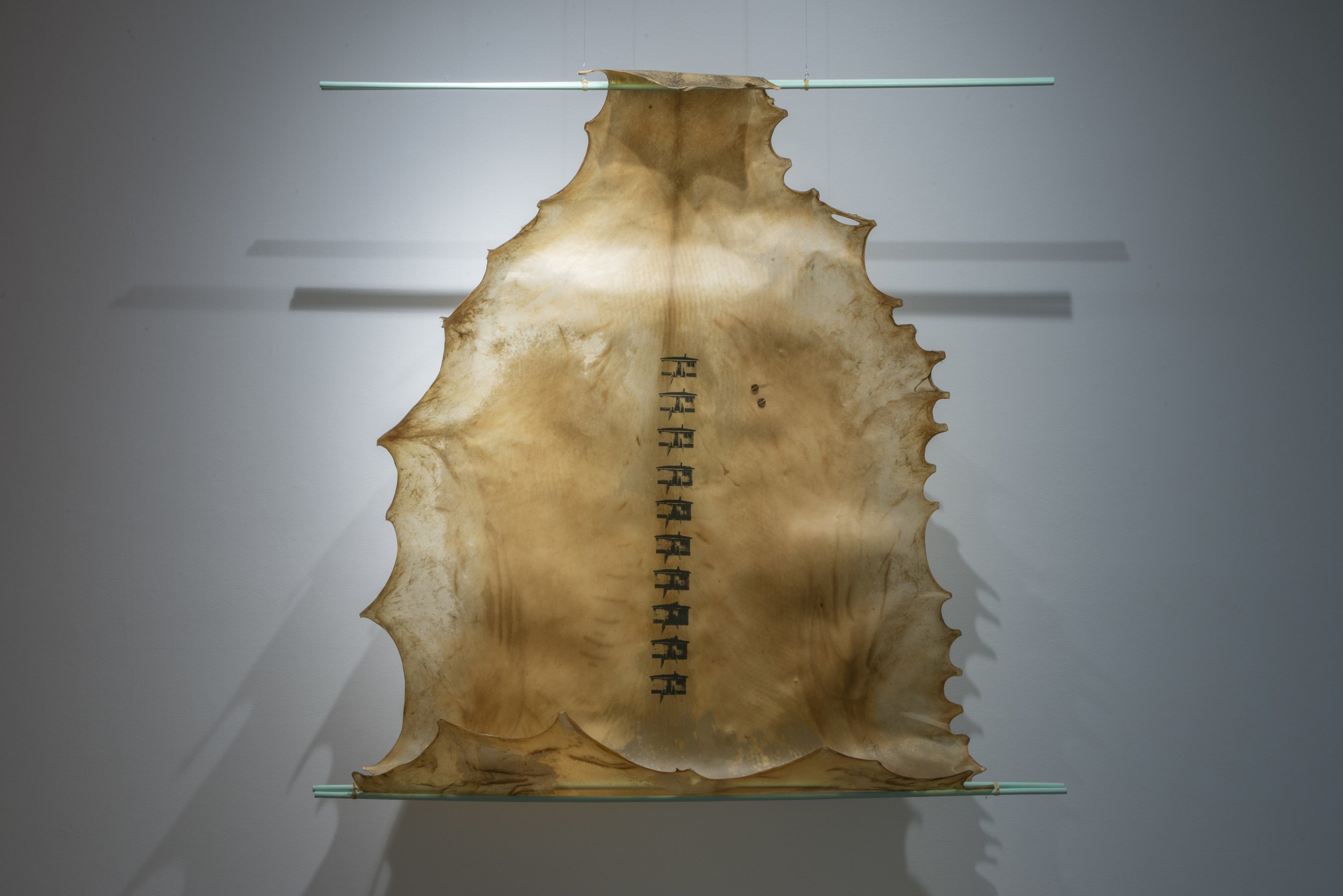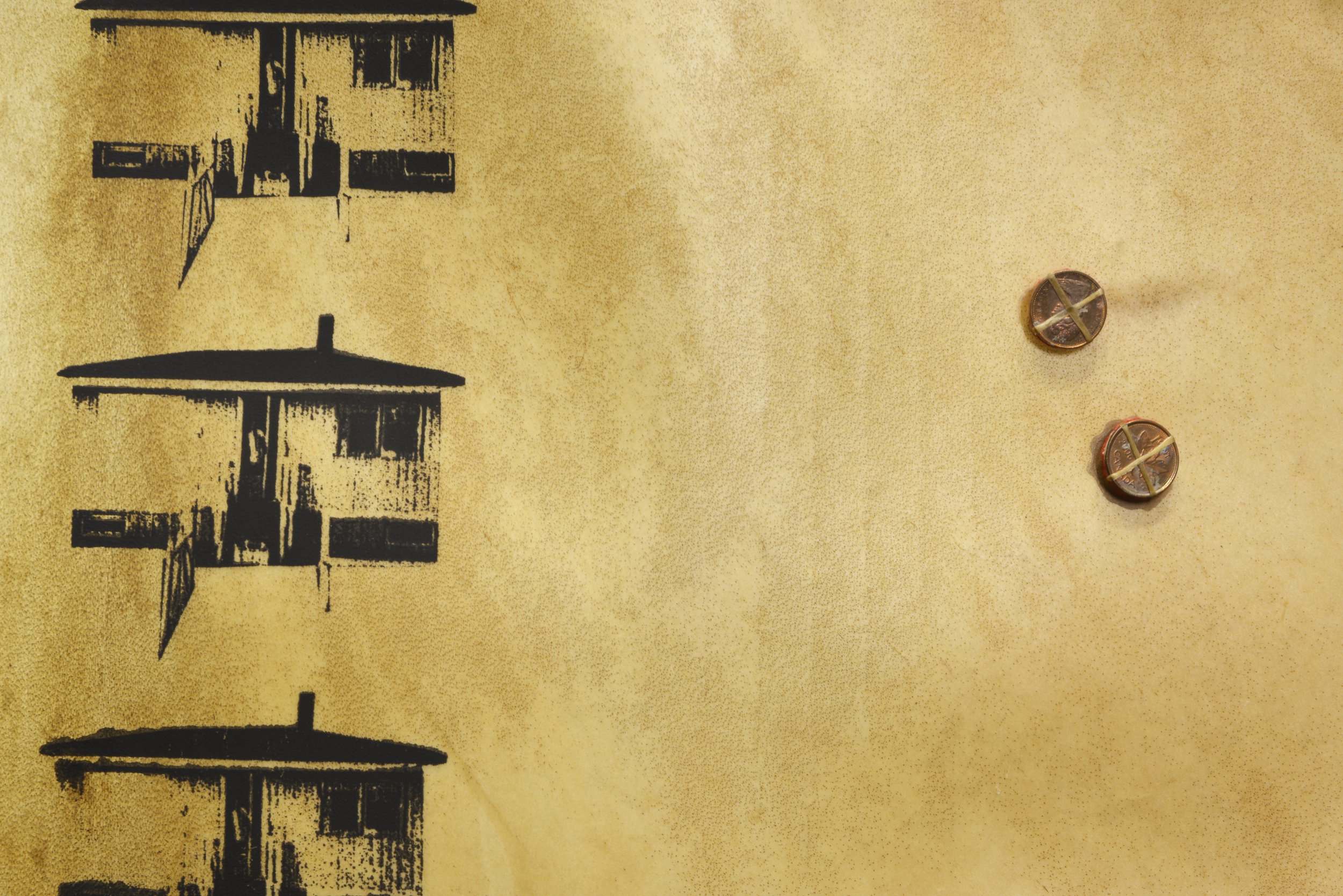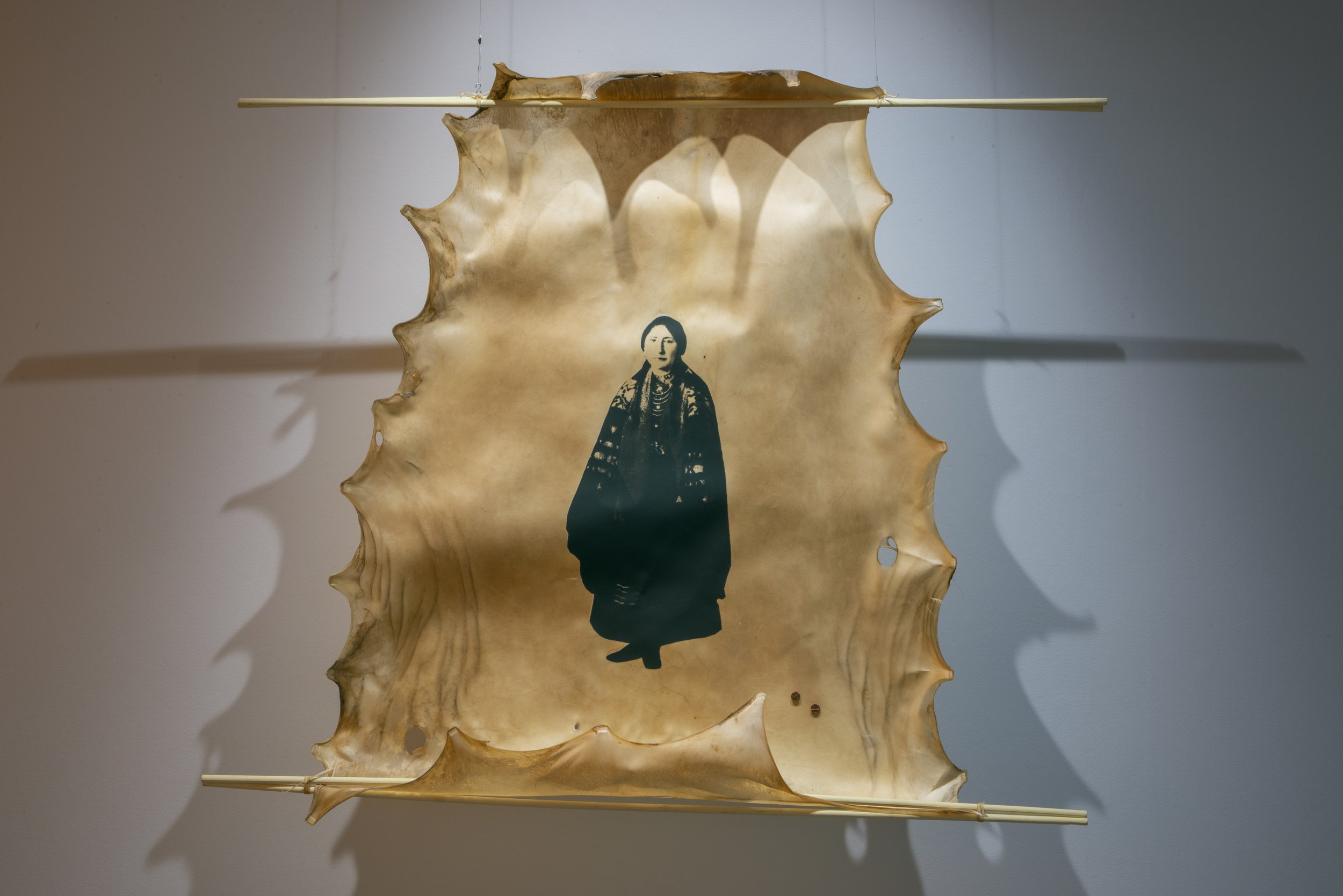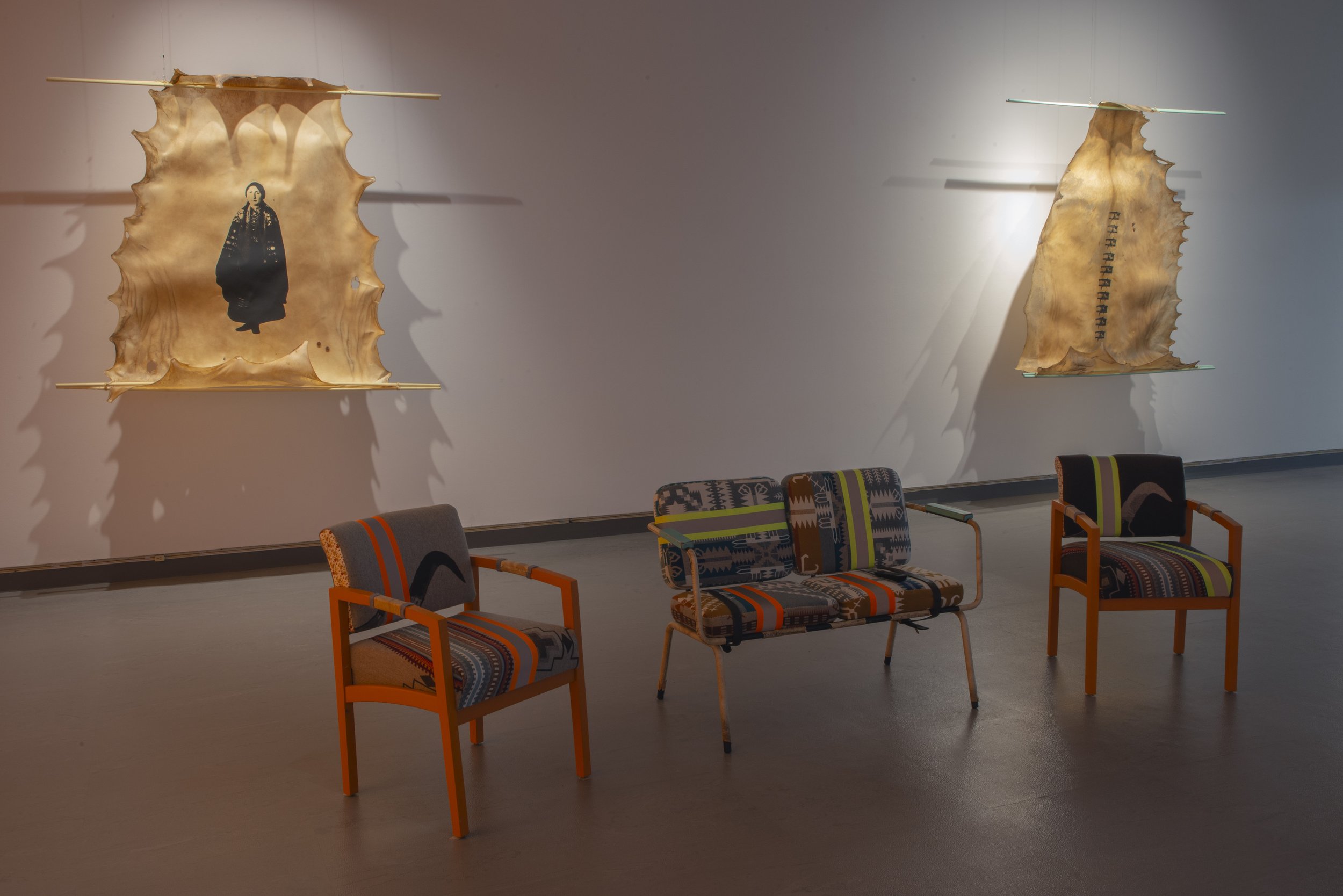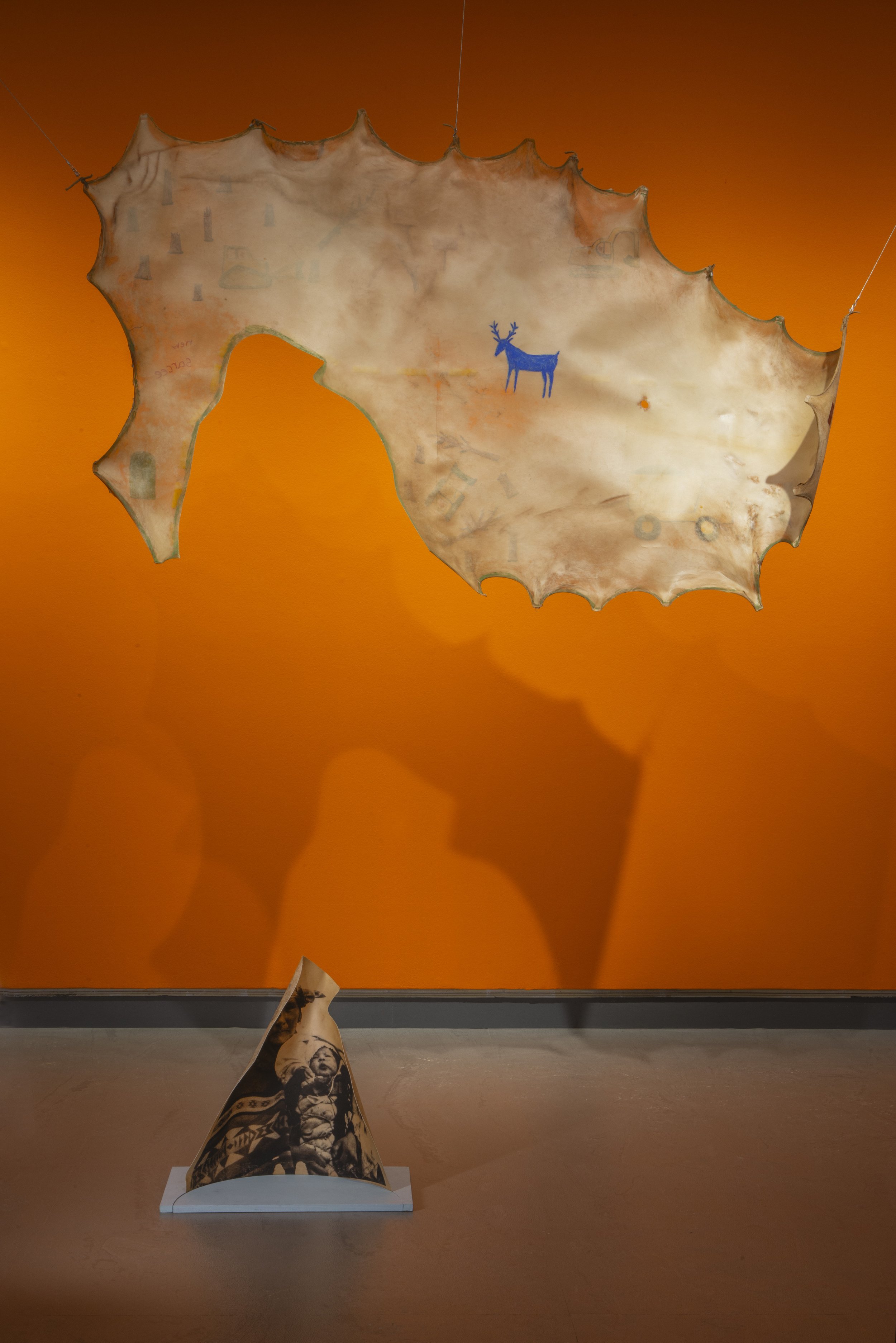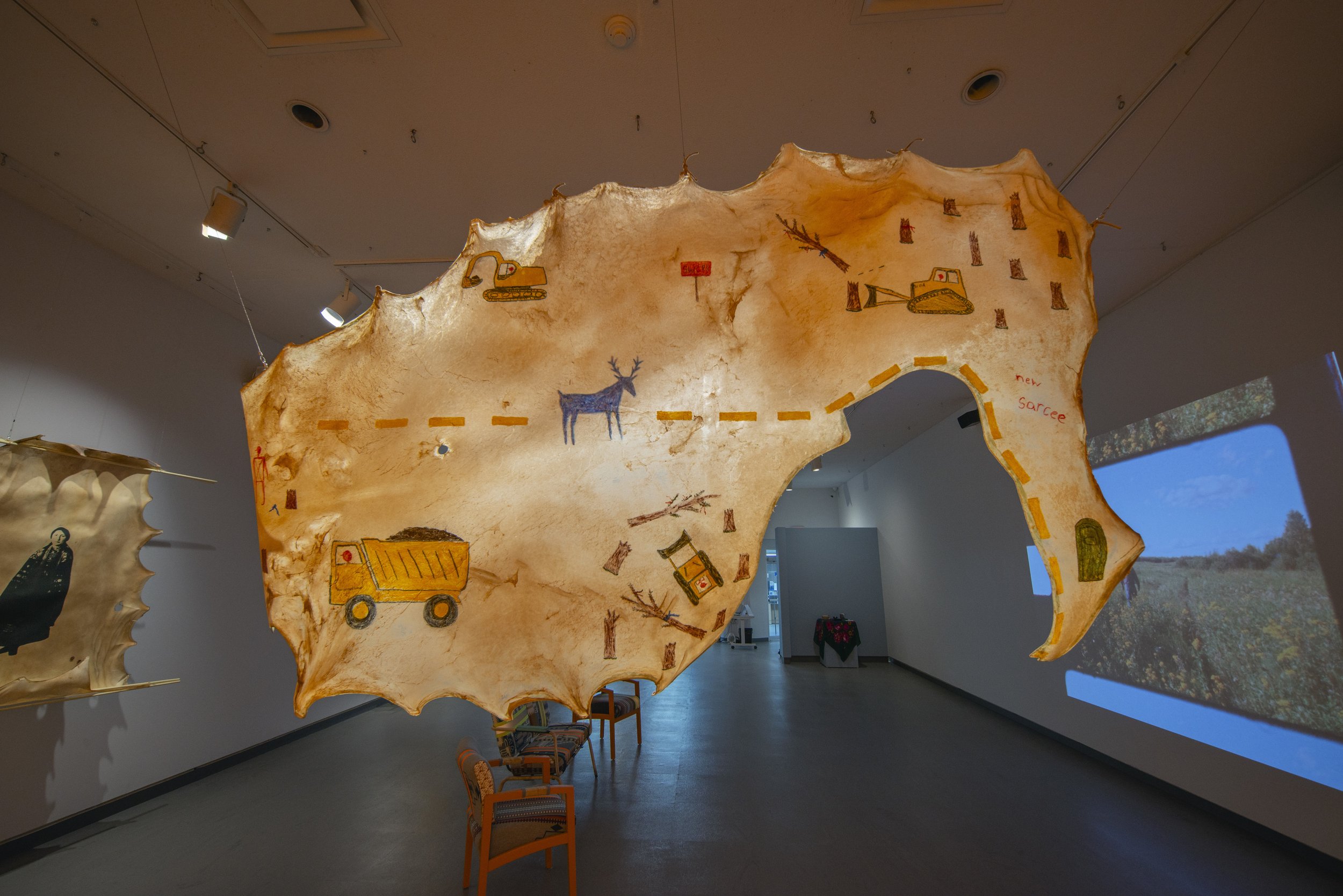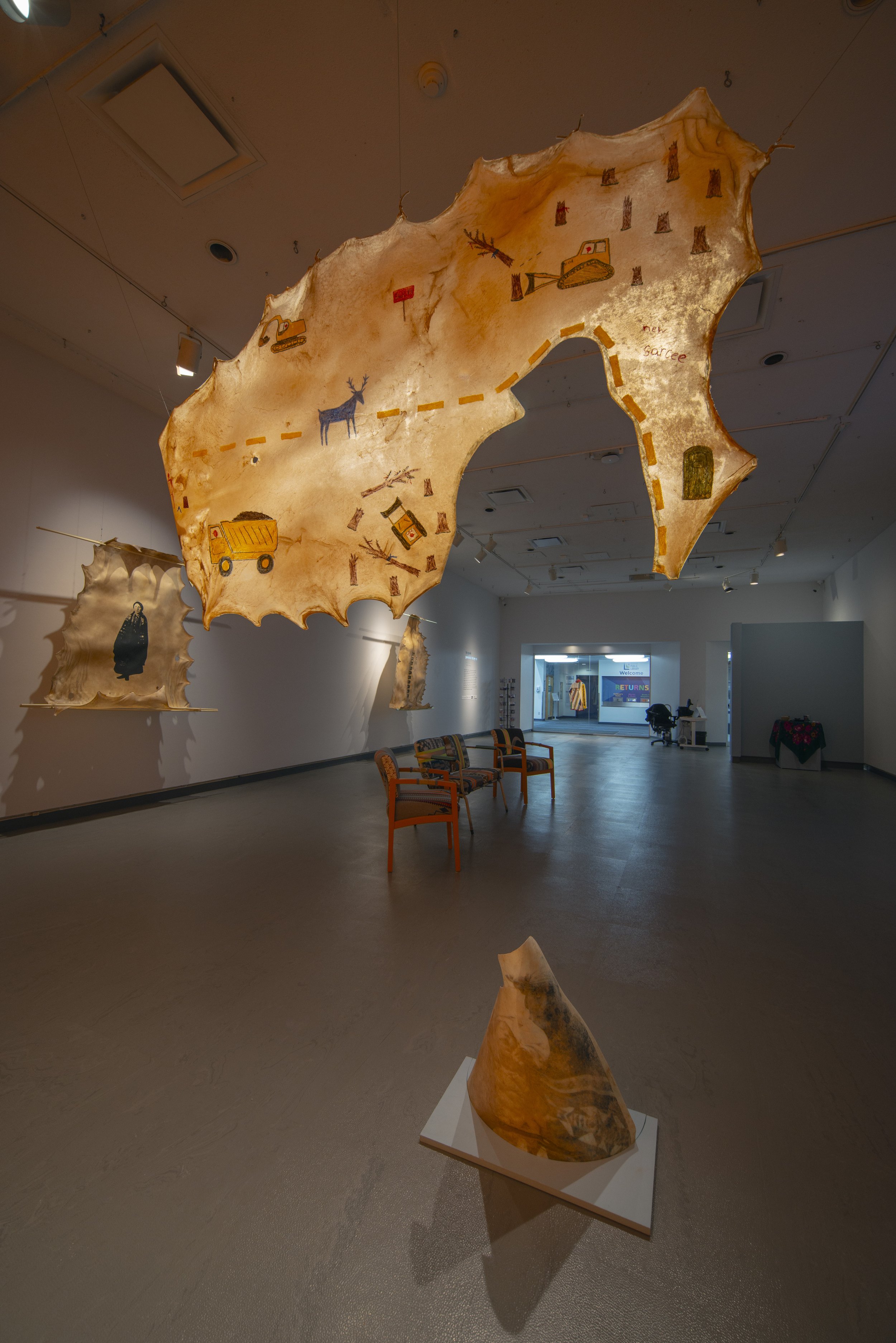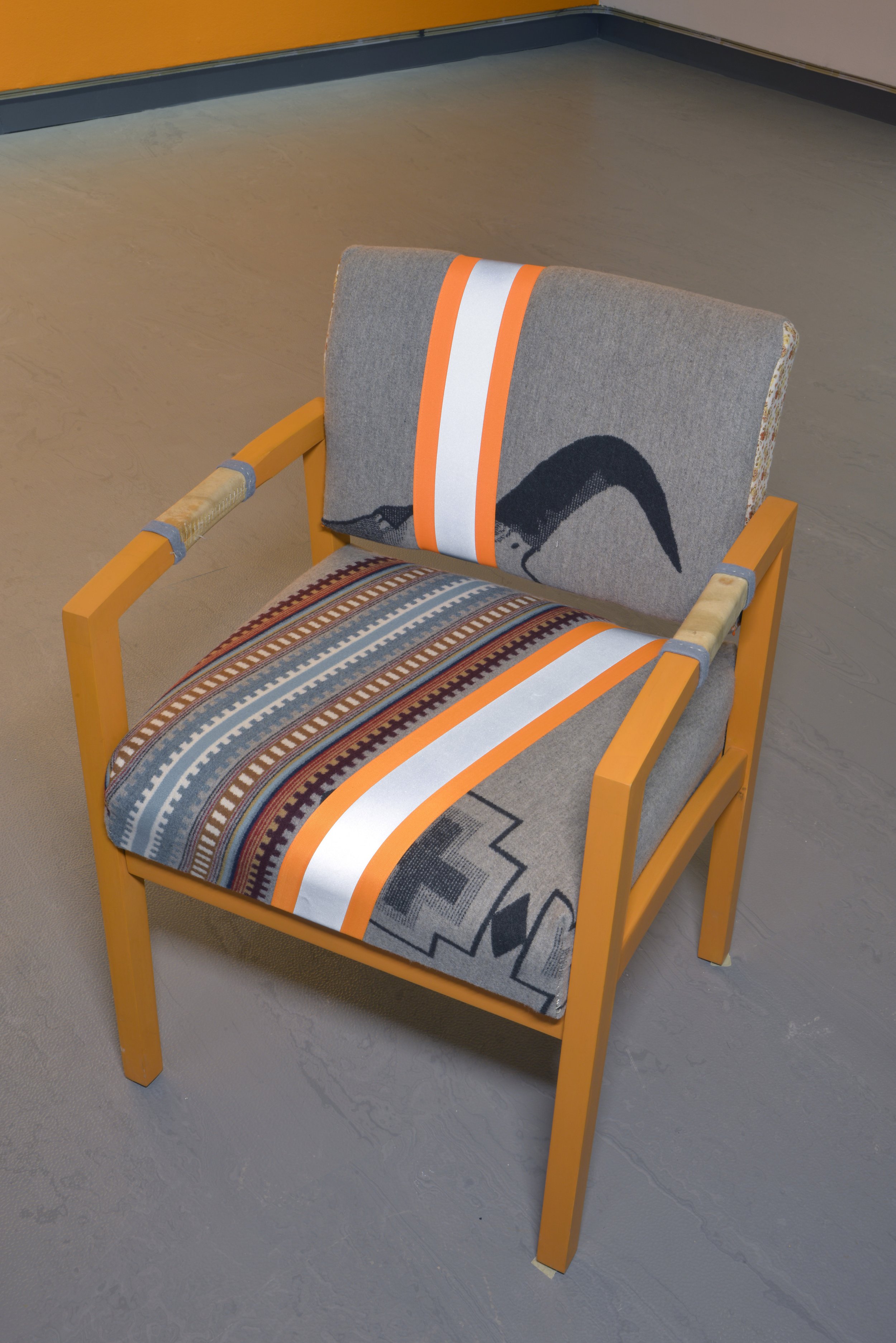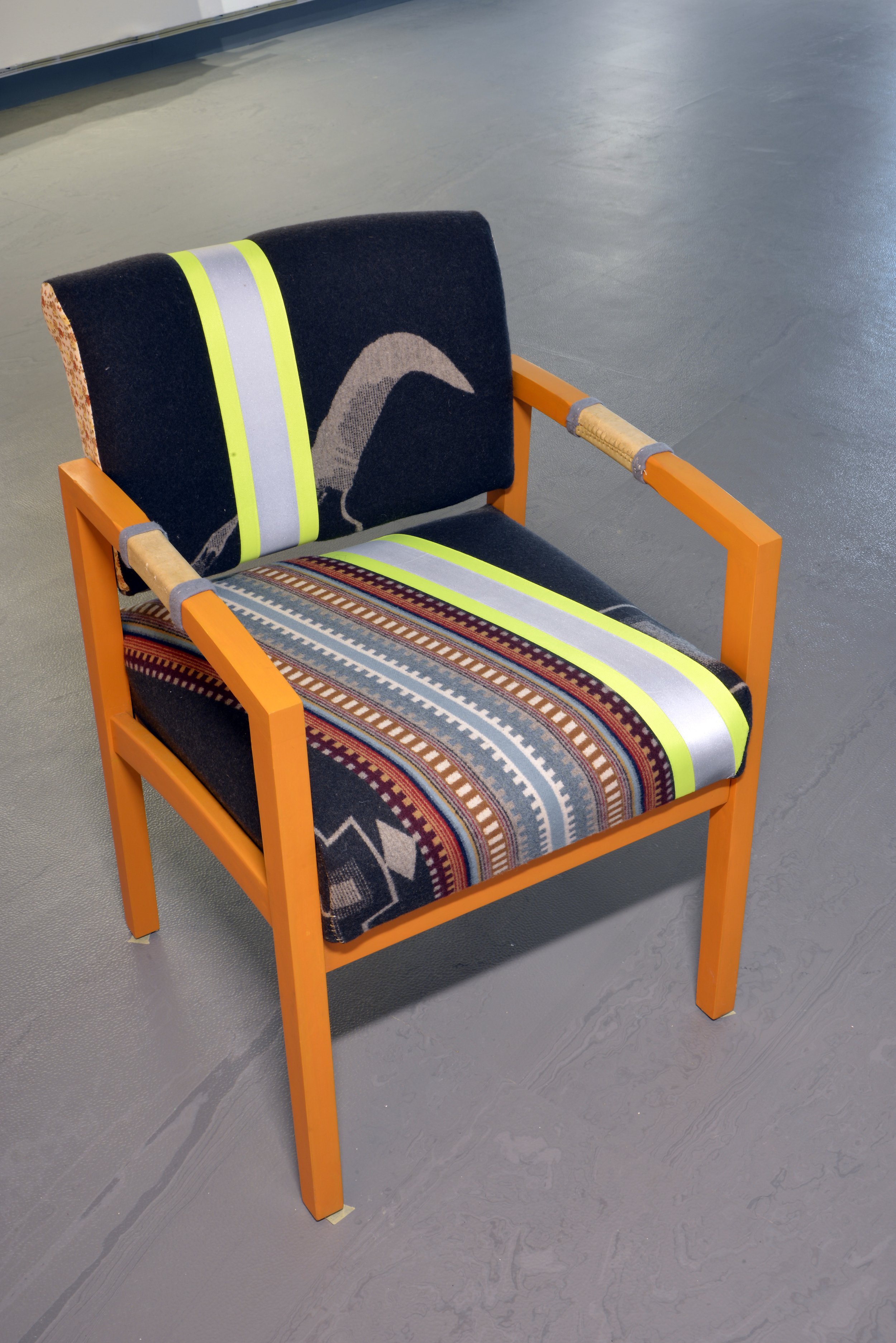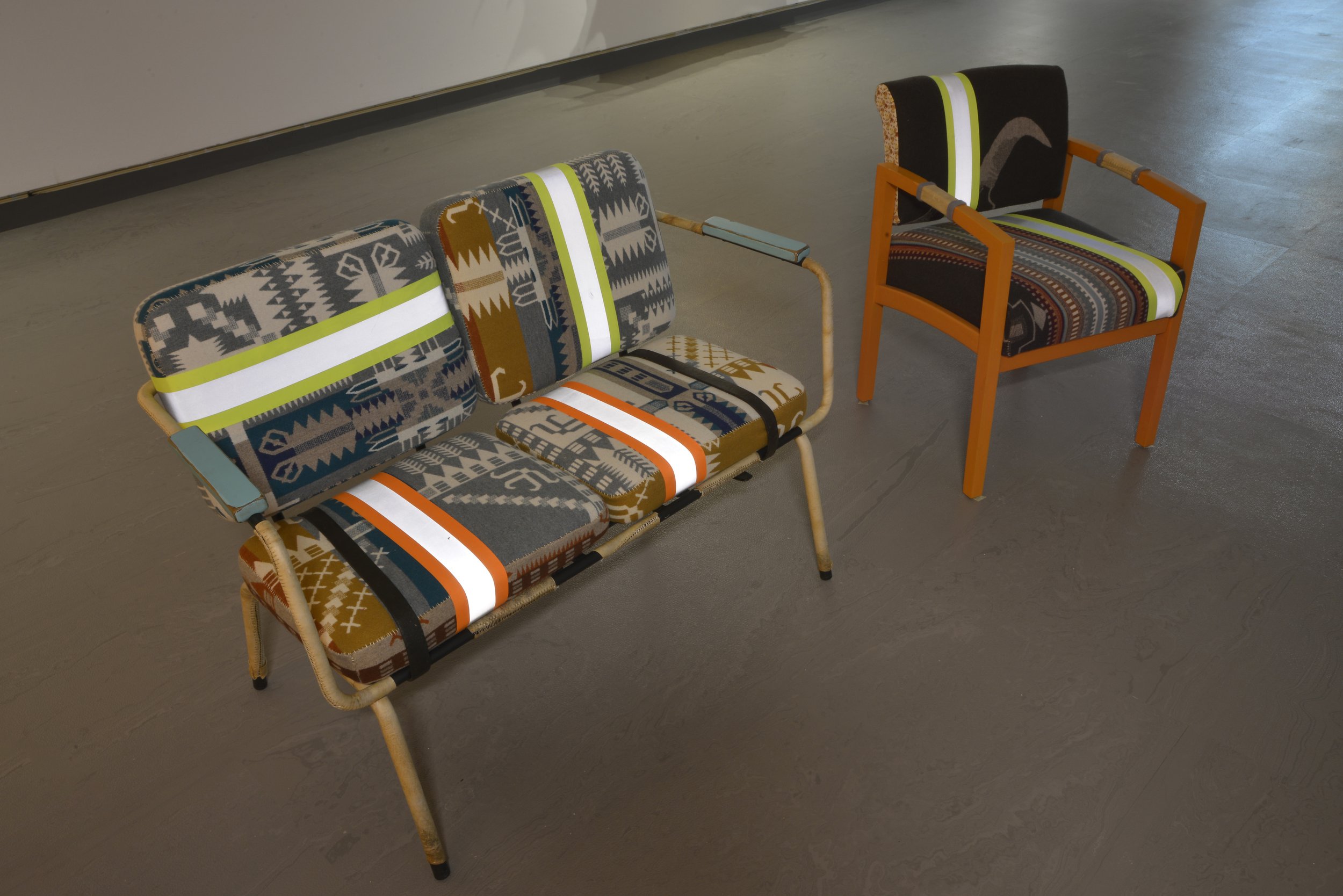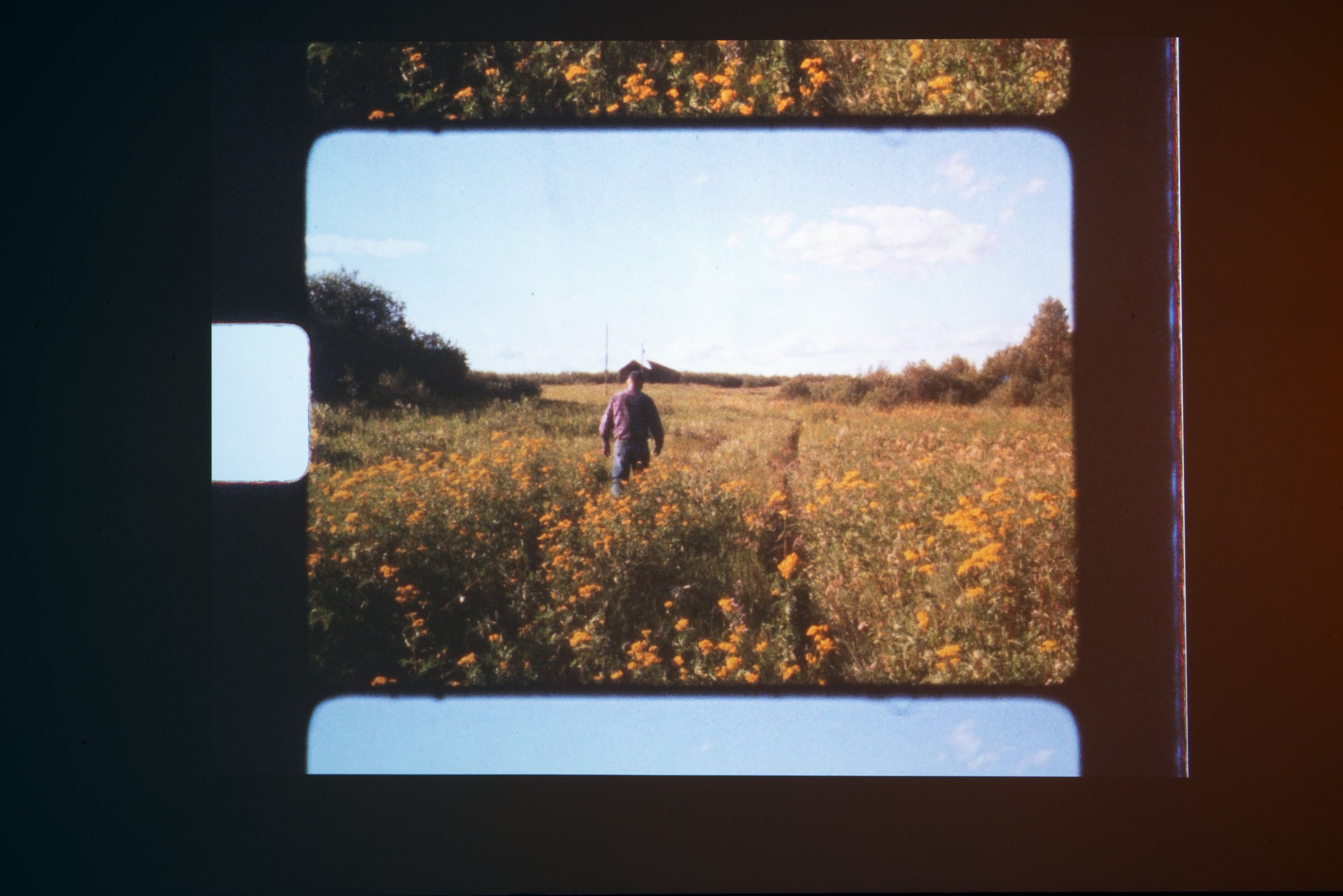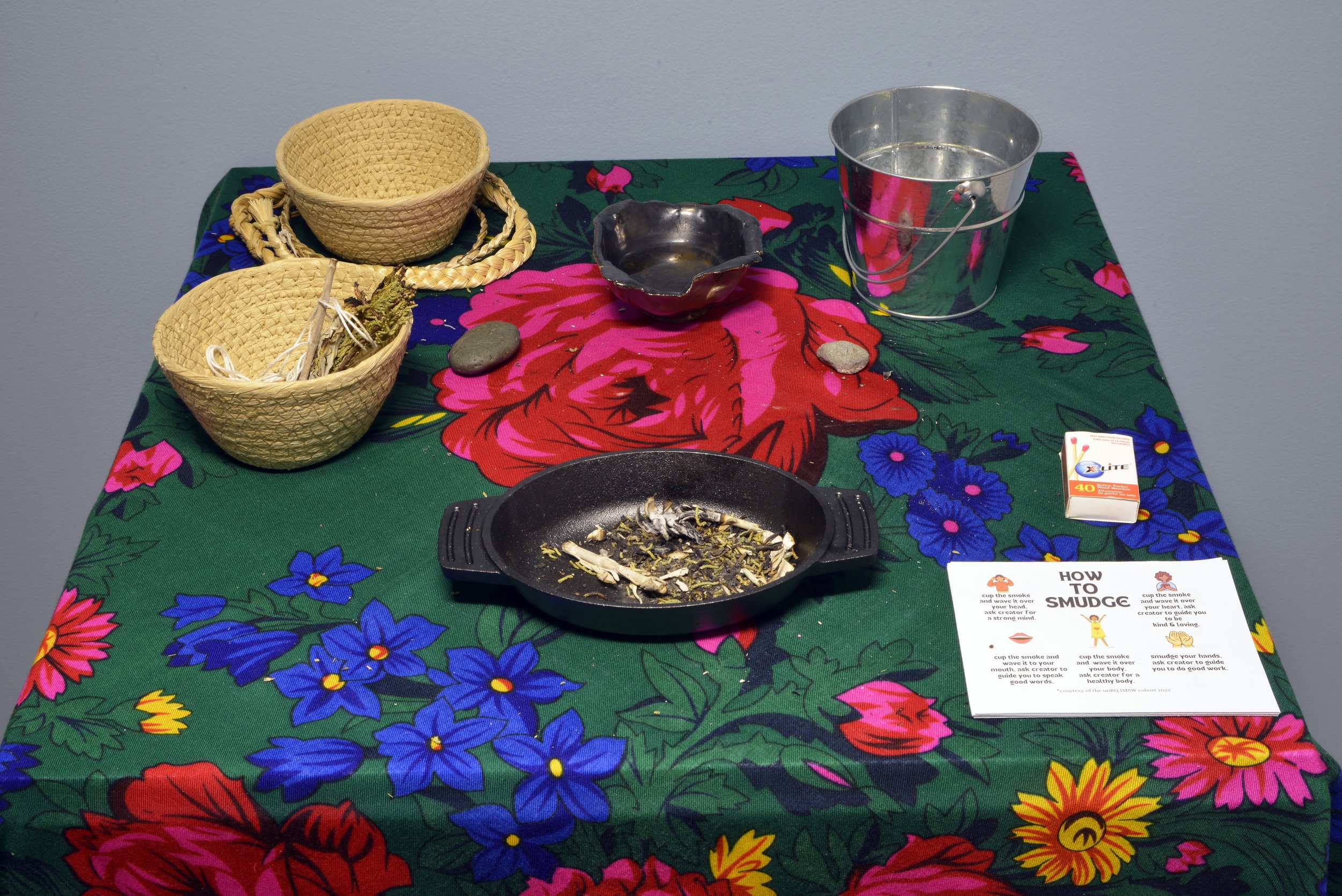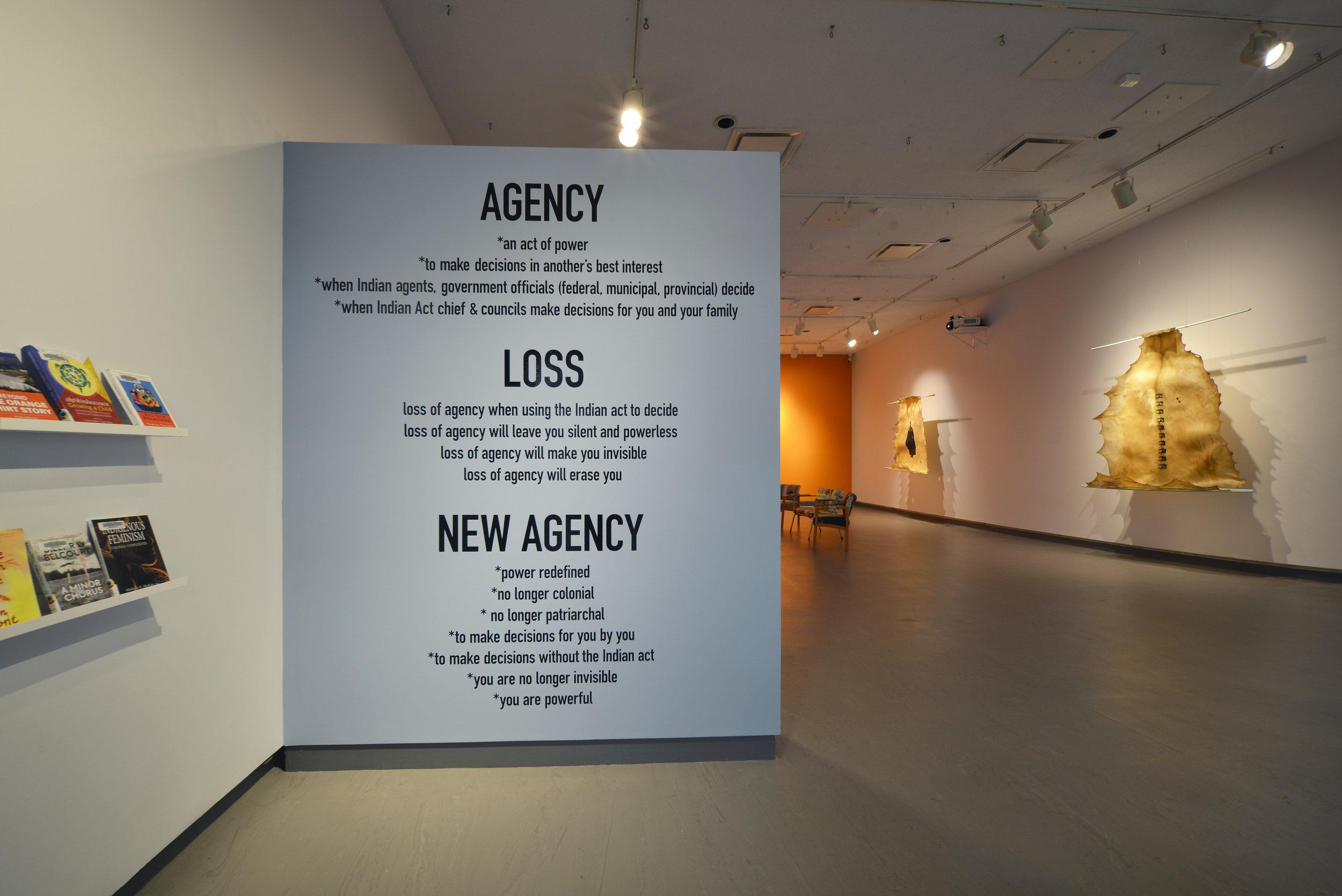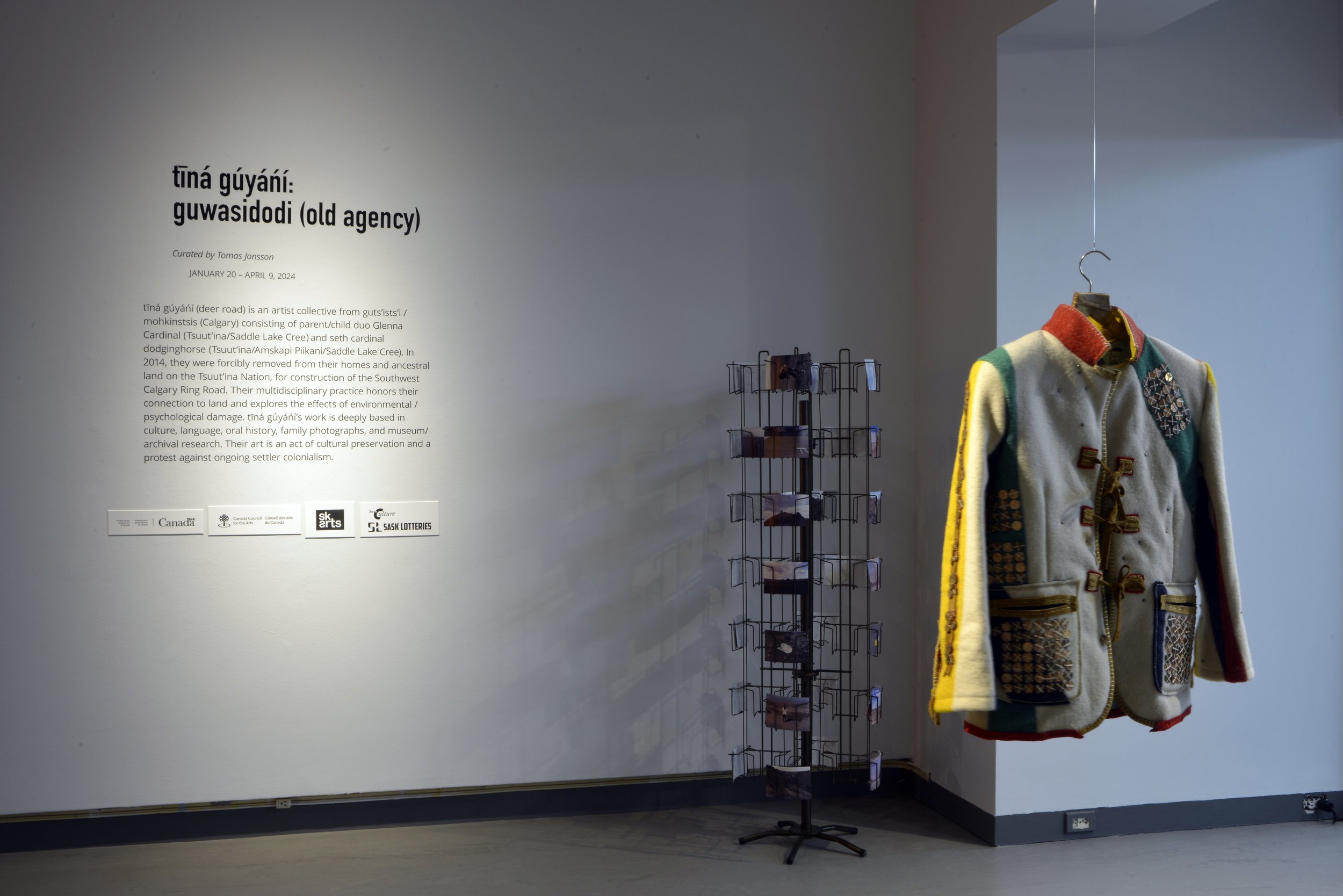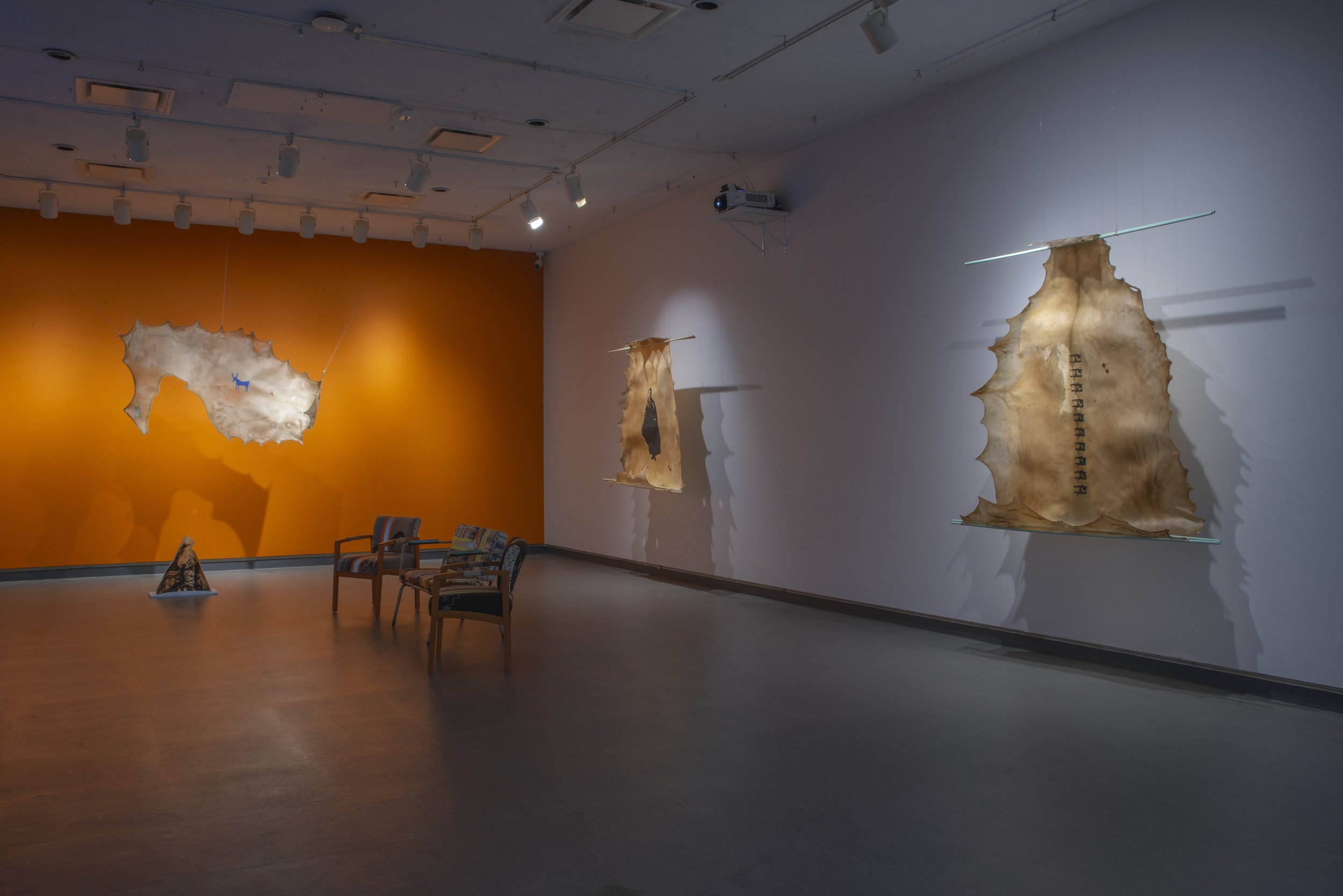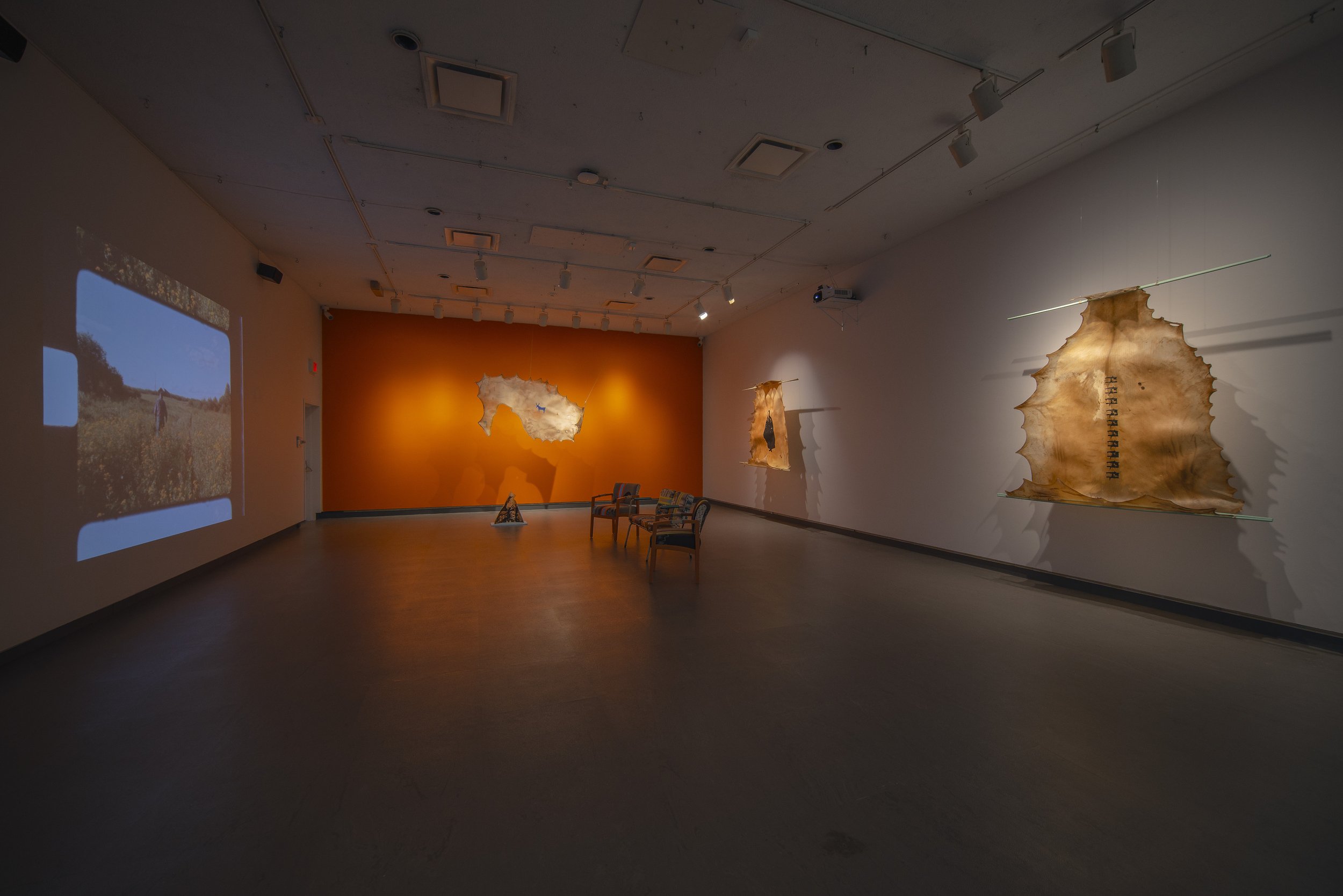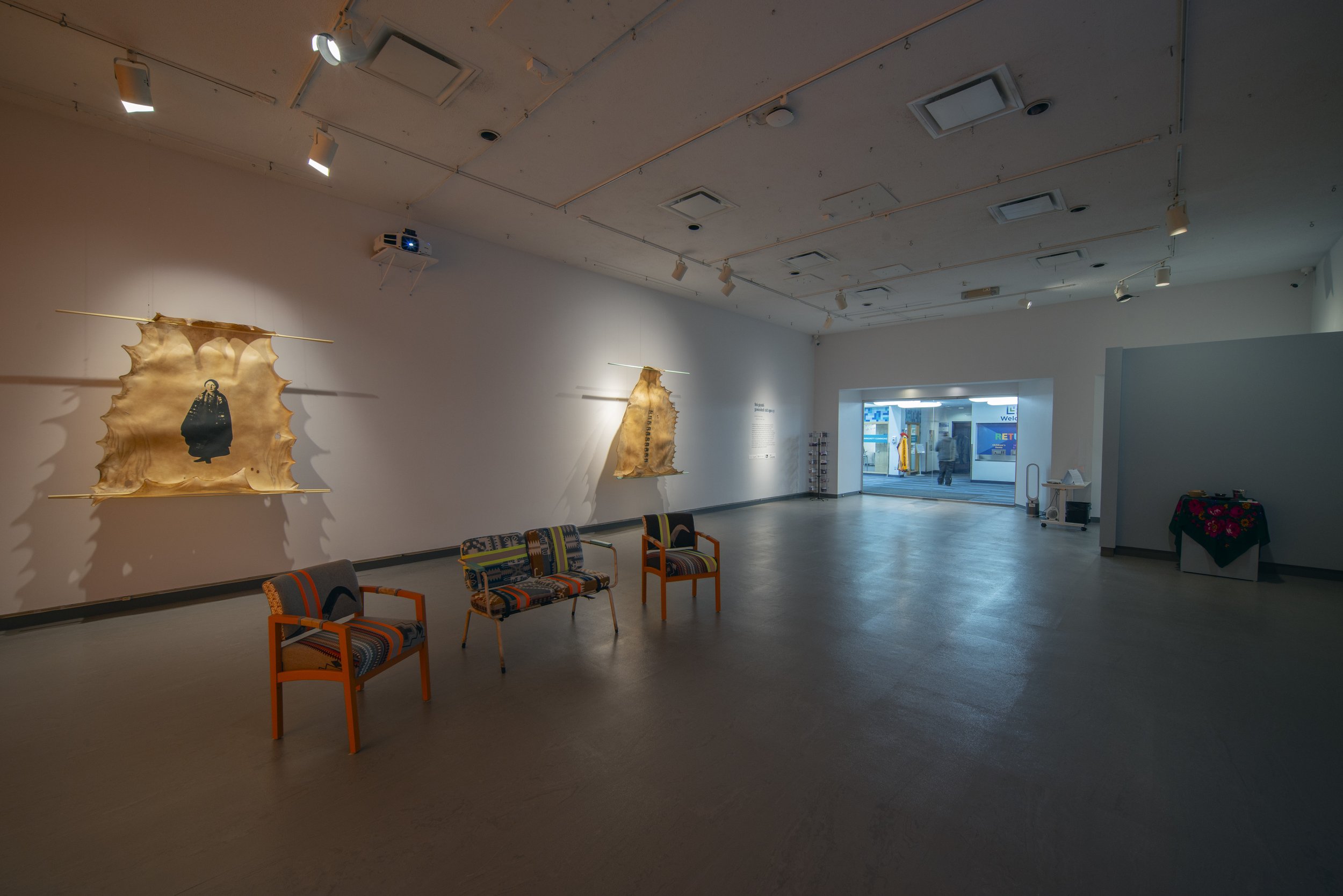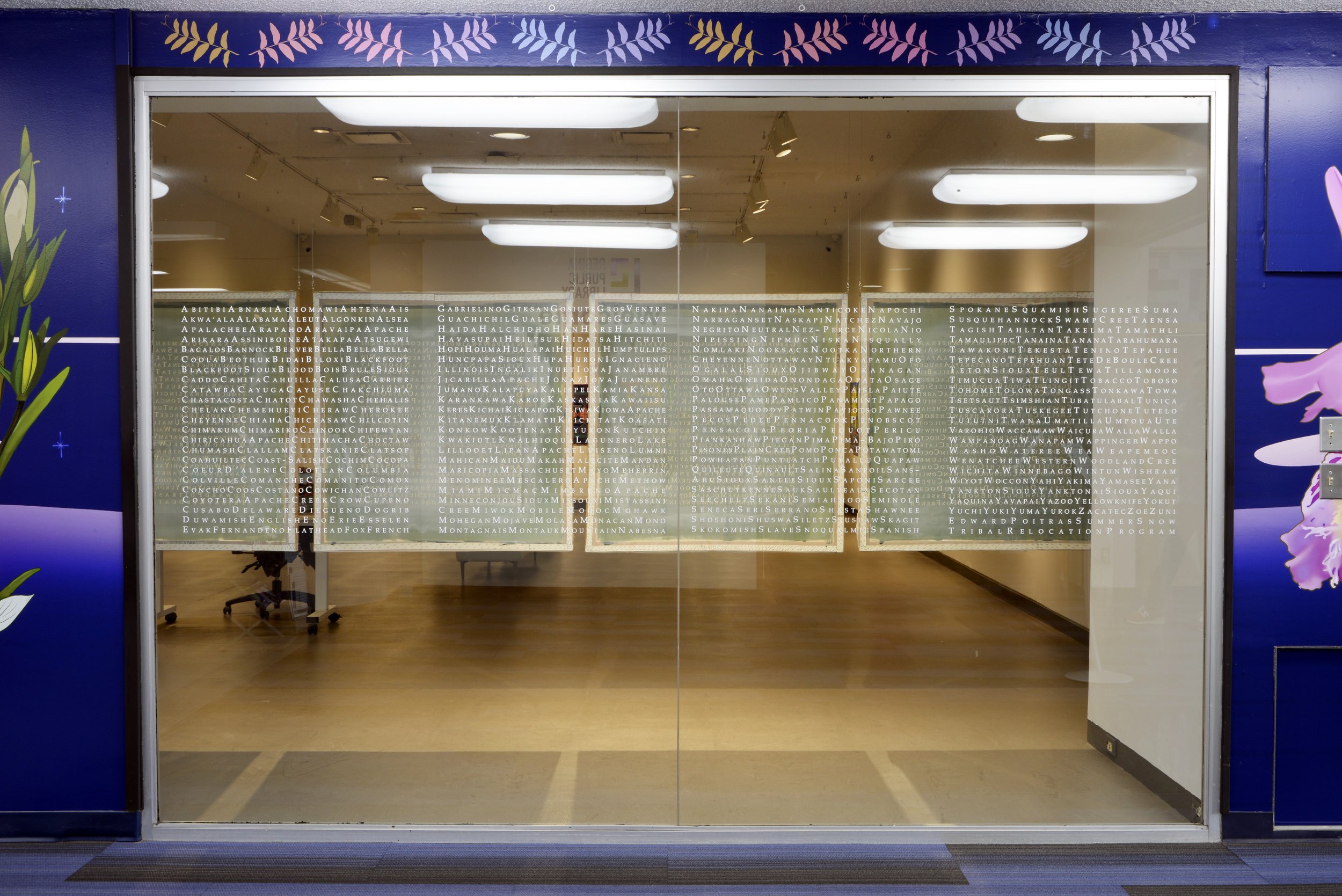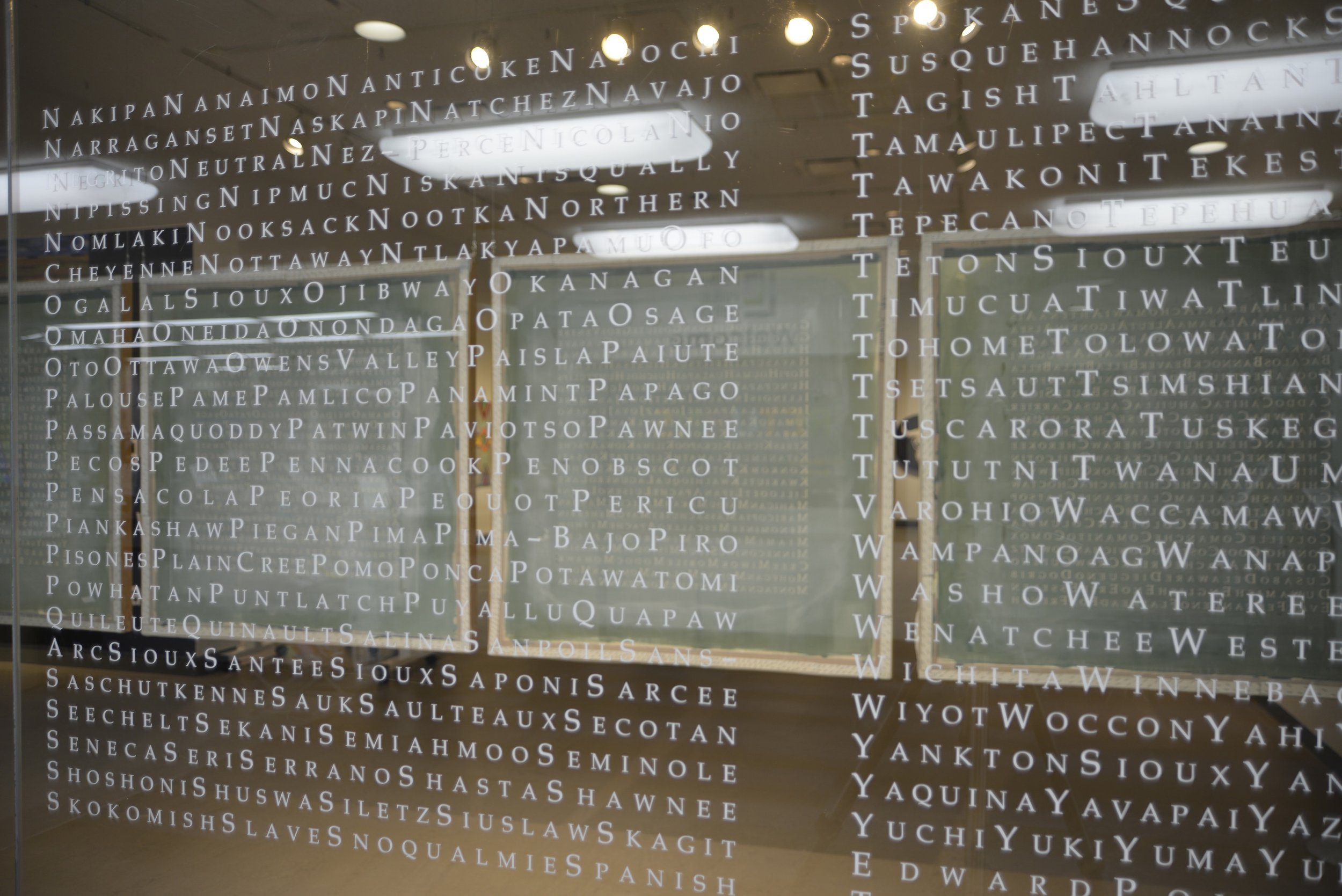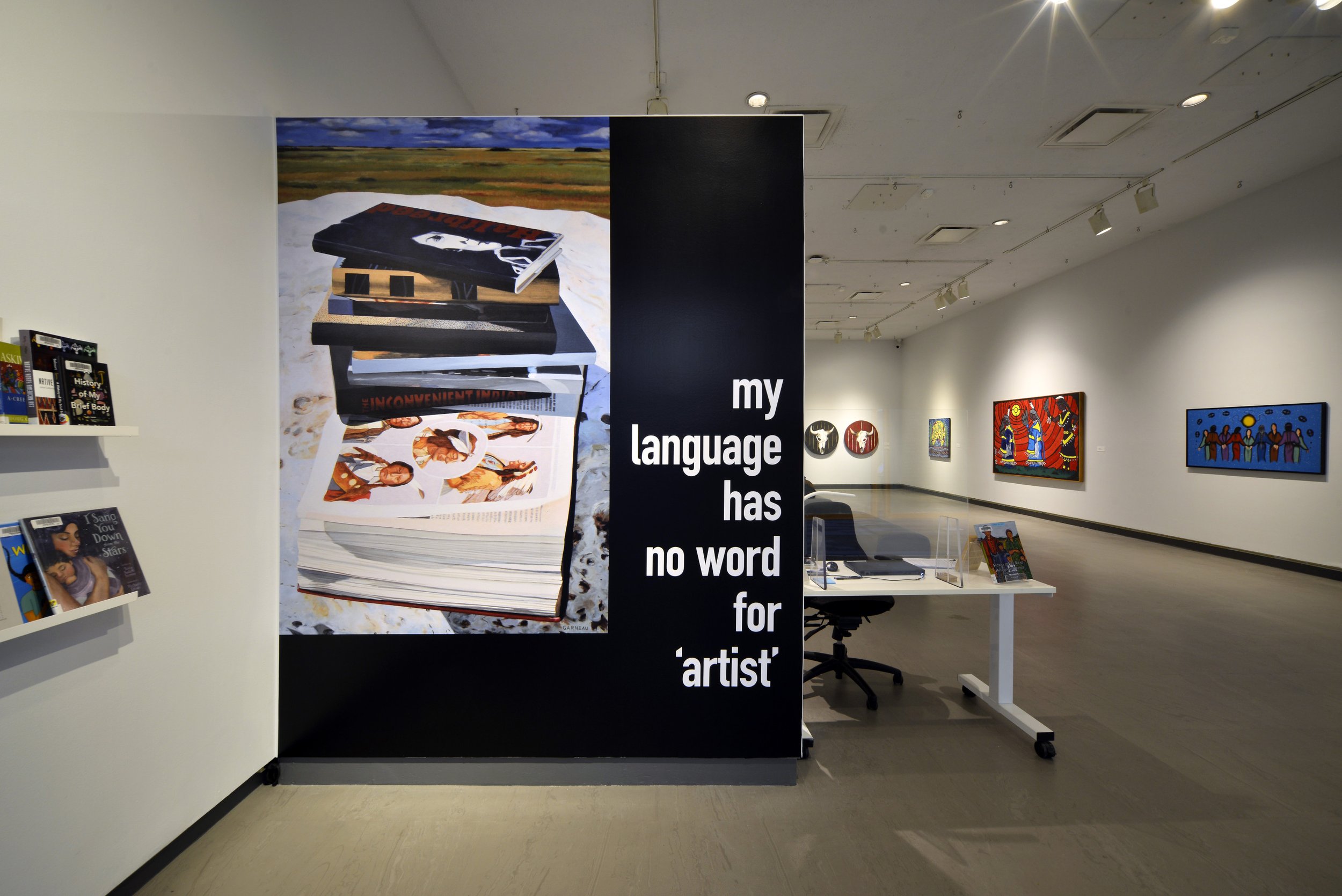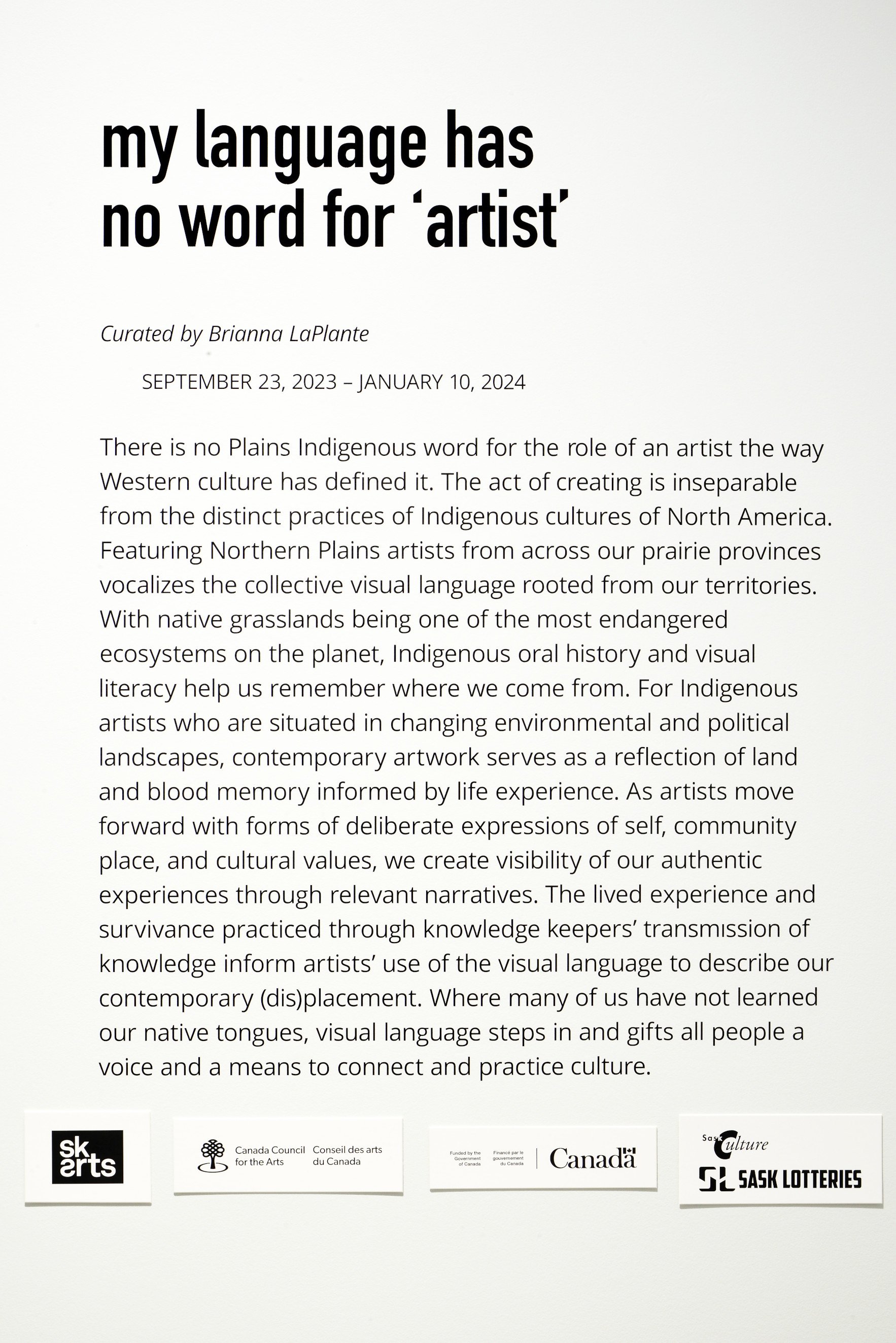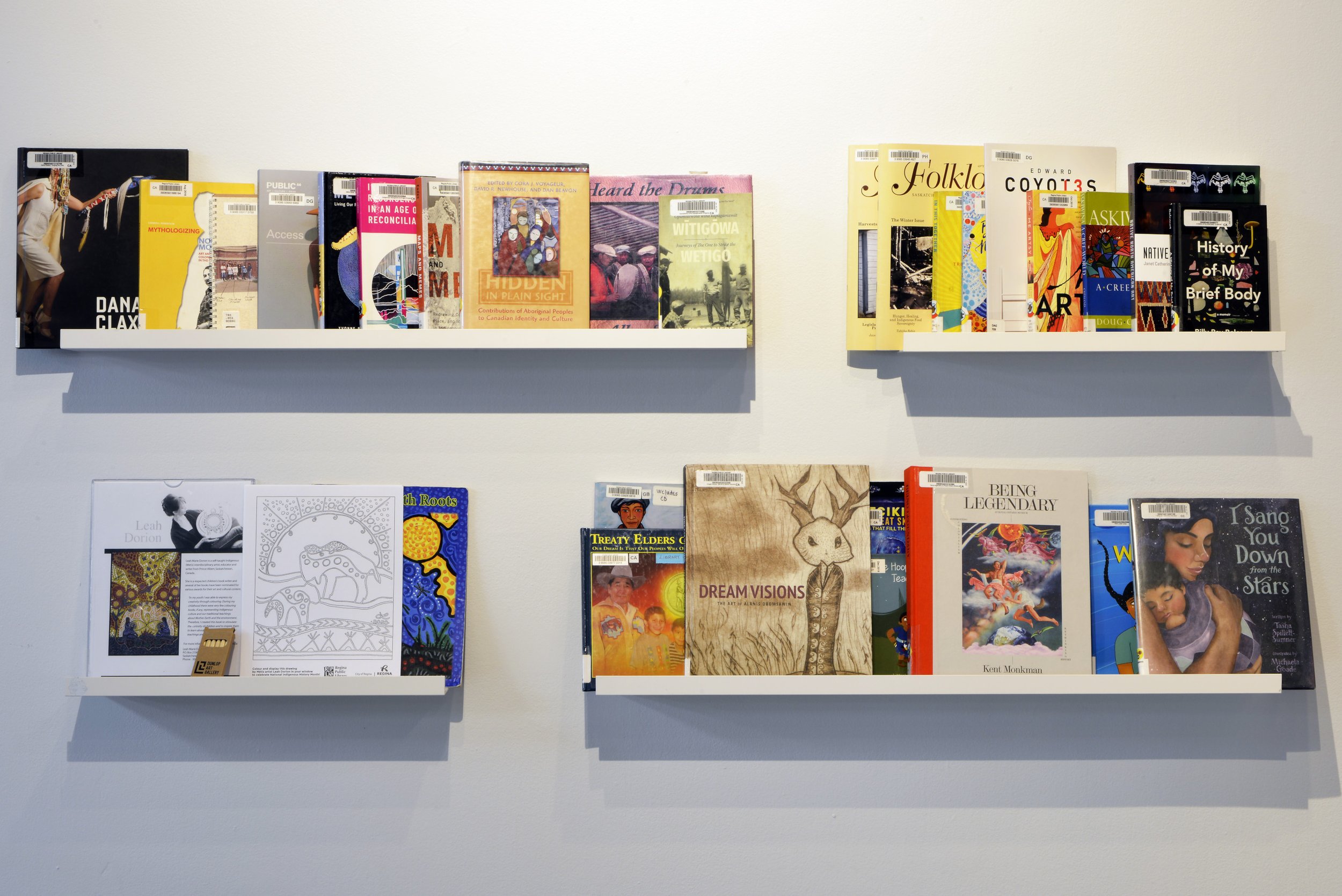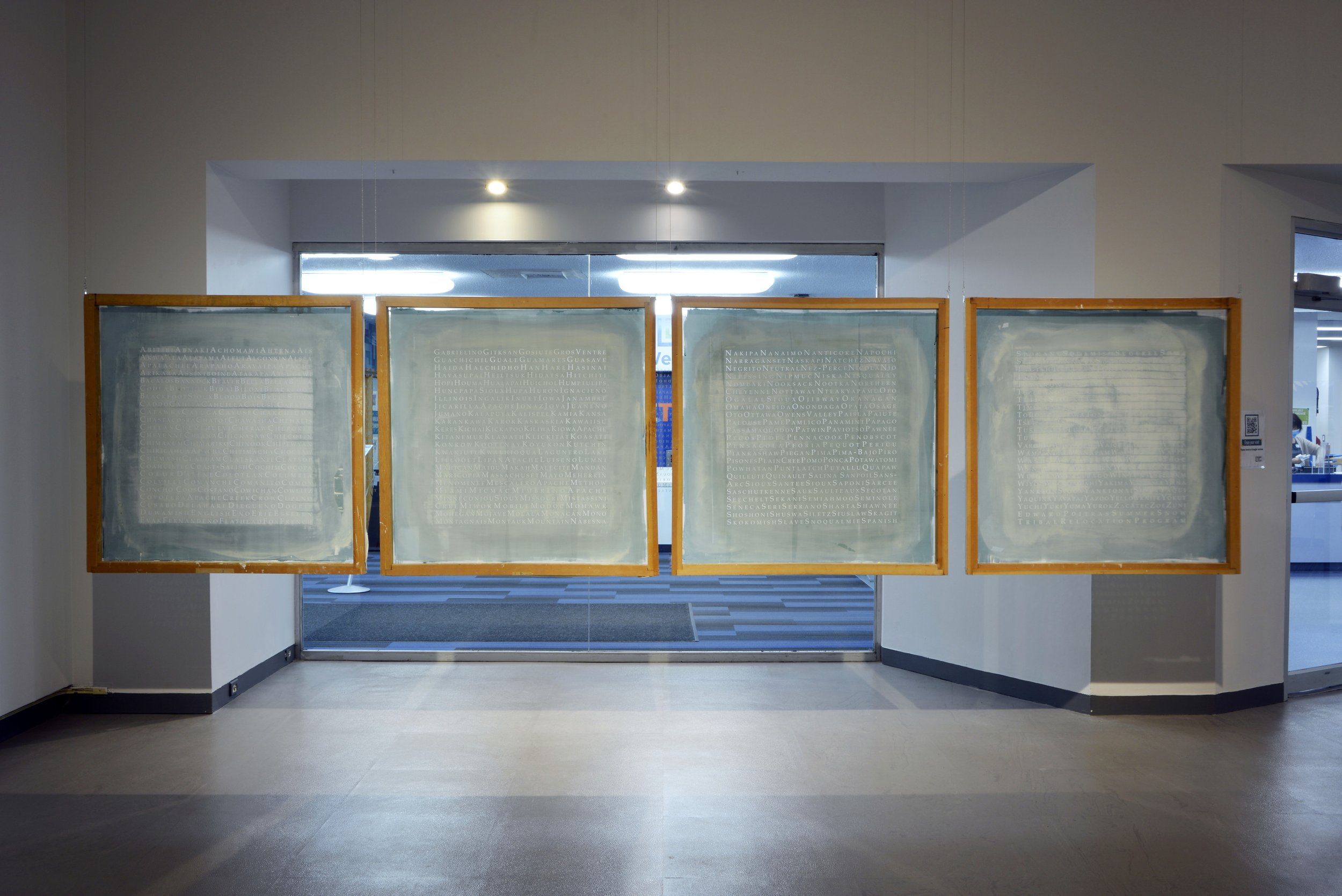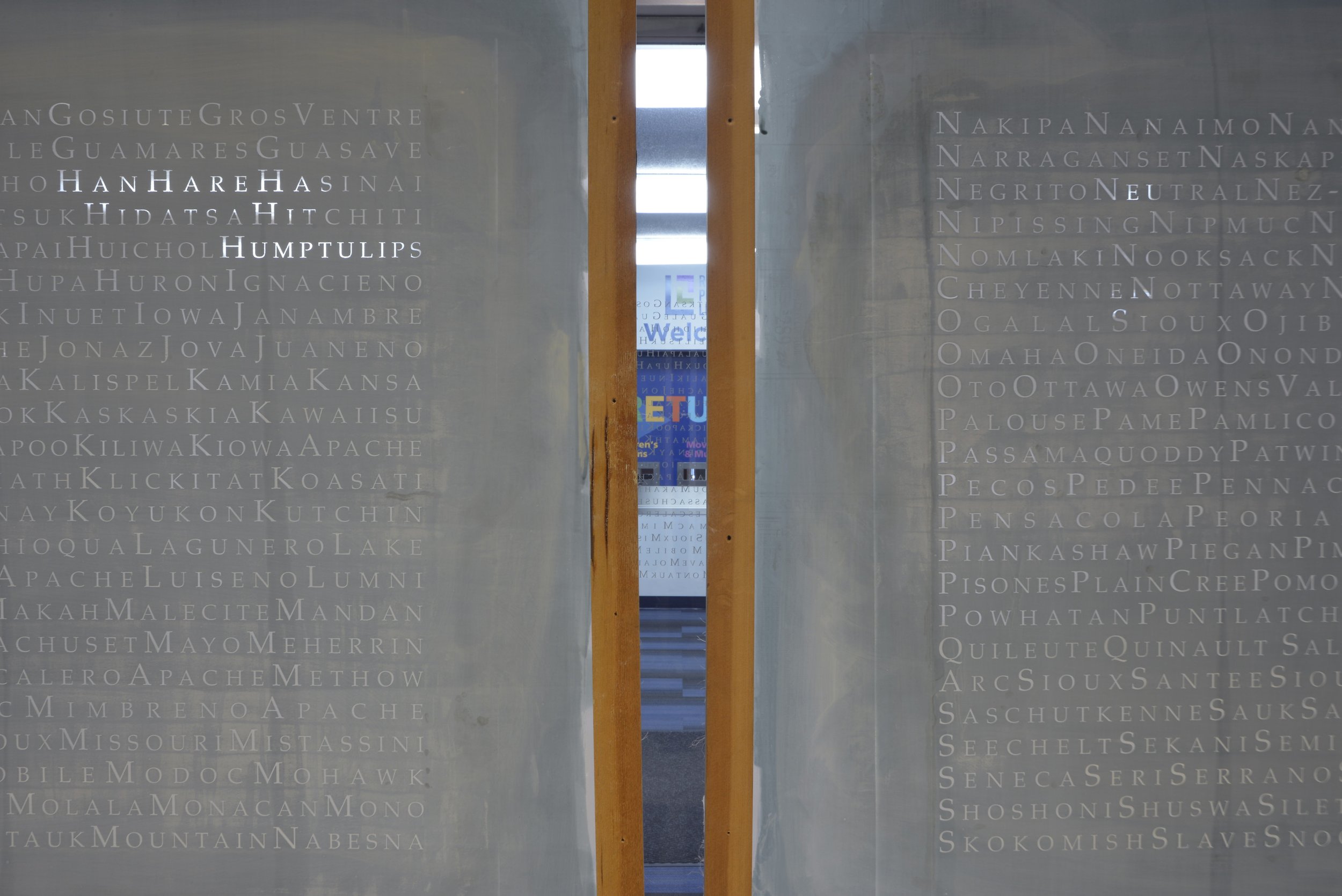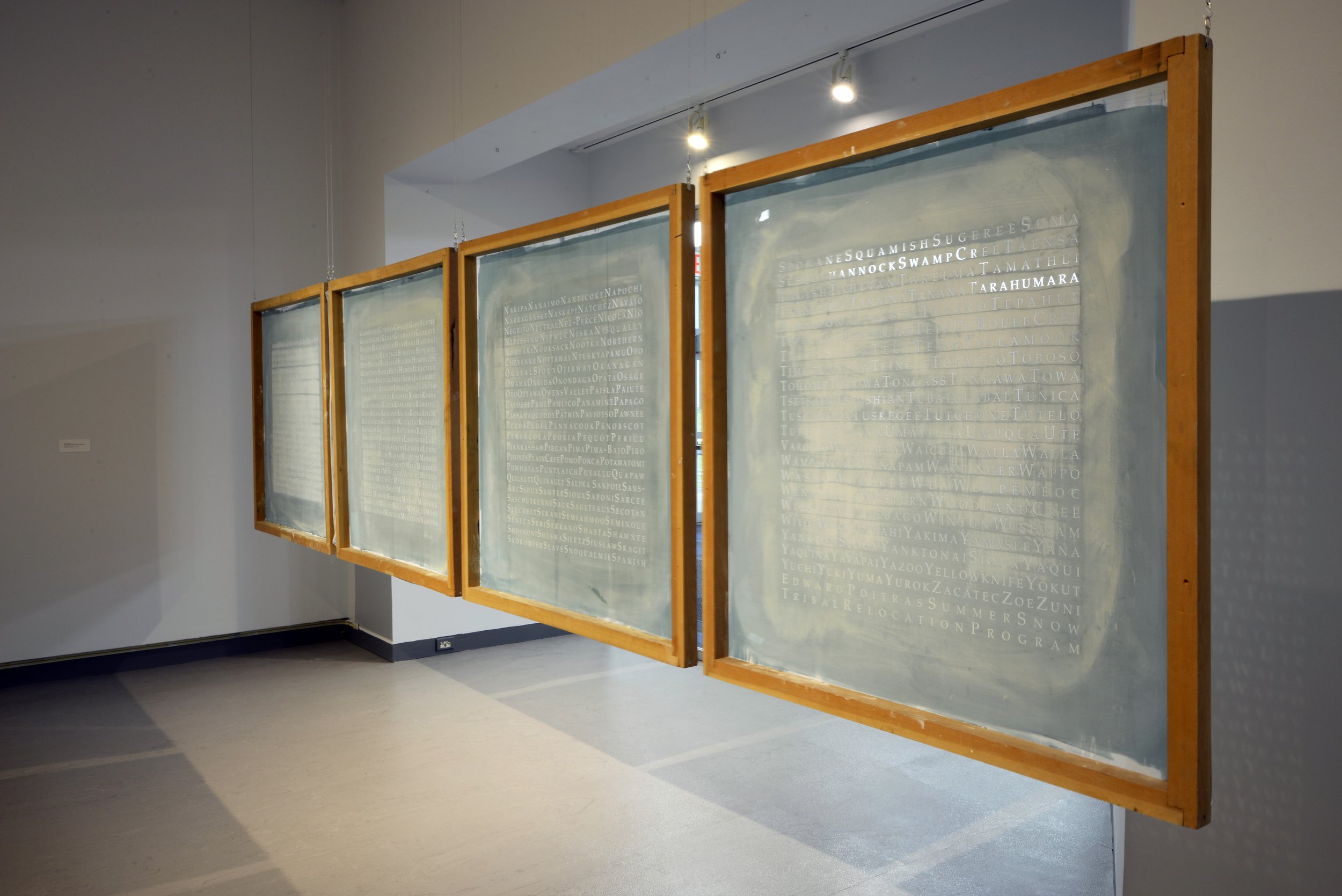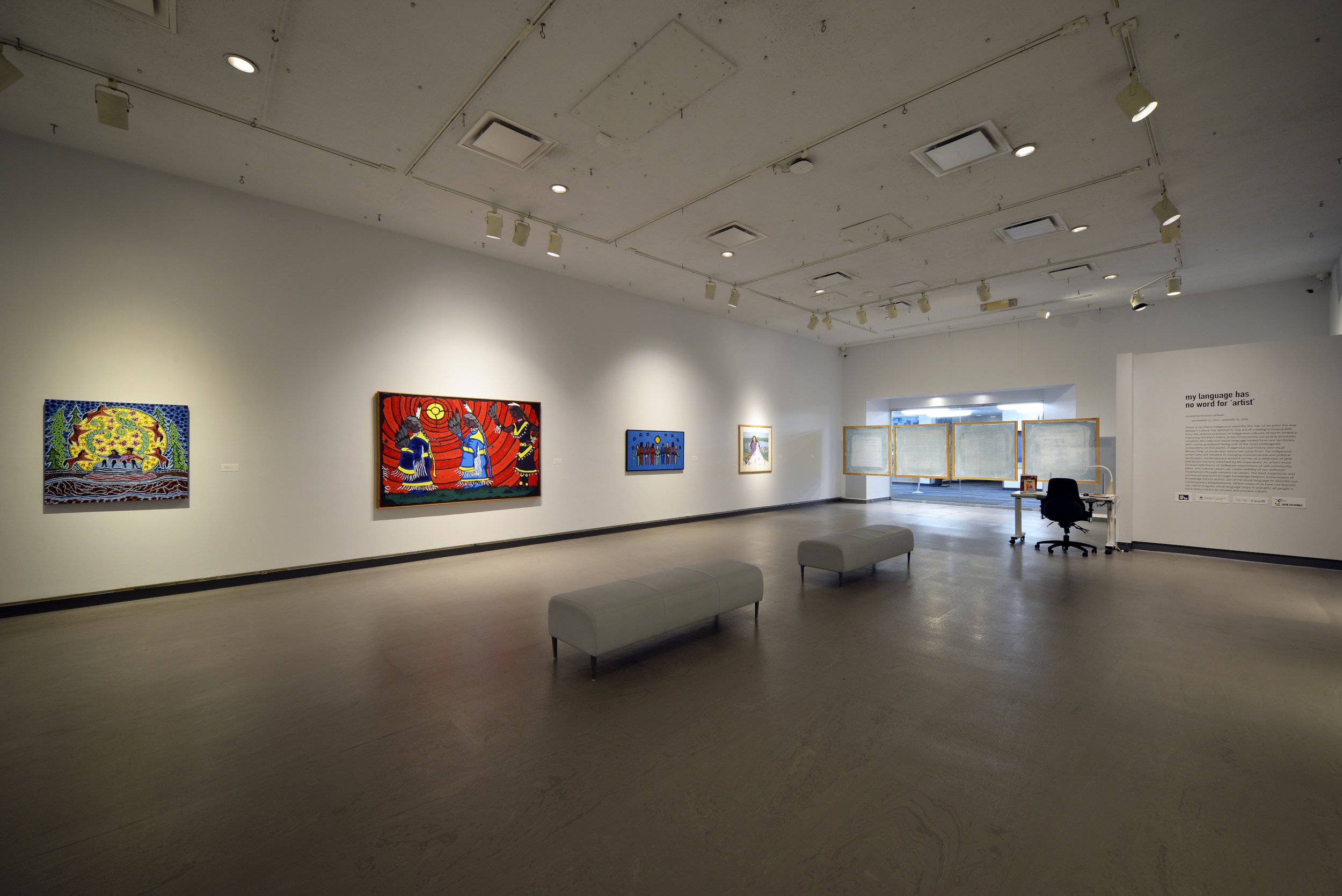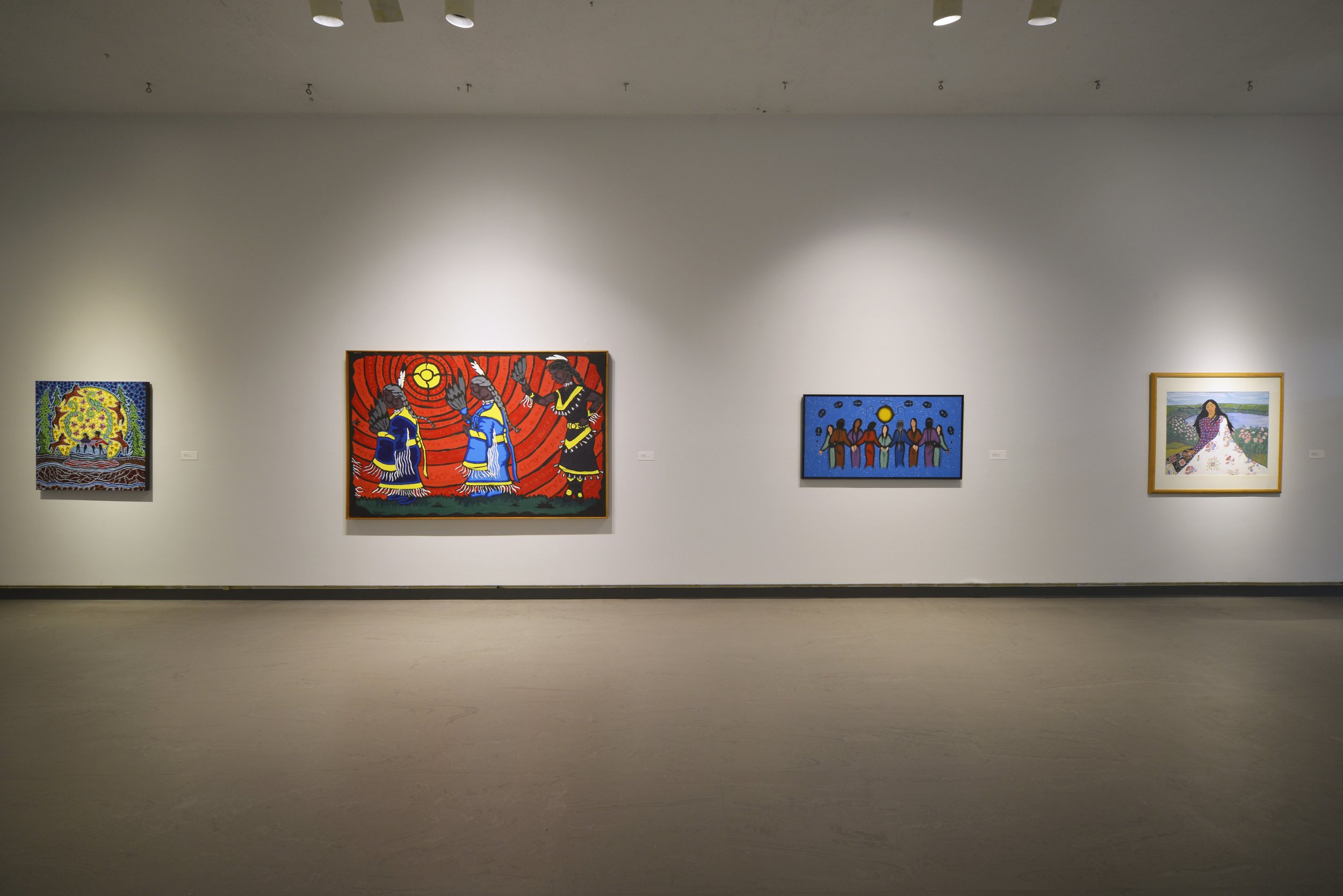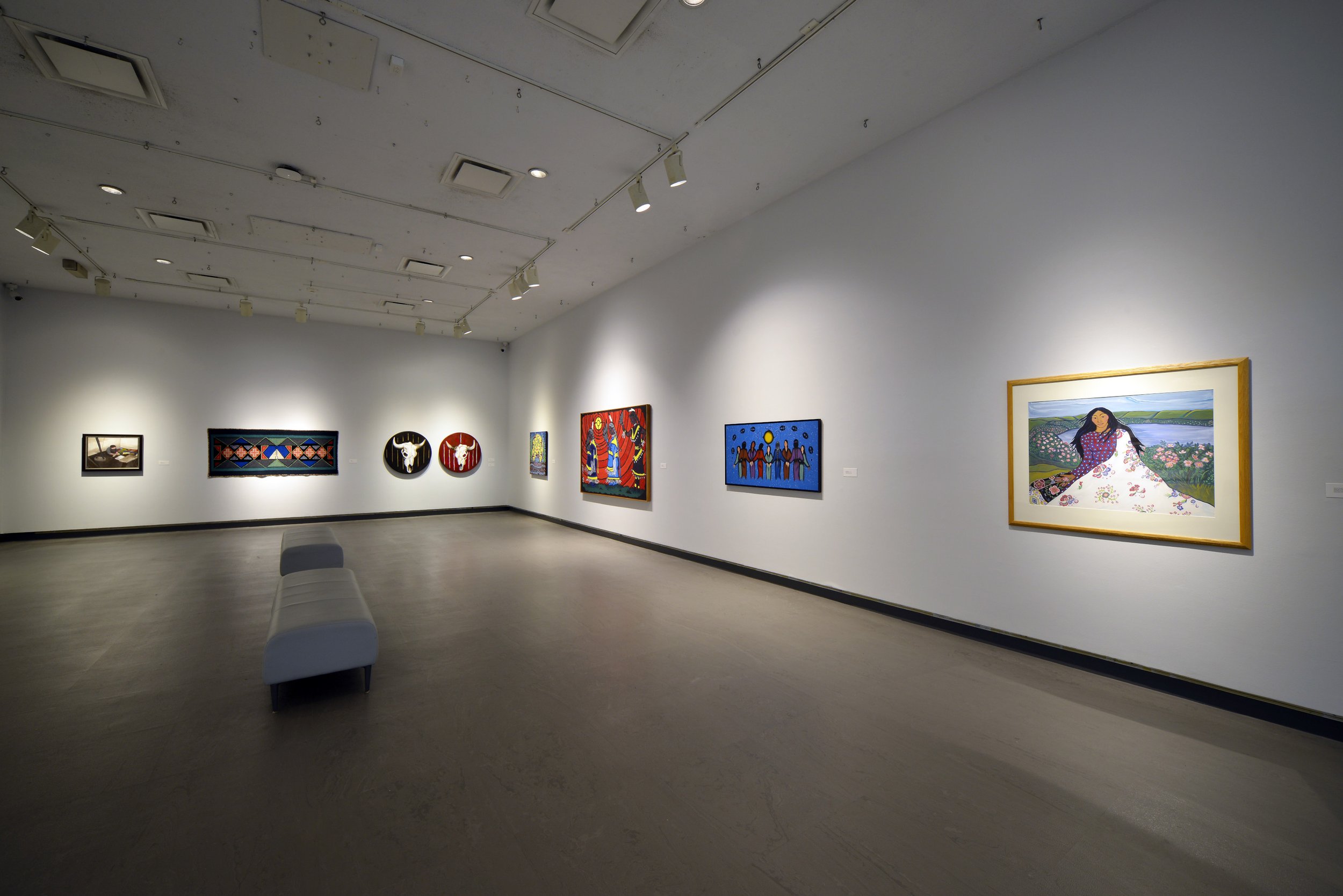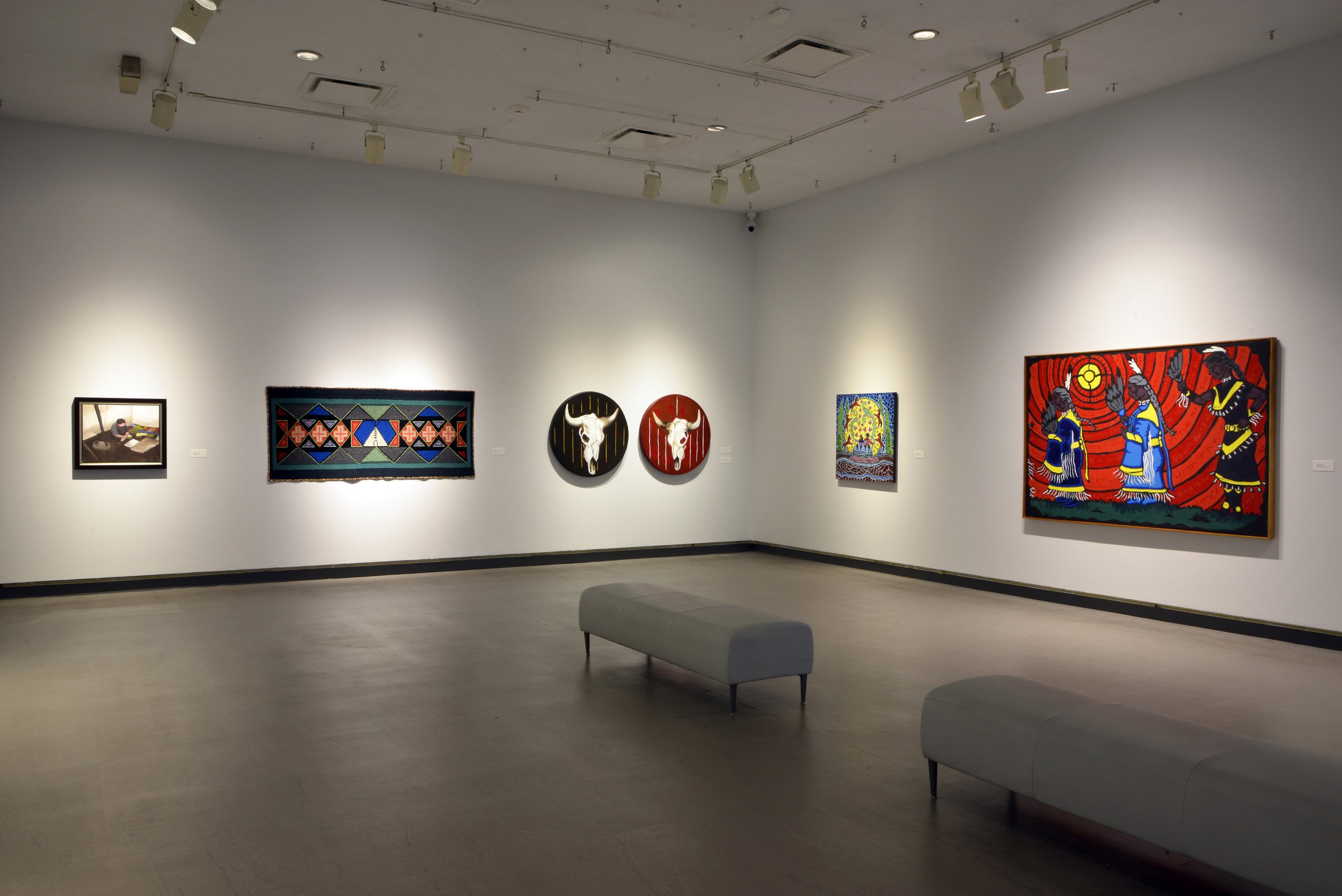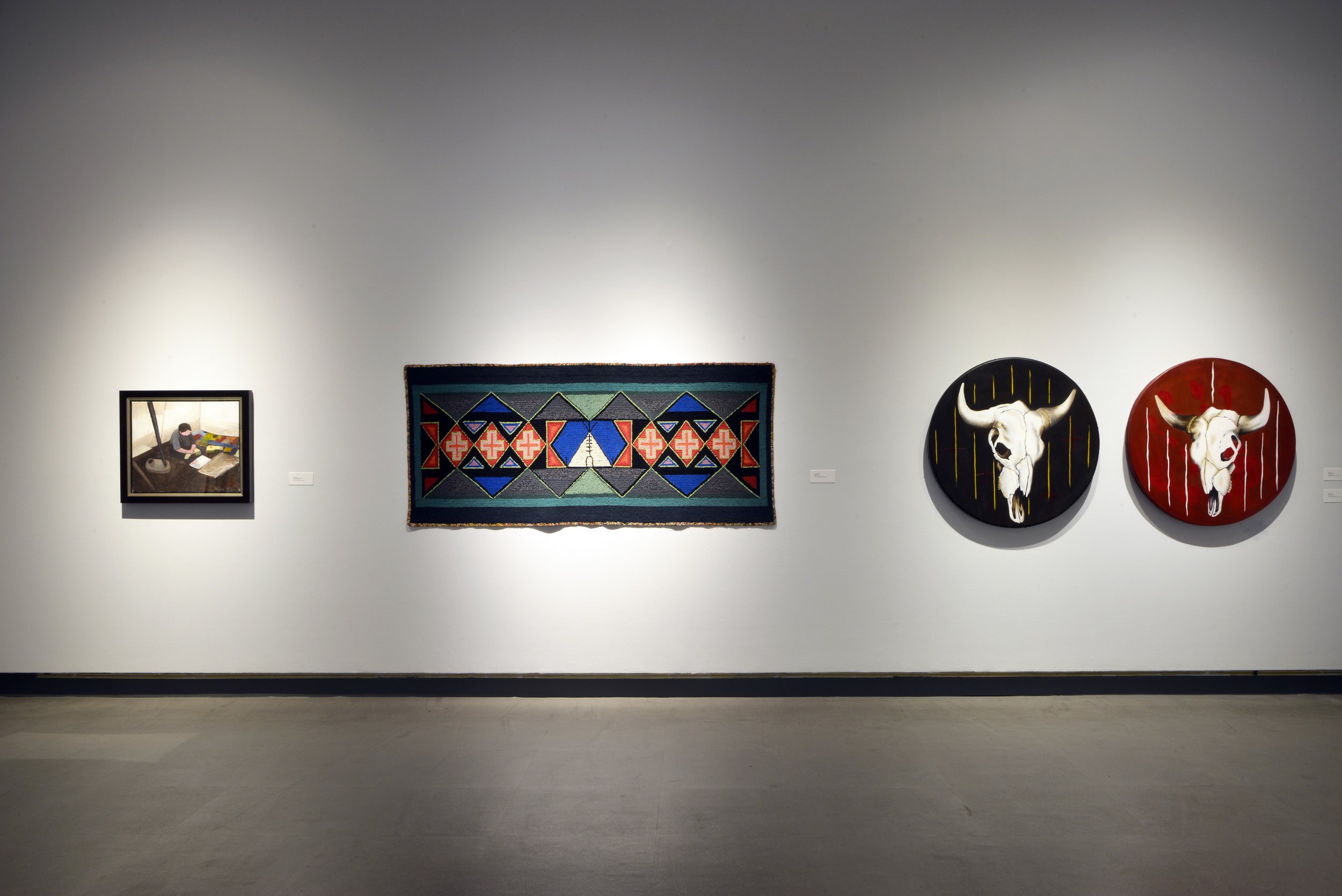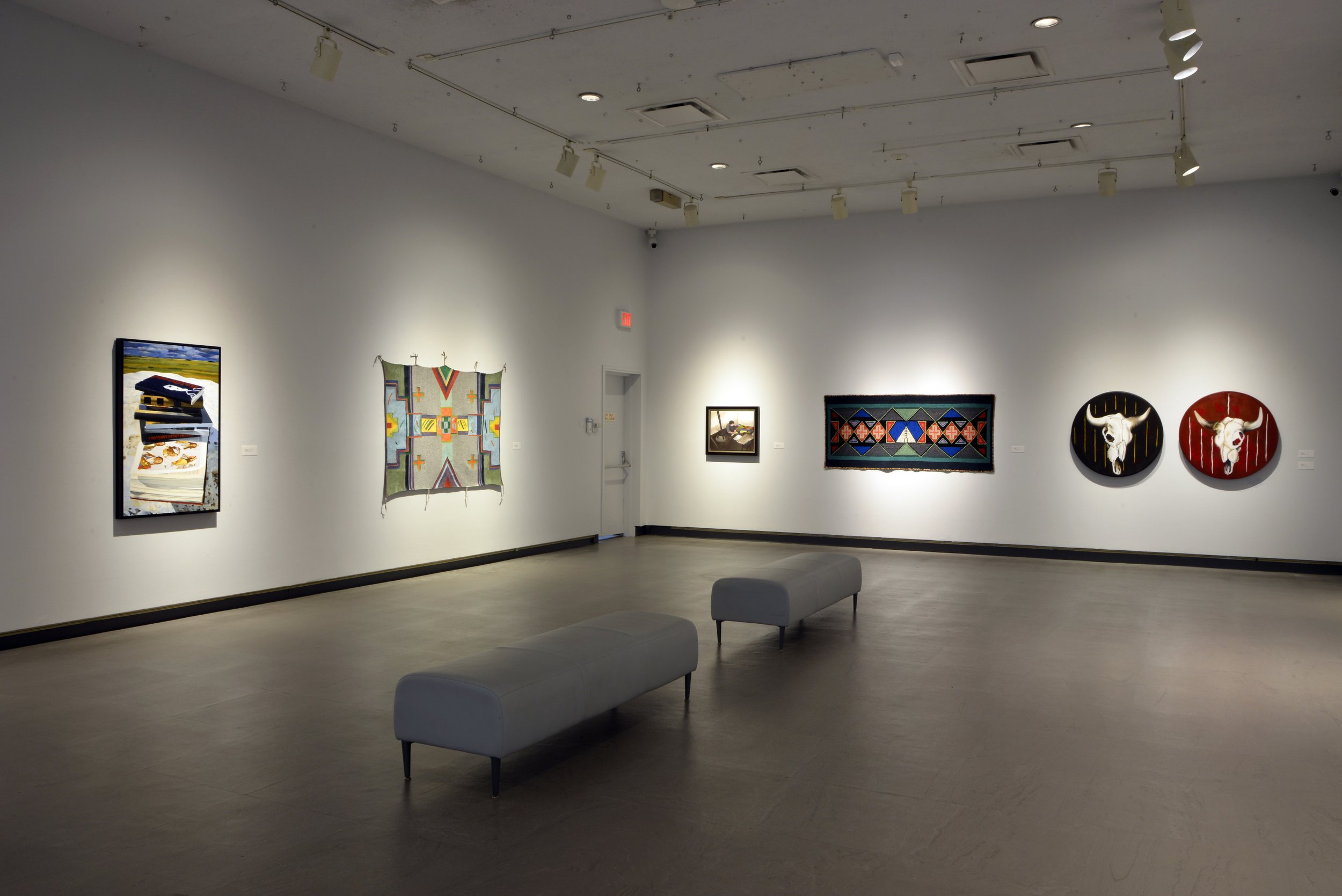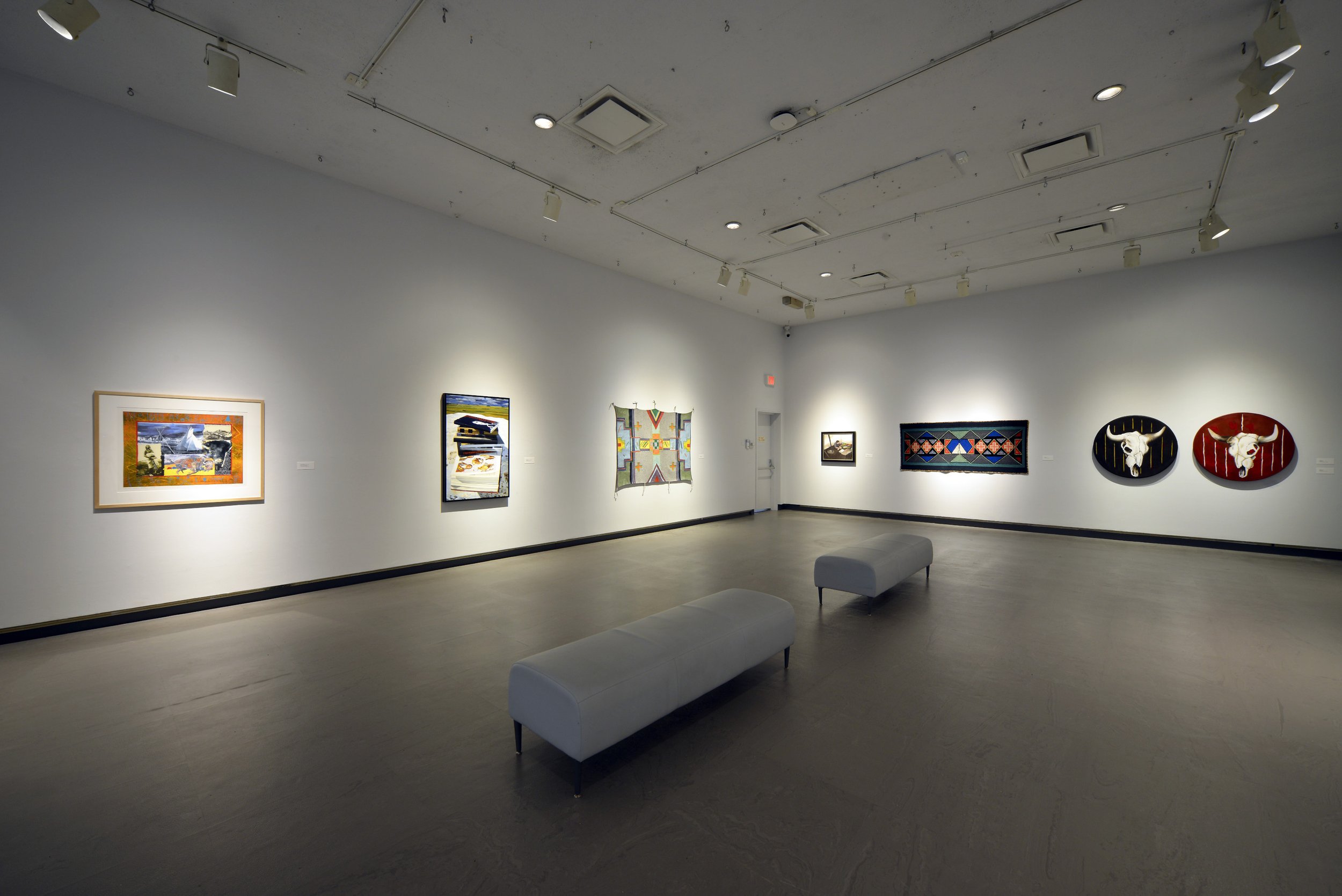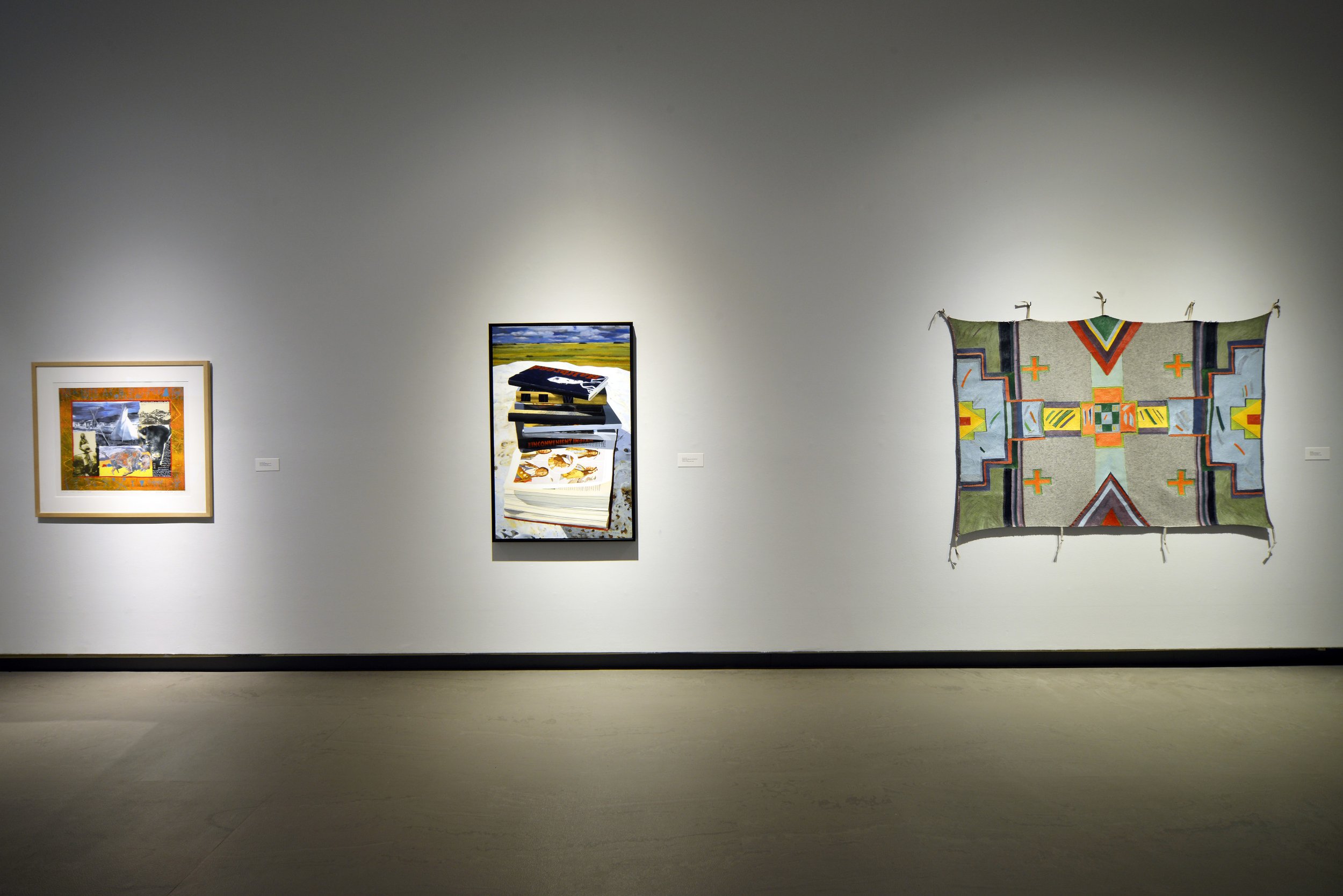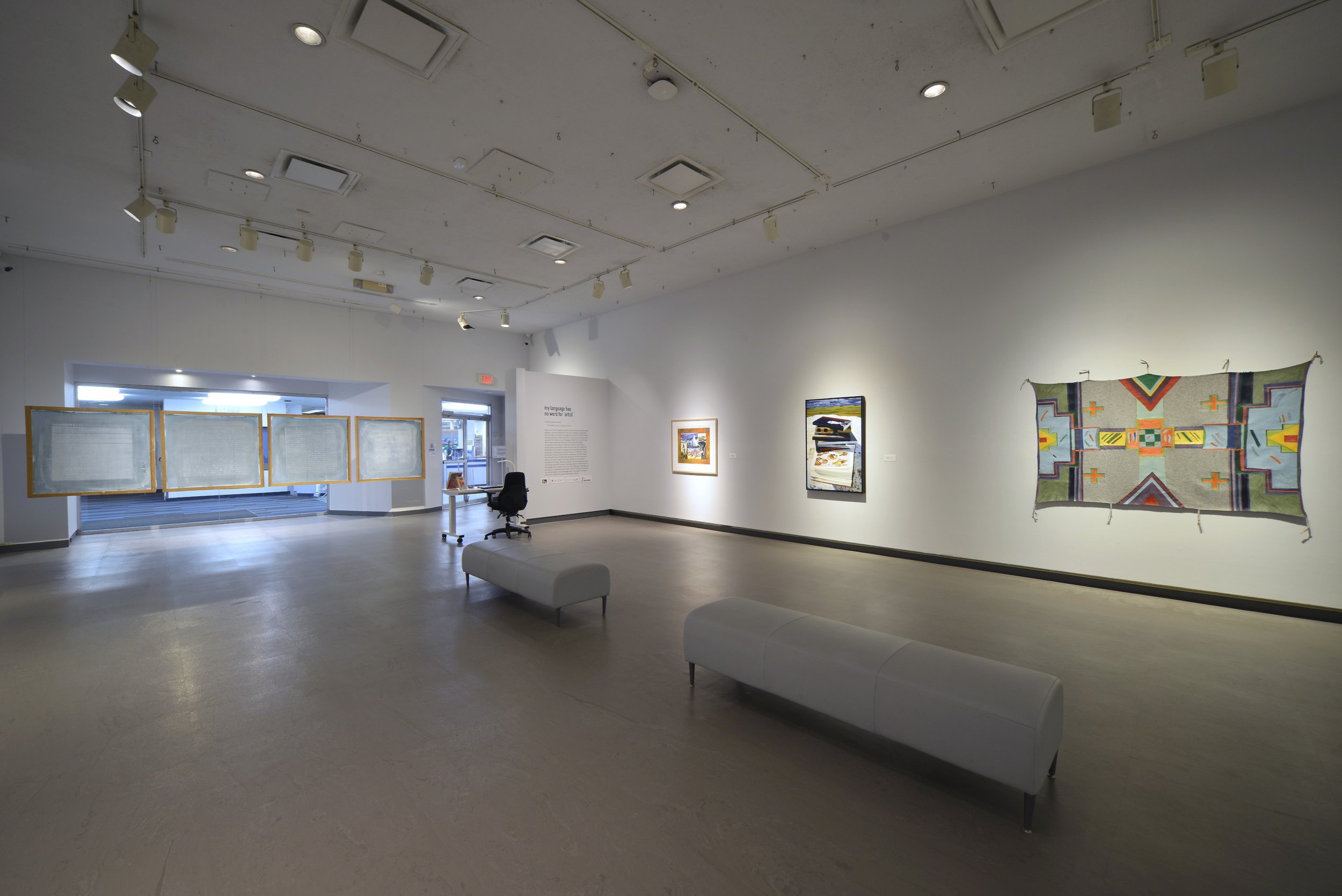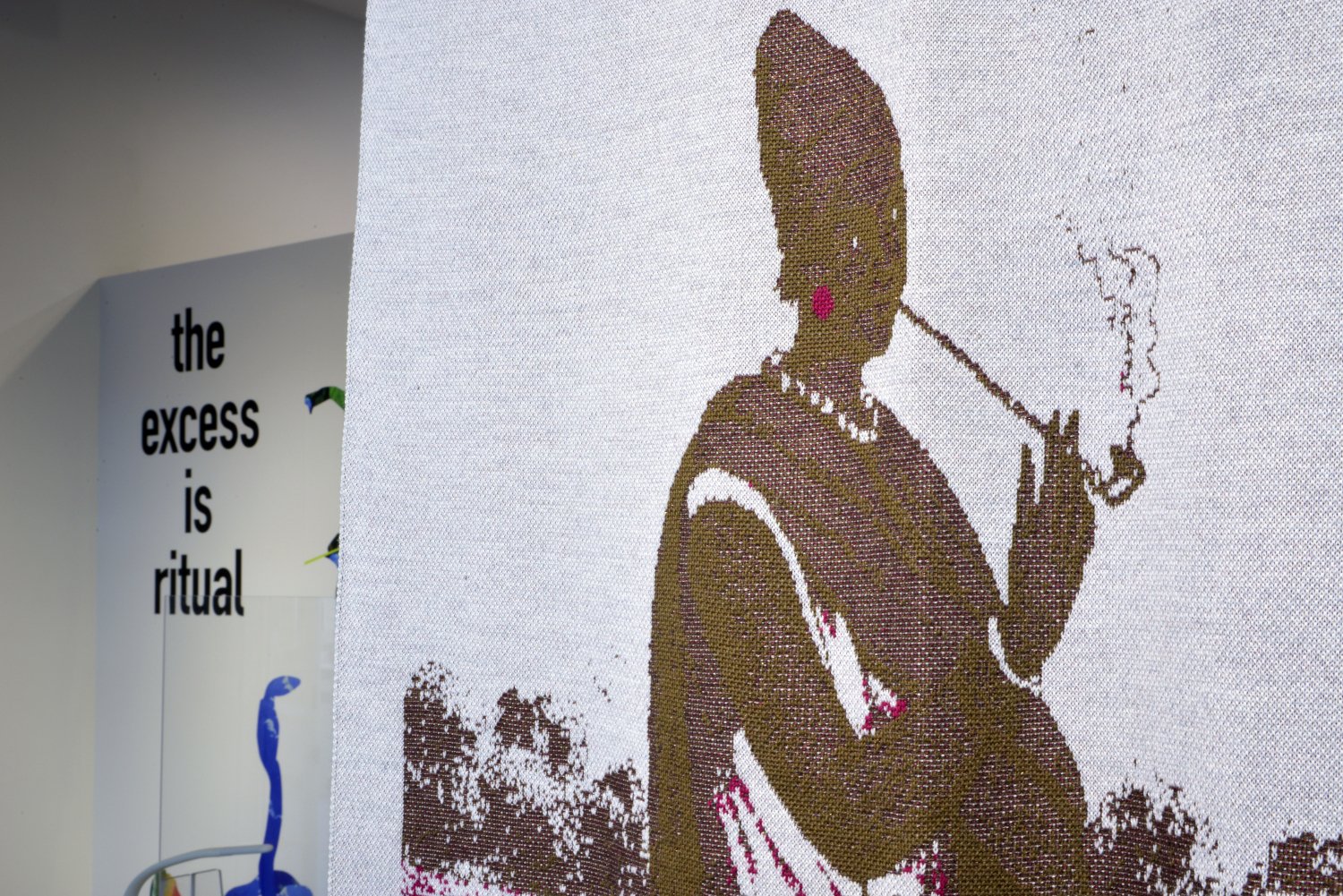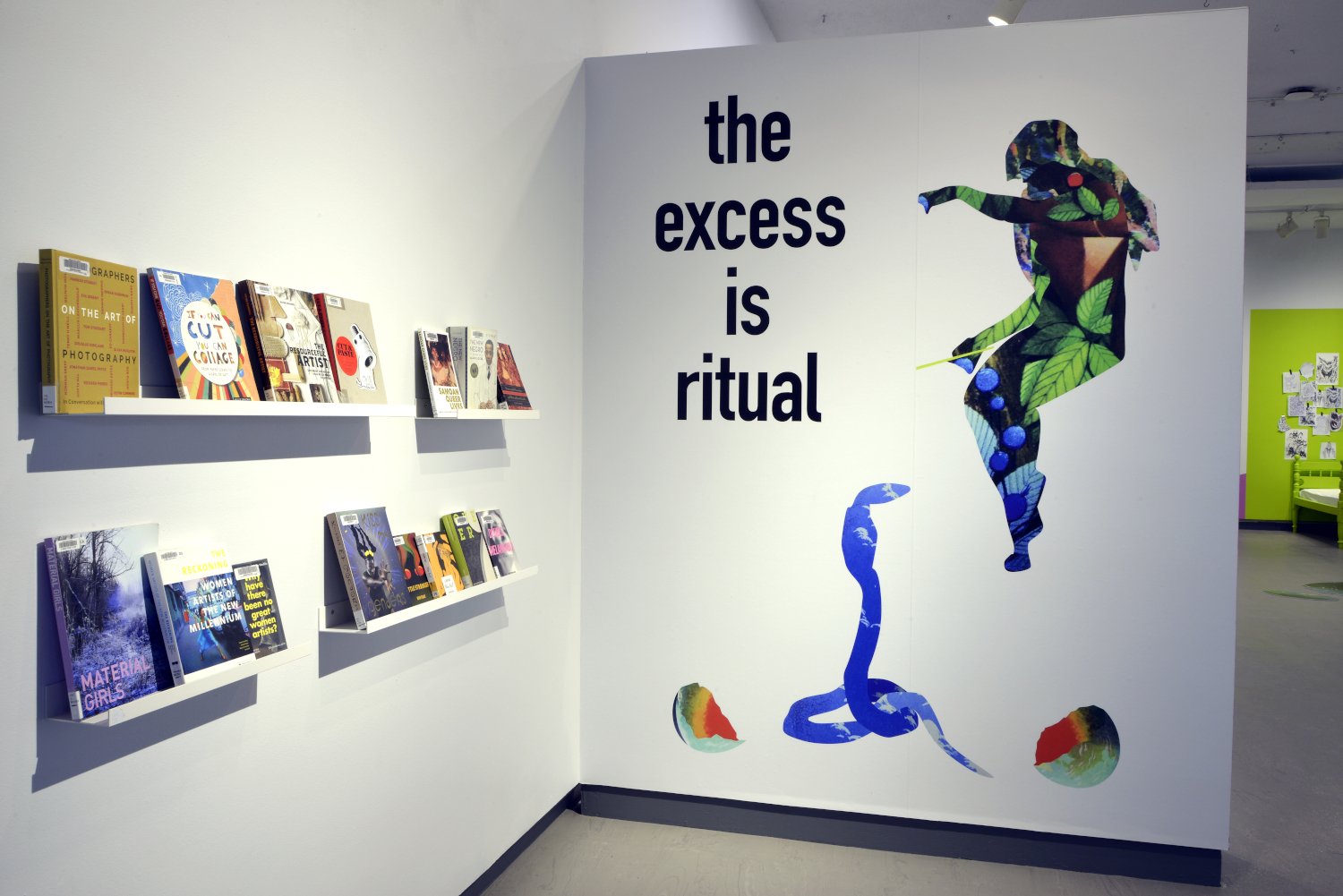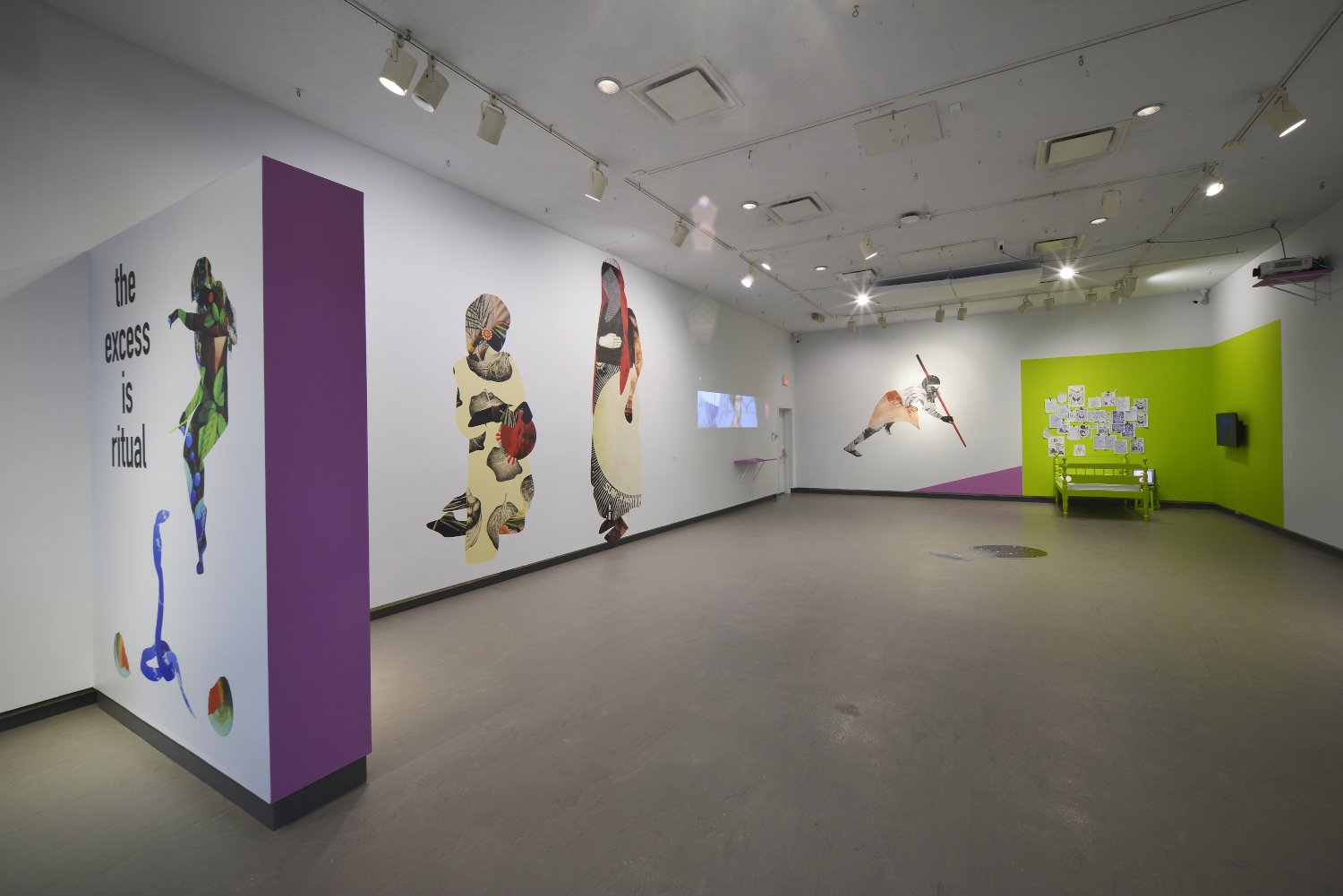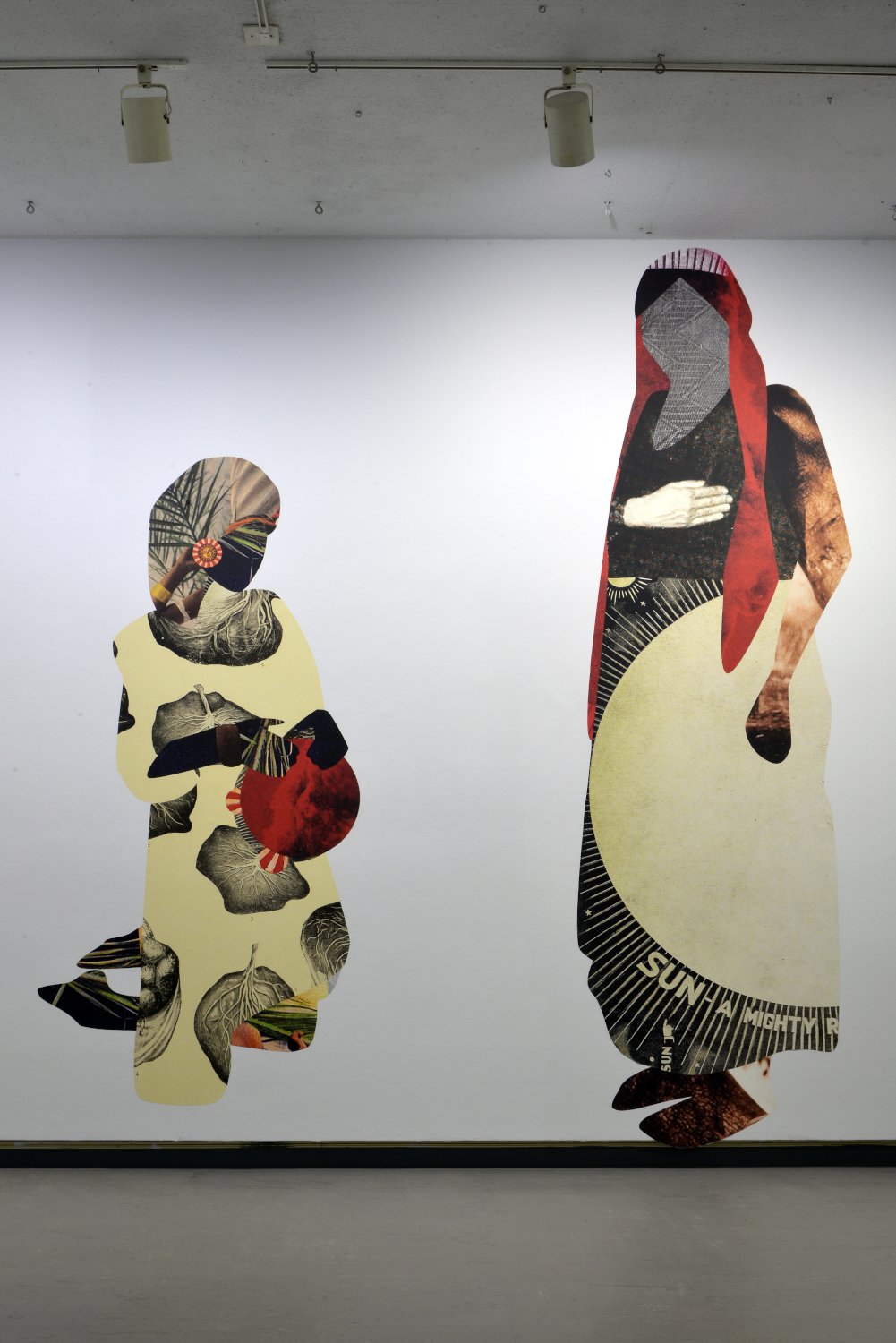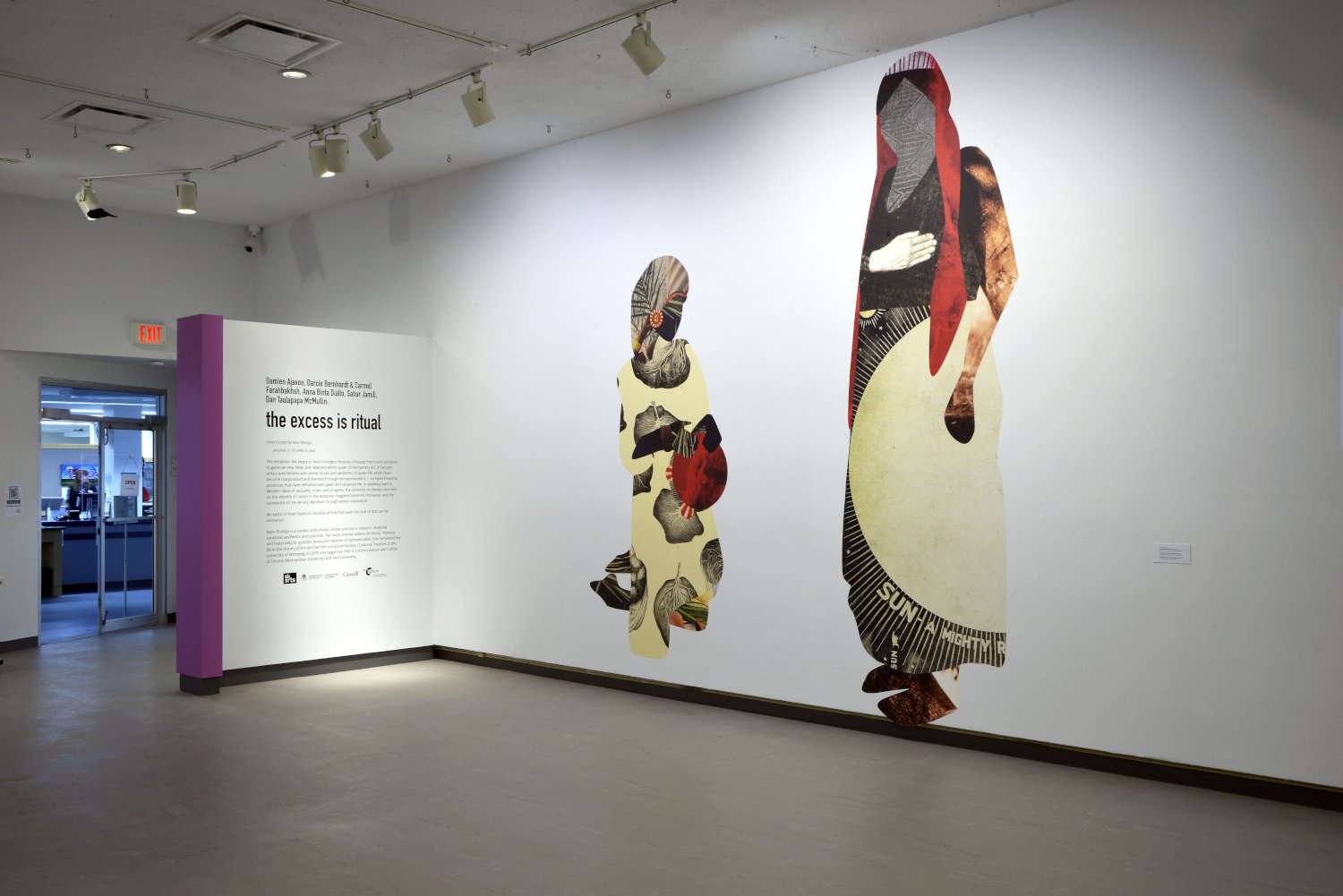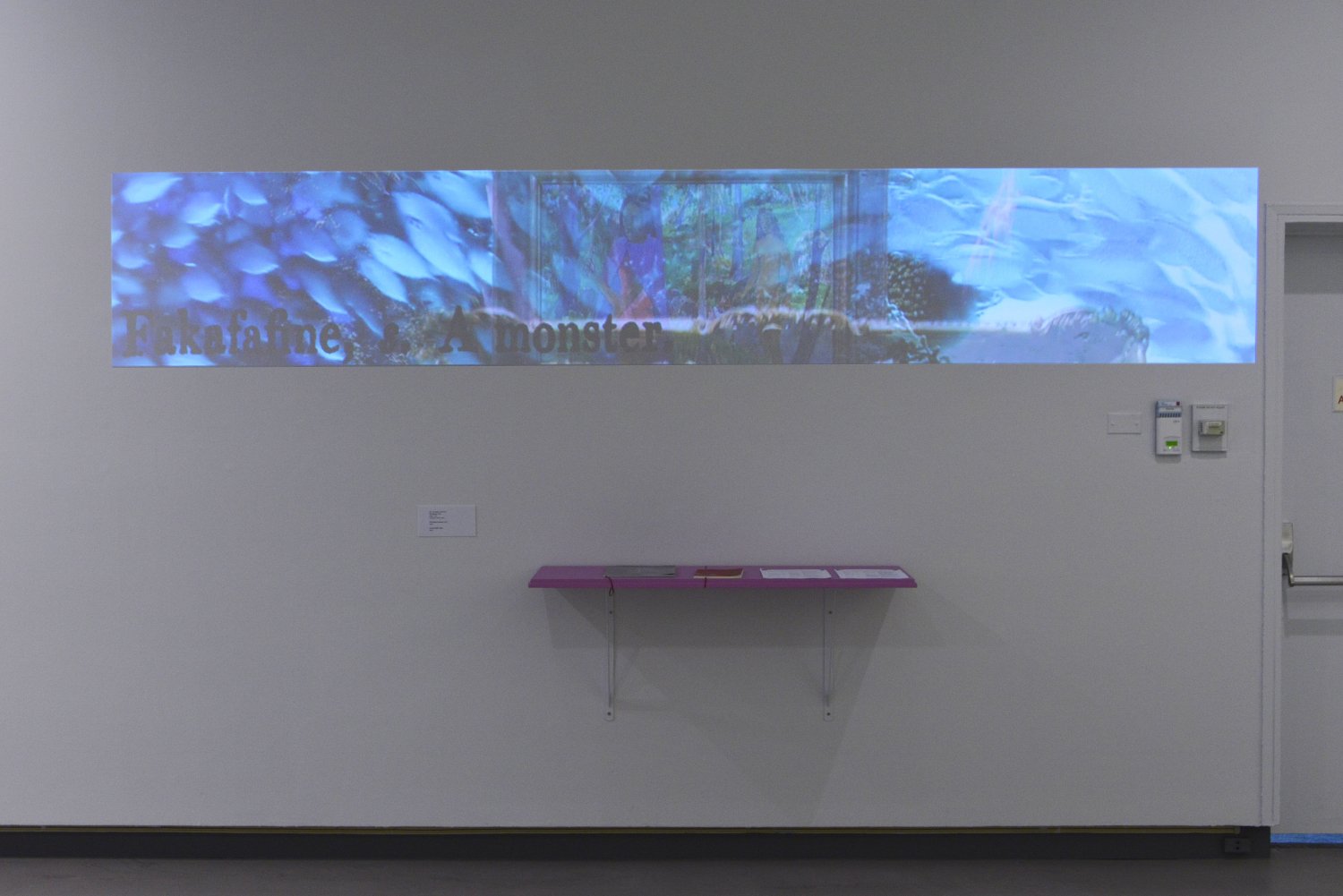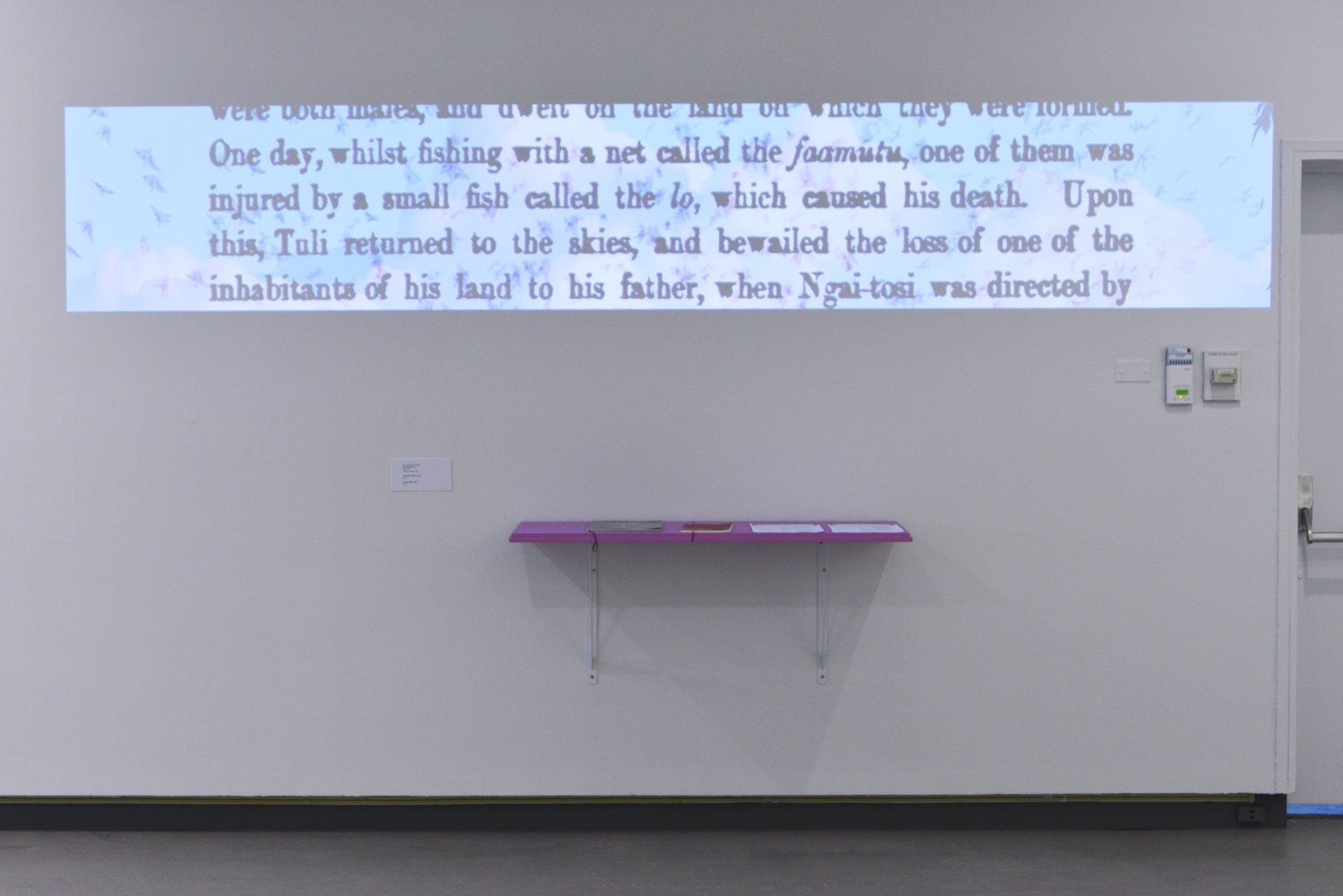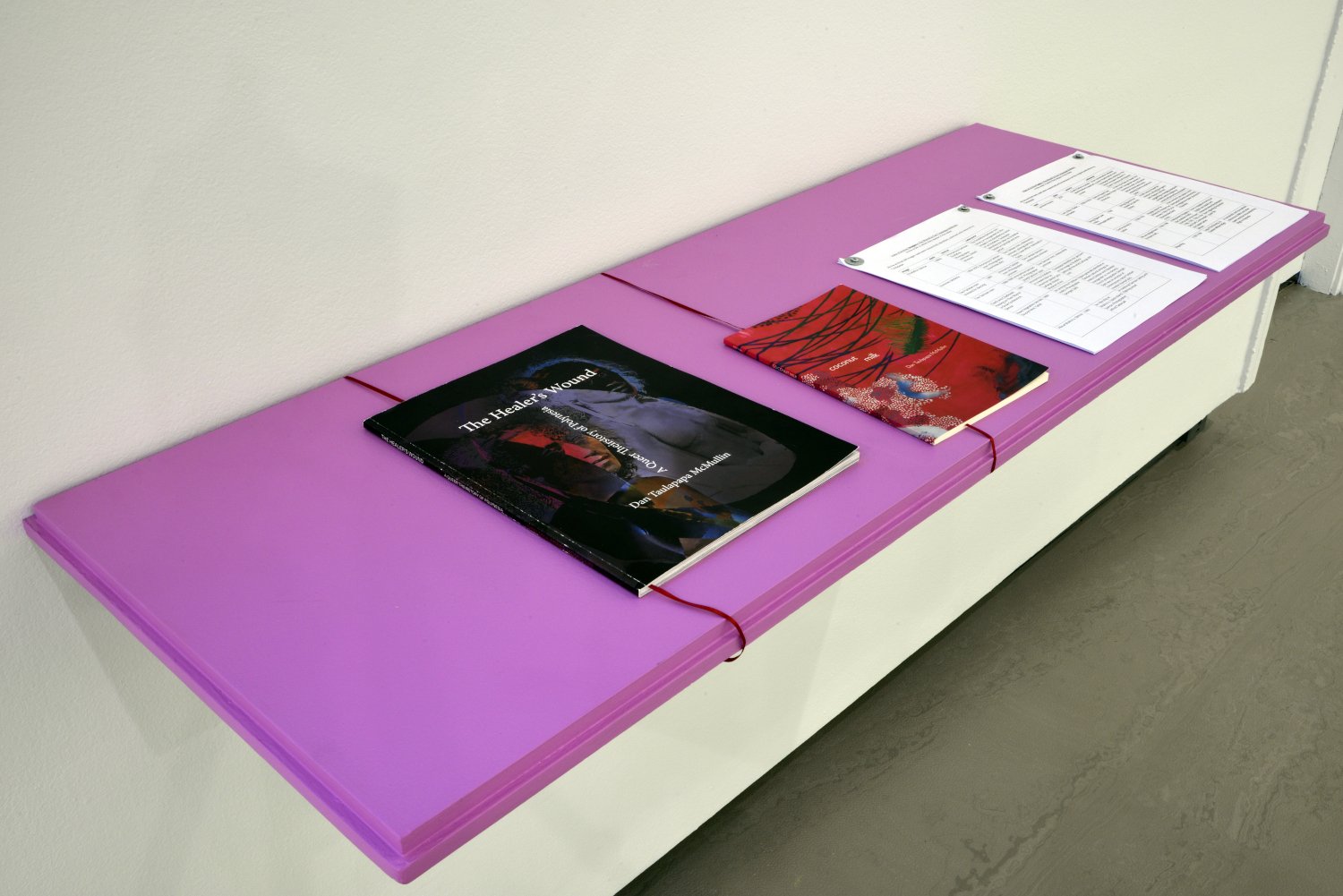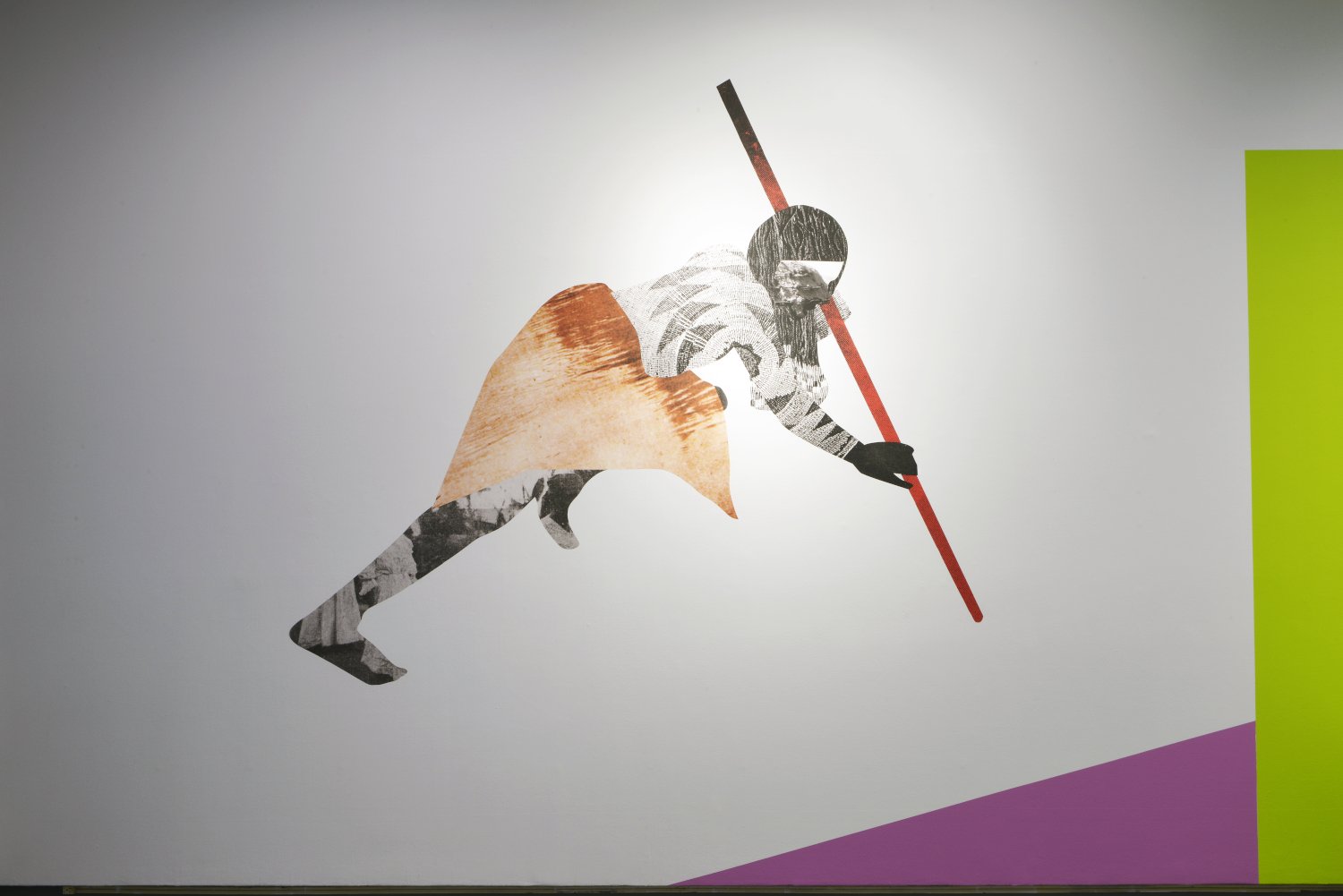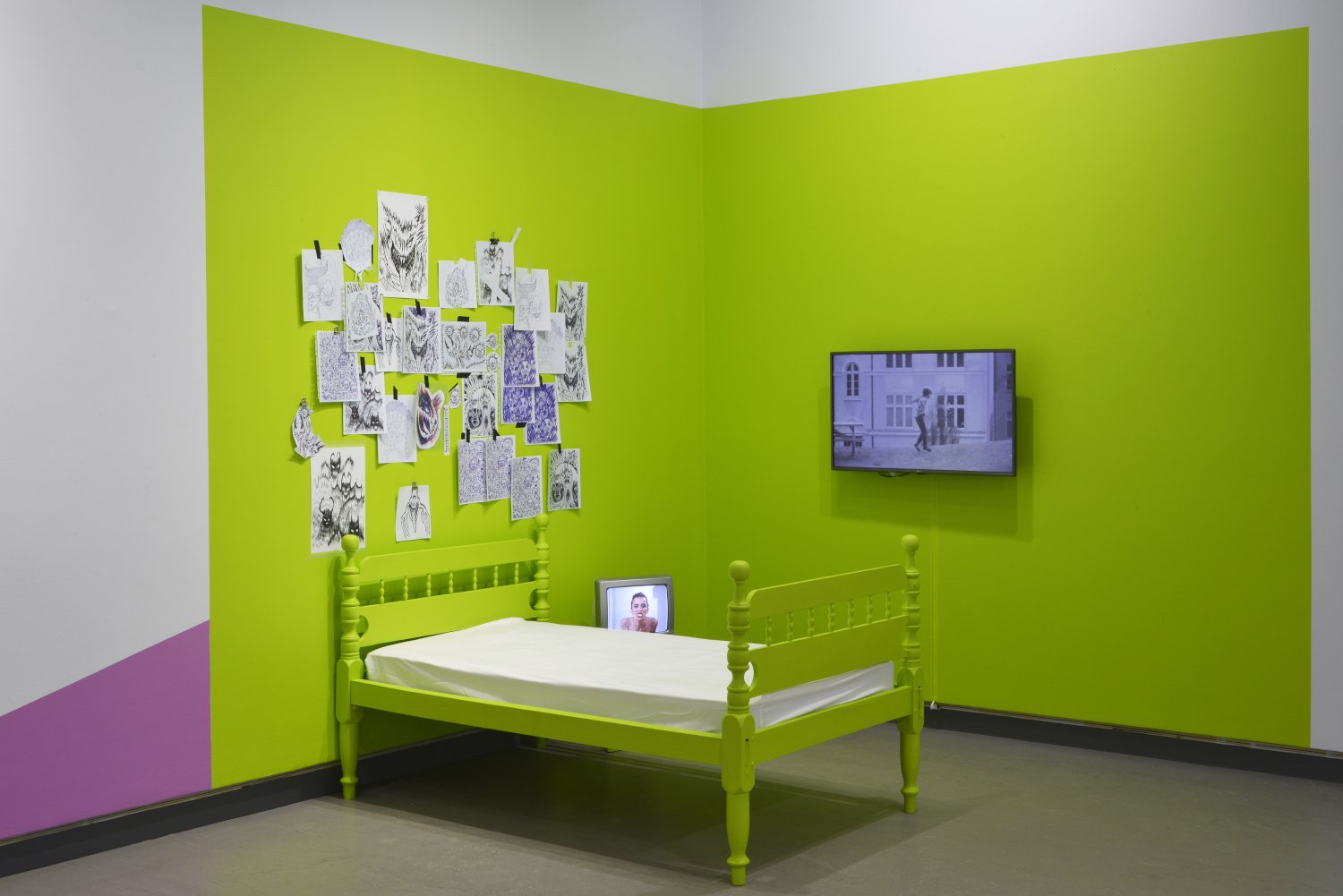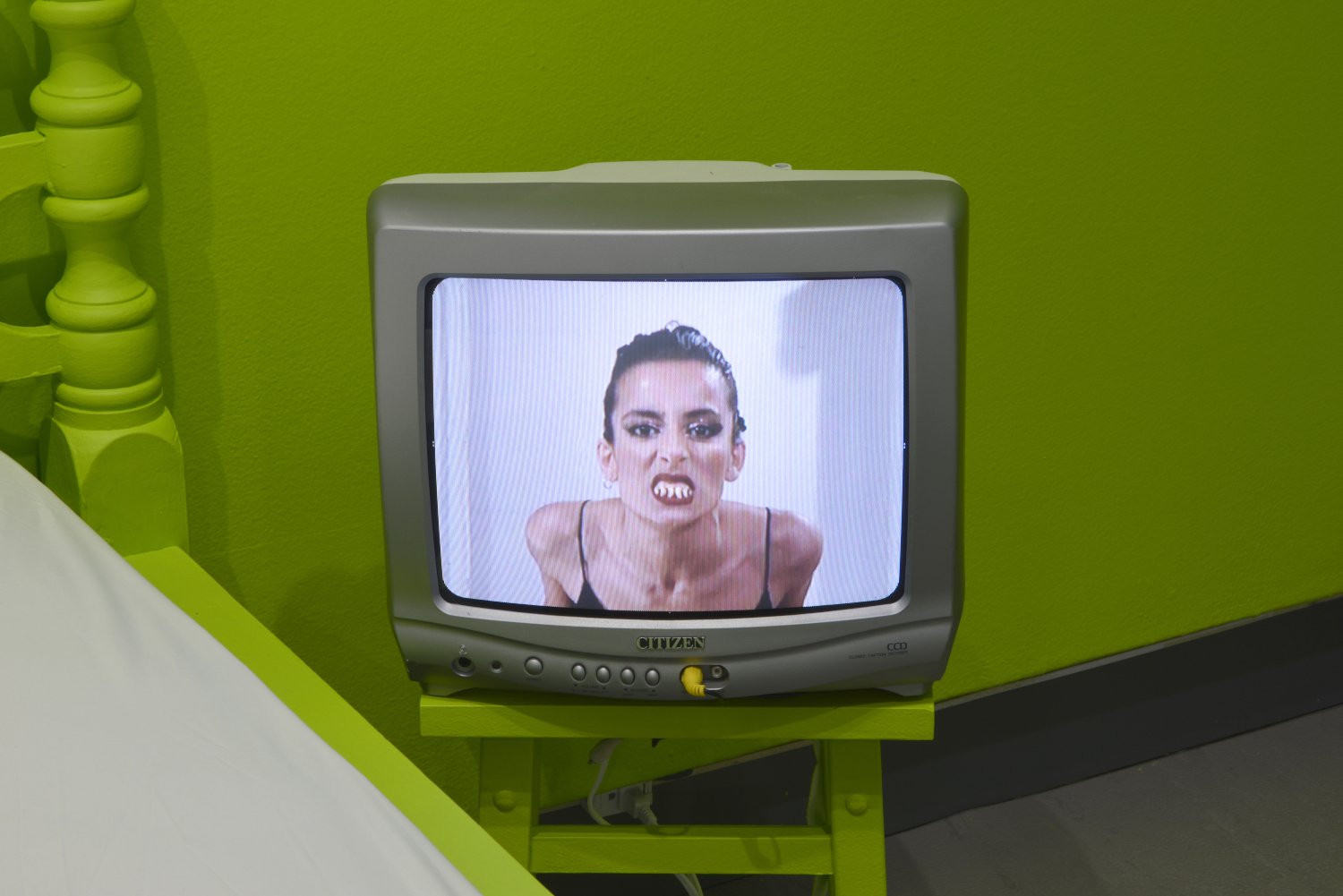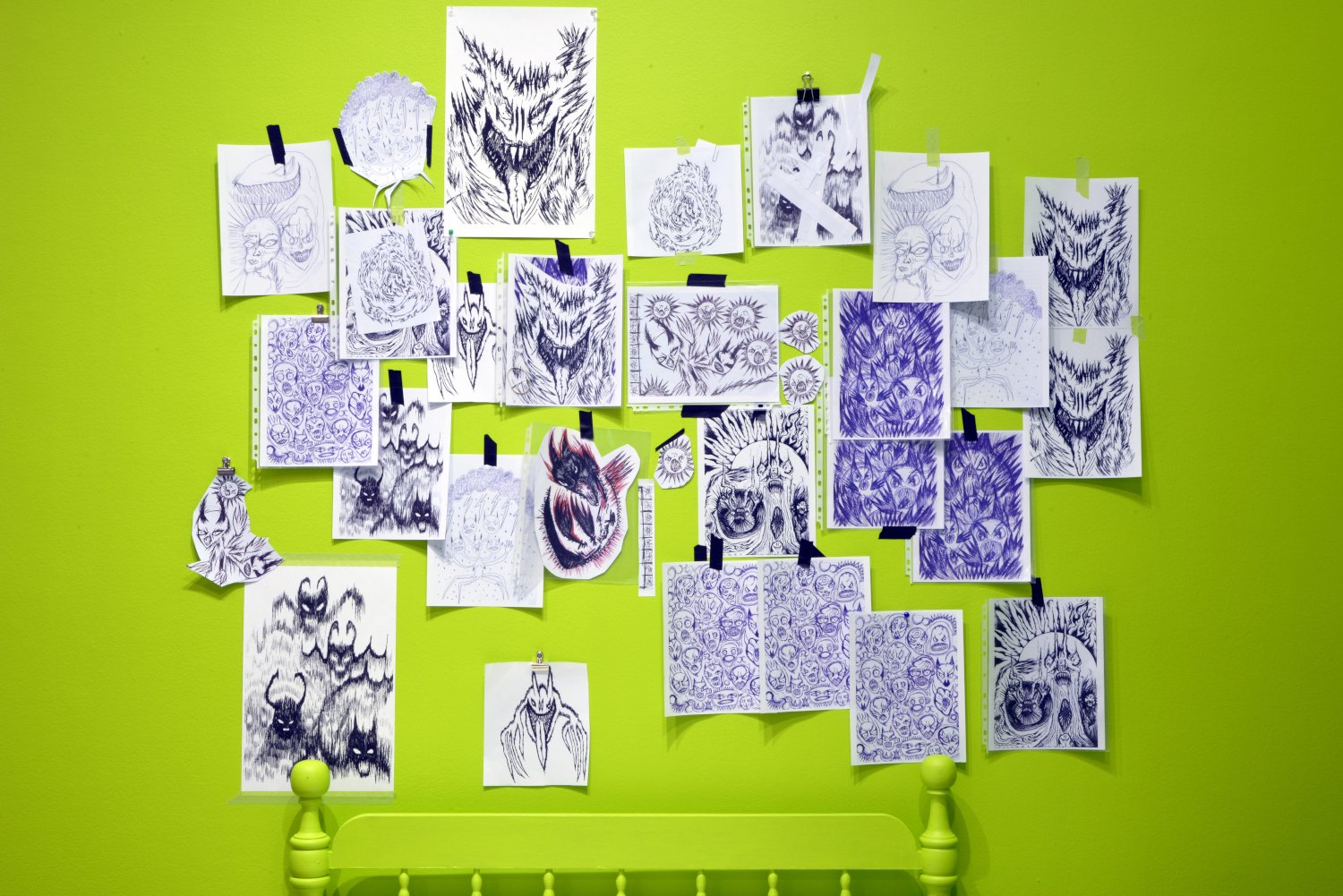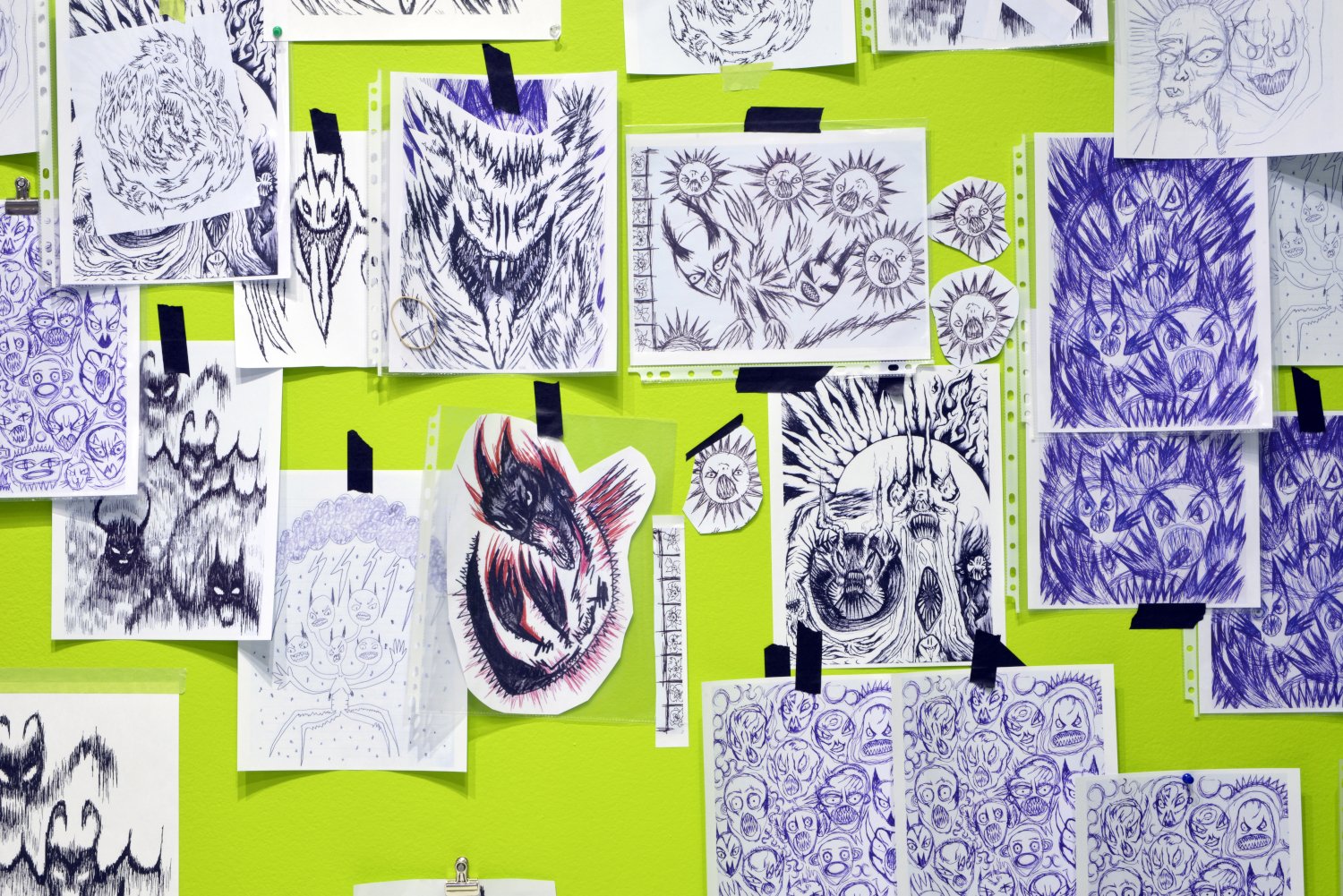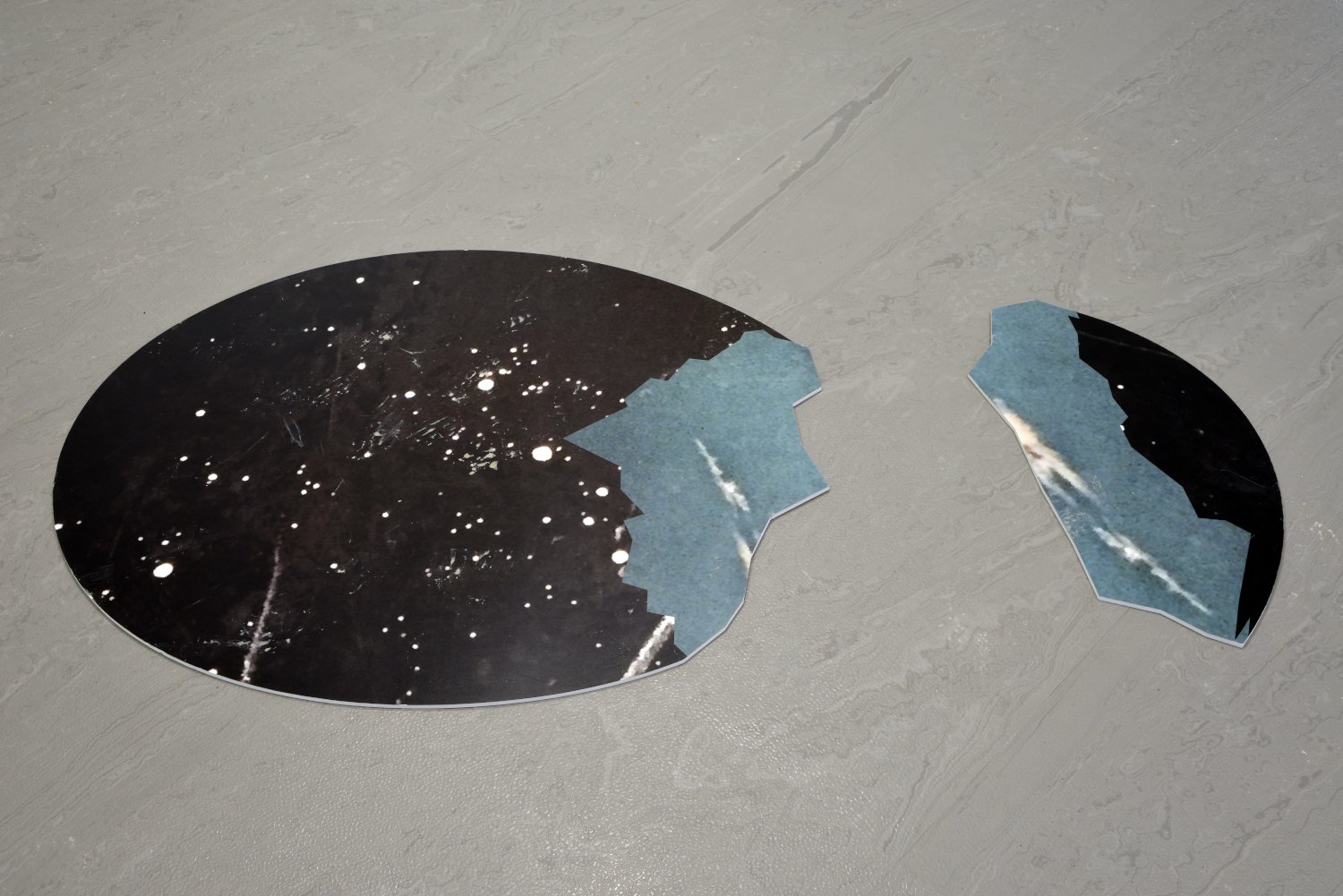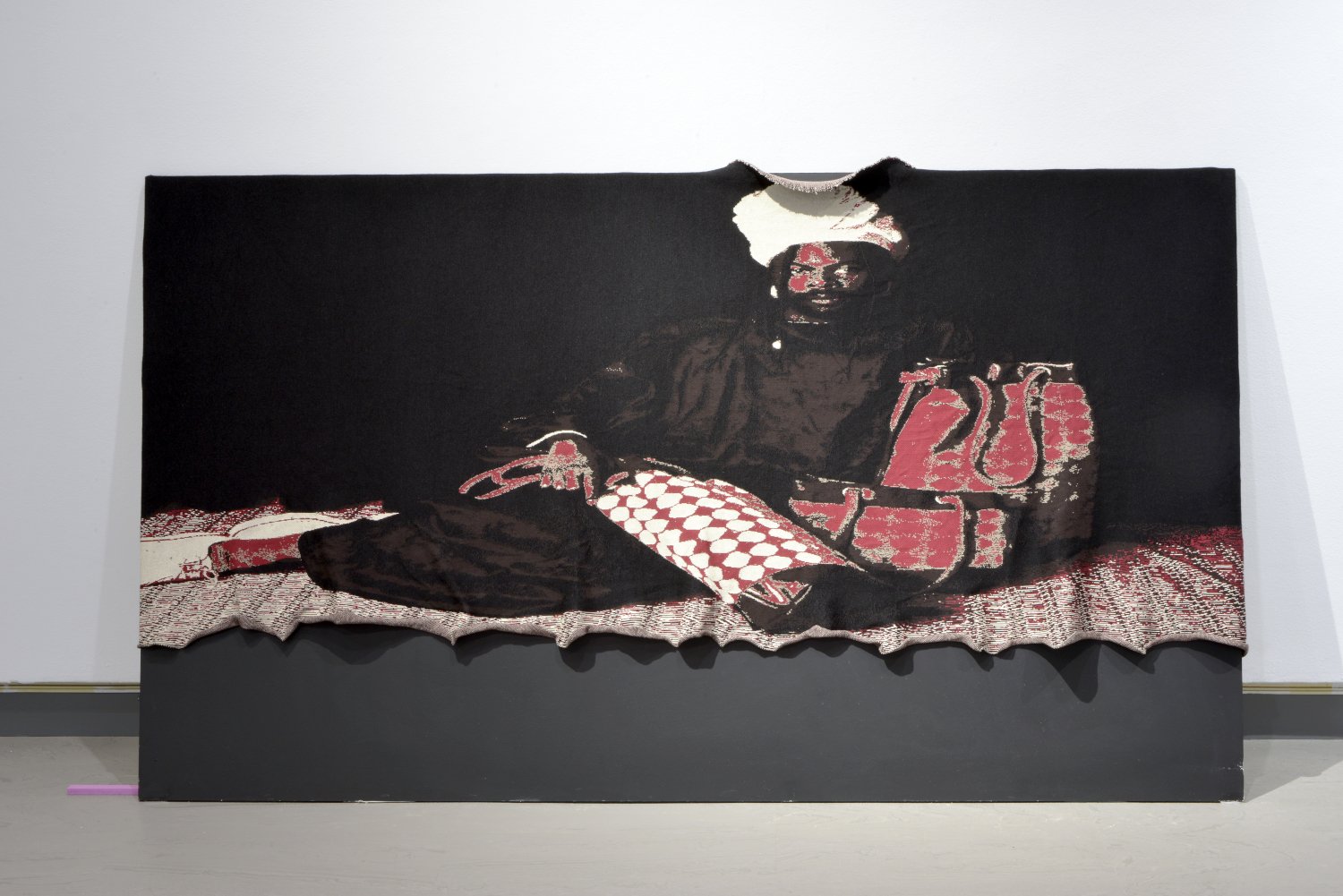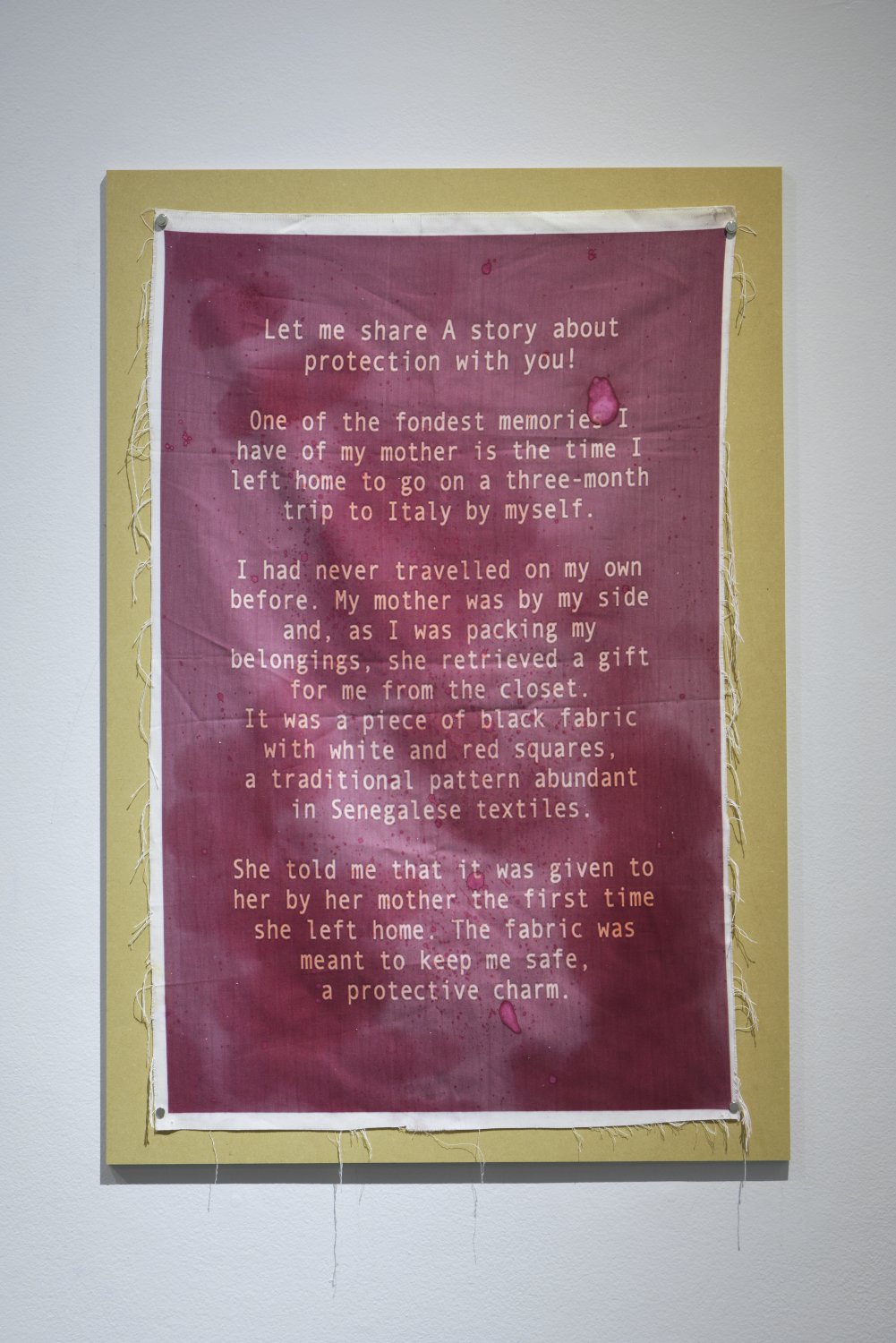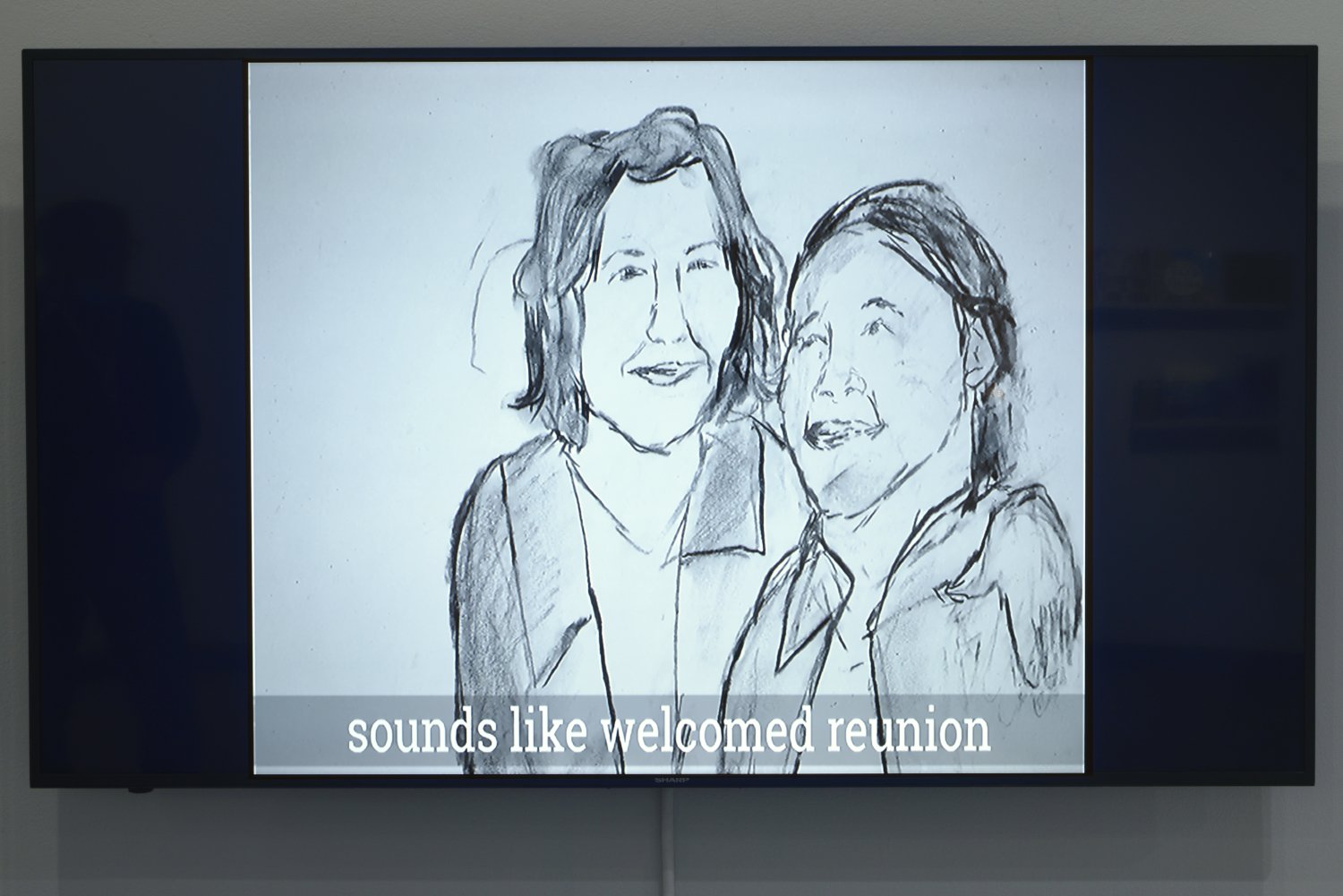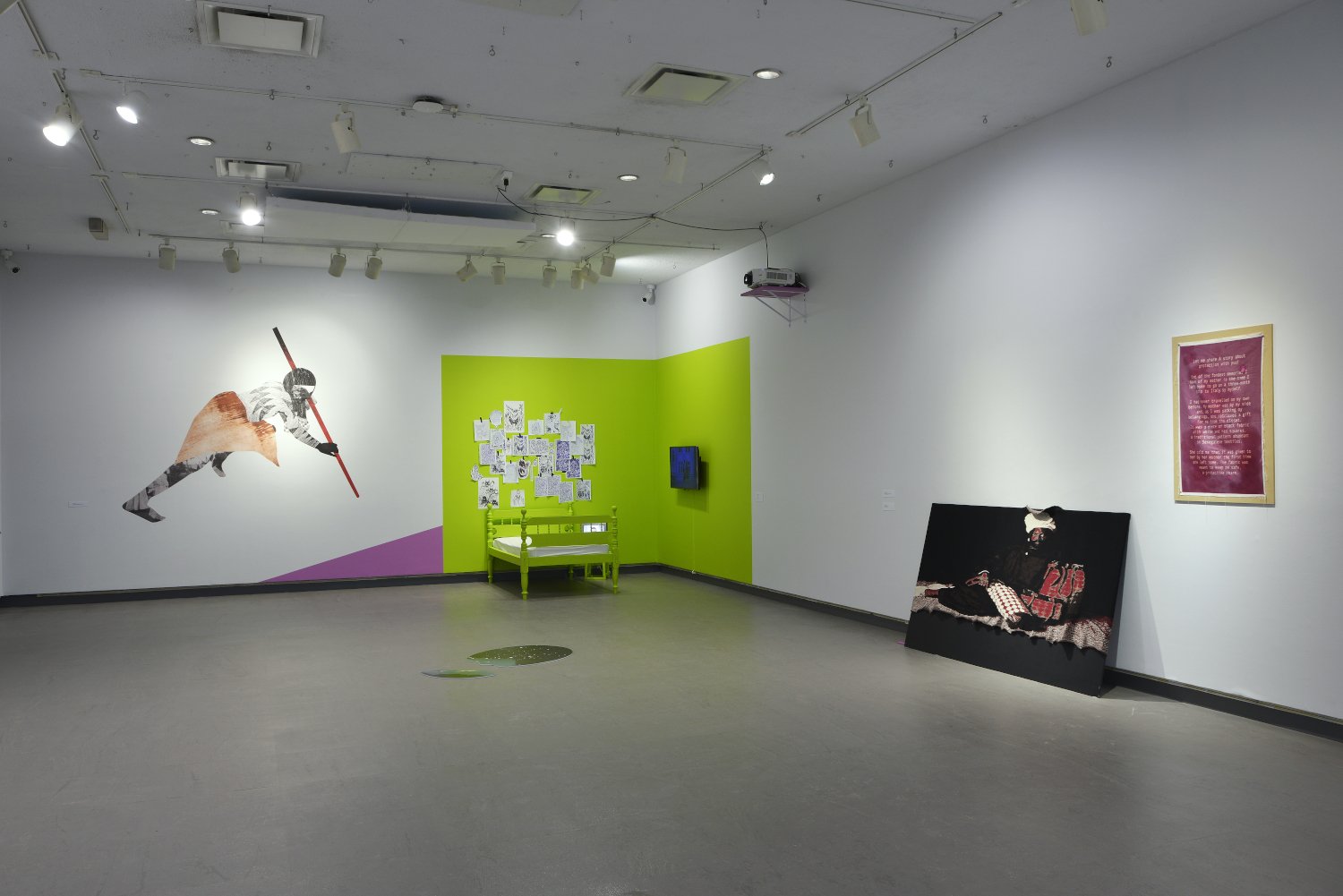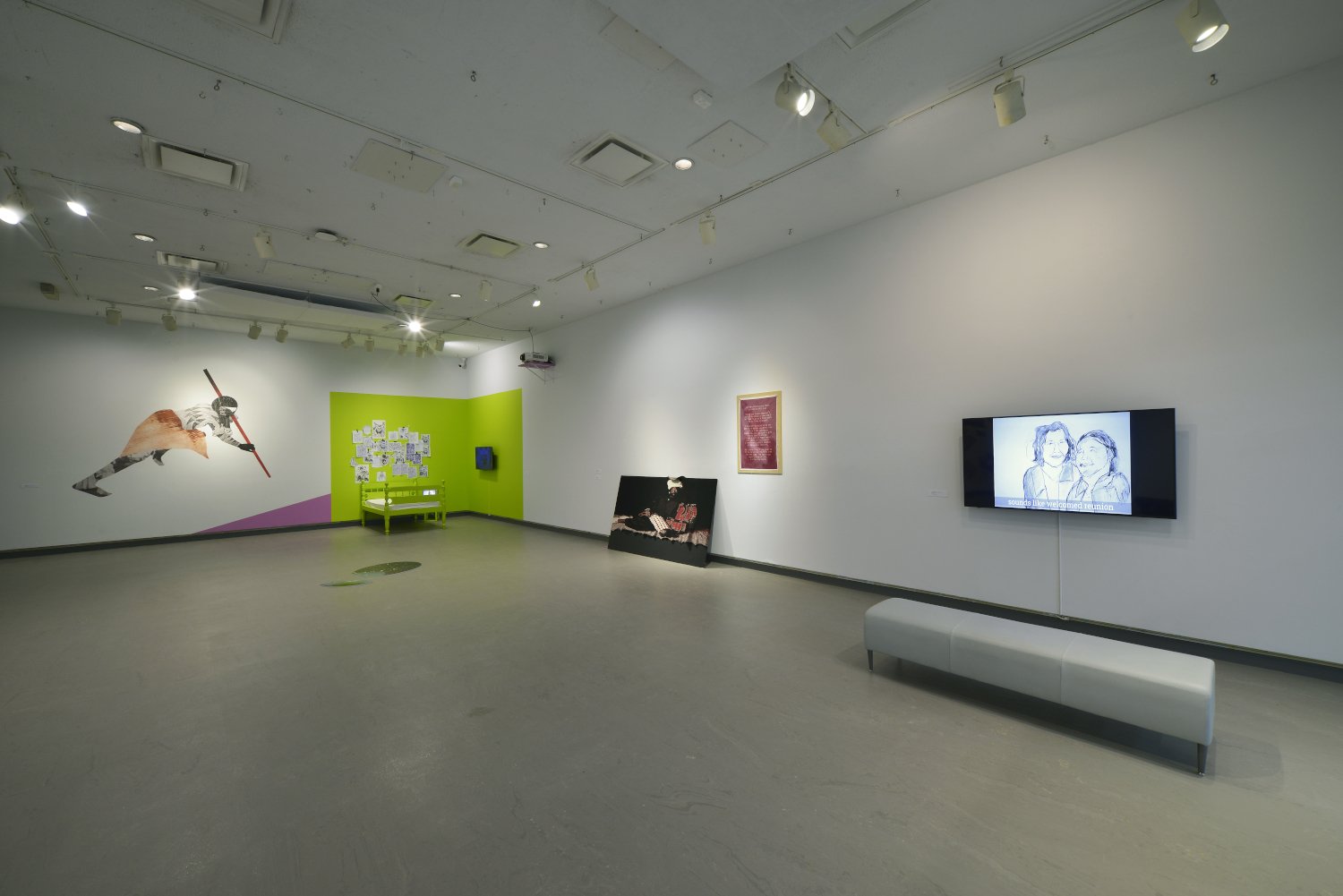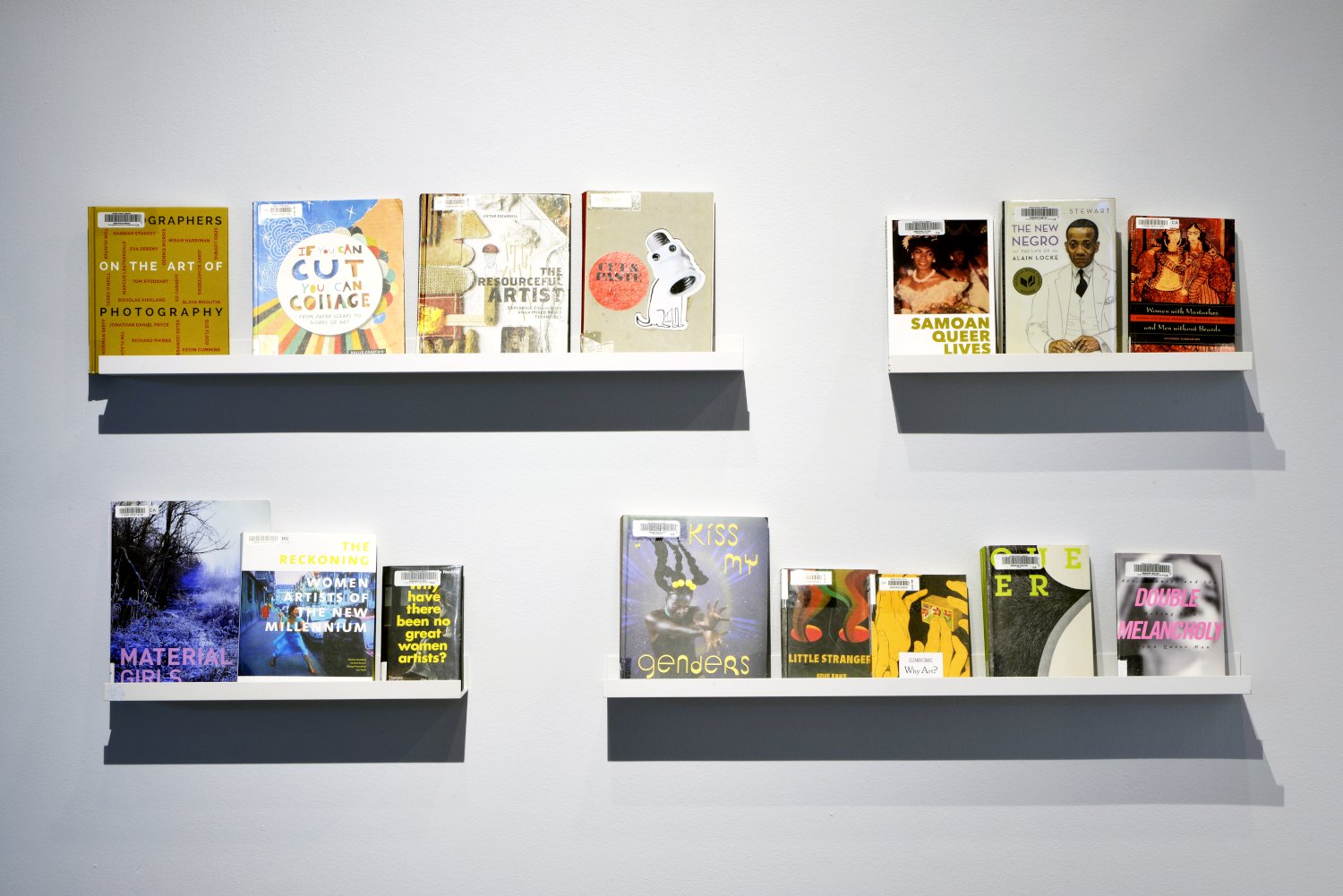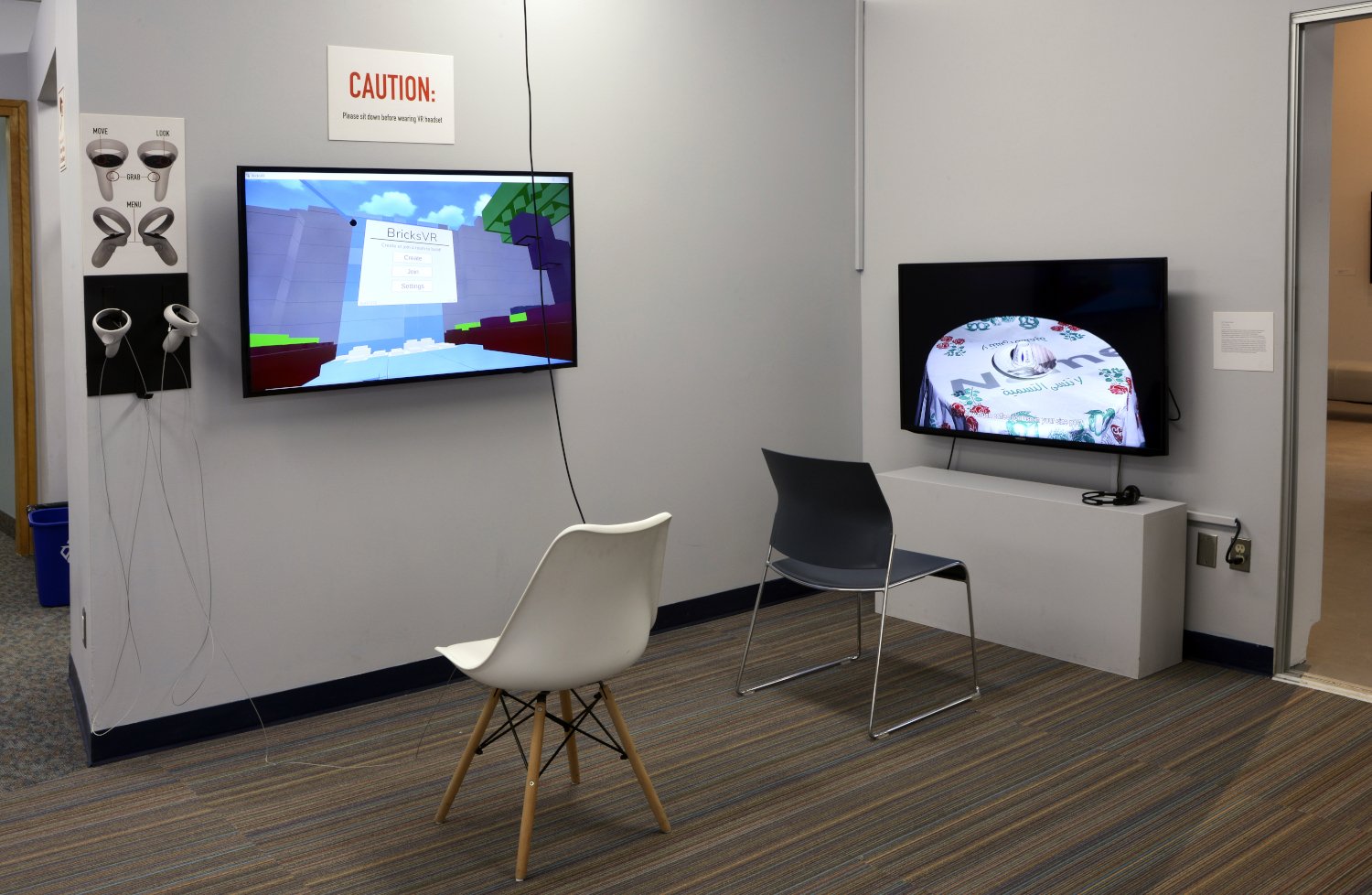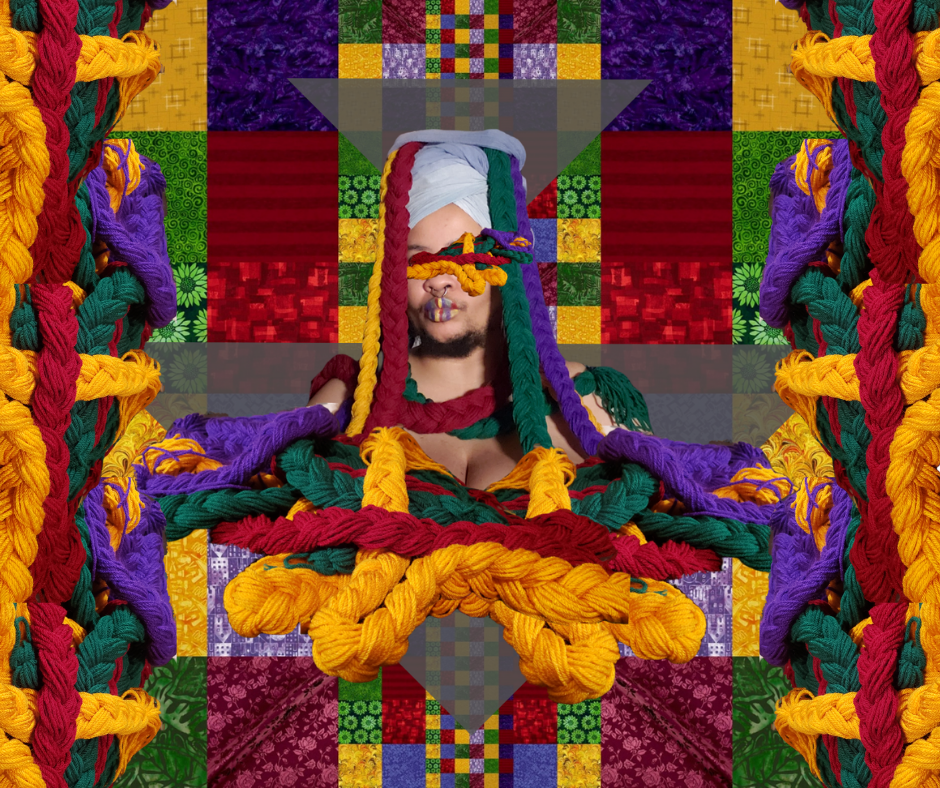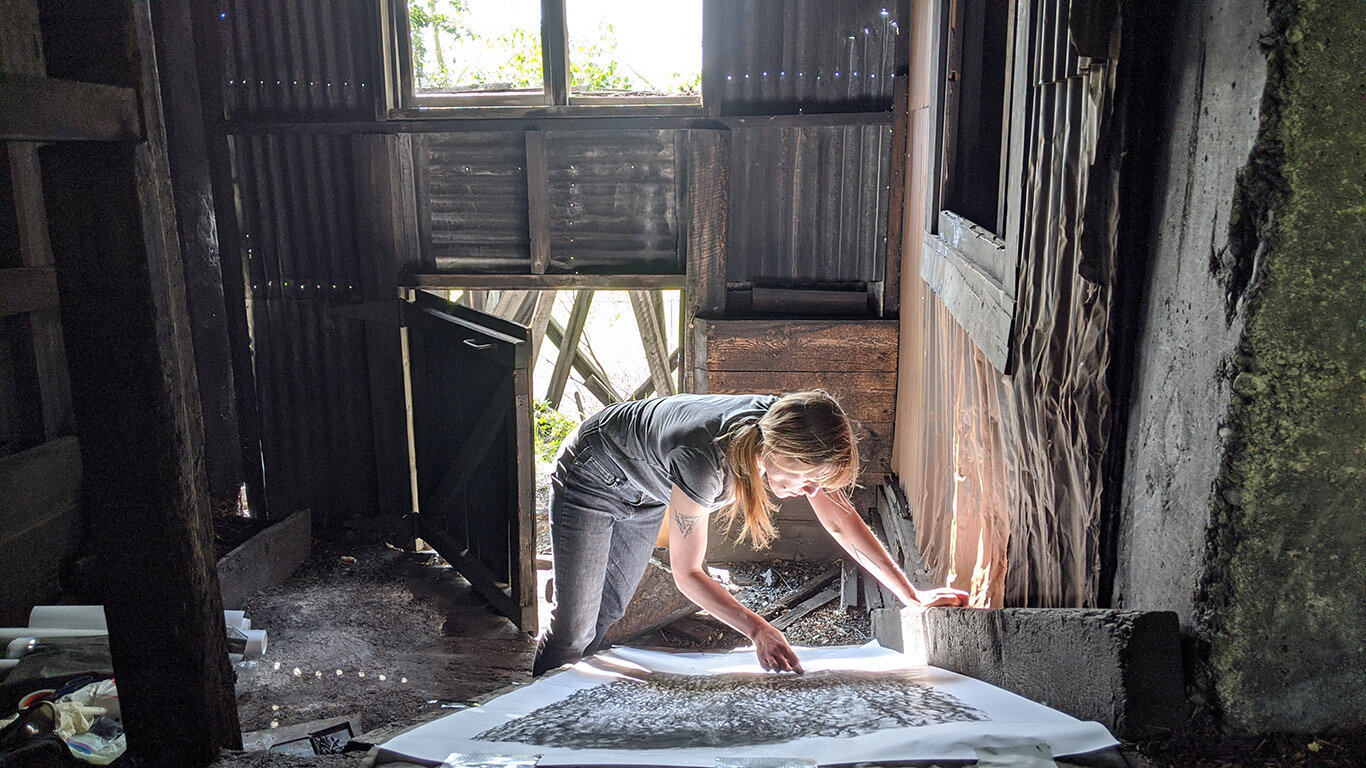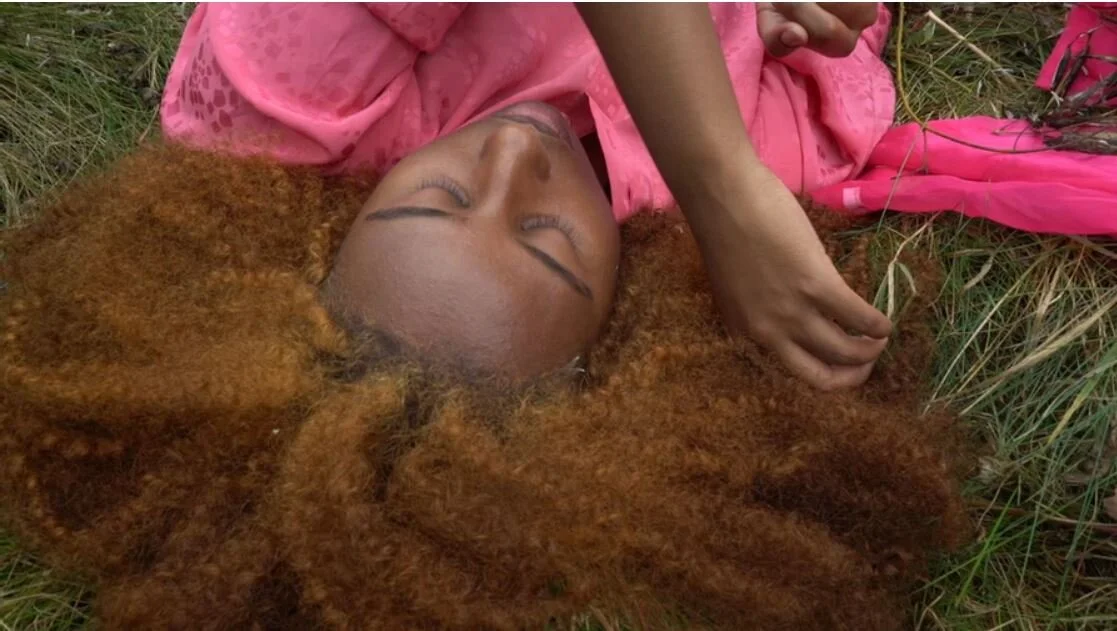
Sonny Assu: Confluence
Ashes (The Spectacular Boom series), 2023.
Sonny Assu is a member of the Ligwiłda’xw people of the Kwakwaka’wakw Nations on Vancouver Island. This exhibition, called Confluence, brings together several bodies of work that respond to the ongoing impacts of colonialism on Indigenous communities, such as the loss of land, language, cultural belongings, traditional knowledge, and self-determination.
Working in many mediums, Assu sparks conversation about Indigenous life. He often uses humour and pop culture to connect with audiences, while also drawing on the visual traditions and histories of his ancestors. Through this blending of past and present, his work reclaims stories of power and identity, celebrating Indigenous strength, resilience, and perspectives.
Sonny Assu, an Indigenous artist of the Ligwiłda’xw of the Kwakwaka’wakw Nations, was raised in North Delta, BC, and now lives on his ancestral land on Vancouver Island. He studied at Emily Carr University and earned an MFA from Concordia. His many honours include the Emily Carr Distinguished Alumnus Award, BC Creative Achievement Award in First Nations Art (2011), Hnatyshyn Foundation’s REVEAL Indigenous Art Award (2017), and the Eiteljorg Contemporary Arts Fellowship (2021). Assu has exhibited widely in Canada and internationally, with works held in public and private collections across Canada, the UK, USA, and Australia.
Essay ↑
Sonny Assu – Confluence, A Survey of Memories
Essay by Daina Warren
This writing piece draws on my recollections of conversations over the years with Sonny about his work. Sonny and I have been art colleagues since our time as art students. We first met at Emily Carr University of Art and Design (ECU) in the late 1990s, when it was still known as the Emily Carr Institute of Art and Design, located on Granville Island. Even though I was majoring in visual arts, with a focus on sculpture and painting, I spent many hours chatting with him and Peter Morin in the printmaking studio. So much so that students, and possibly some teachers, thought I was a printmaker when I should have been in my own classes.
I was finishing up my last year when Sonny started his degree and joined our ragtag crew of Indigenous students under Brenda Crabtree’s mentorship. Although it has been twenty-six years to date, I recall that his work had a profound impact on me then, as it still does today. His Challenging Traditions #5 sold for a record amount at ECU’s 2002 graduation auction; the artwork was a great use of “injun-uity,” to quote Xwalacktun (Rick Harry), another mentor that we all worked with in the summer of 2000, just after Peter and I graduated from ECU. Sonny’s work has an effortless way of engaging his audience through identifiable, popular culture iconography. This solo exhibition at the Dunlop Art Gallery is an excellent survey of his work. For me, the show also acts as a great reminder of the times we reconnected over his lengthy artistic practice.
Sonny is a contemporary Liǥwildaʼxw[1] artist living within his home territory of ƛam̓atax̌ʷ (Campbell River, BC). His multidisciplinary work spans painting, sculpture, installation, and digital media, often exploring themes of colonialism, consumerism, and Indigenous identity. Sonny cleverly integrates traditional Kwakwaka'wakw (or Northwest Coast) form line design with pop culture elements, activism, and personal narratives, creating thought-provoking pieces that challenge and engage viewers. His art reflects both his cultural heritage and contemporary perspectives, interweaving historical and current political themes that often surprise and are frequently employed with humorous undertones.
I remember the series known as Longing from his early career, when Sonny had moved into a studio where three main commuting arteries of Vancouver meet up at Kingsway, Main, and Broadway. Funny enough, this was also the time when I was in a pinch for a home, and he ended up being my landlord. At that time, he invited me up to the studio to check out what he was working on. He had several “off-cuts” of cedar wood pieces that he had encountered while visiting his family in Campbell River and which could be considered found objects. In describing this encounter, Heather Igloliorte wrote, “In 2007 Assu was home in the traditional territory of the We Wai Kai Nation…Near his reserve, at the site of a high-end log cabin developer, he and his stepfather were gathering cedar bark and other materials for his mom’s basket making.” In the same essay, Sonny recounts the irony of how this developer was leasing land from his Nation yet was also a corporation that exploited cedar trees—a natural resource considered sacred and which is used in traditional medicine by Indigenous nations. I appreciated that the series of what had been discarded wood became known as Longing, as the cedar works appear despondent, existing as objects that resemble traditional West Coast masks yet are embodied entities in their own right. It’s as if they almost became a ceremonial object but were ultimately considered worthless by the logging industry. Sonny, however, understood them and gave them a place in the world.
Museum Selfie is another memory and a reminder of my brief stint working at the National Gallery of Canada in 2011, where I had the opportunity to acquire Sonny’s piece, Status Update for the NGC’s collection. He had just started a series of painted pentagonal works and was particularly excited by this new direction. He was experimenting with this stretcher shape, a shape that is representative of the entrance of West Coast longhouses. During that studio visit, I mentioned that the forms he was overlaying on his painting looked like graffiti. This, in turn, inspired him to name the work Ovoid As Language (2009) and compelled him to think of the Northwest Coast formline as a form of visual communication. When I was looking to acquire a work from Sonny for the National gallery, he decided to upend it so that one is viewing the longhouse upside down. These upside down long house stretchers also came to represent the shape of Chilkat ceremonial robes, with Status Update being the 2nd of that series. The inspiration for Museum Selfie, as mentioned in conversation with Sonny, was a visit to Toronto and seeing Ai Weiwei’s exhibition at the AGO. This was in the early days of social media, and Sonny was fascinated and annoyed with the gallery goers using Ai Weiwei’s artworks as a means of self-promotion by documenting themselves in front of the pieces with their cell phones rather than standing back and experiencing them, demonstrating the popularity of selfies on digital and social media platforms.
What I have found consistent about Sonny’s work is the running themes that incorporate his love for Star Trek, animation, and comics, and how he intertwines these themes with West Coast form lines and ovoids.
I recall the first time I encountered his brilliant 2-D experiments of incorporating West Coast form lines, resembling spaceships, onto copies of the renowned painter Emily Carr’s work, creating a commentary about her perspective and presentation of Indigenous communities as dying cultures. He entertainingly showed that Native communities are vibrant and very much alive. Sonny explained to me that before the series with Carr’s work went digital, the initial idea was to do the interventions as painted formline elements on the discarded landscape paintings he collected from thrift stores. Having embraced the works as digital interventions, Sonny was left with a collection of landscape paintings. Here, he flipped the intervention, and the series became Territorial Acknowledgement. He said that he loved the idea of intervening the romanticized colonial landscapes. Whereas Interventions on the Imaginary “tagged” the colonial landscape with an Indigenous presence, Sonny framed the landscapes through an Indigenous lens, a window of Northwest Coast forms reclaiming the colonial sphere. As with much of his work, materiality became important through the use of red ochre paint, drawing back to its use in the Kwakwaka'wakw ceremony. This was also around the time that I had brought him into a group show that travelled to Aotearoa (New Zealand), and his work had a profound effect on an international audience due to its visual commentary on political experiences similar to those of the Indigenous Māori people.
The last piece is an animation that I have not yet had the chance to work with, but it makes complete sense that Sonny would transition from his past 2-D works into animation-based work. He was inspired by an article about the declining Salmon populations in various Yukon and BC rivers. The article featured an image of a fish ladder viewing window, showing a lone spawning salmon. A fish ladder is a water-filled staircase-like structure designed to help migrating salmon and other fish bypass natural or artificial barriers, such as dams. It provides a safe path to their spawning grounds by mimicking natural water currents and offering rest in stepped pools. Sonny’s animation, which was brought to life for his solo exhibit at the Comox Valley Art Gallery, was titled The Last of Us, a nod to the popular video game/TV series, again, embracing his connection to popular culture. The animation features a lone salmon, with it red and green spawning colours, floating in and out of view, fighting the currents as the light source changes throughout a 24-hour period, reminding us of the effects of overfishing.
The works of Sonny Assu have evolved and shifted over the years, transitioning from two-dimensional beginnings to sculpture and animation, and then back again. I liken this to our relationship starting as art school buddies, evolving into landlord and tenant. Now, as curator and artist, we have finally settled into a close collegiality, where we appreciate the memories we have shared. This exhibition is a beautiful reminder of the deep journeys we have both been through. Way to go, Sonny!
[1] Sonny’s Liǥwildaʼxw roots are Wei Wai Kum and Walitsma through his grandmother and We Wai Kai through his grandfather.
Artist ↑
Images ↑
Photos by Don Hall























Media ↑

